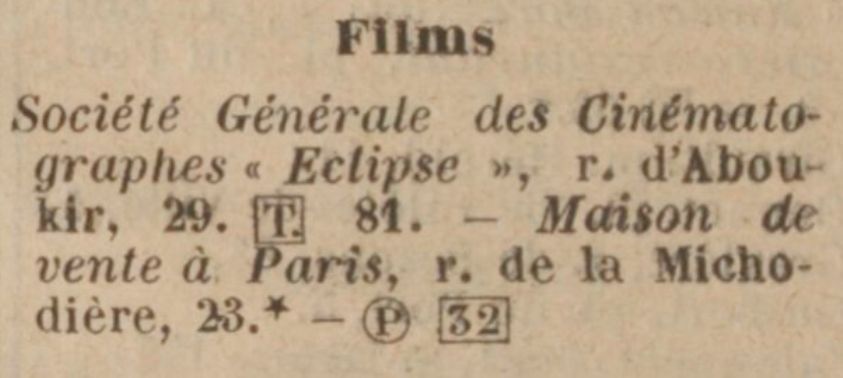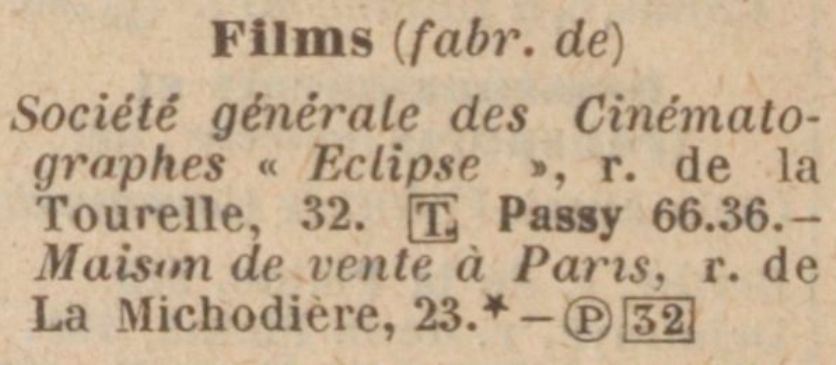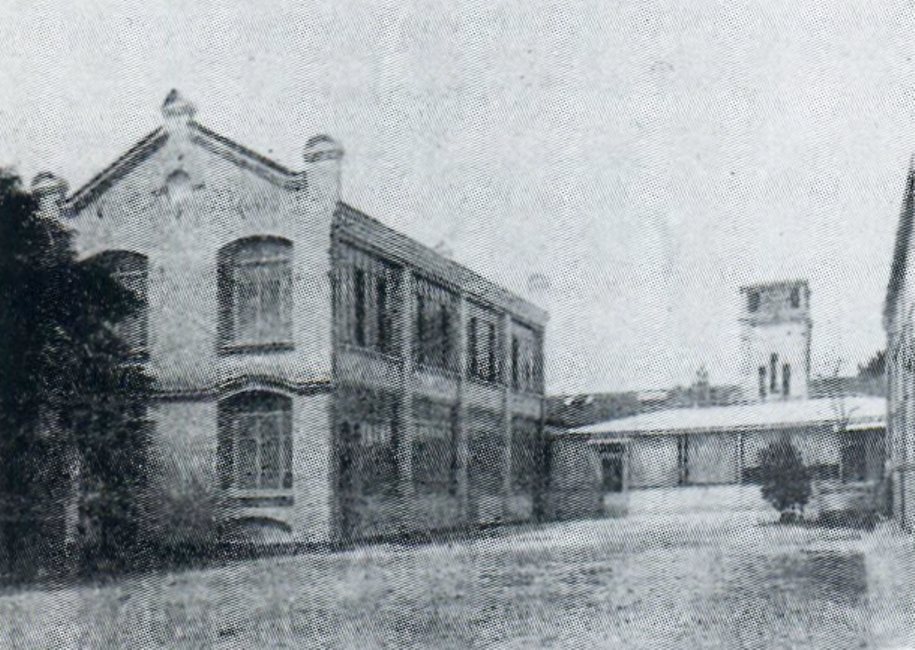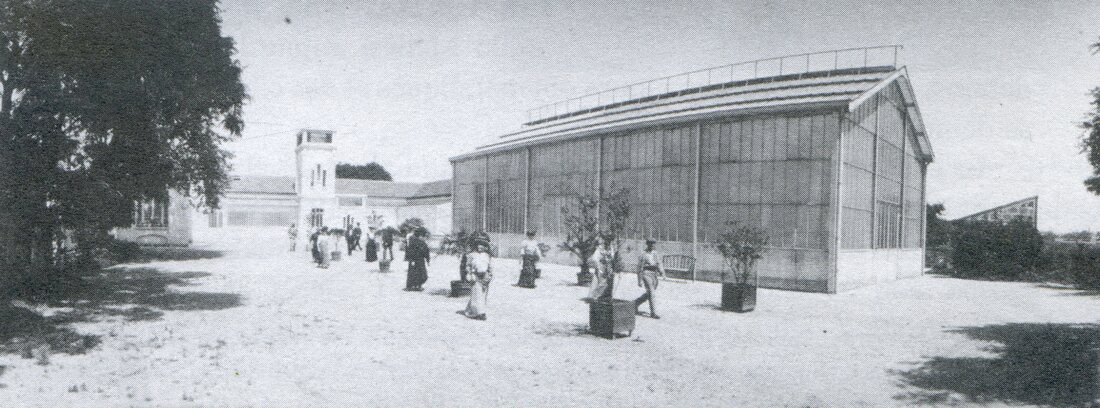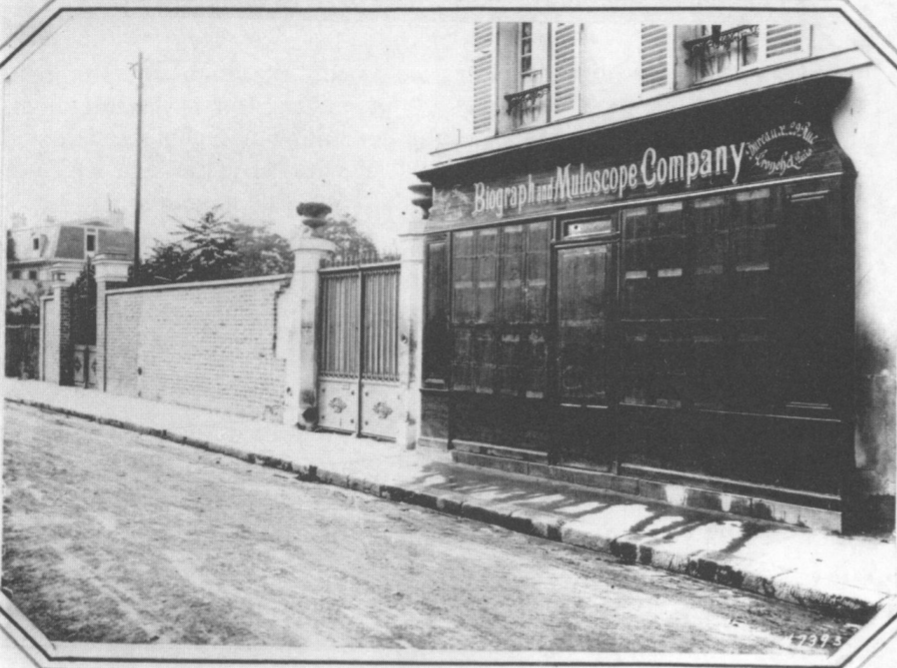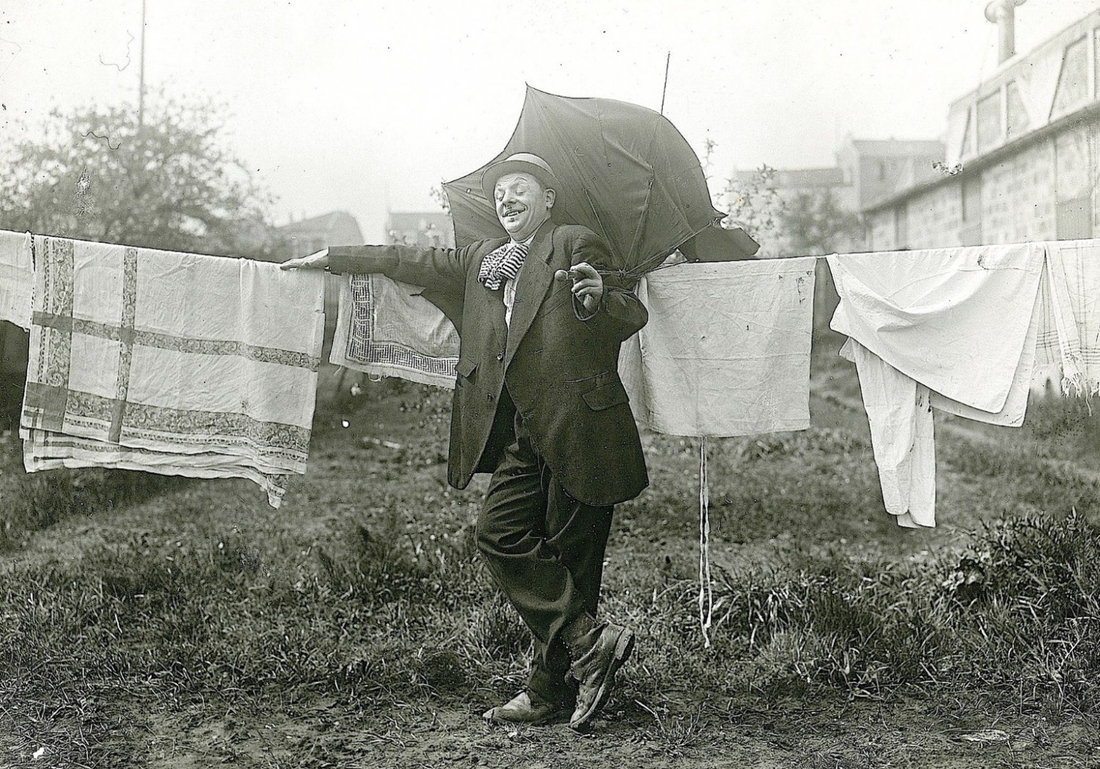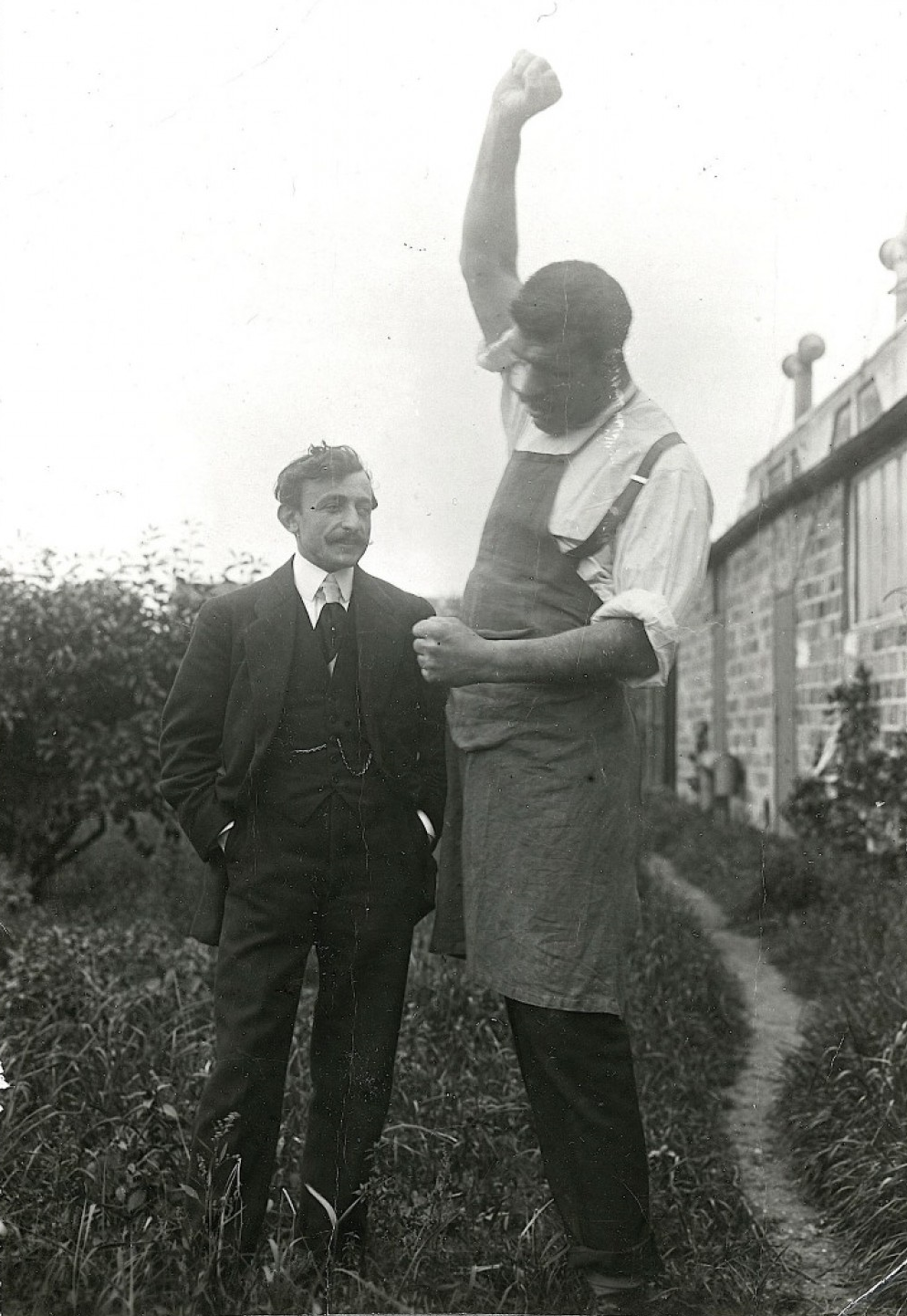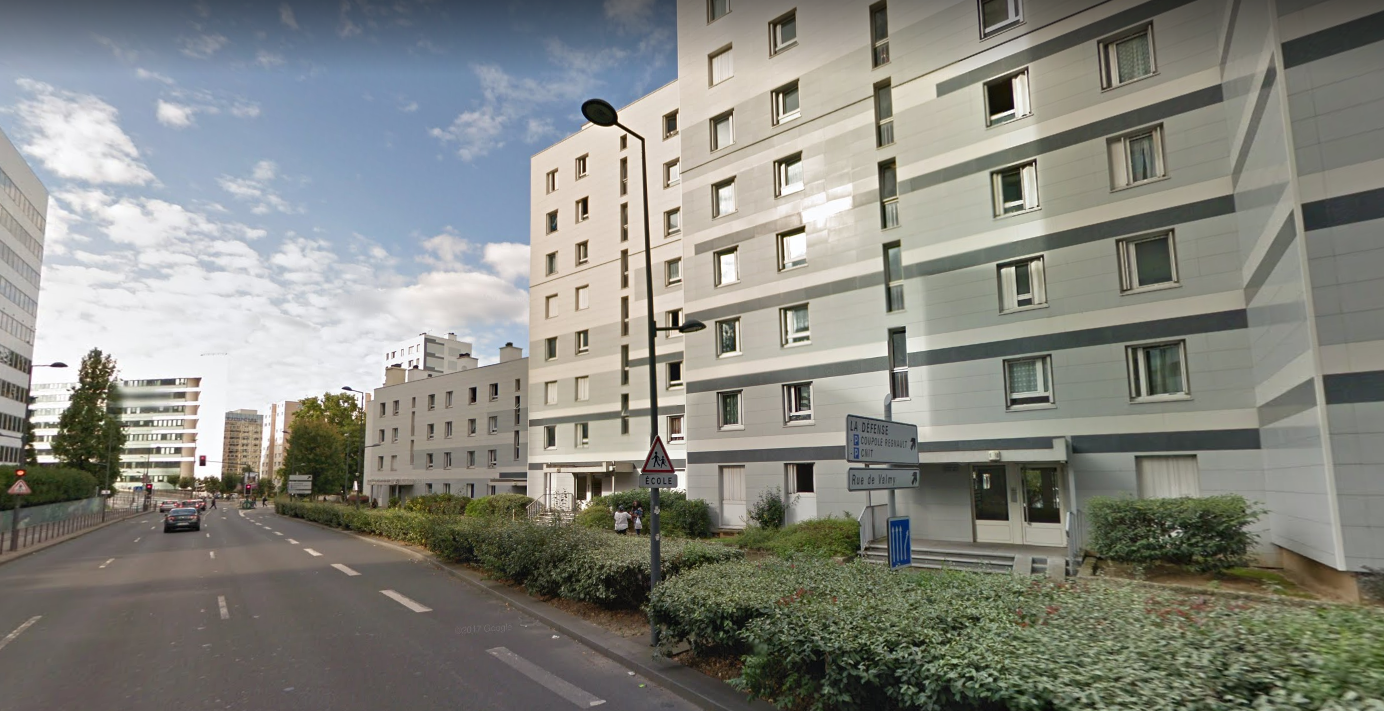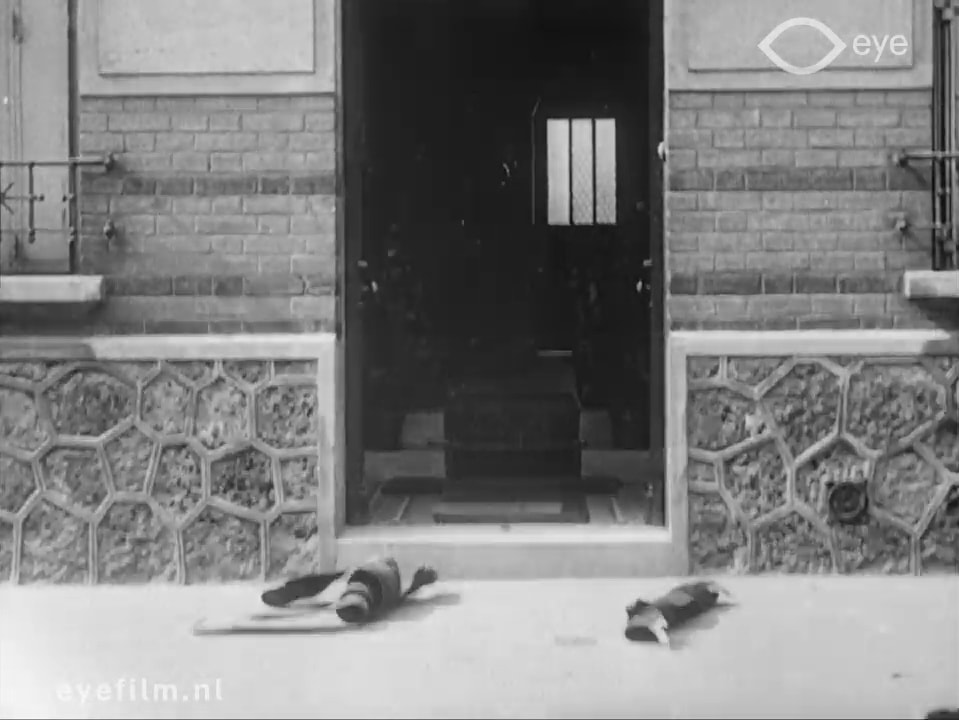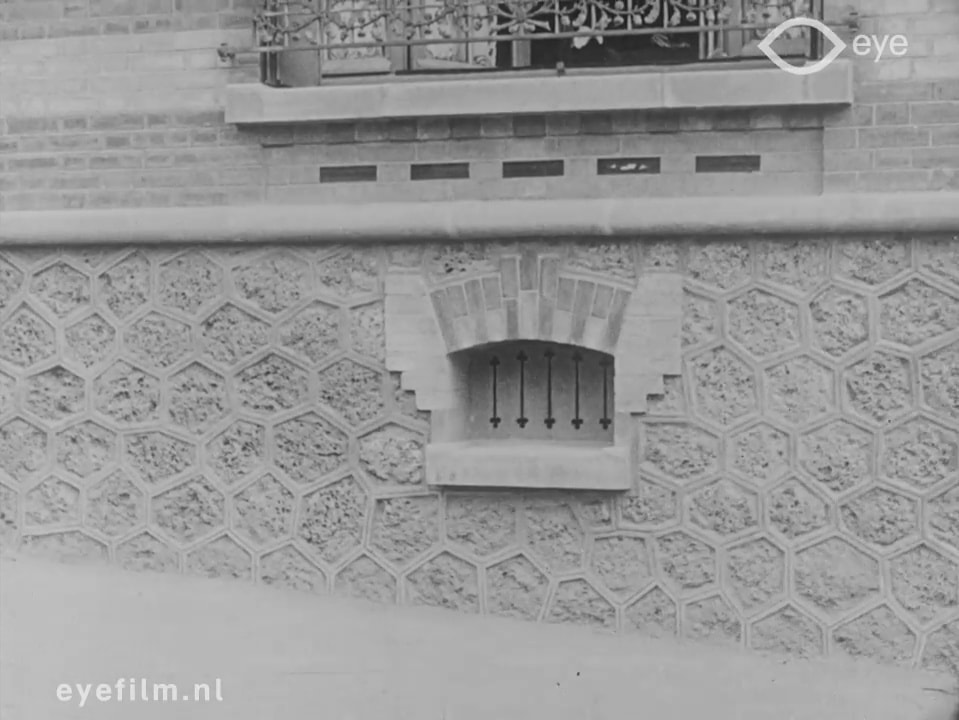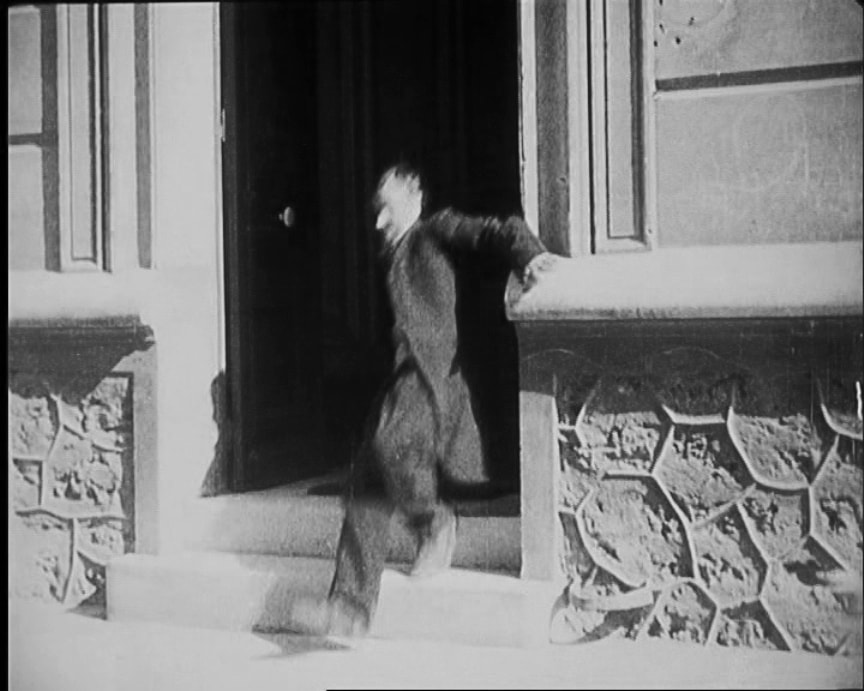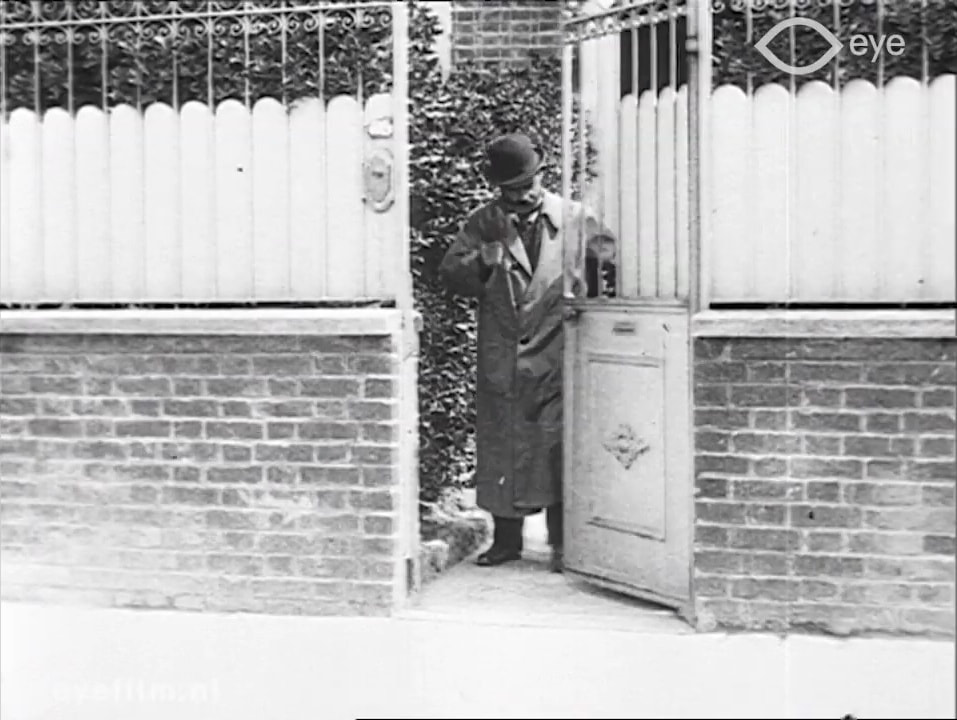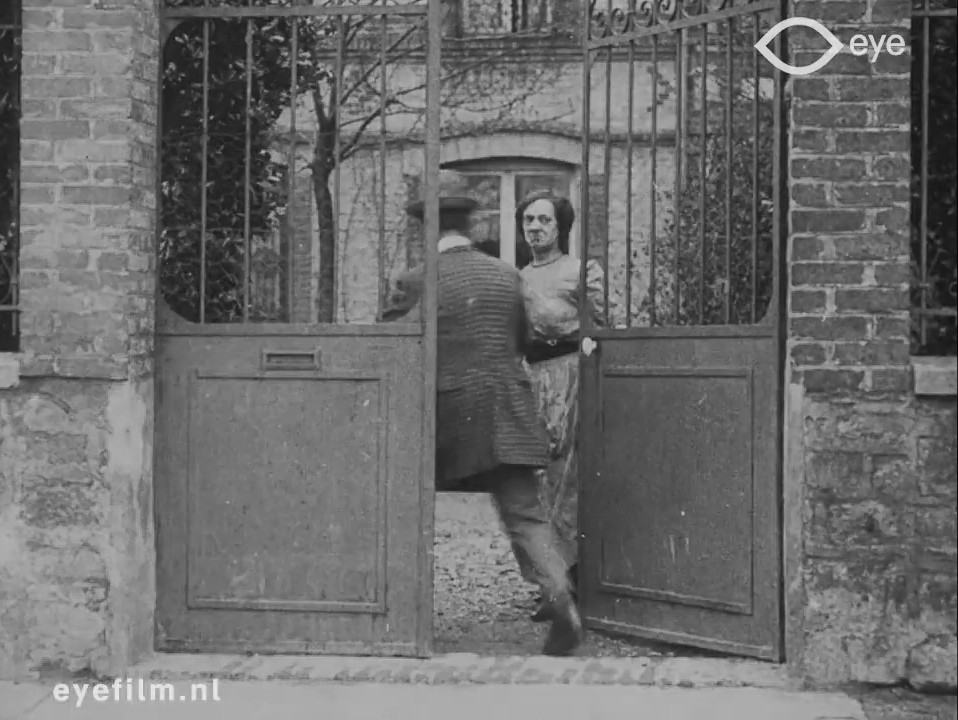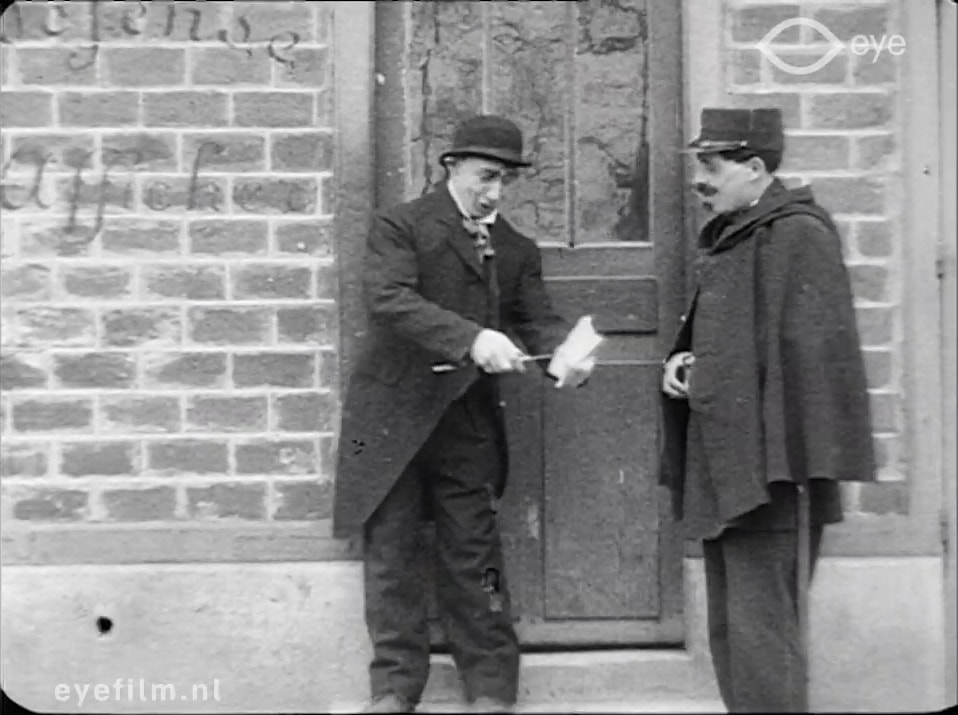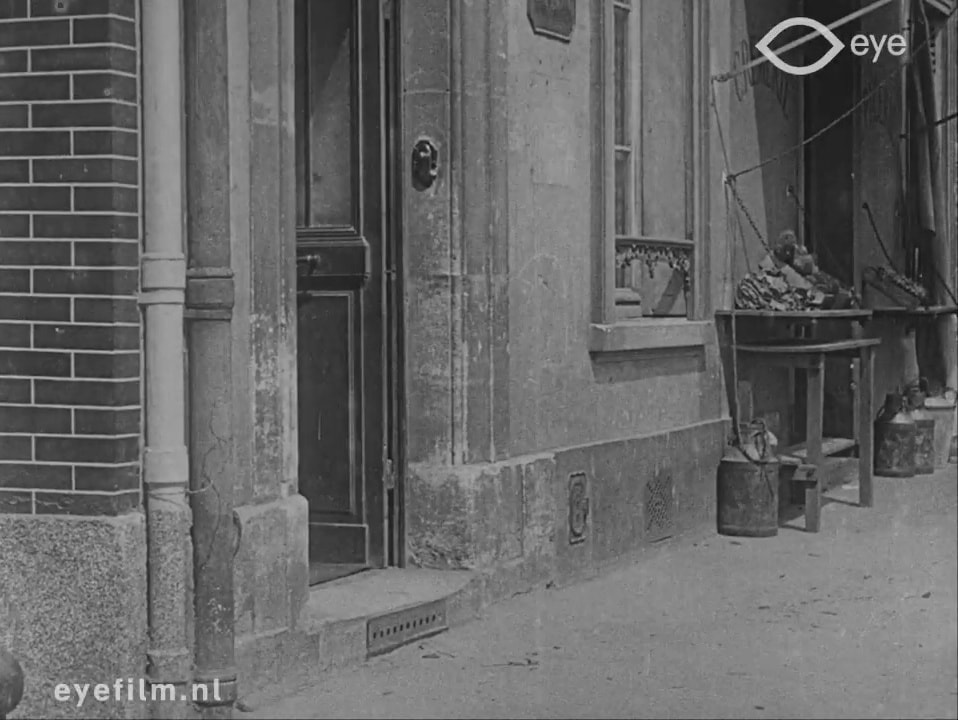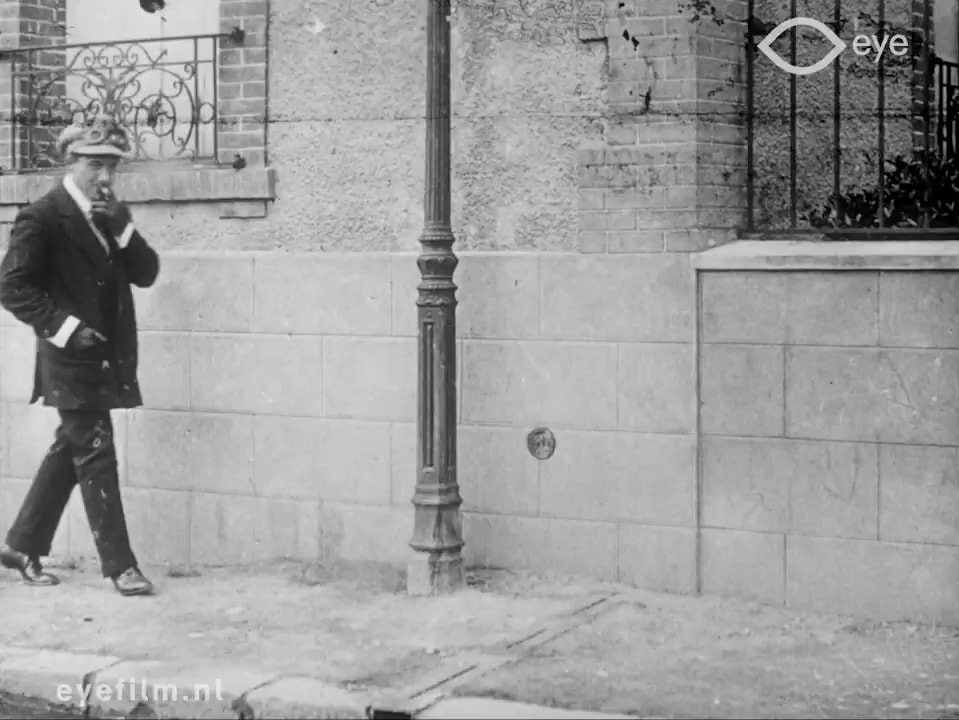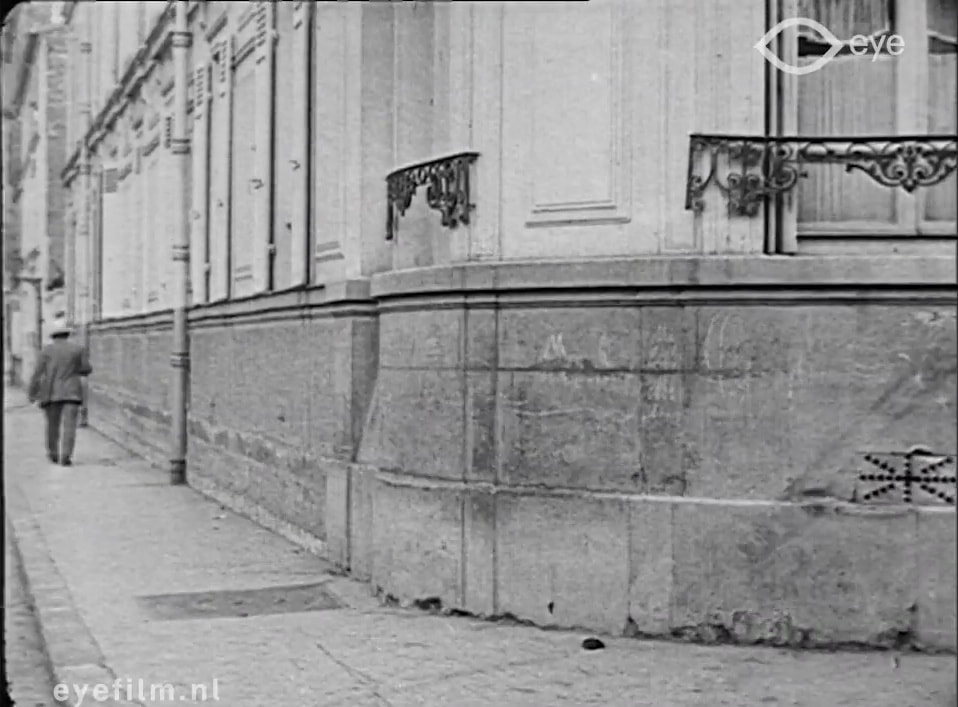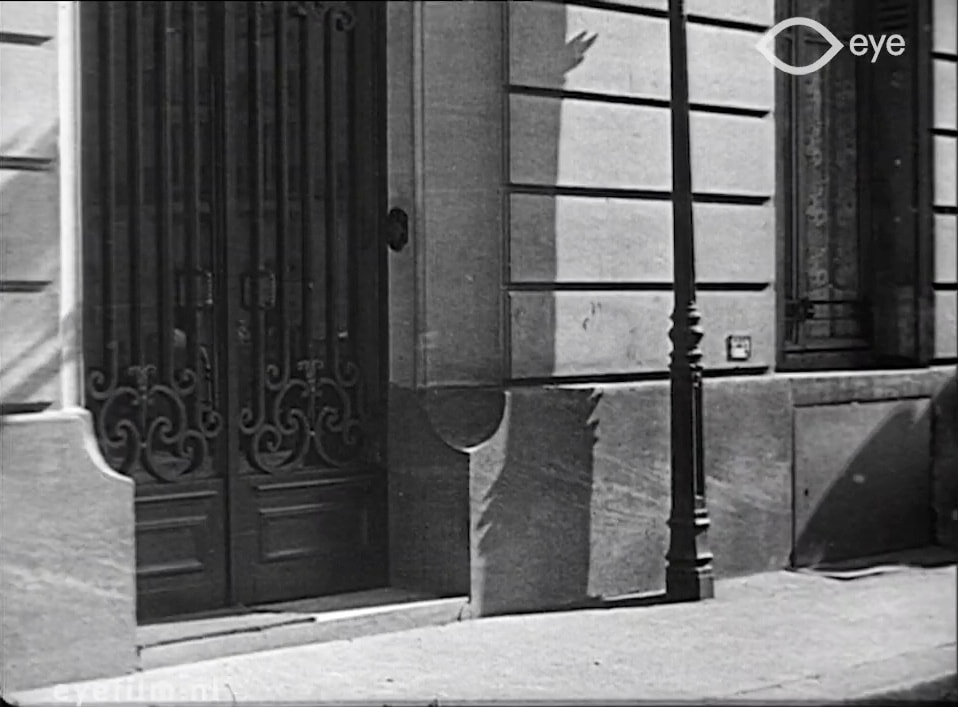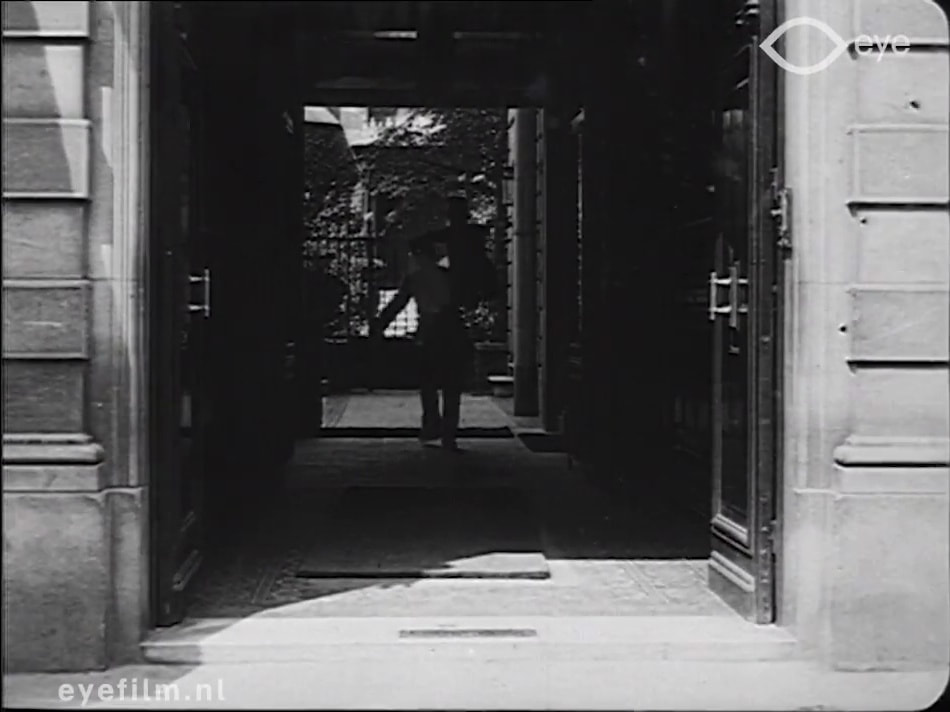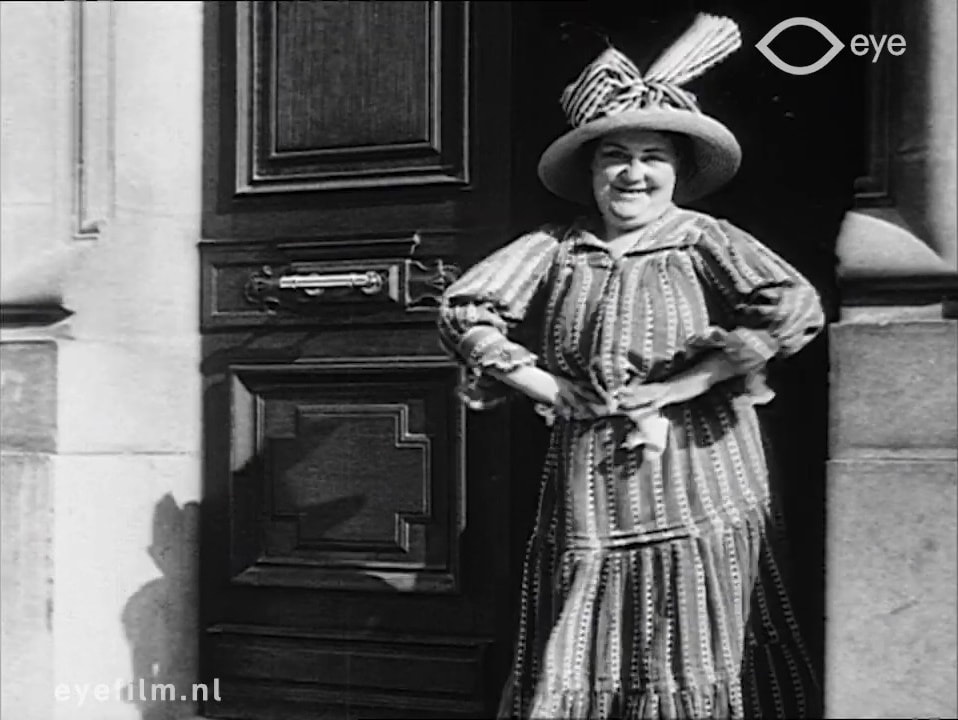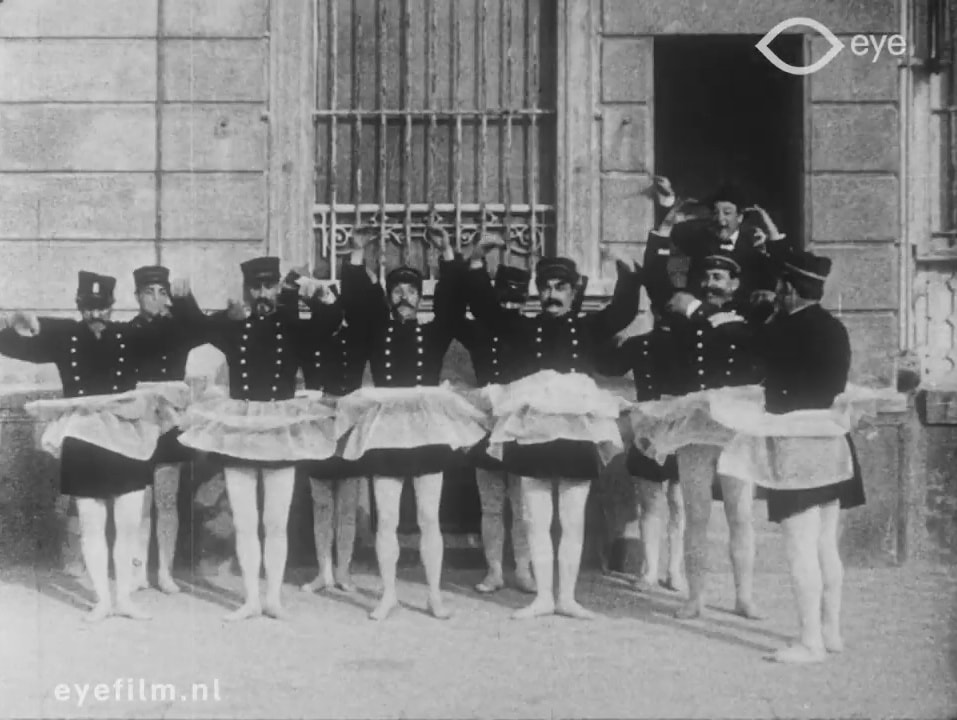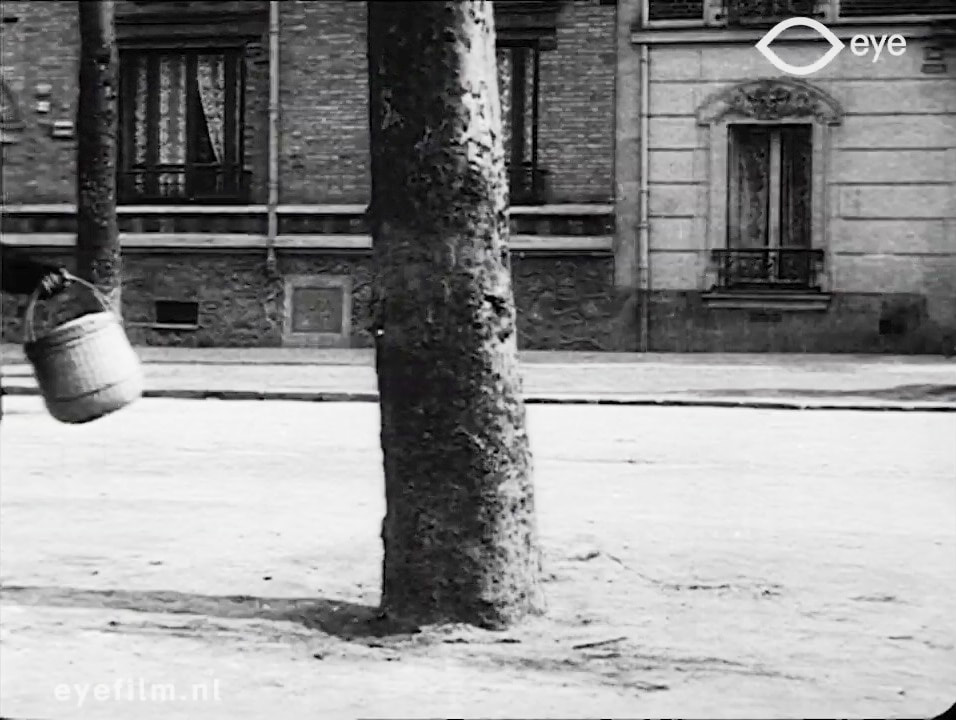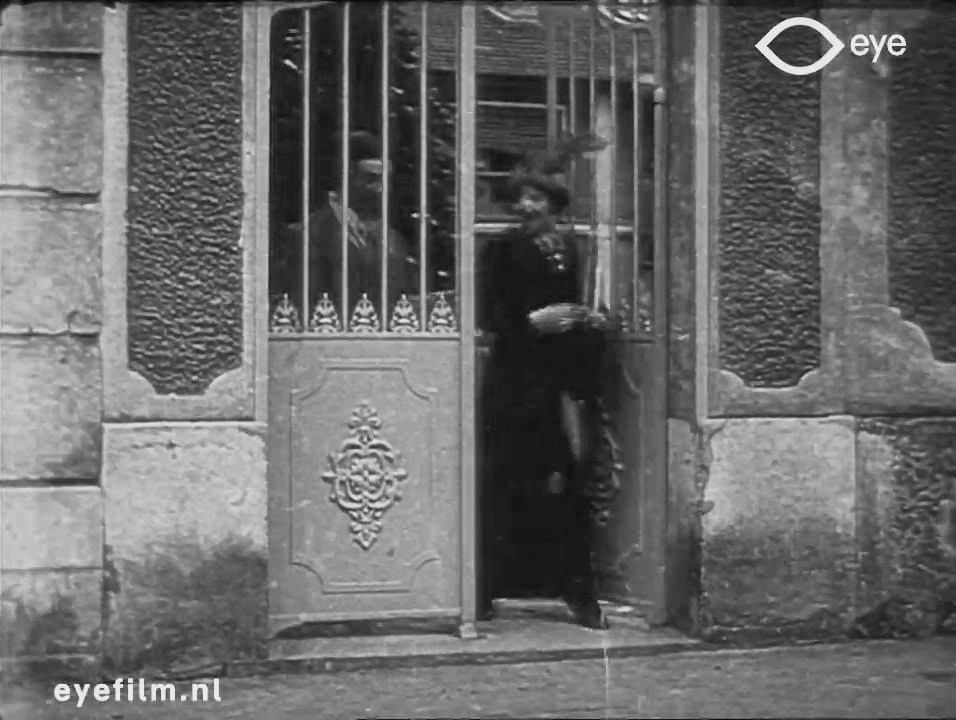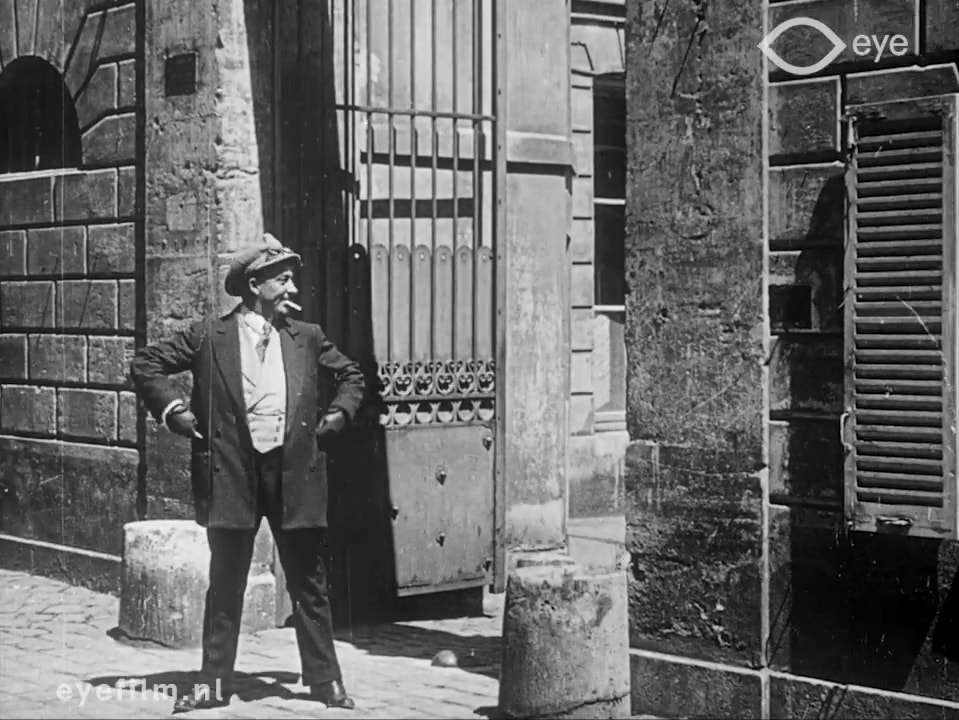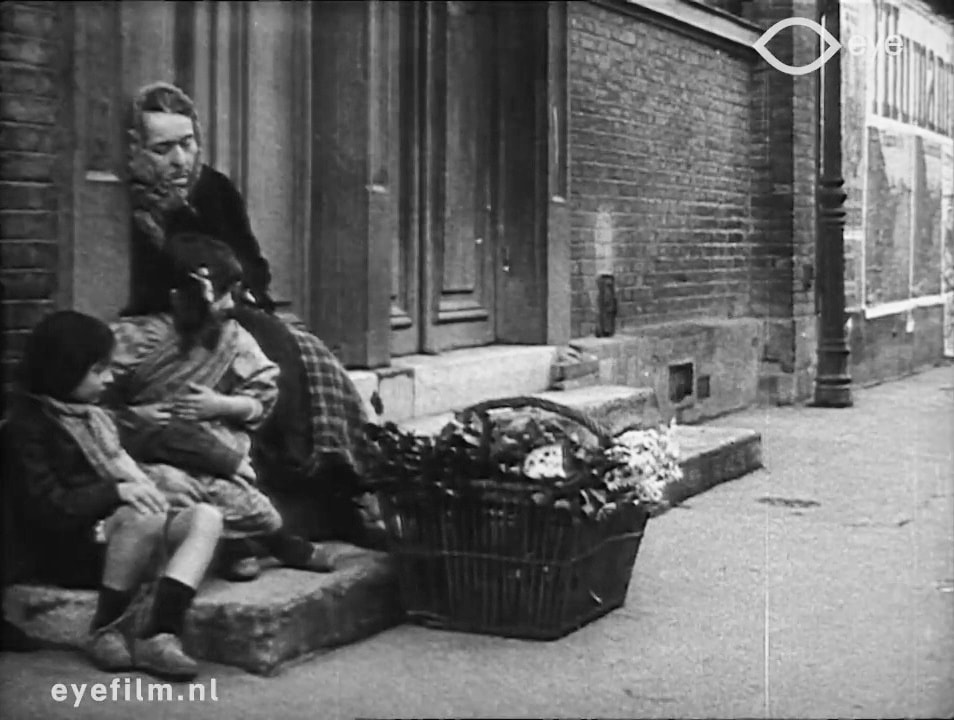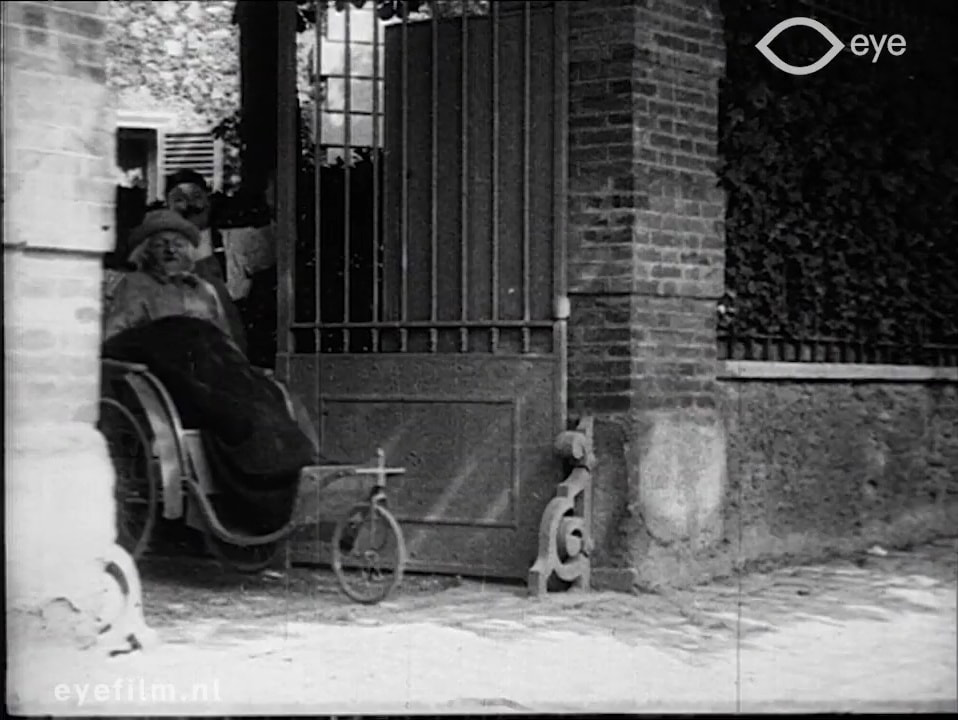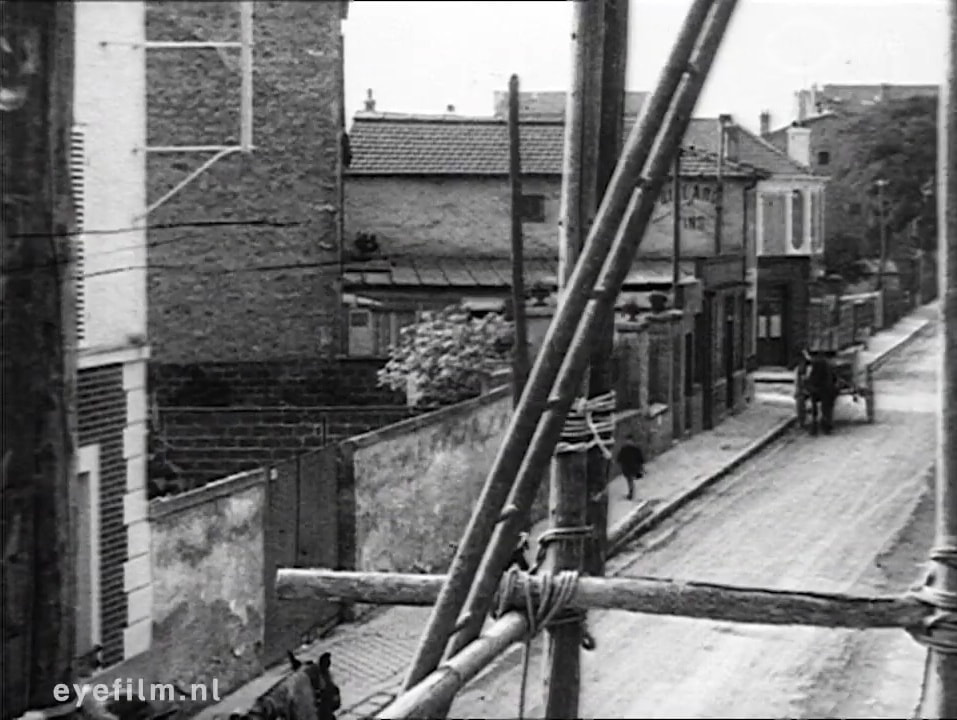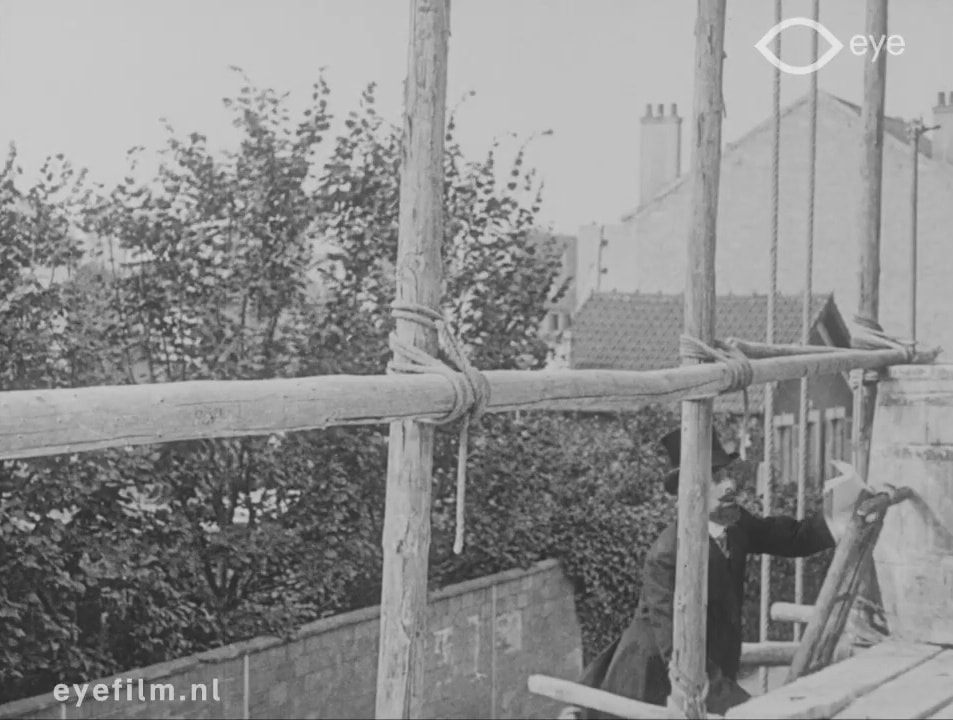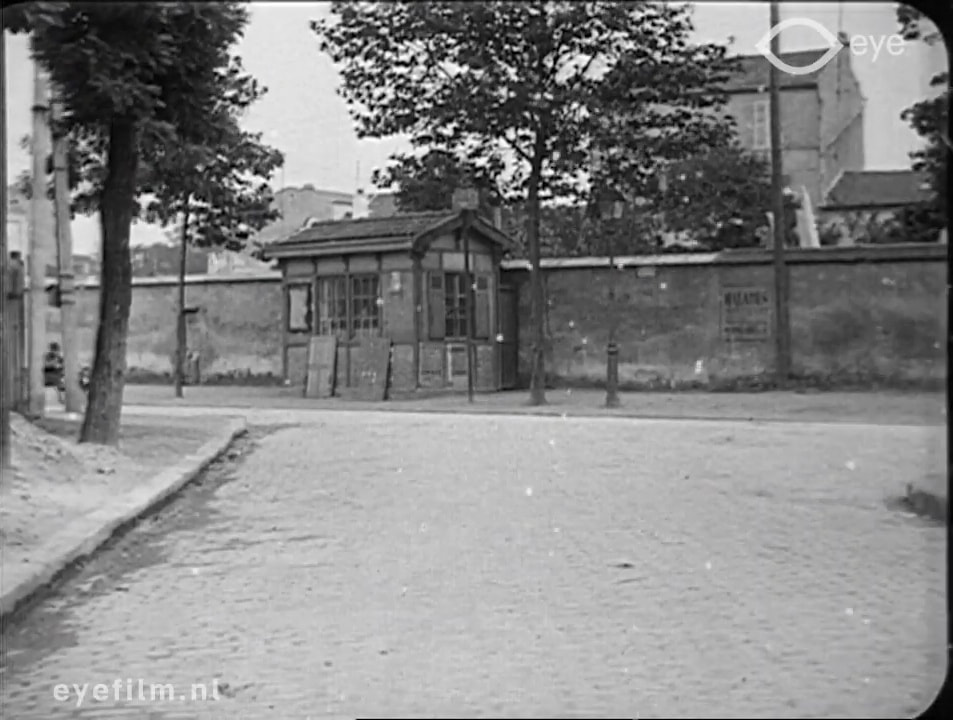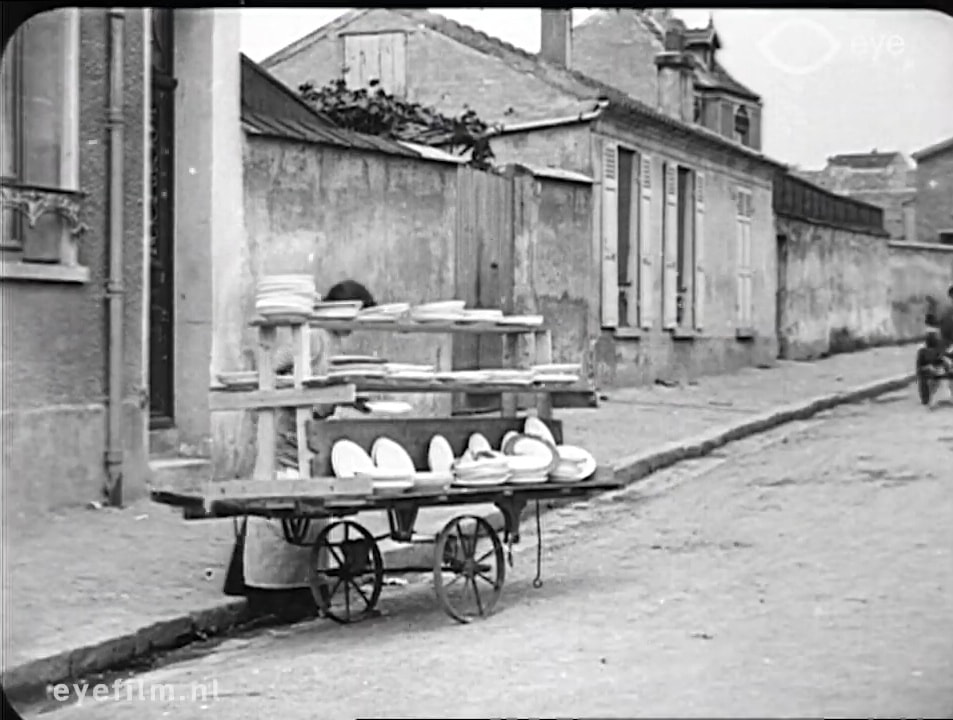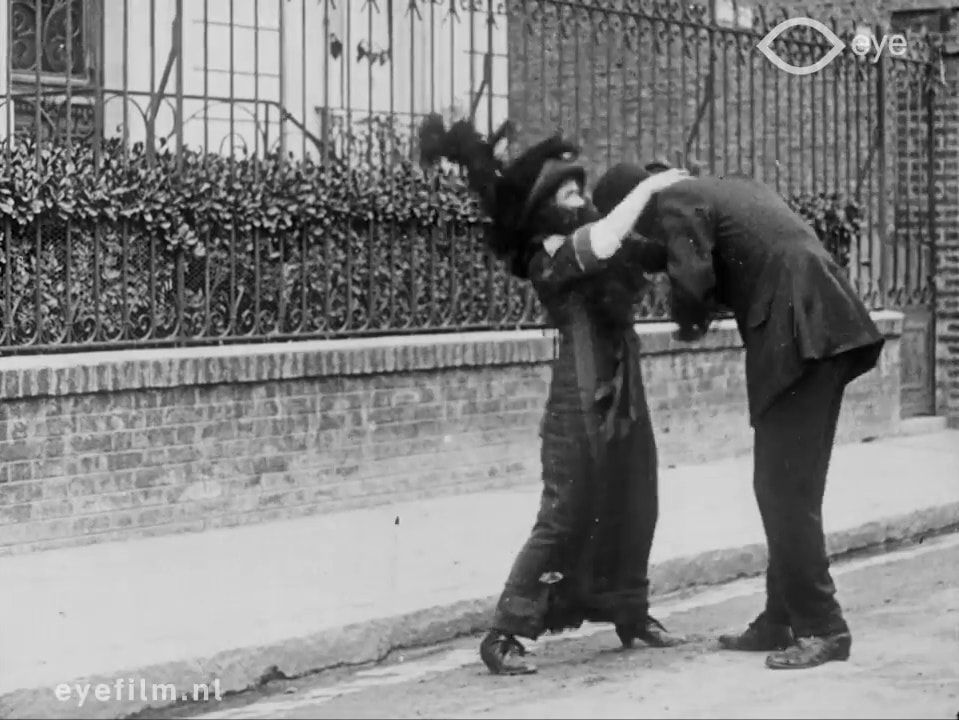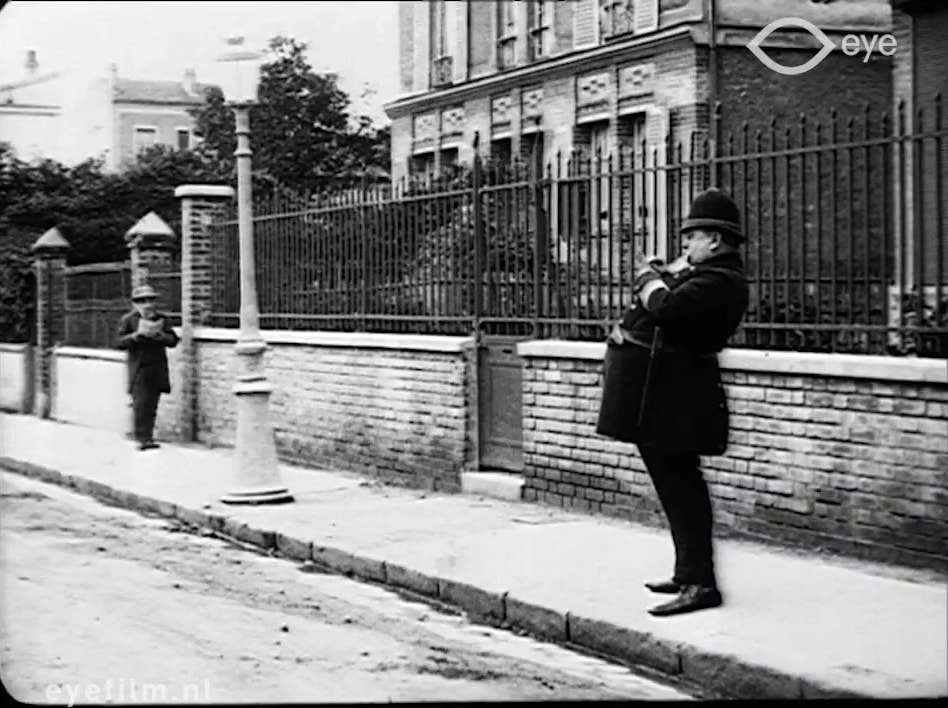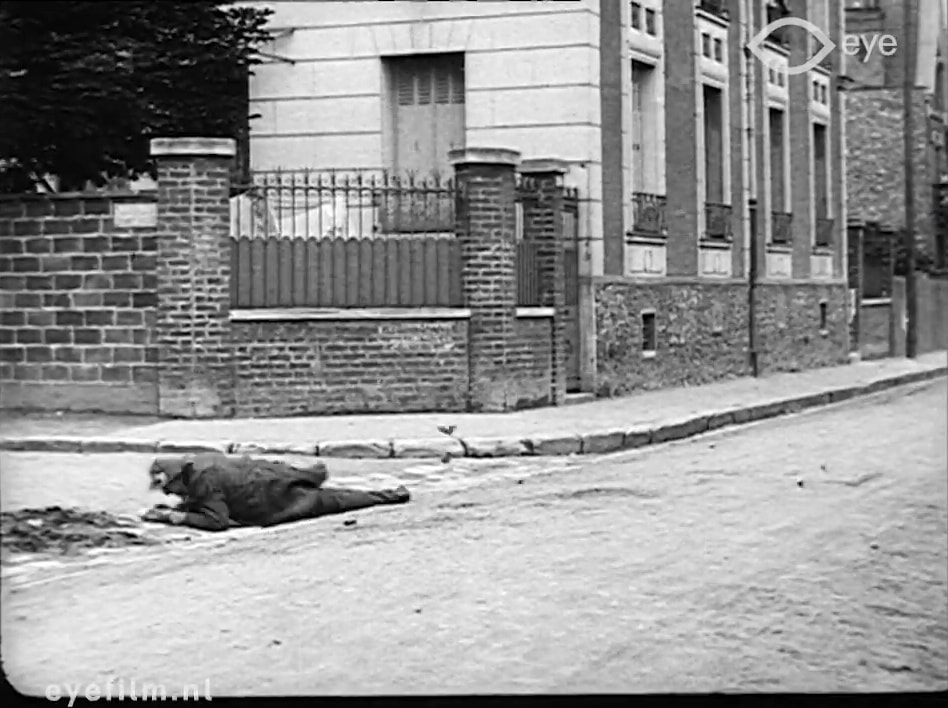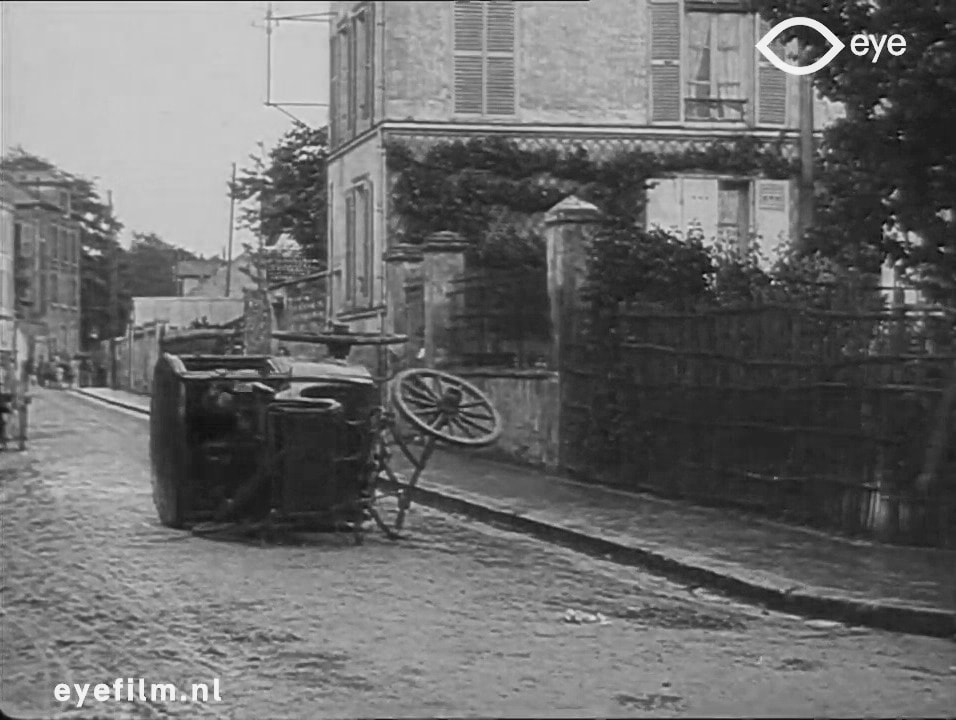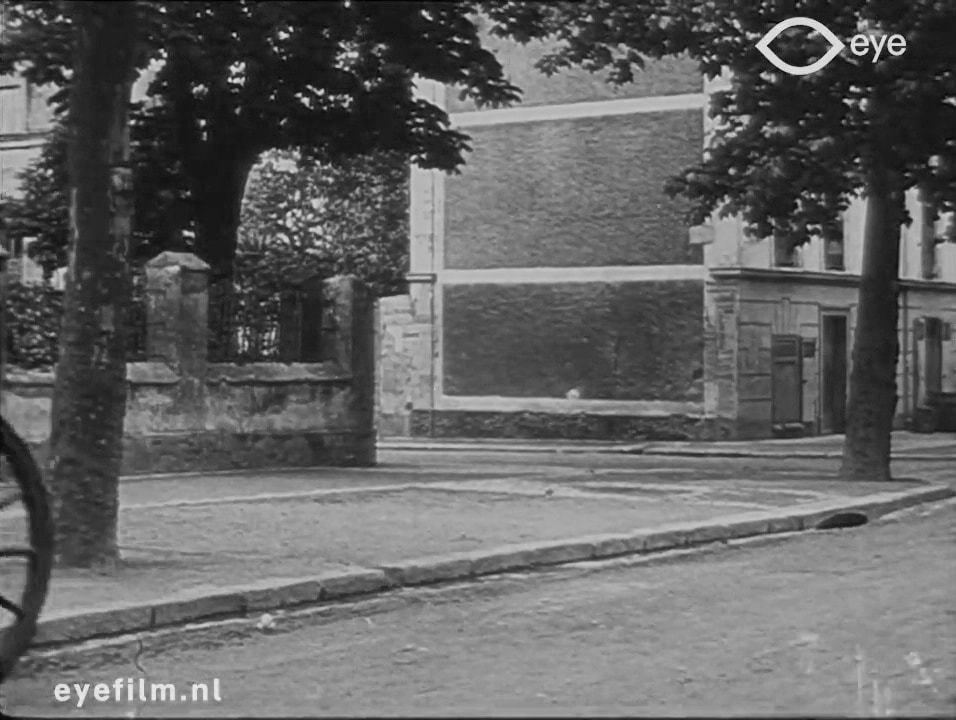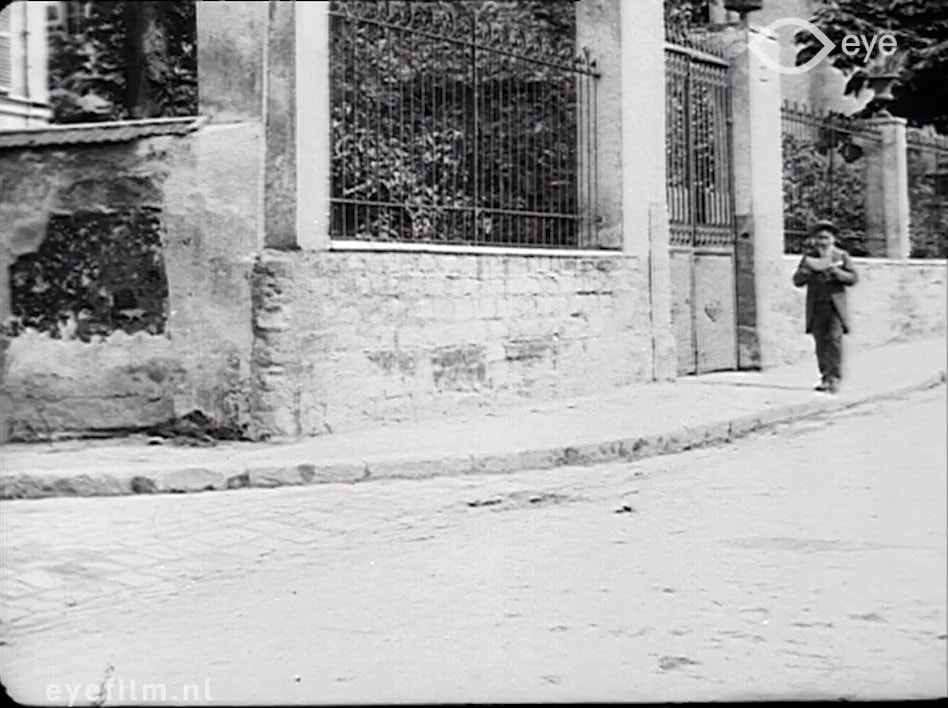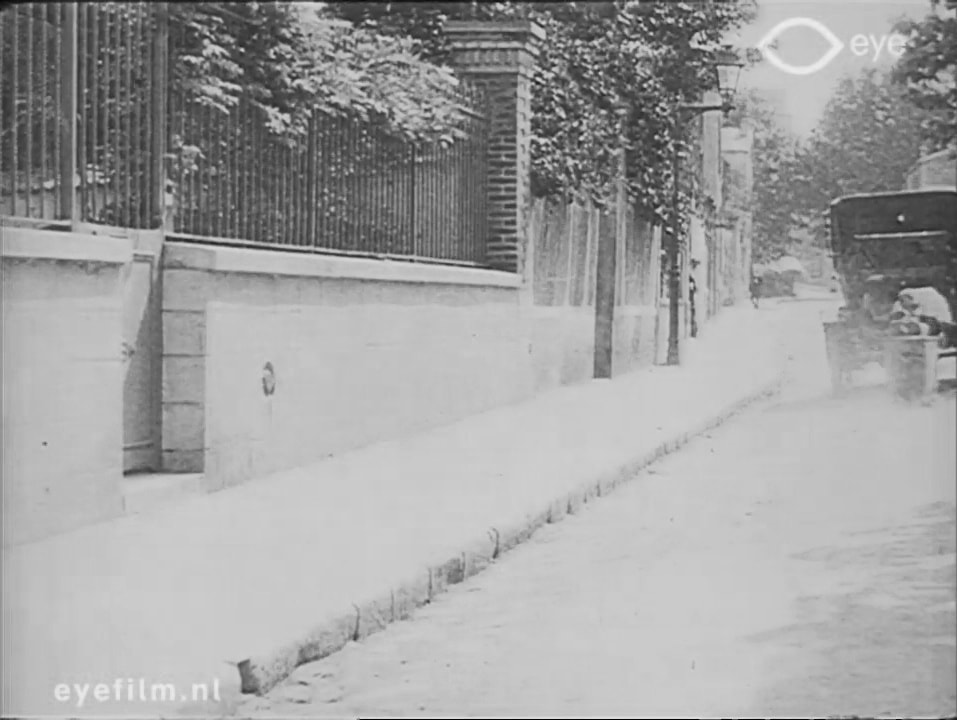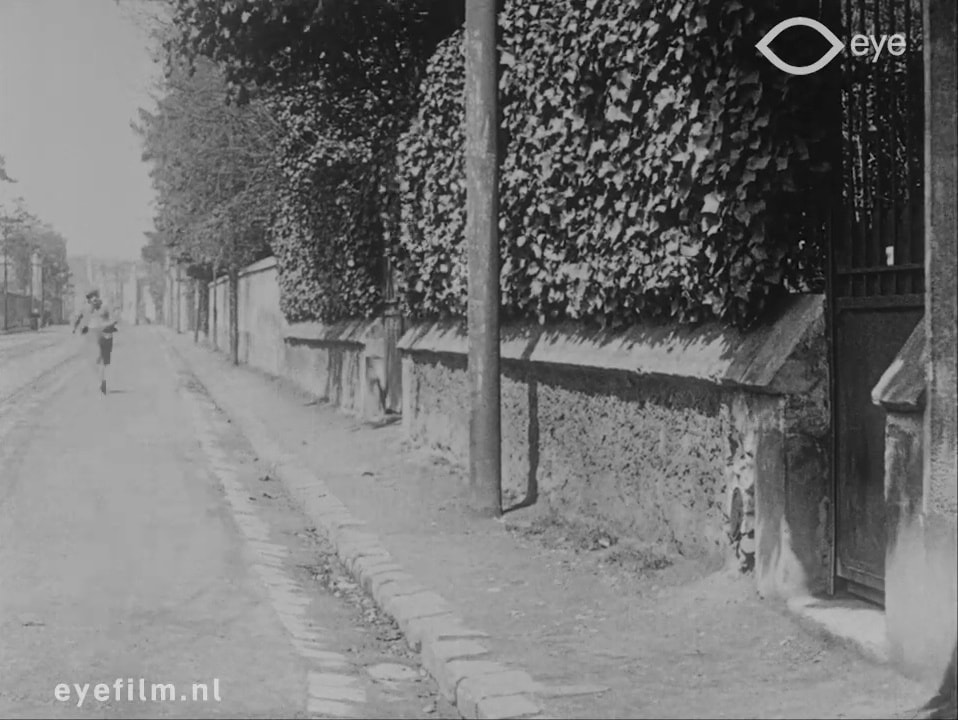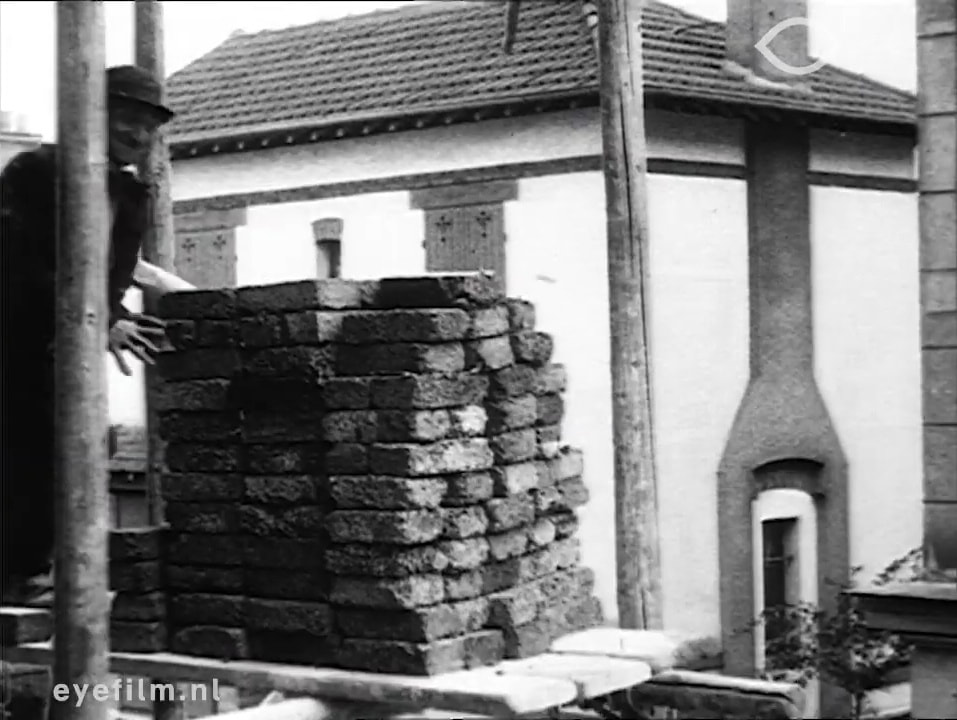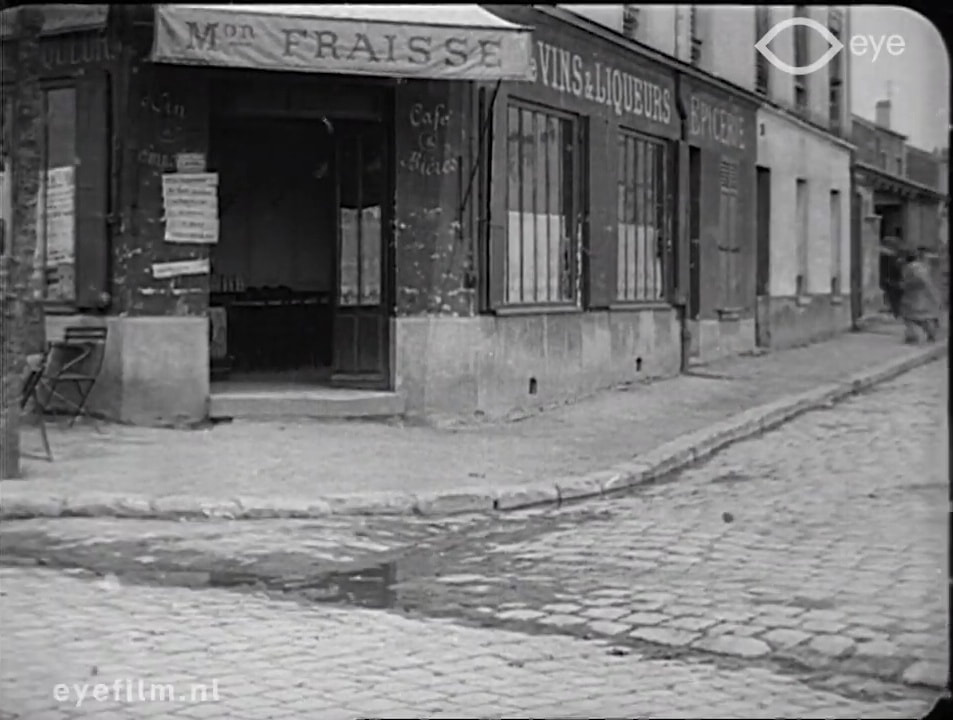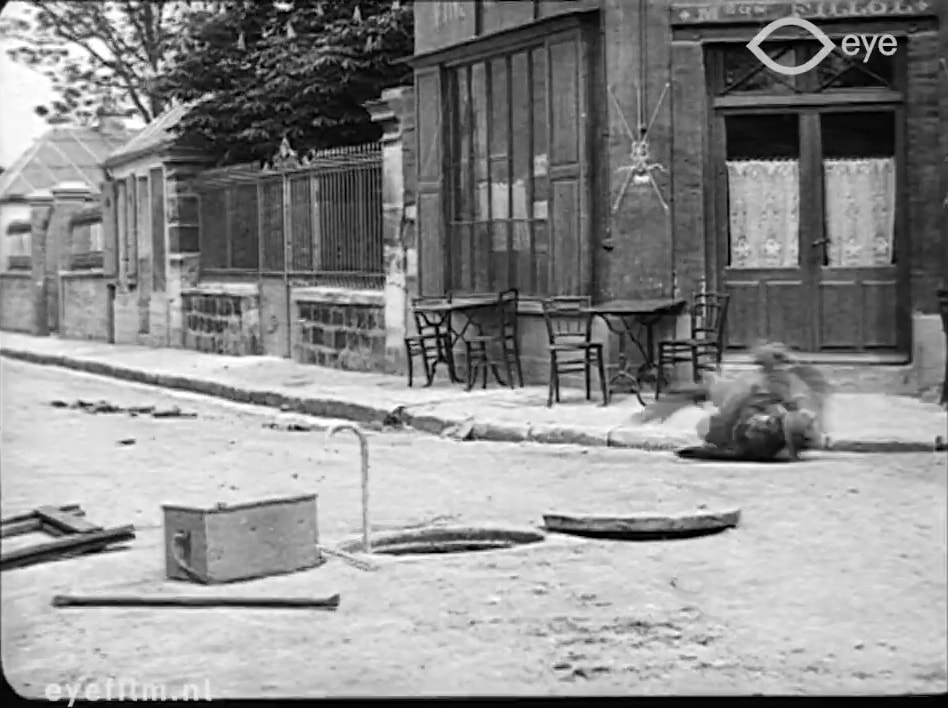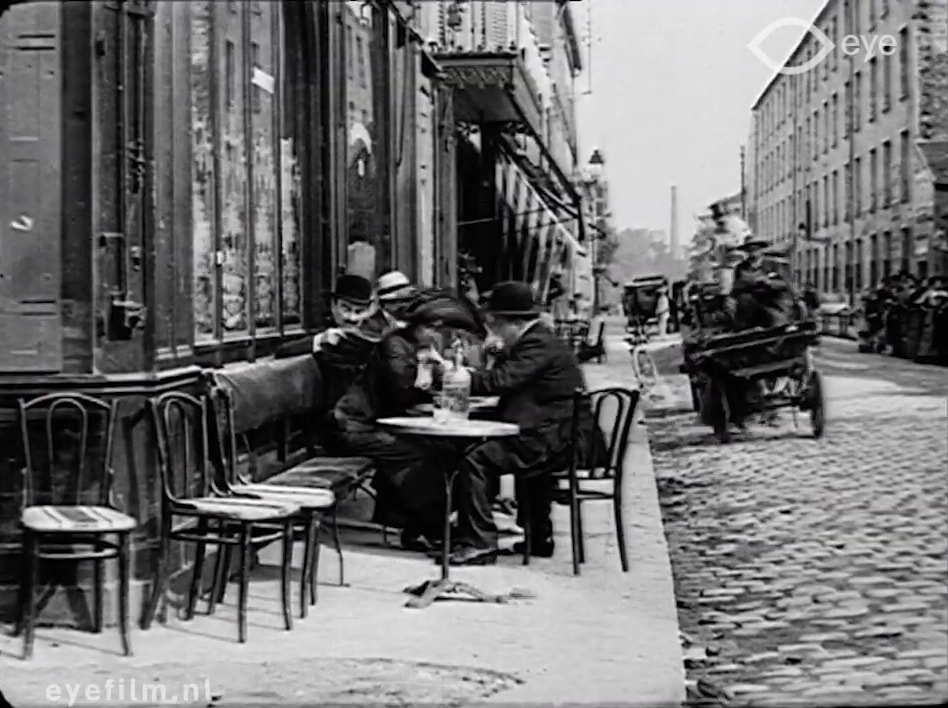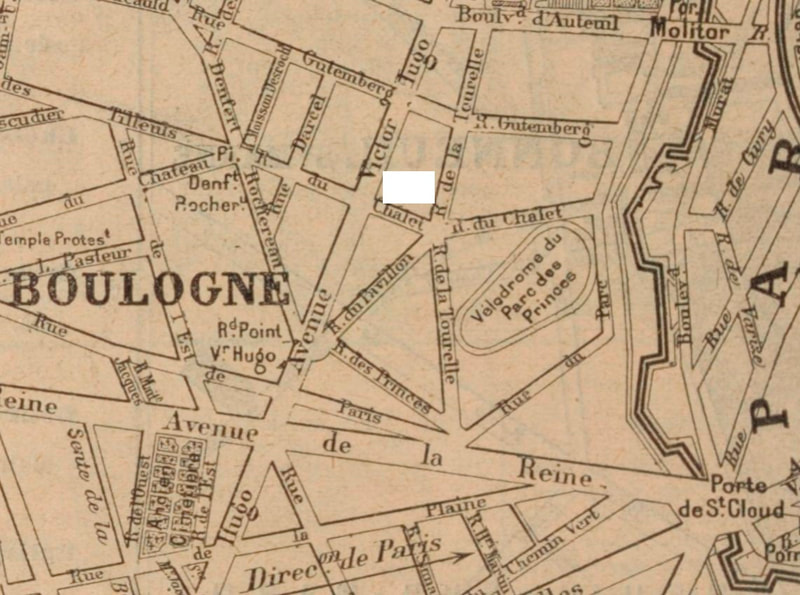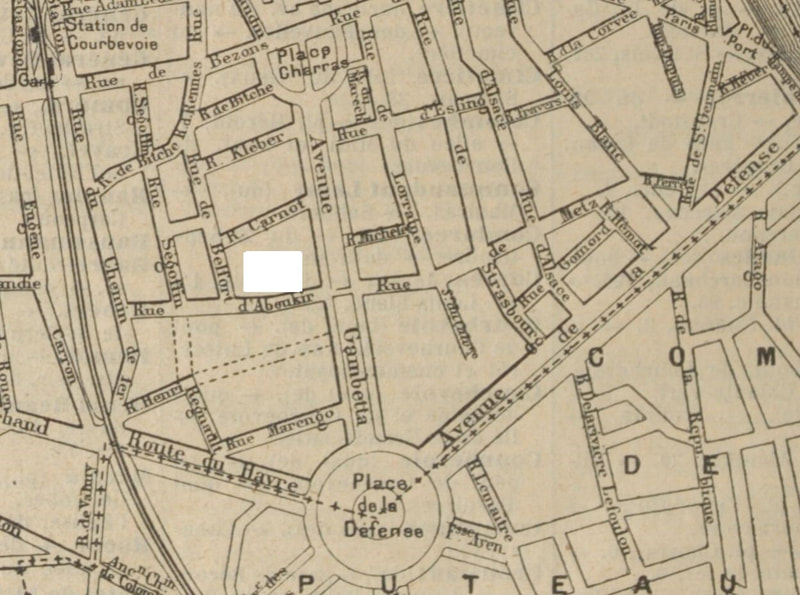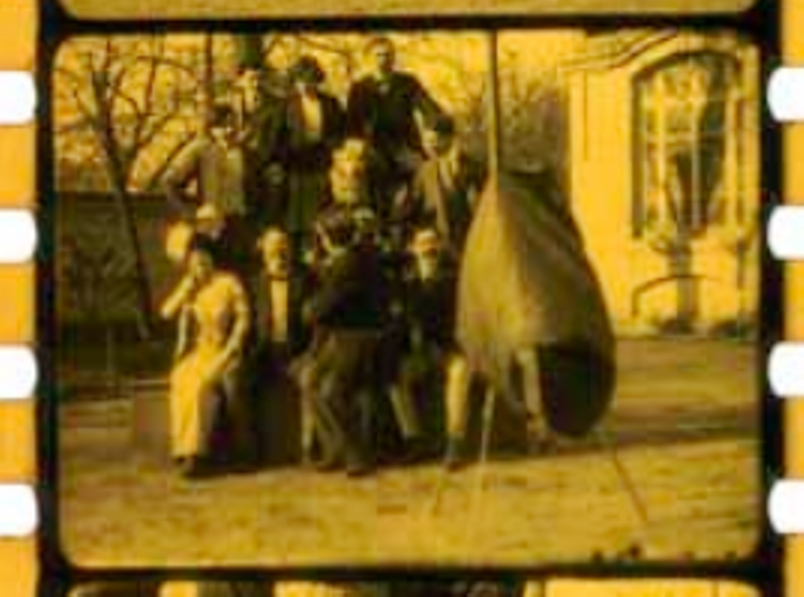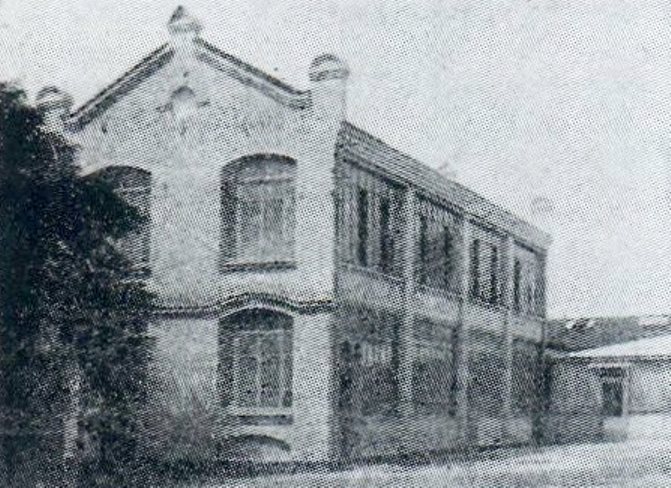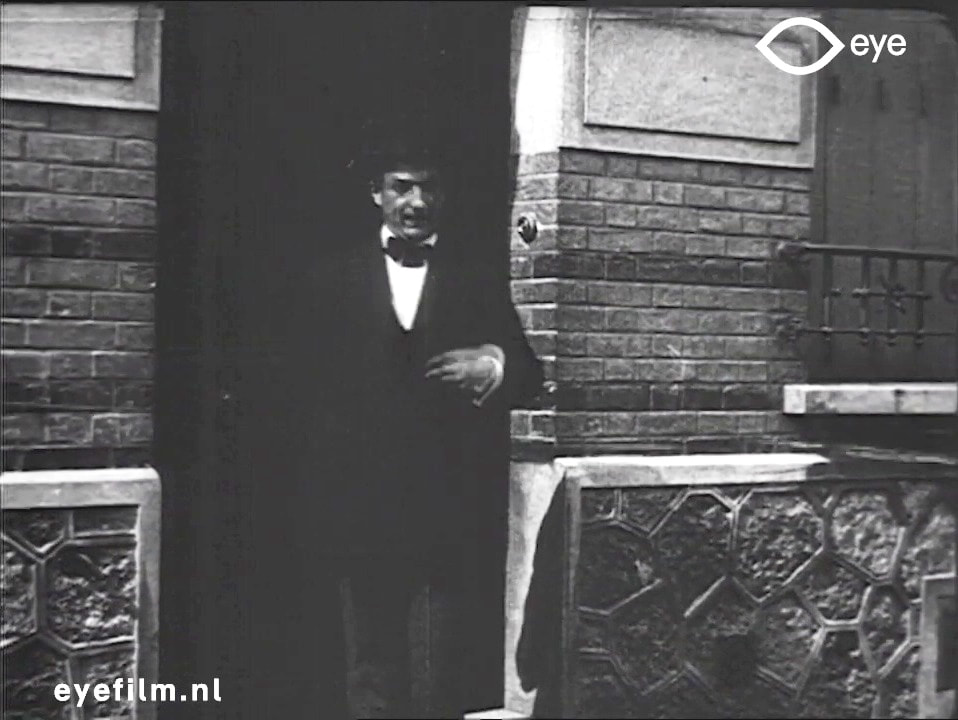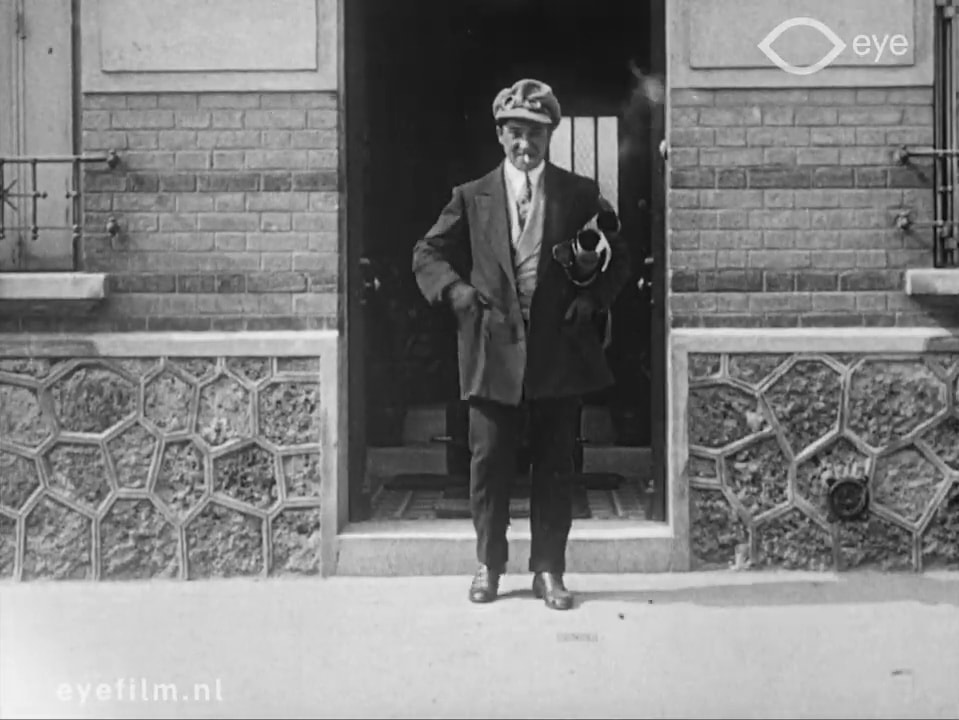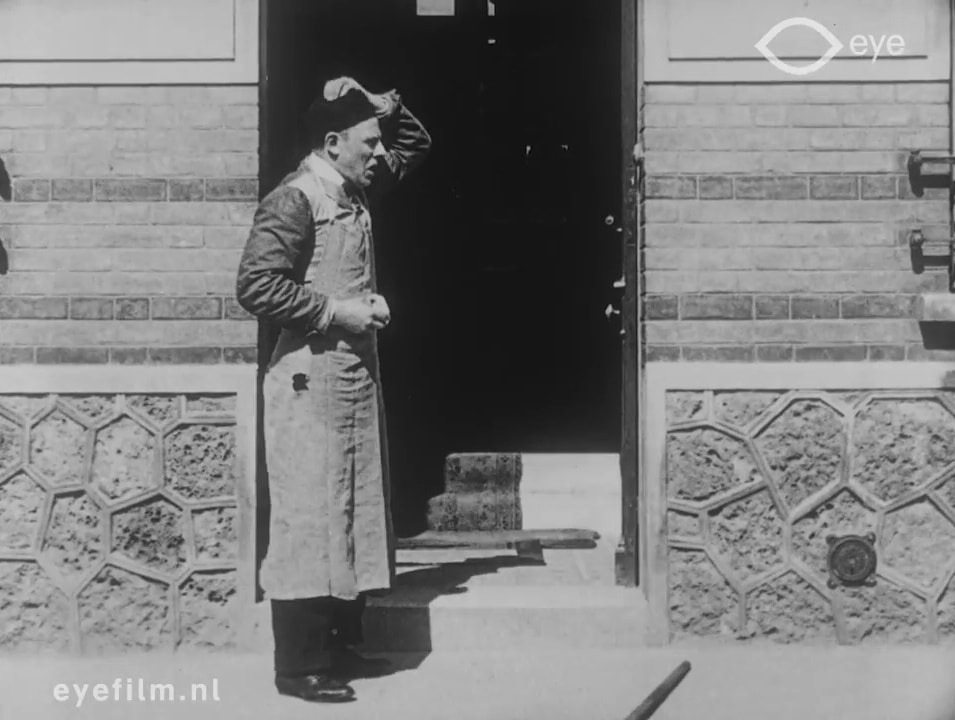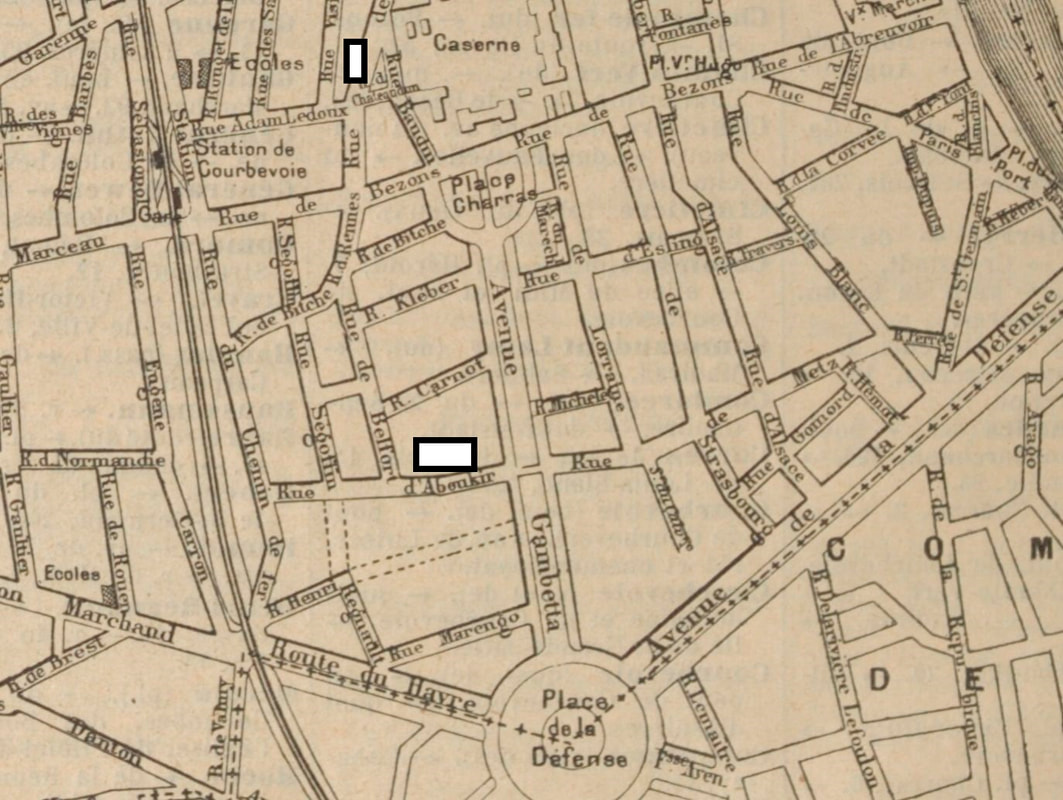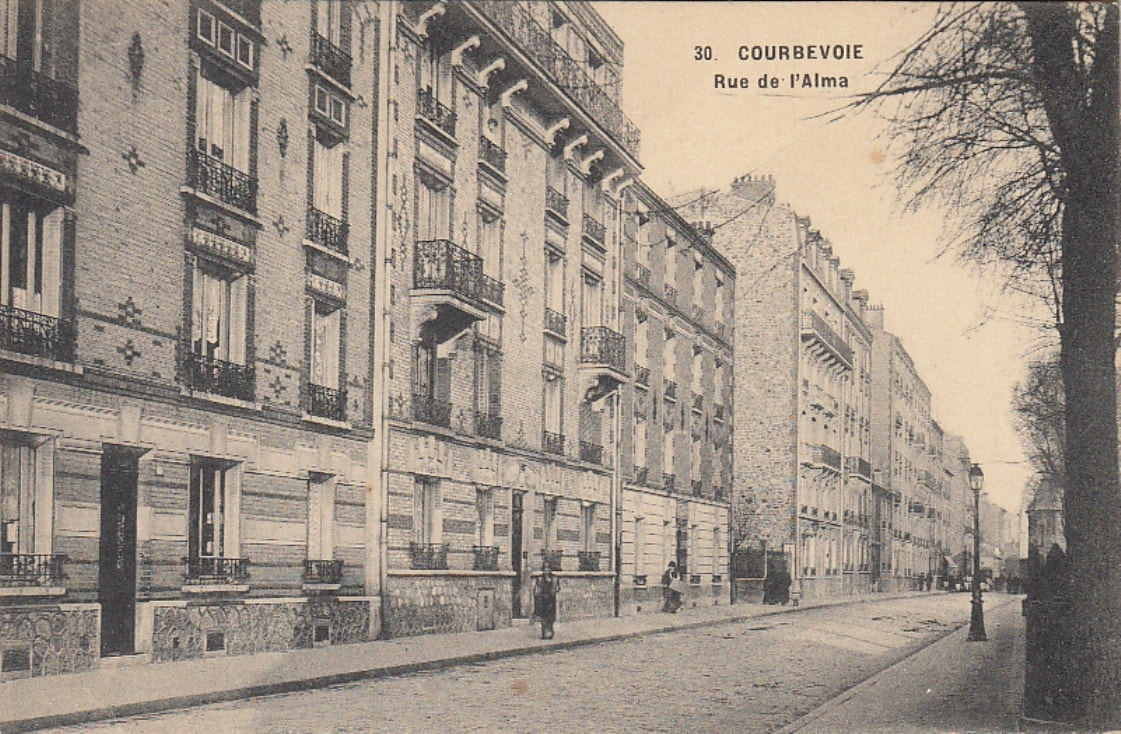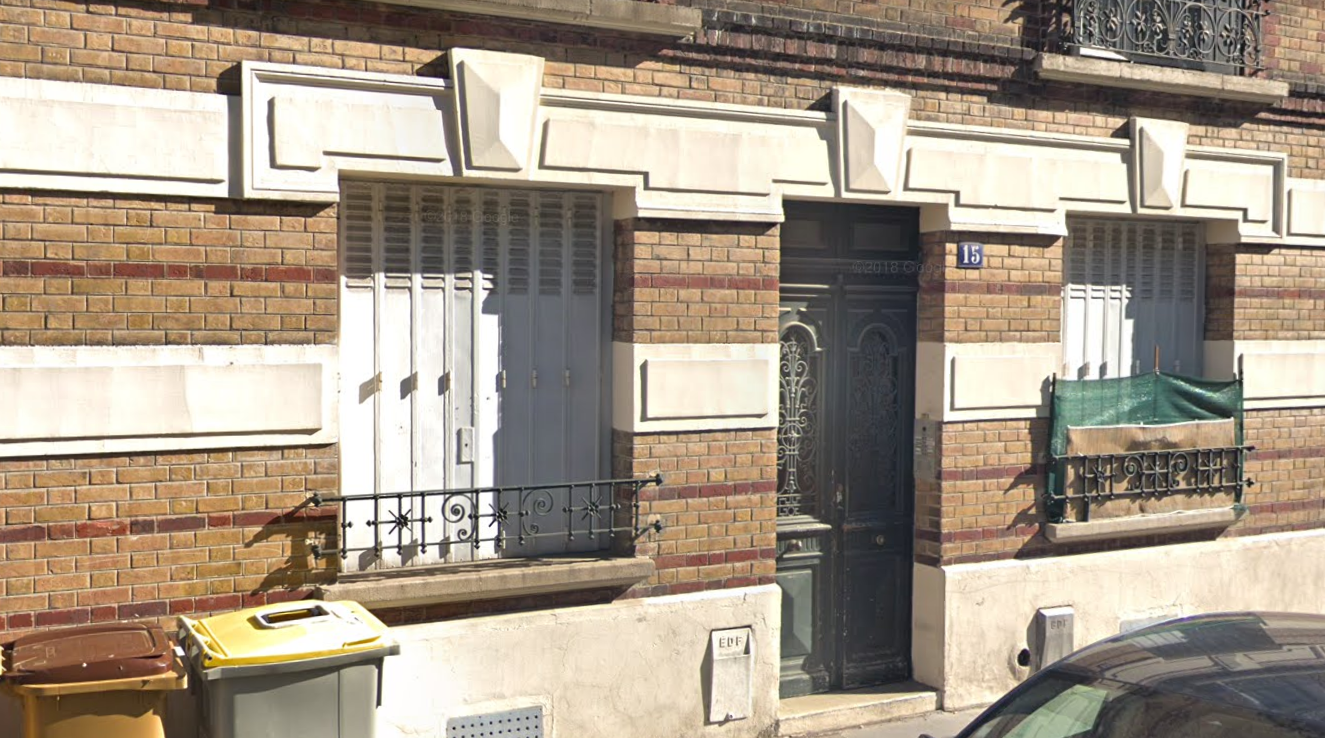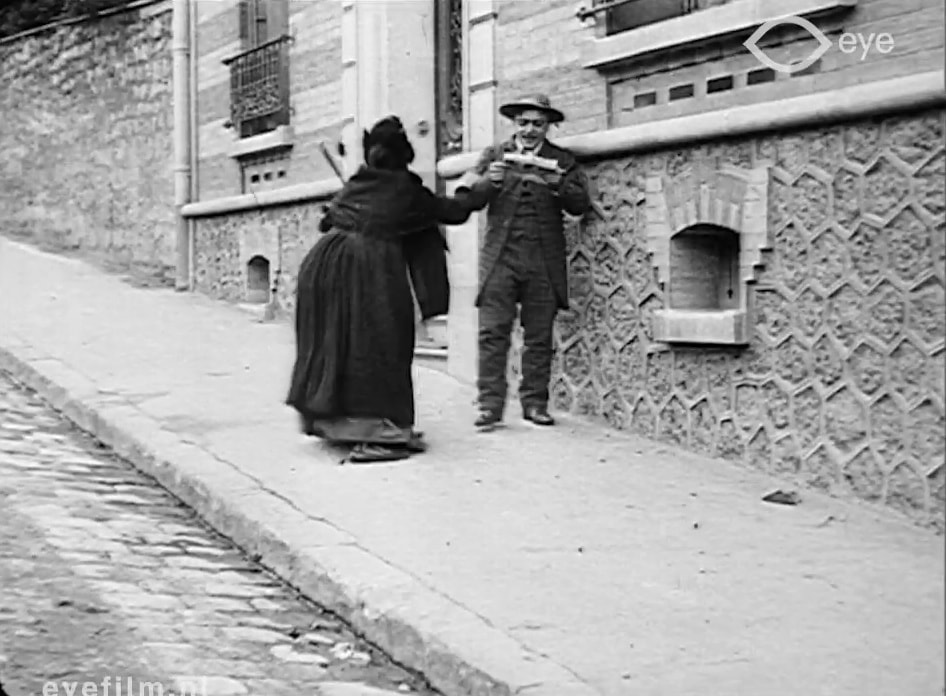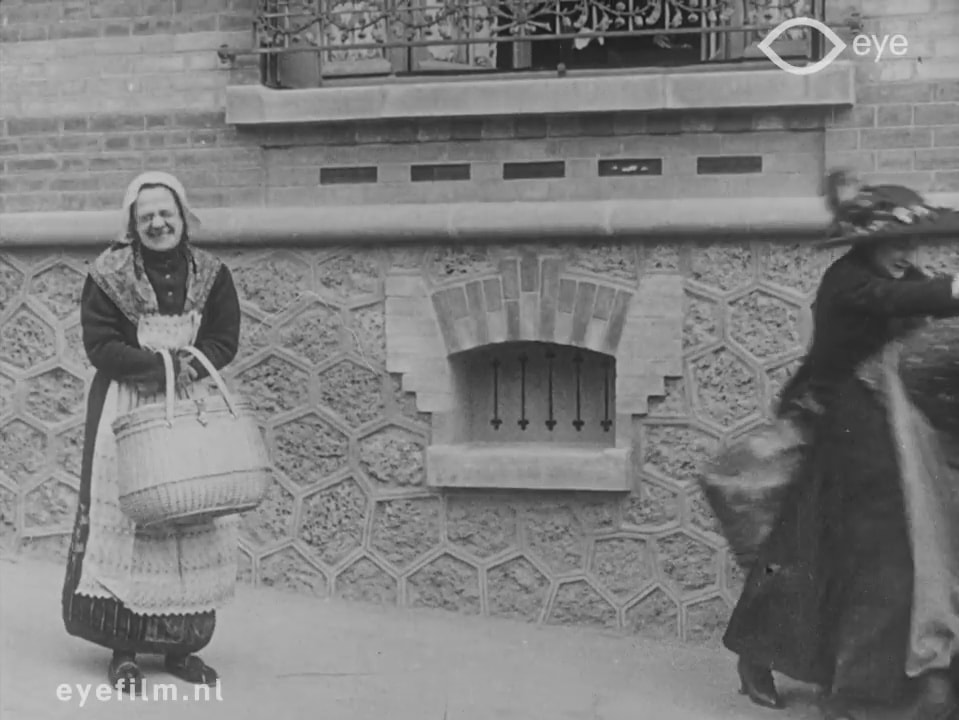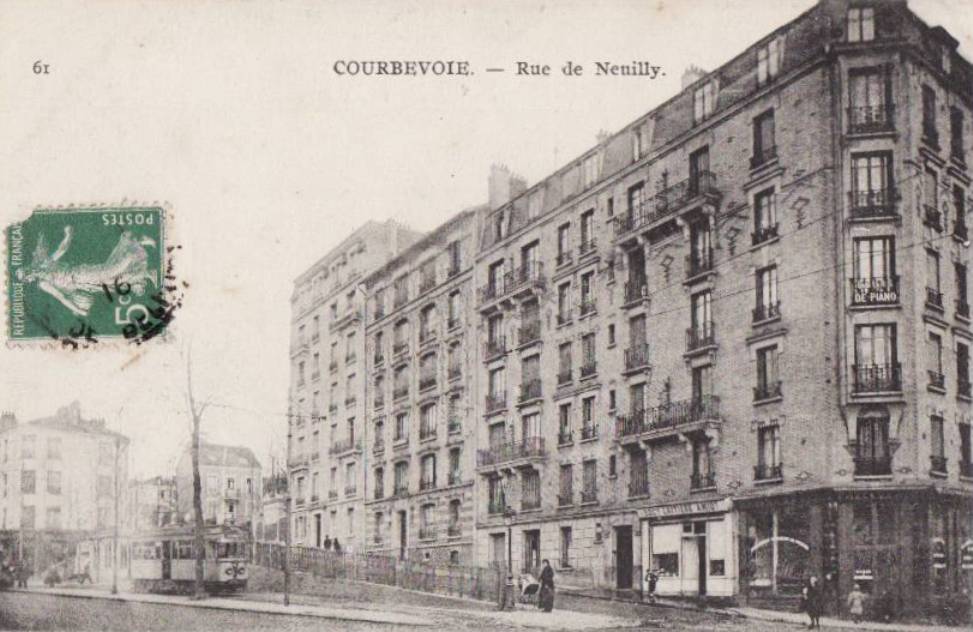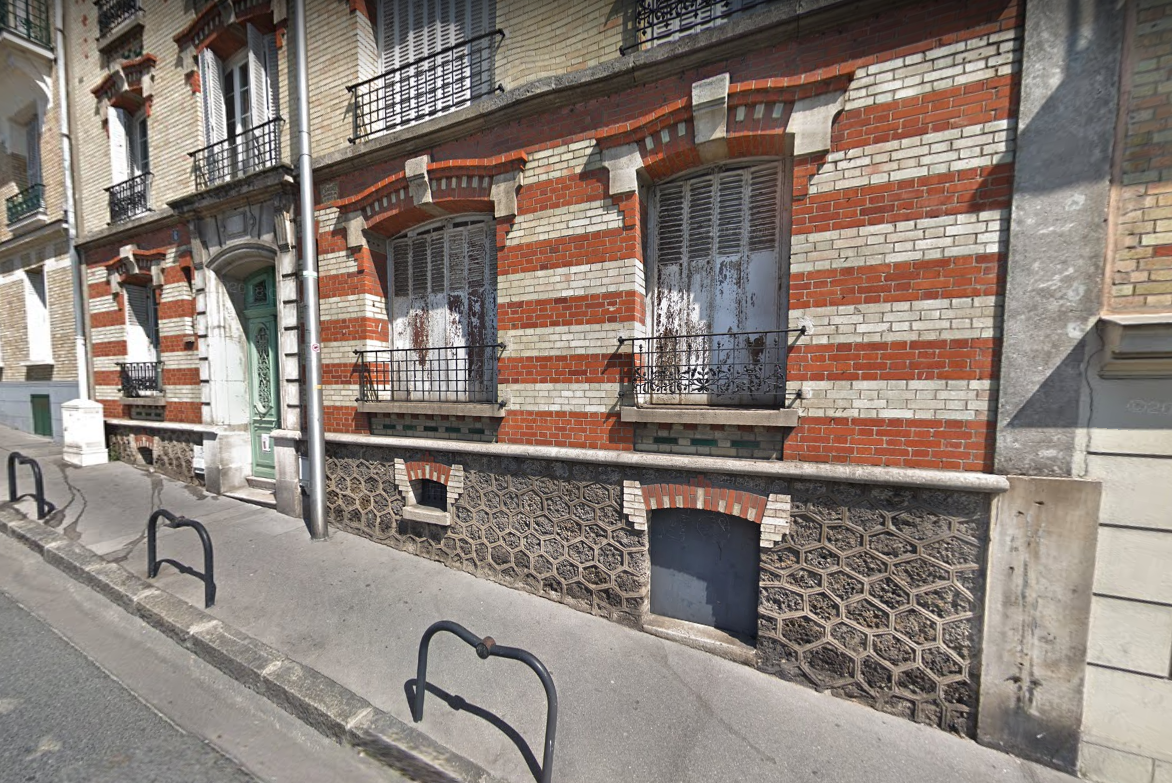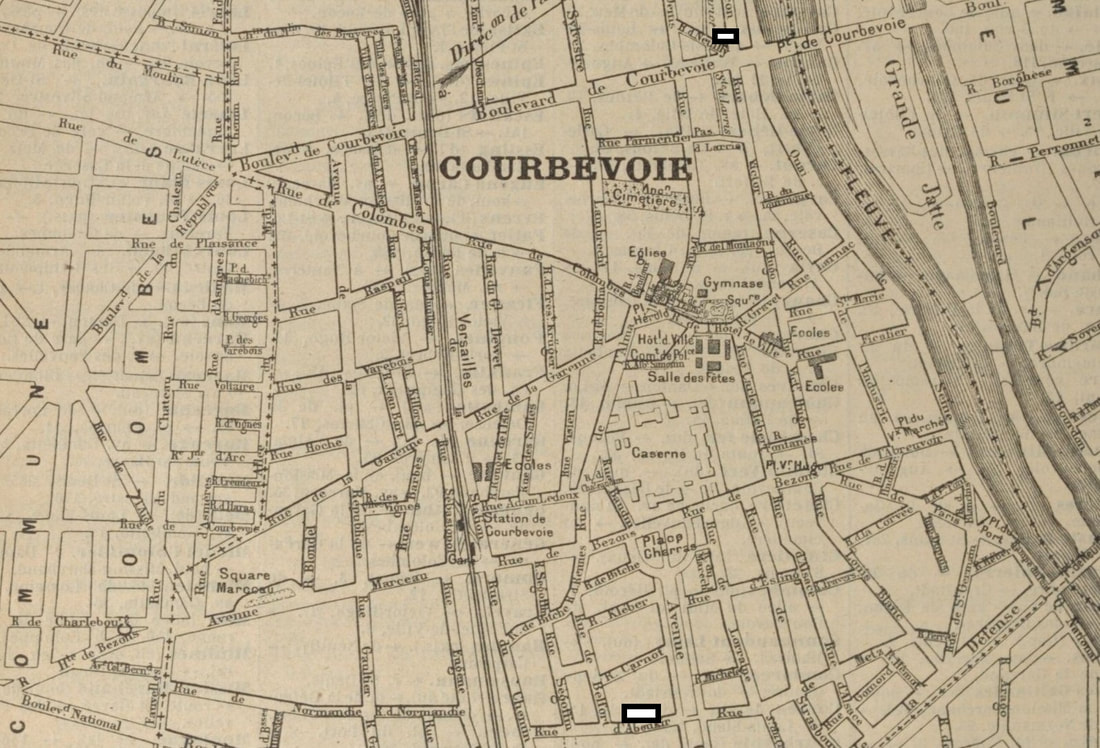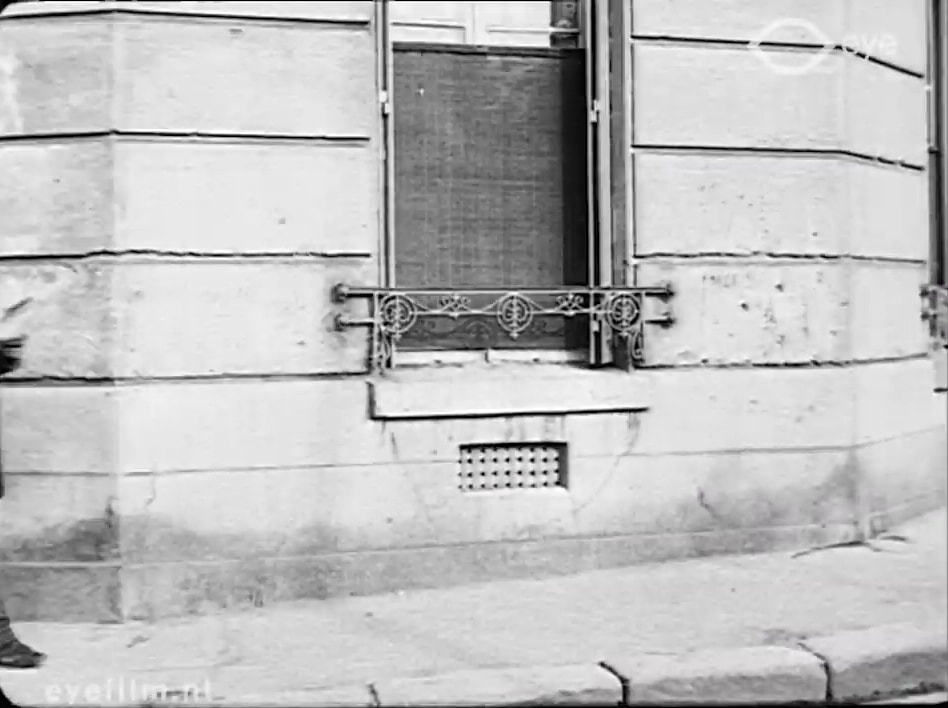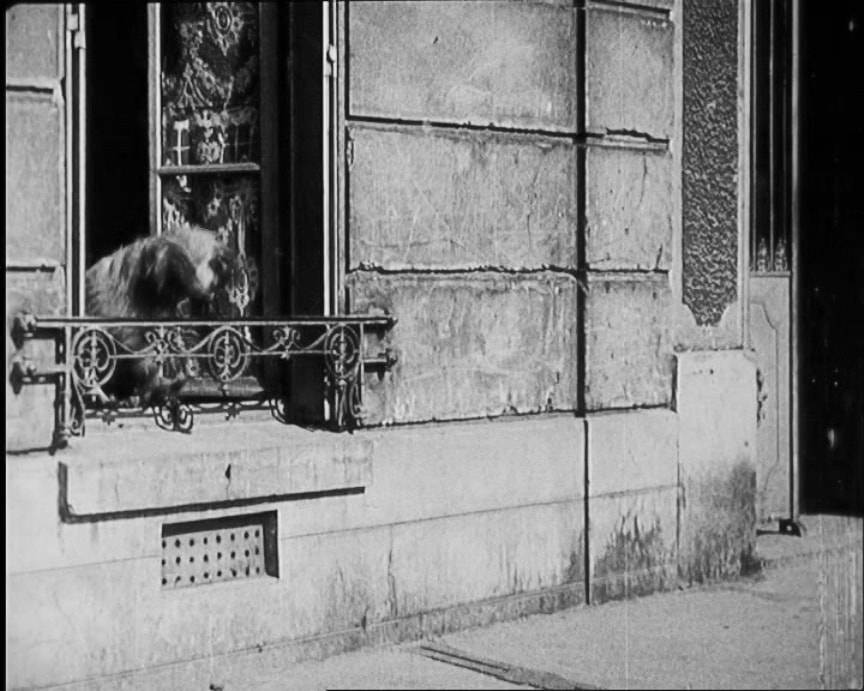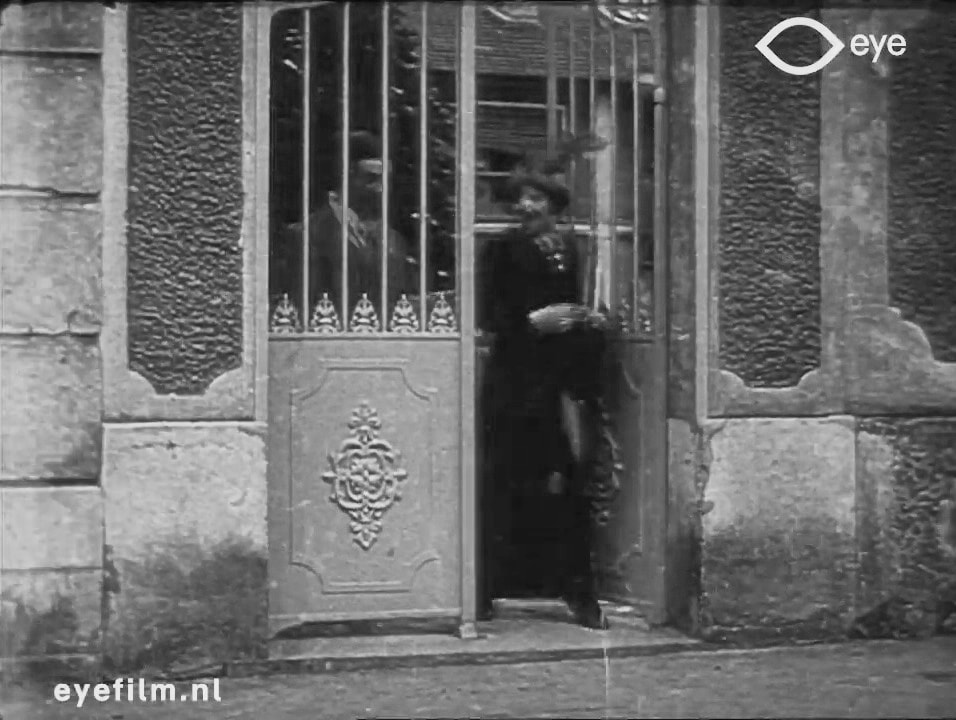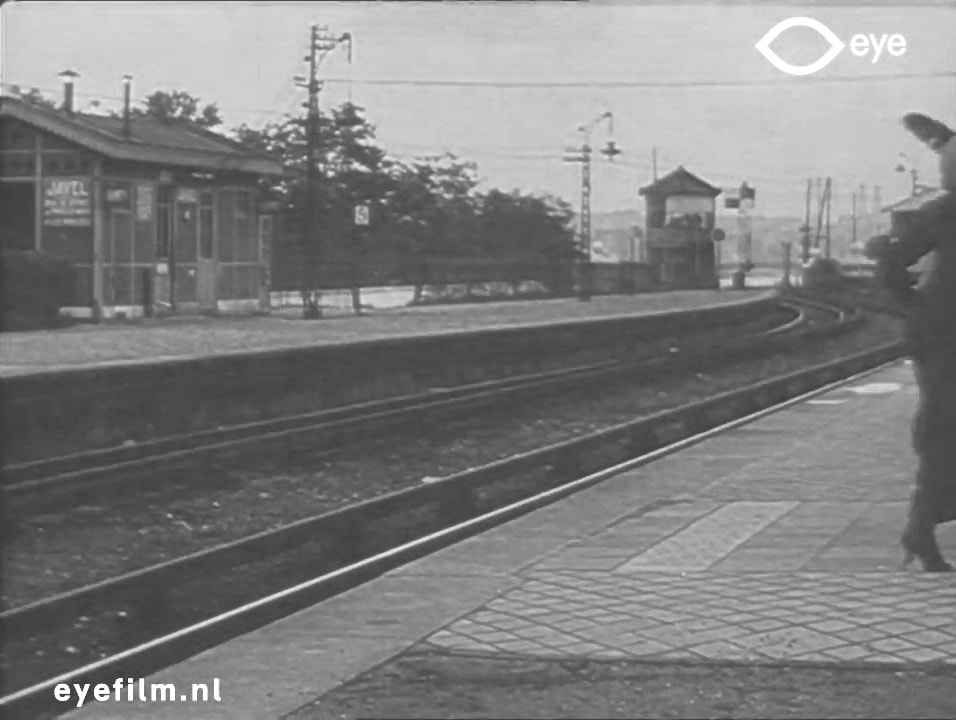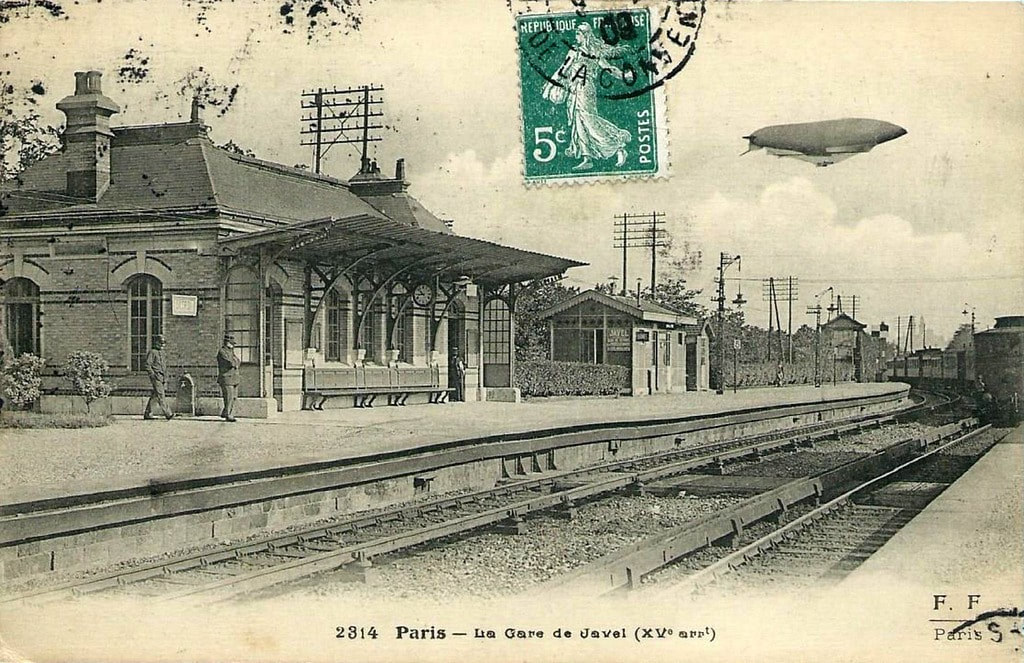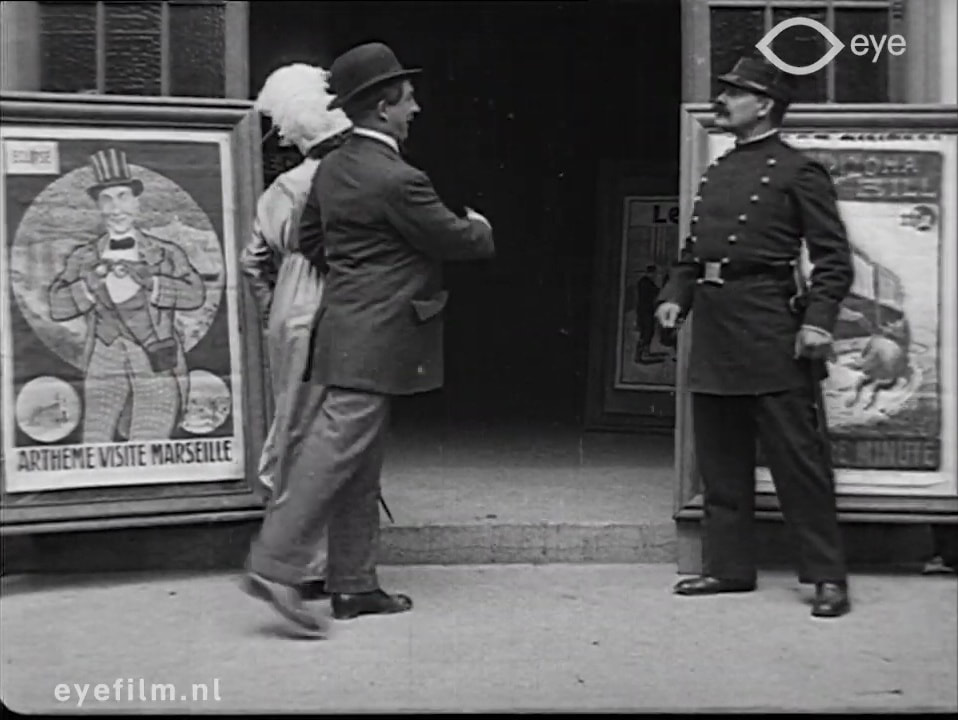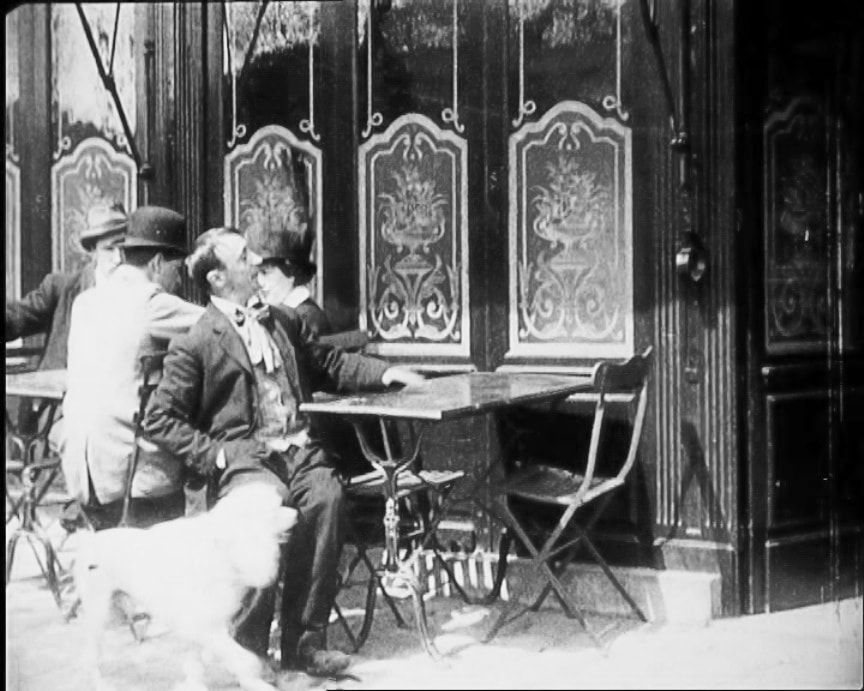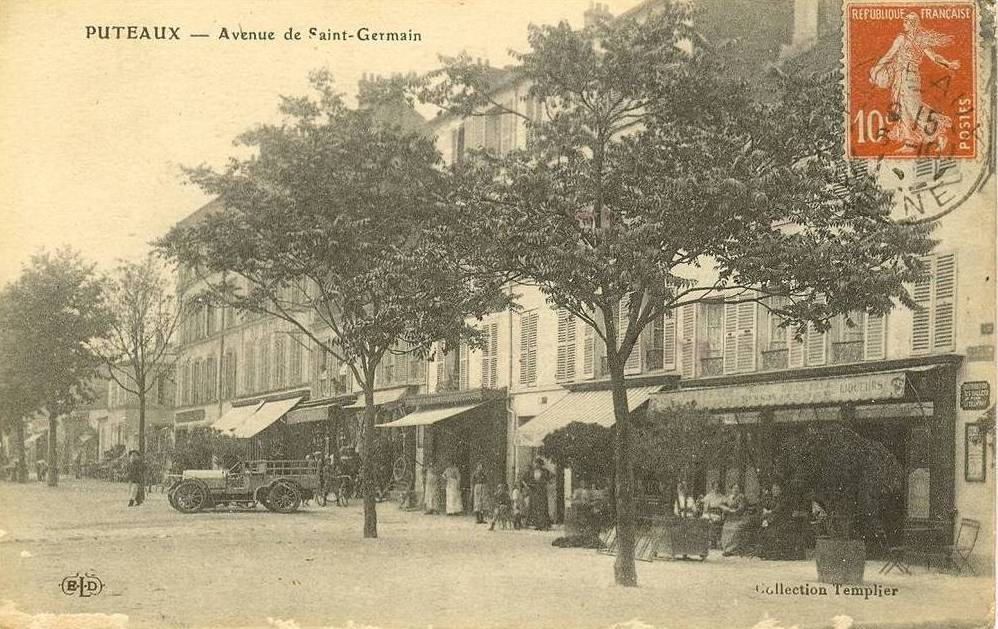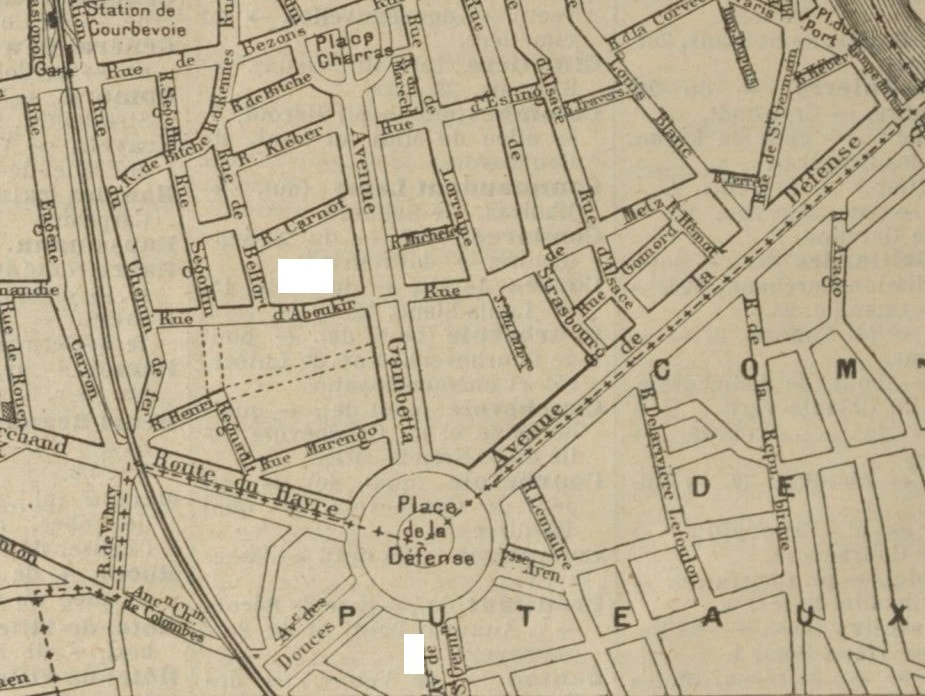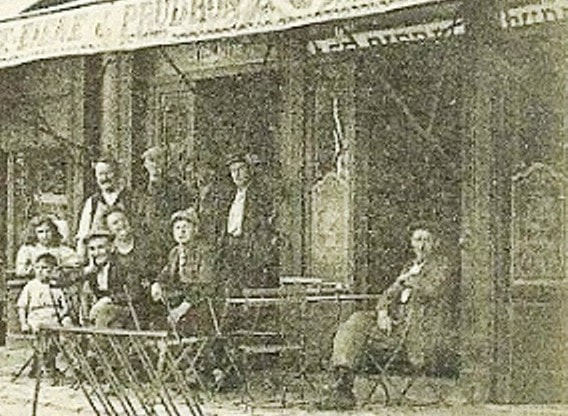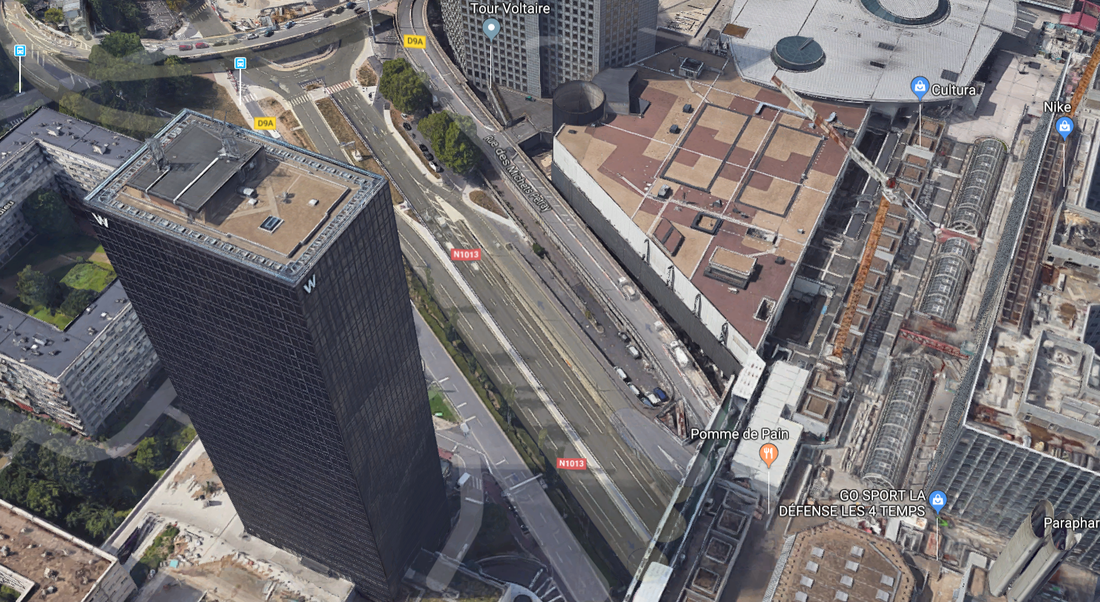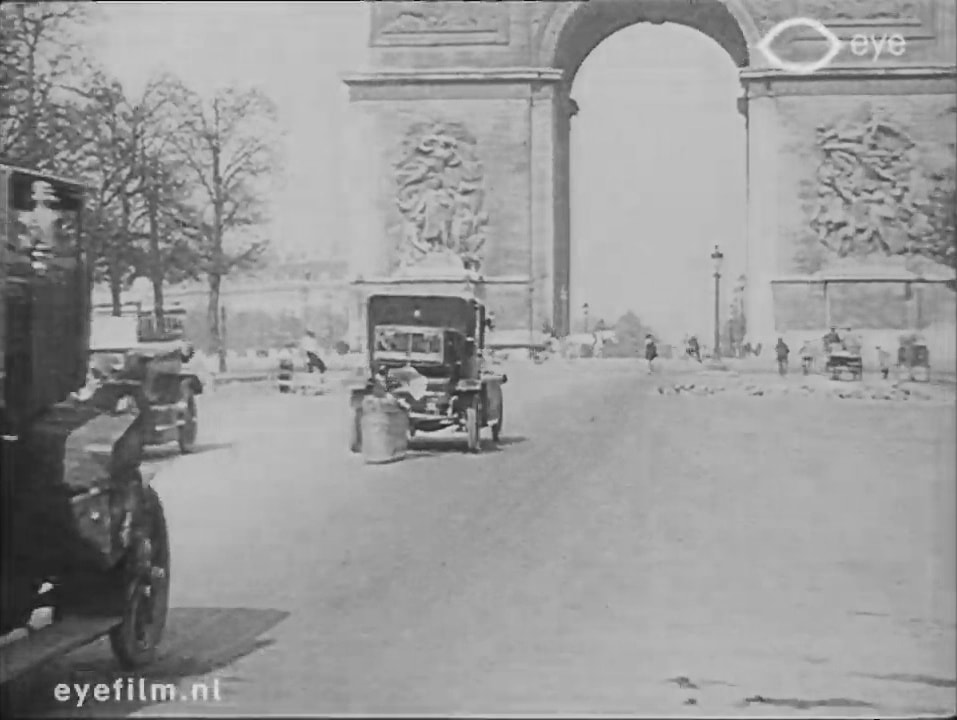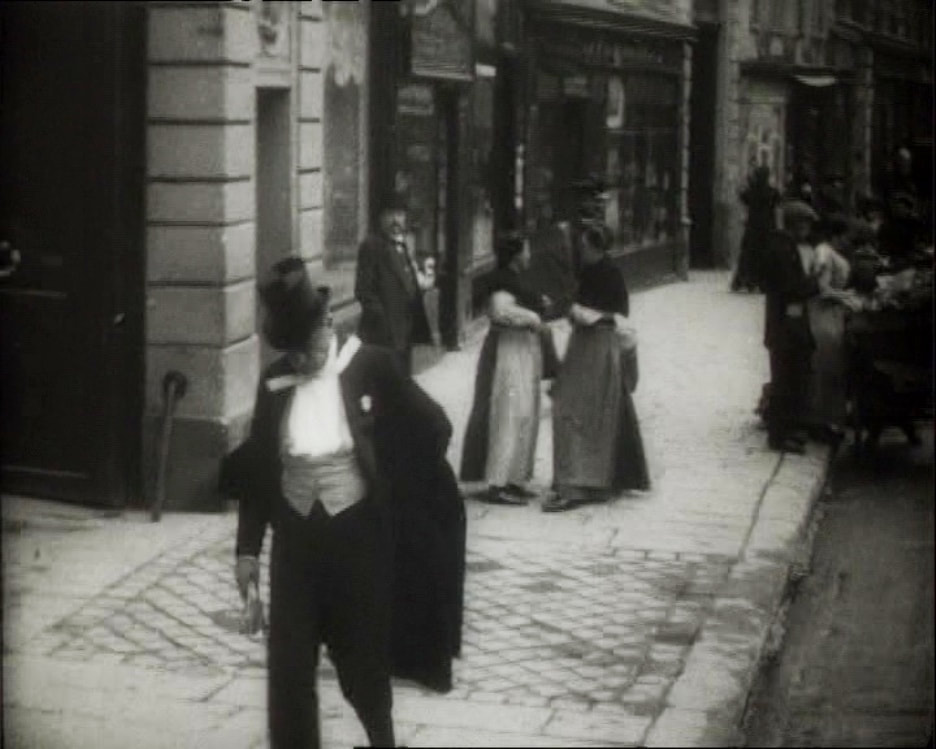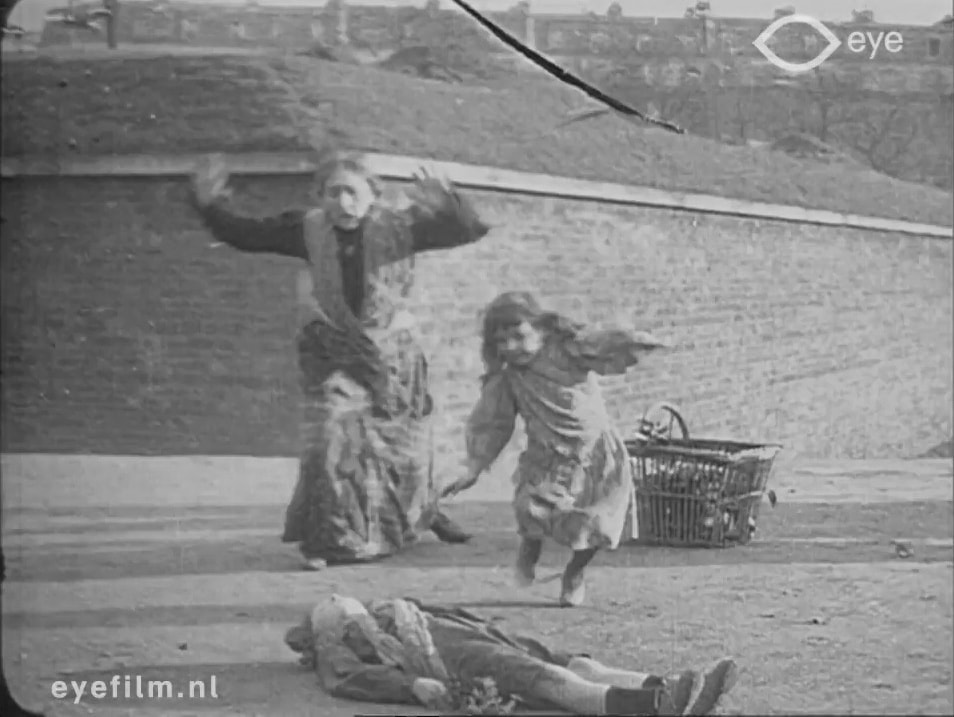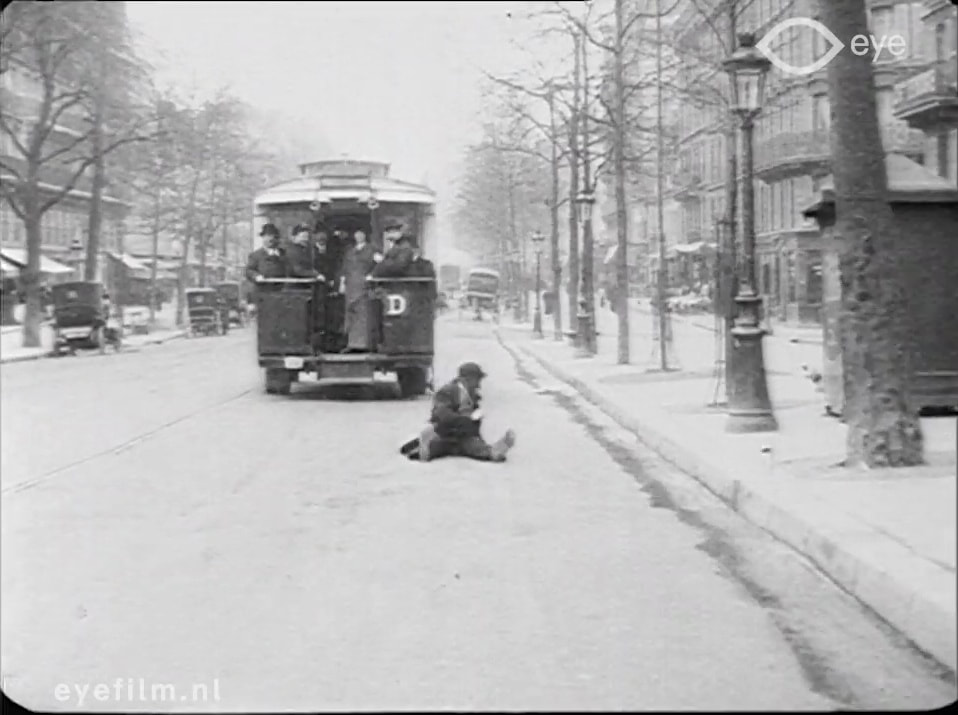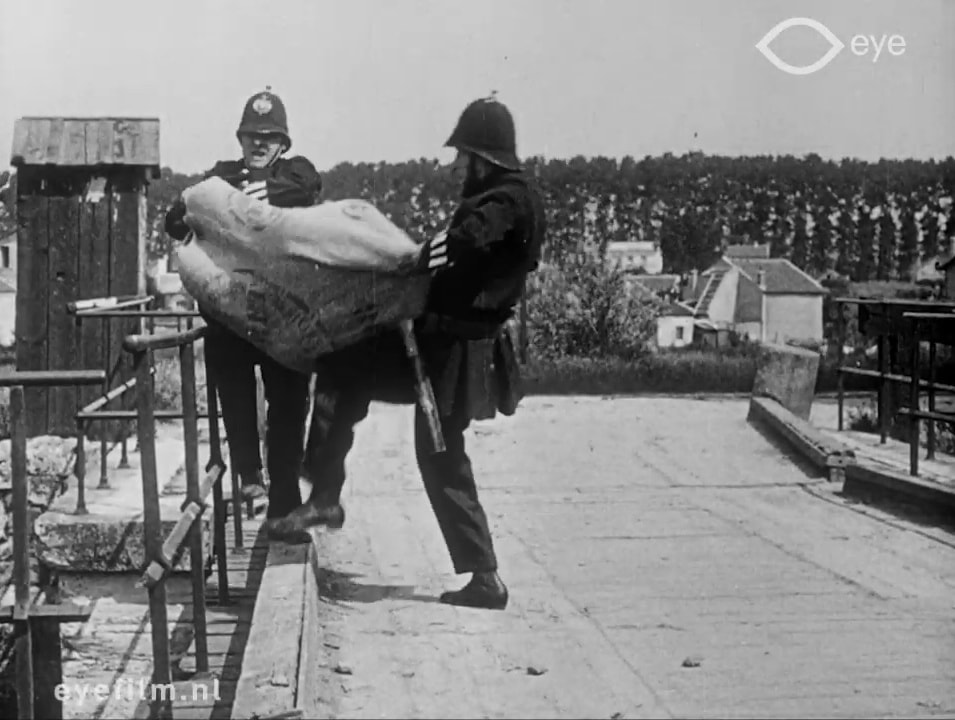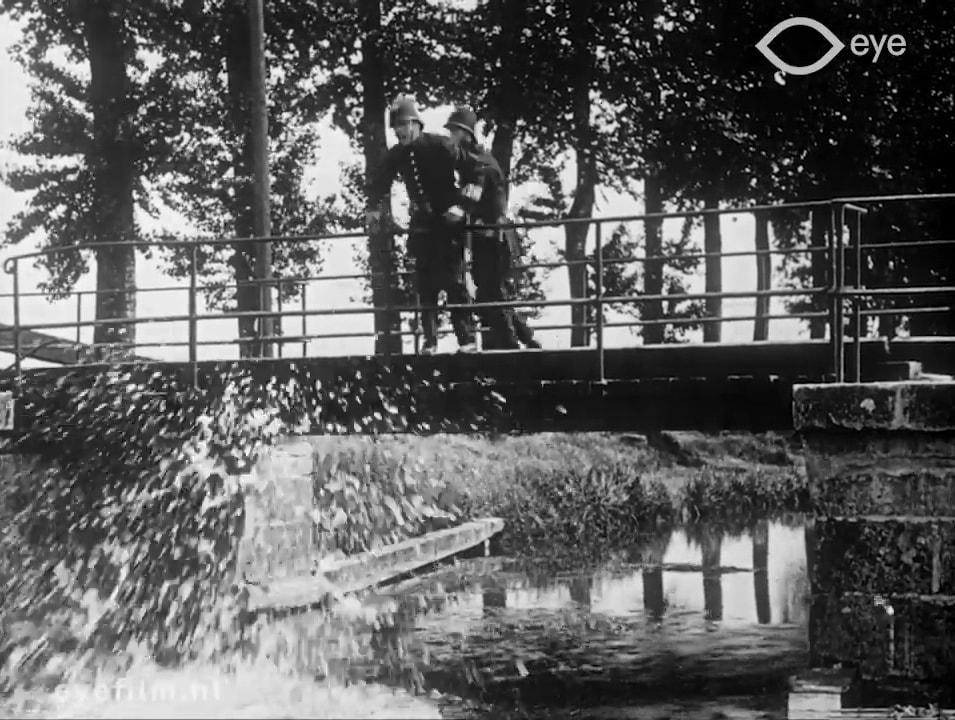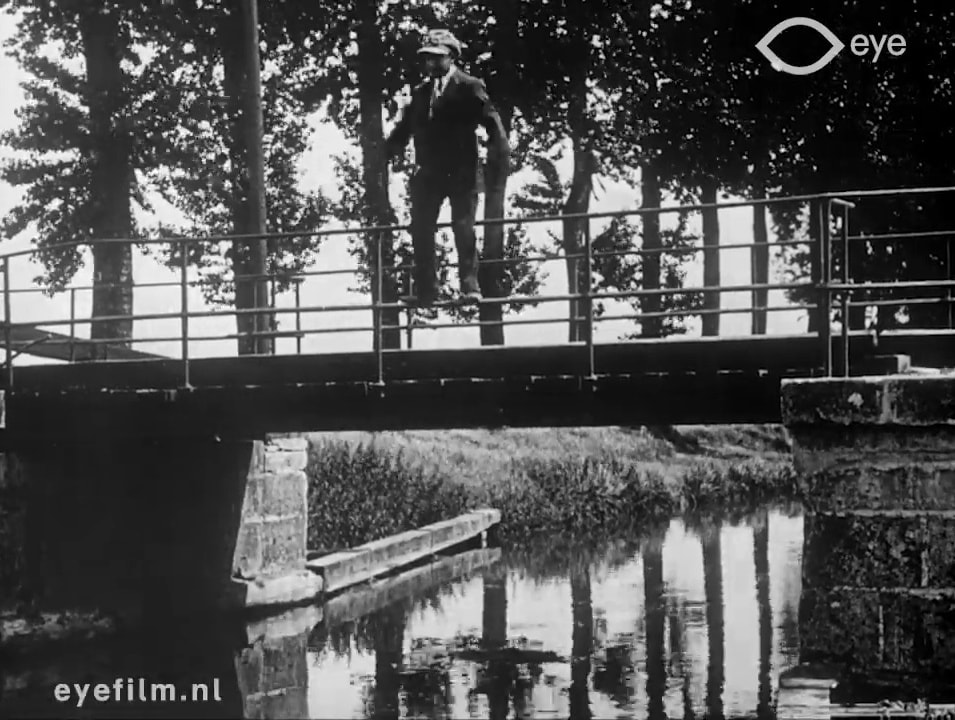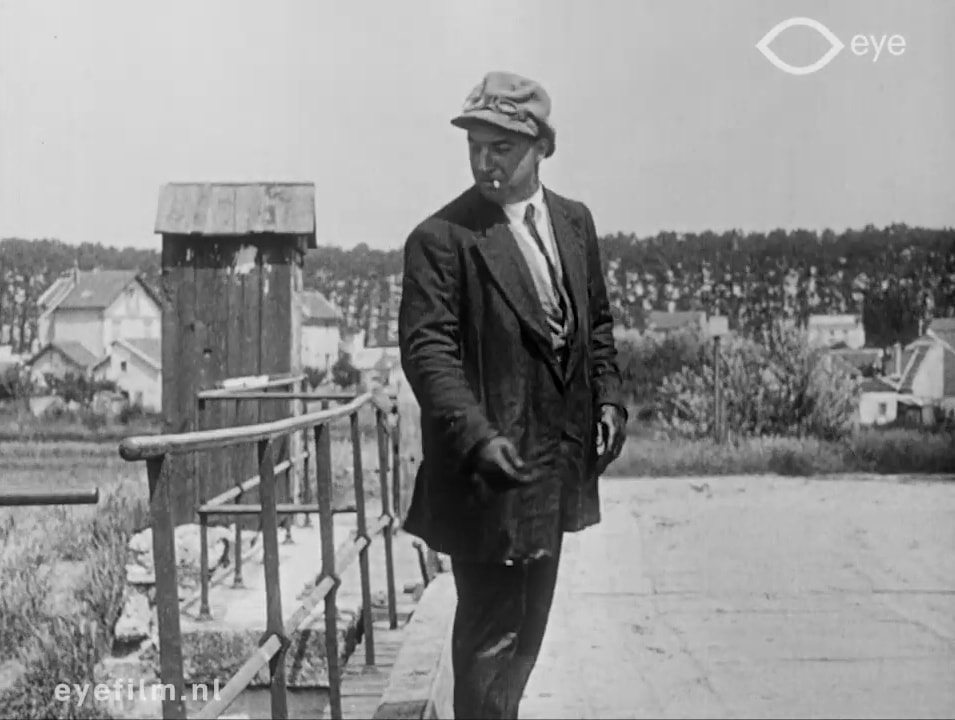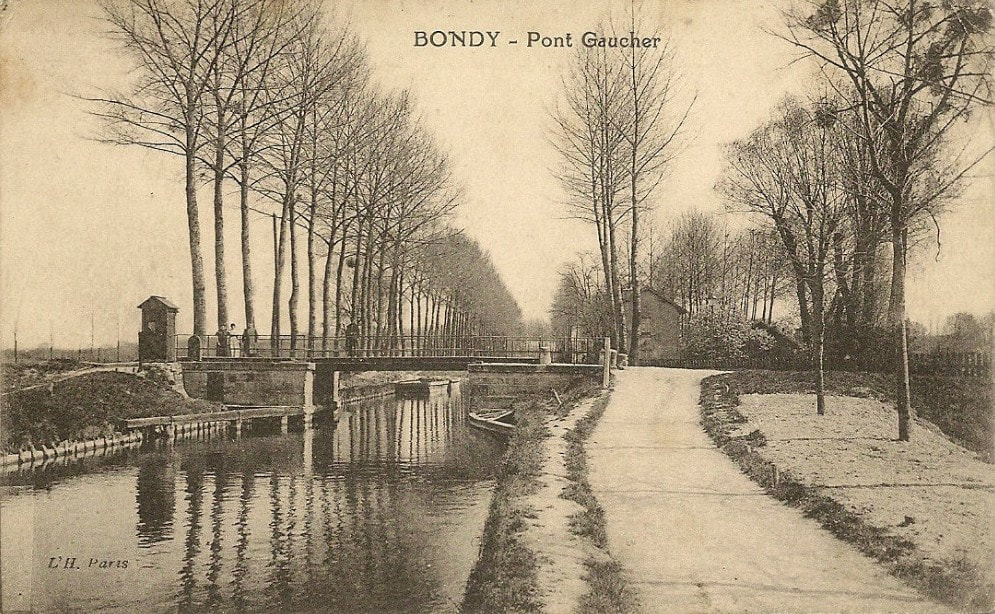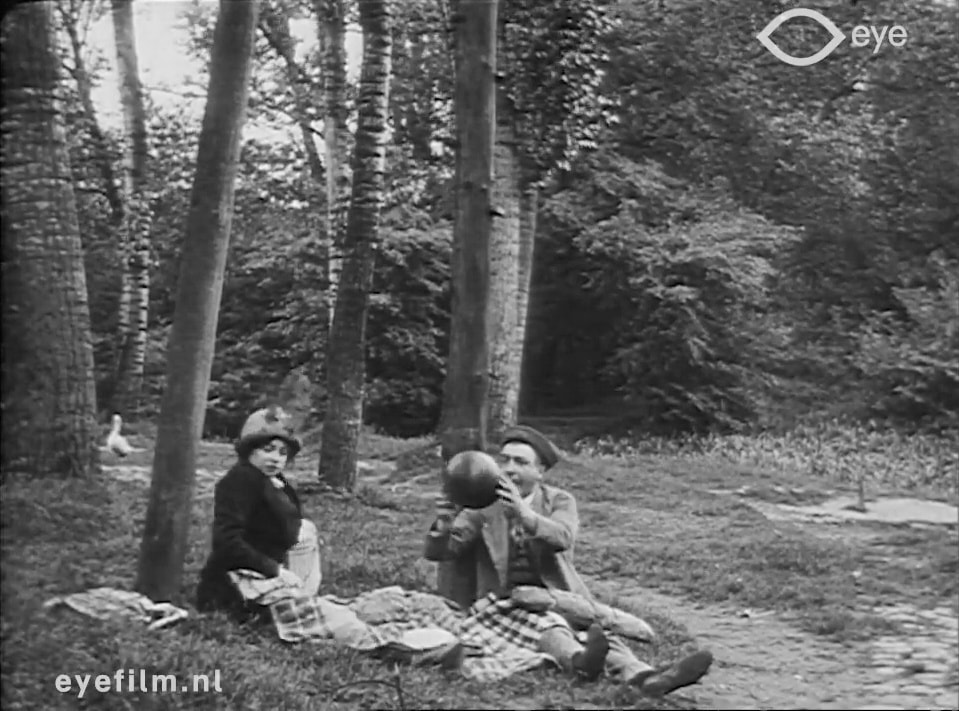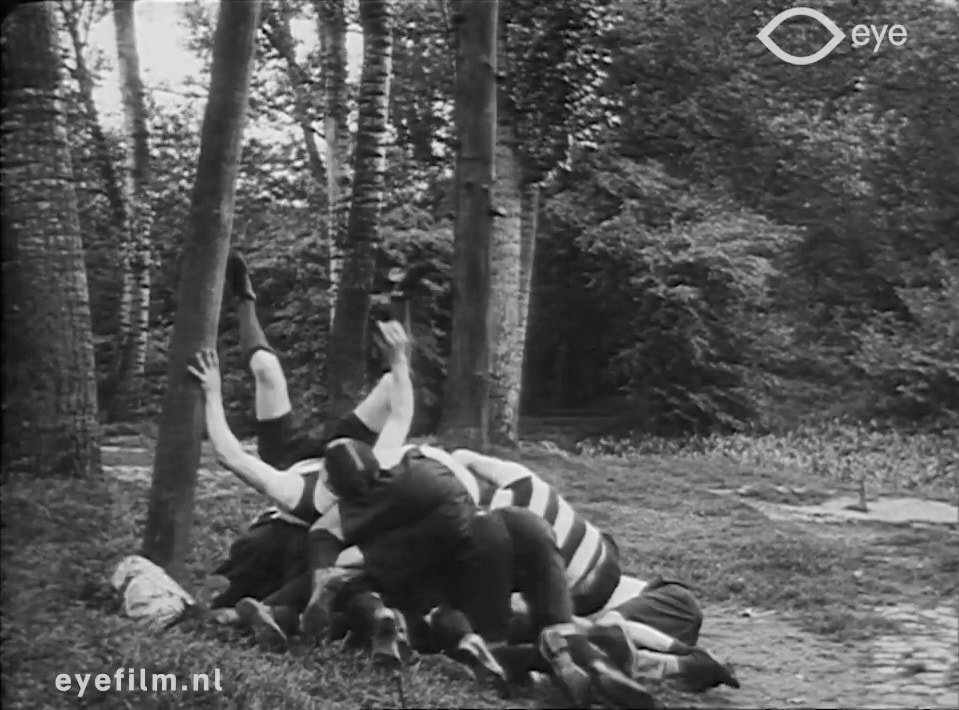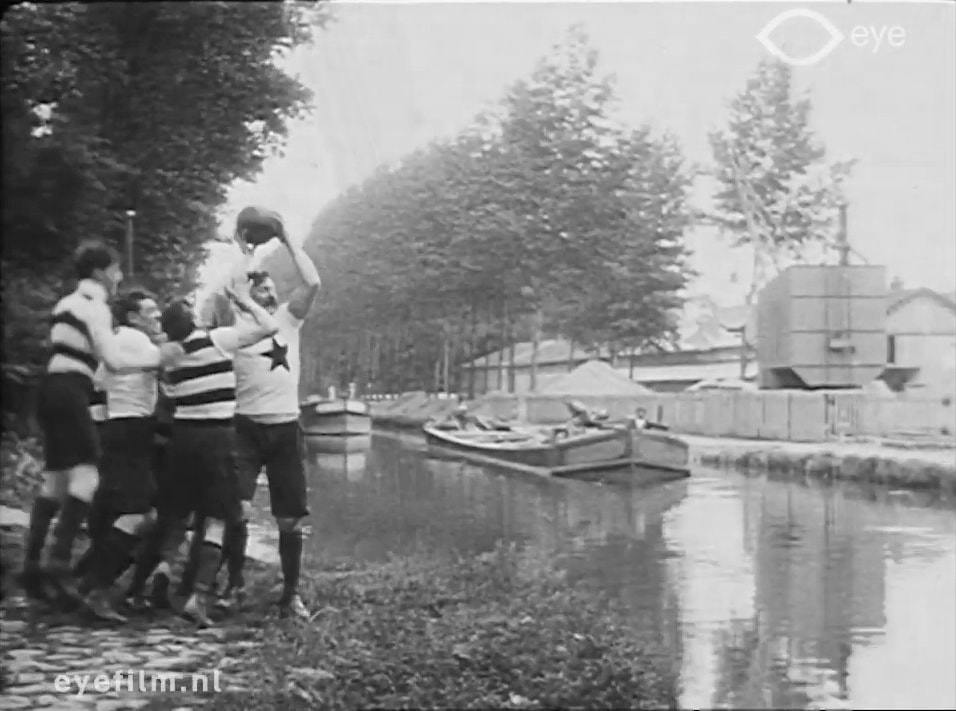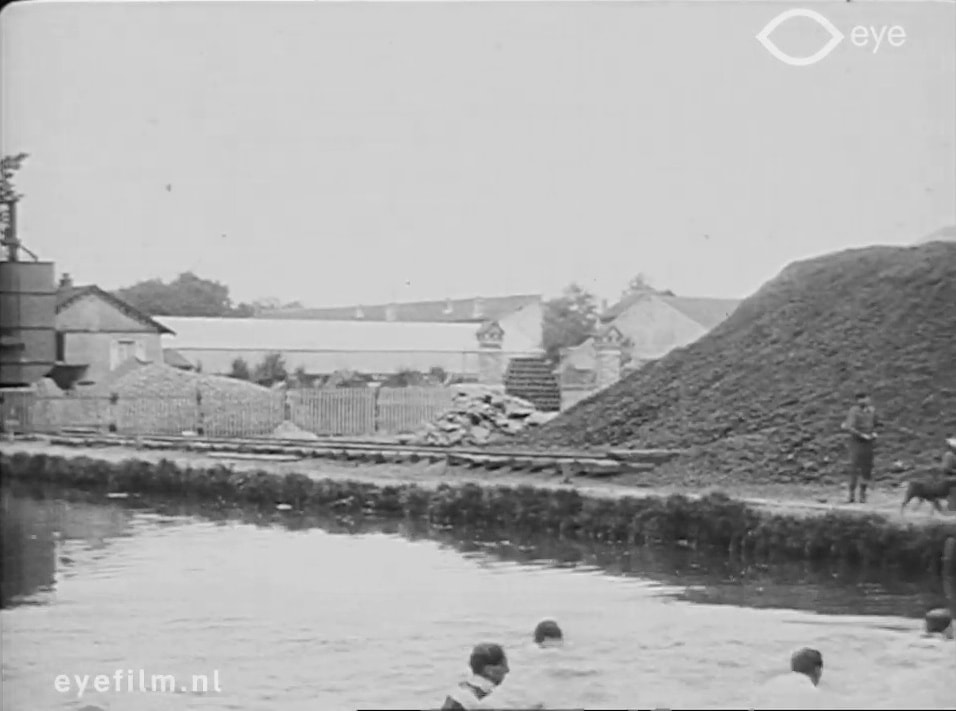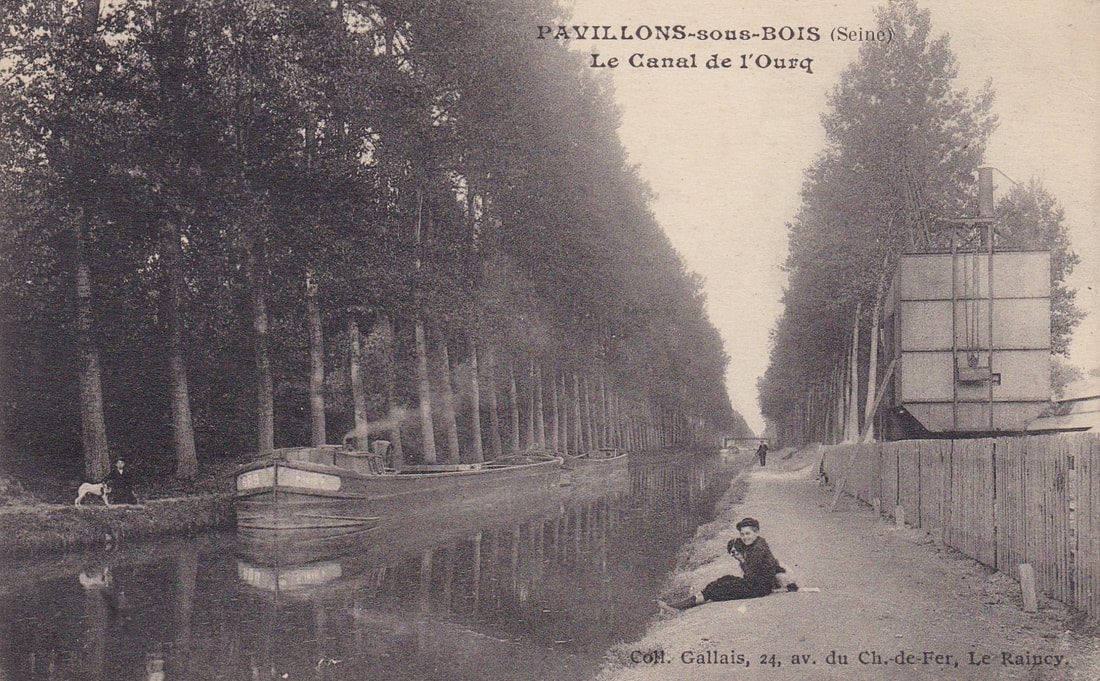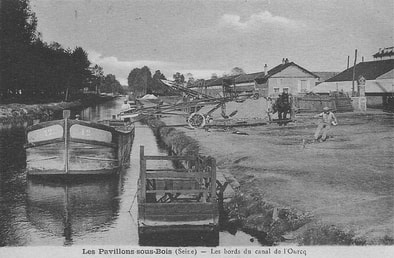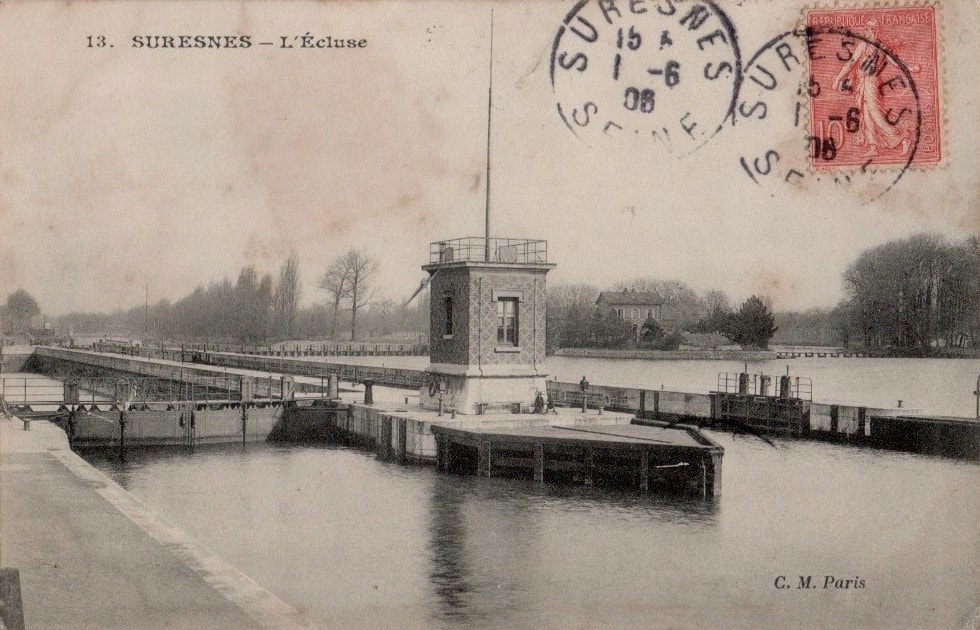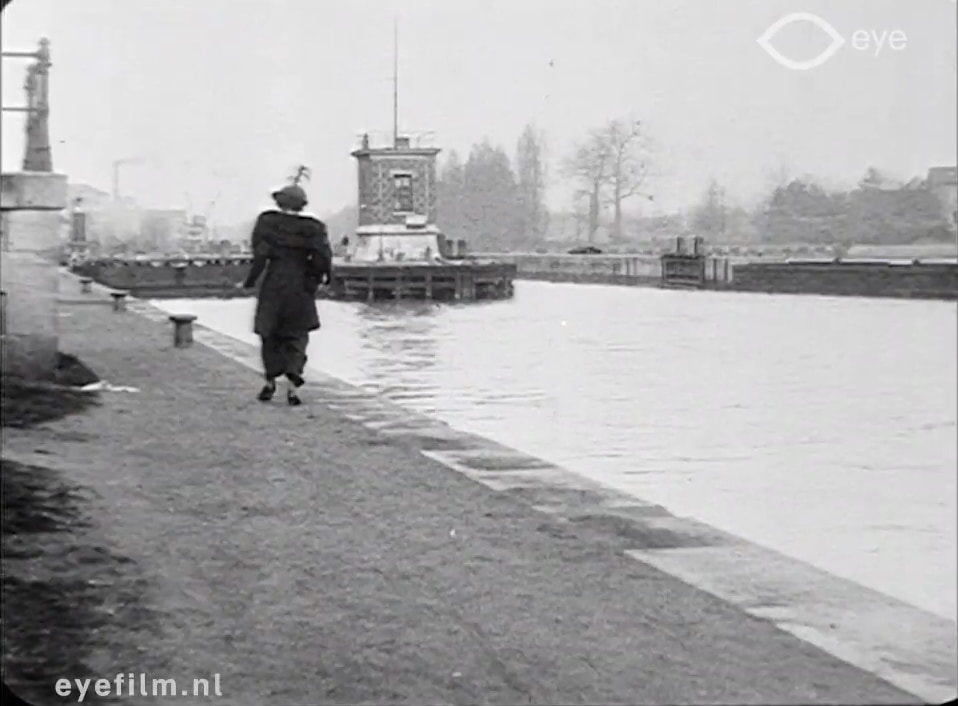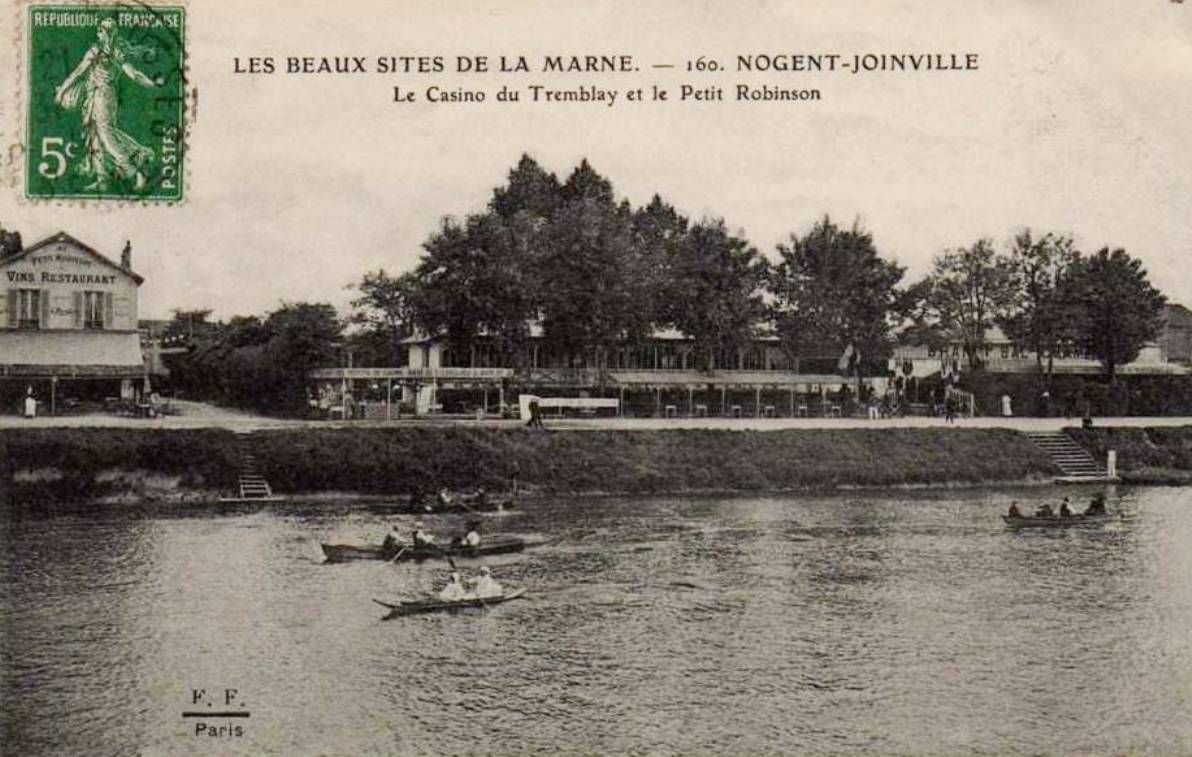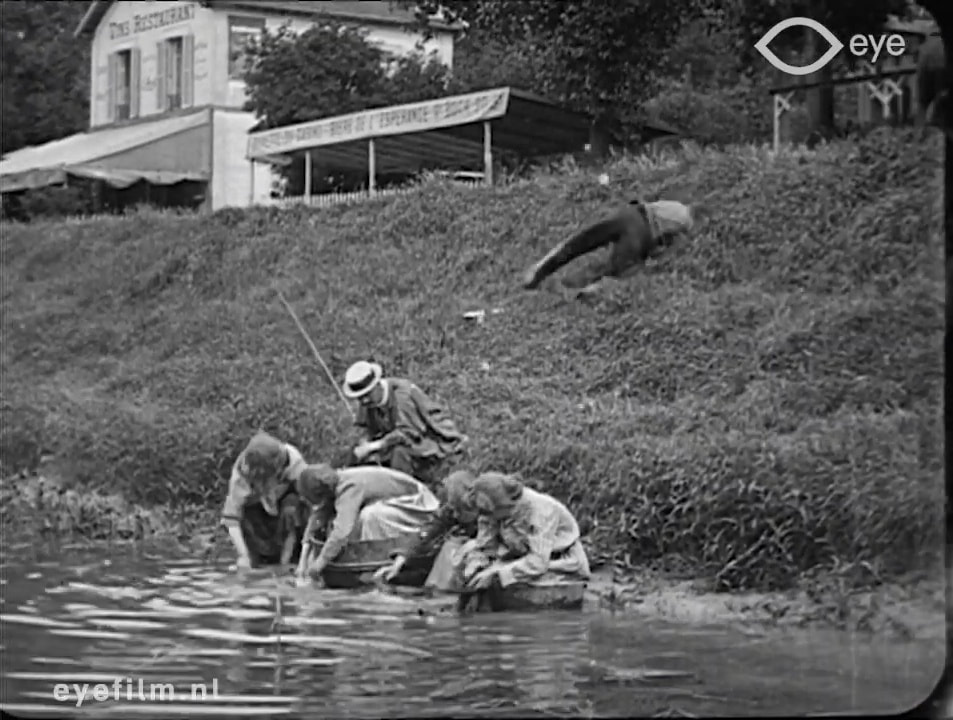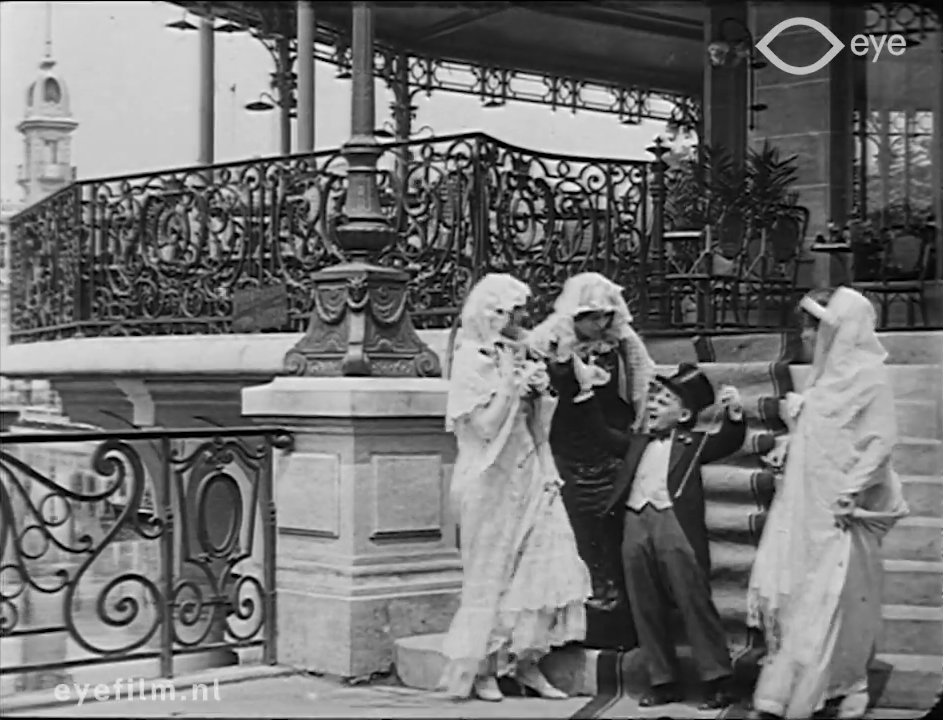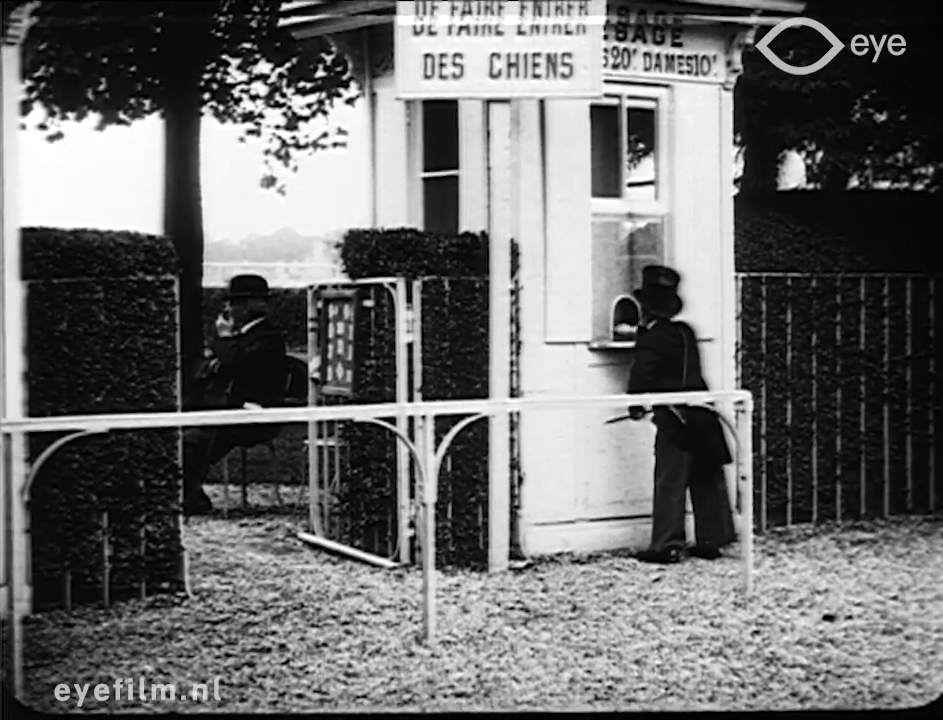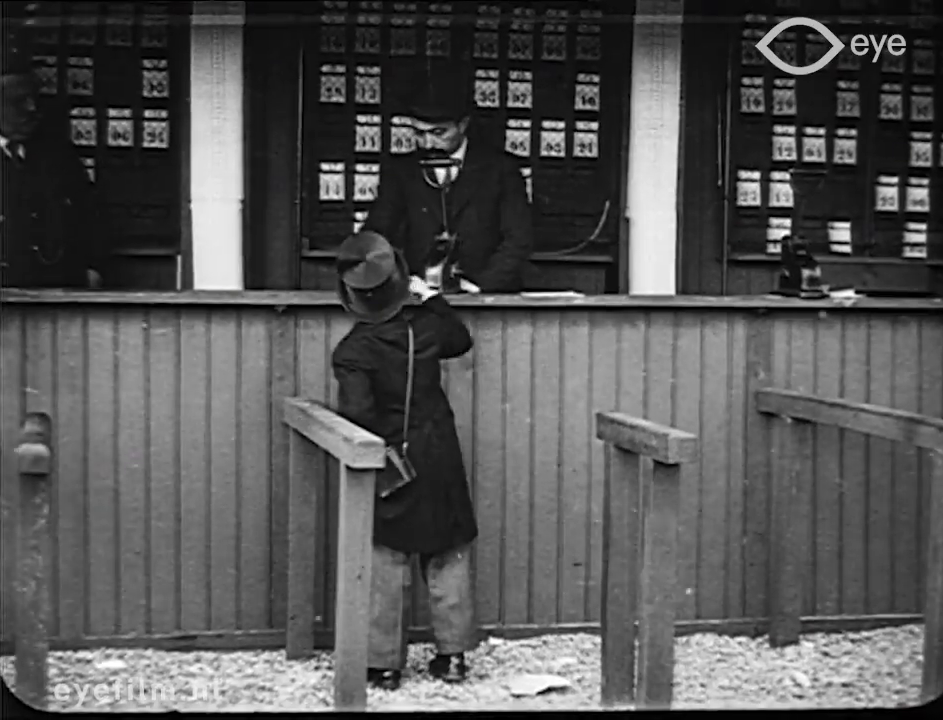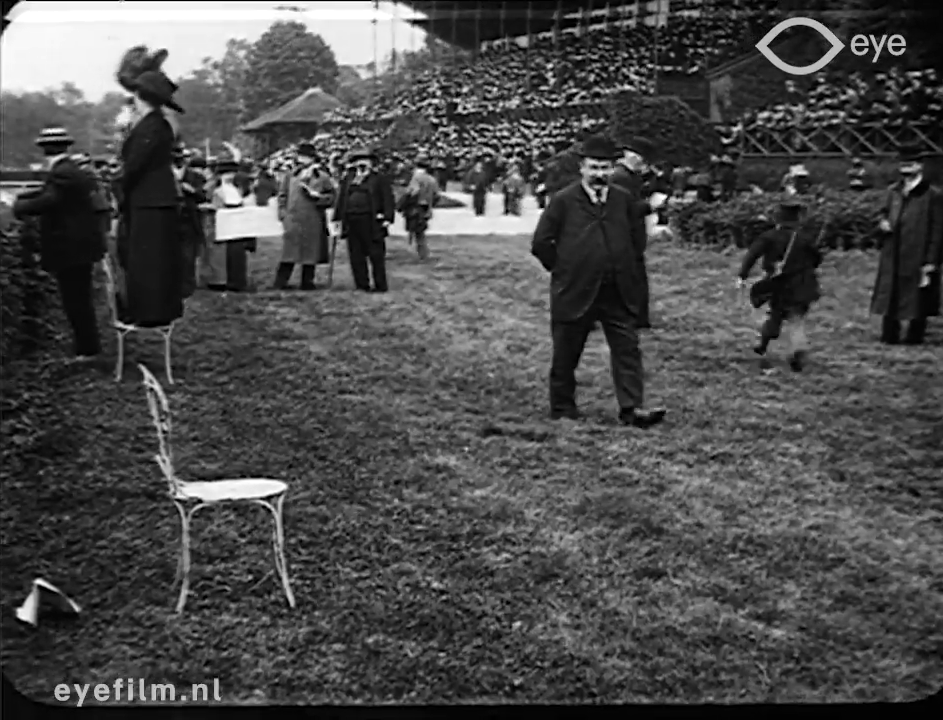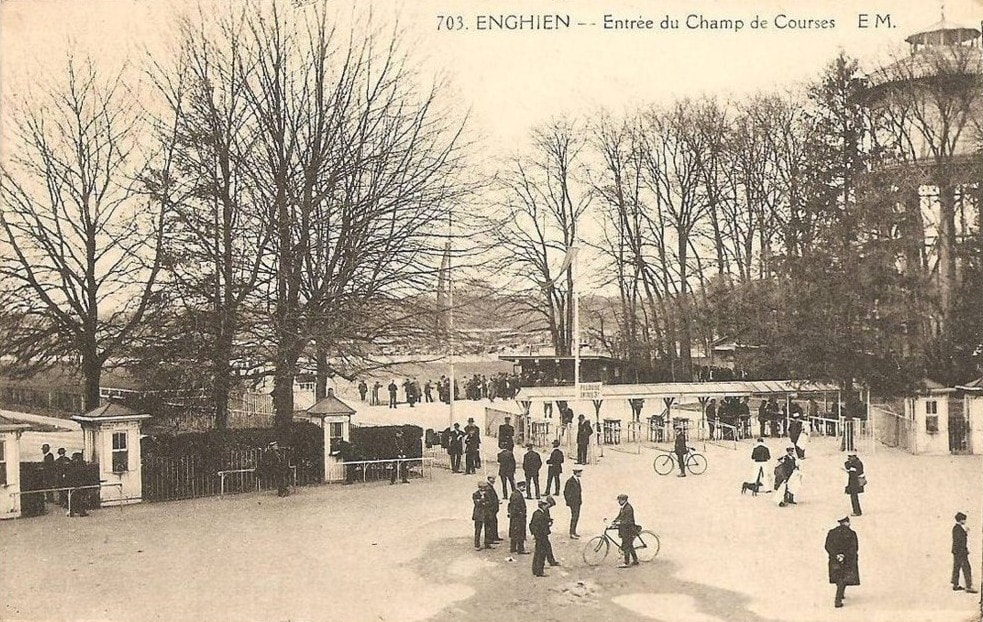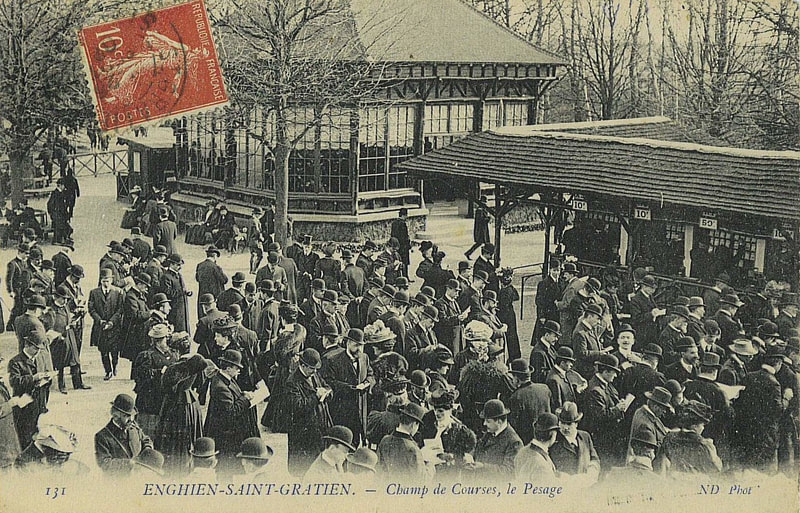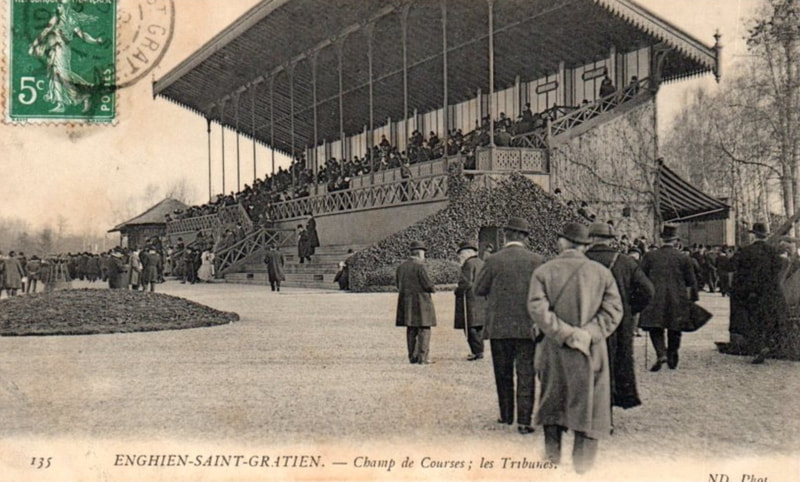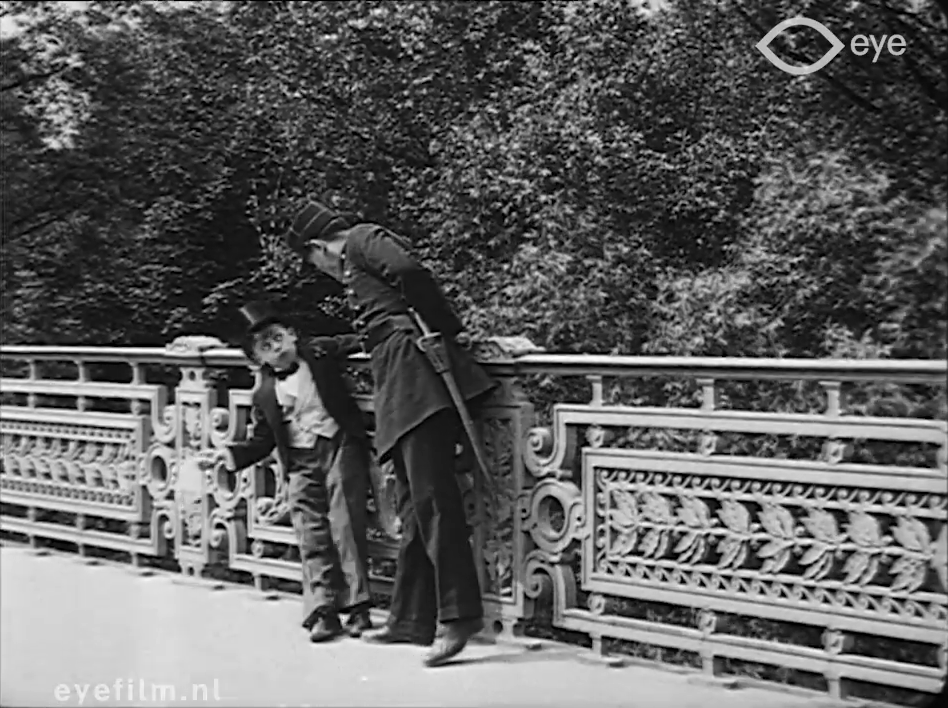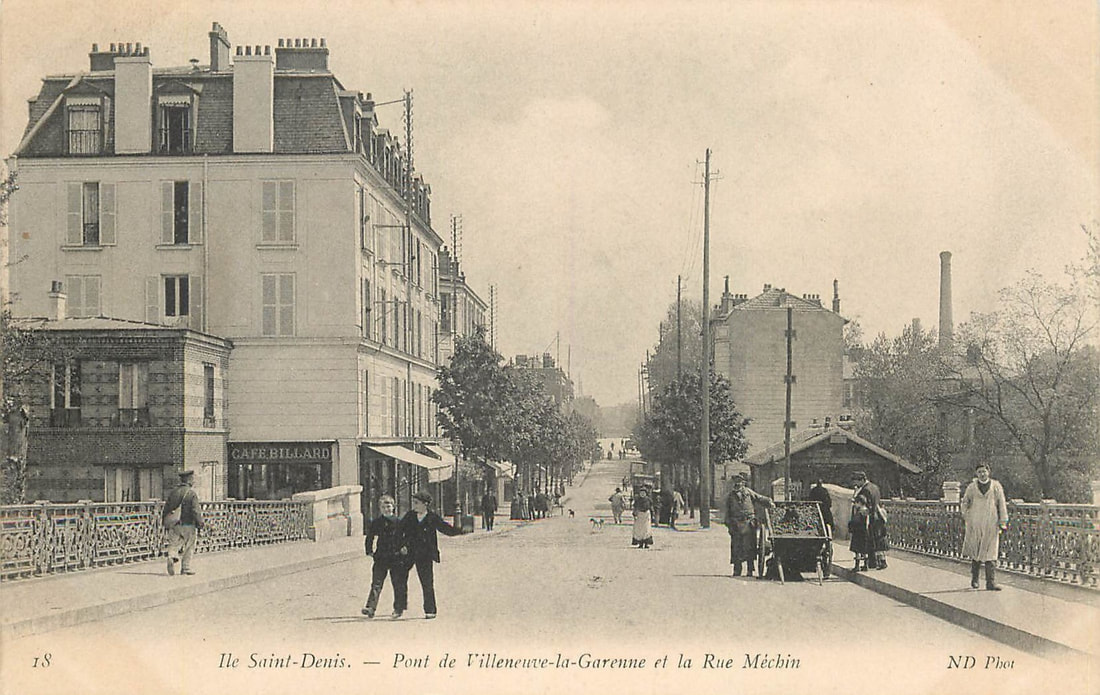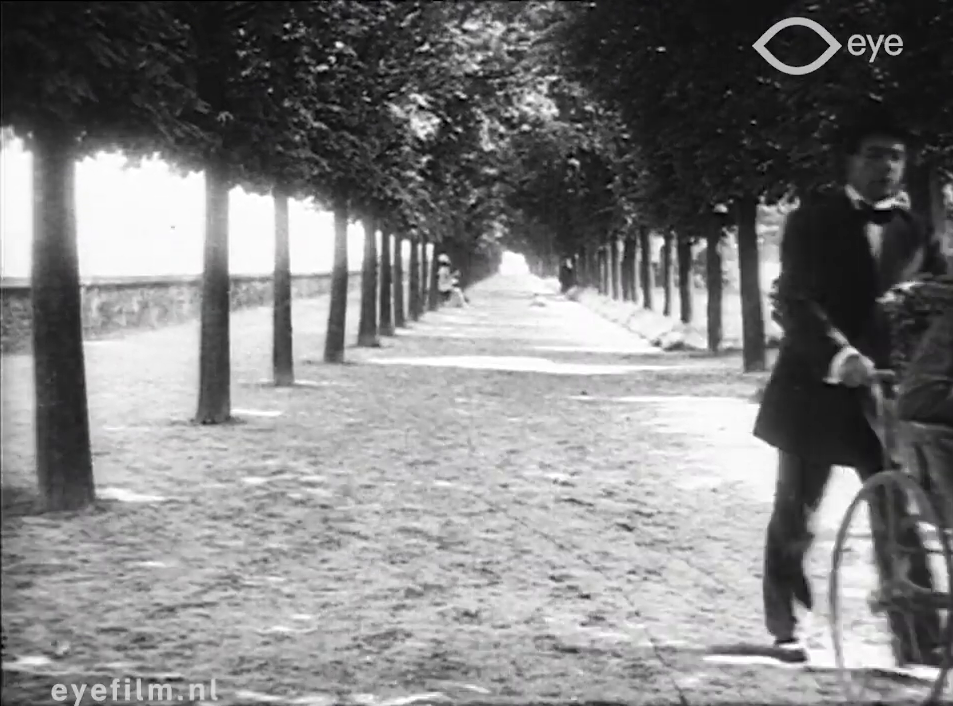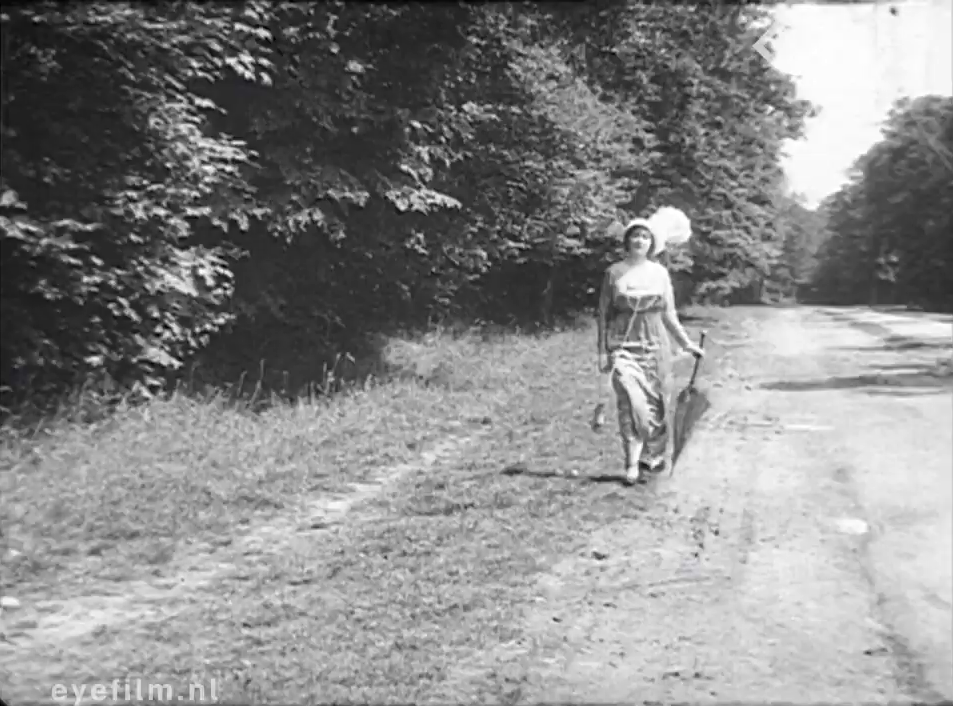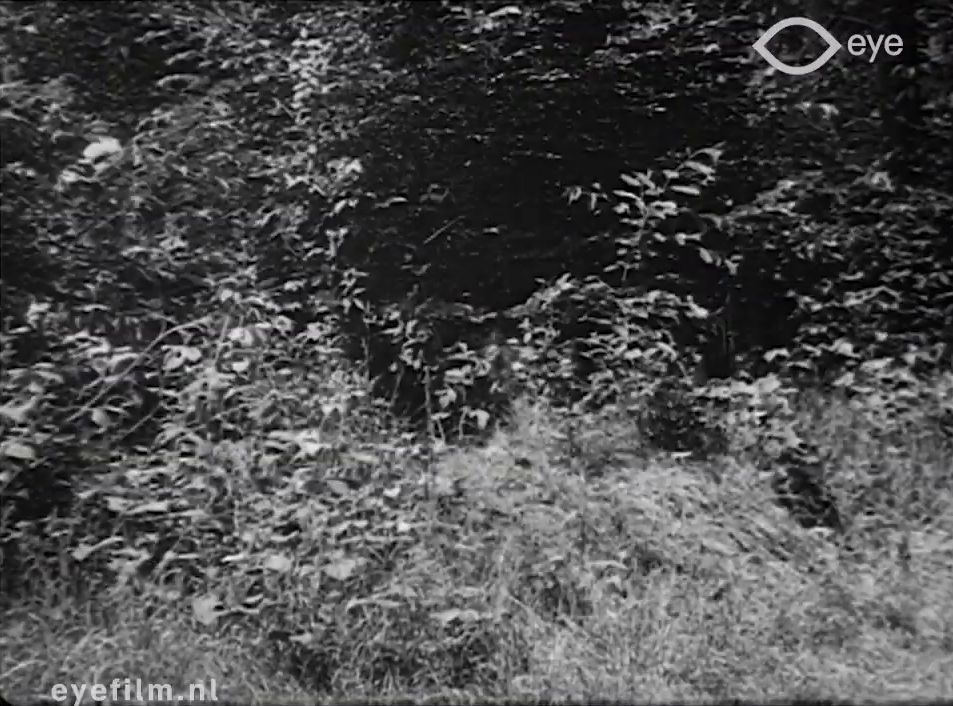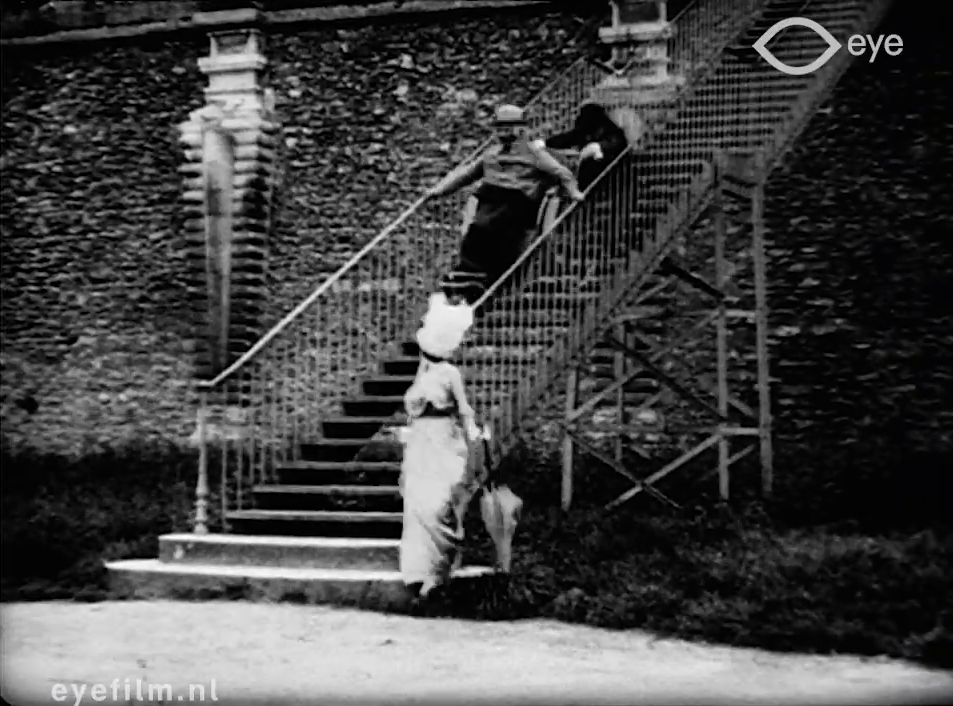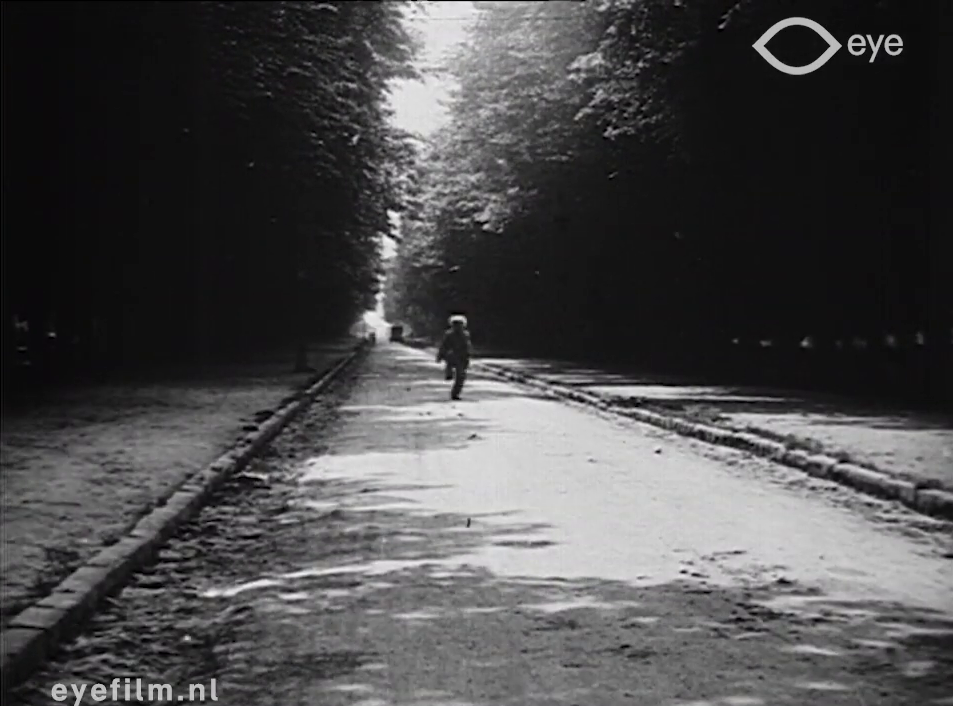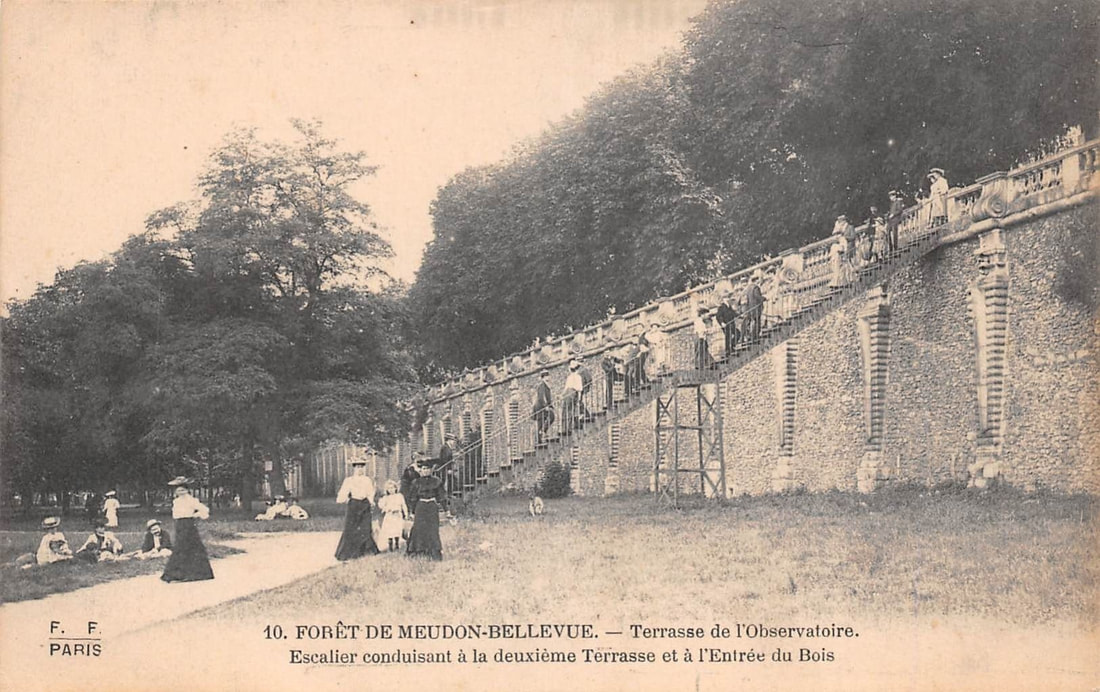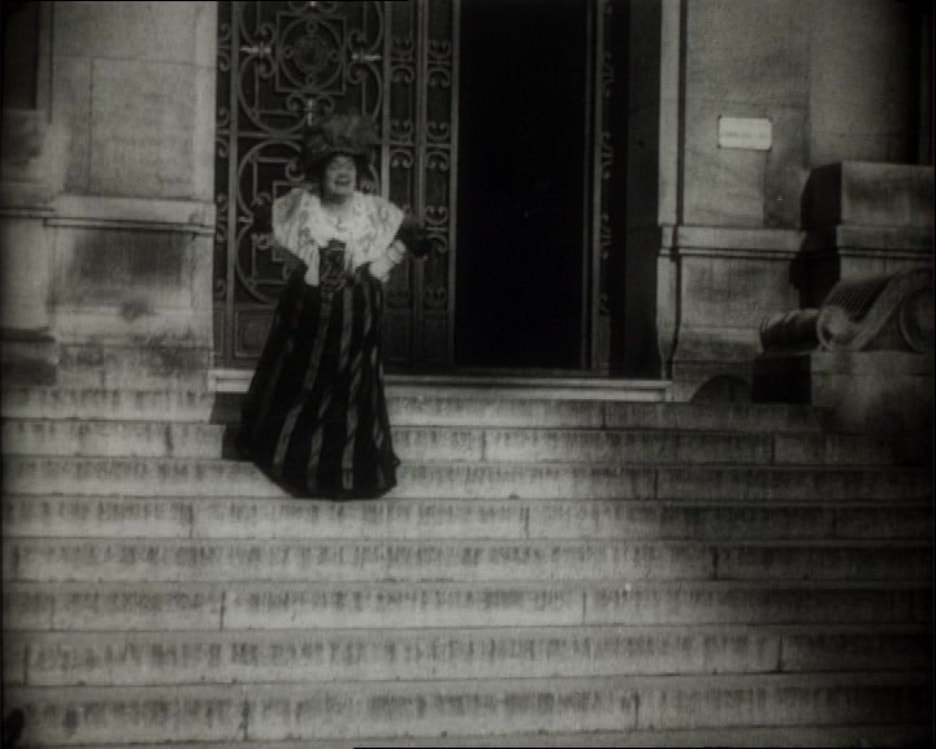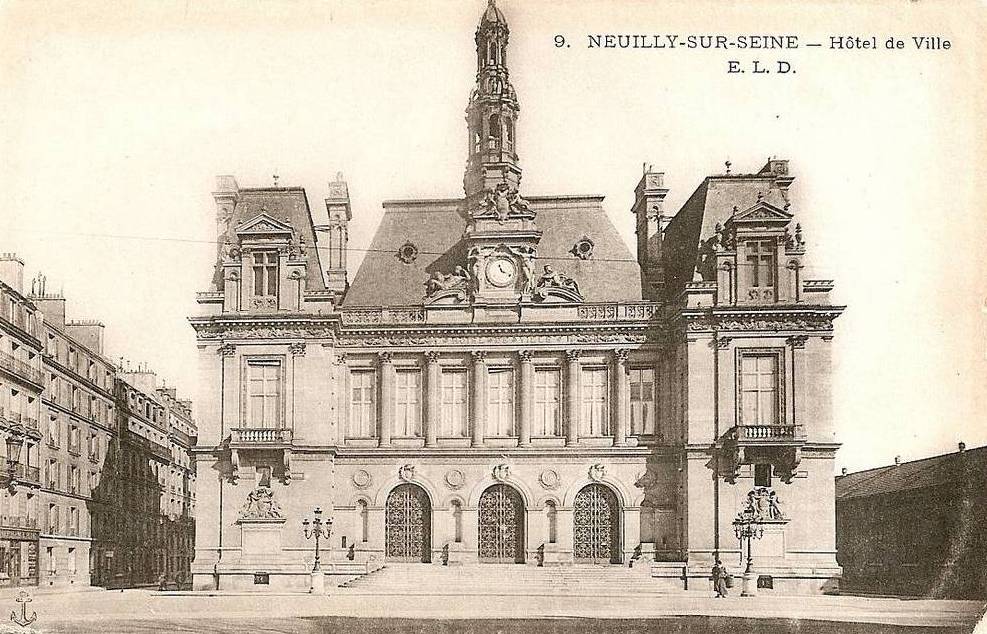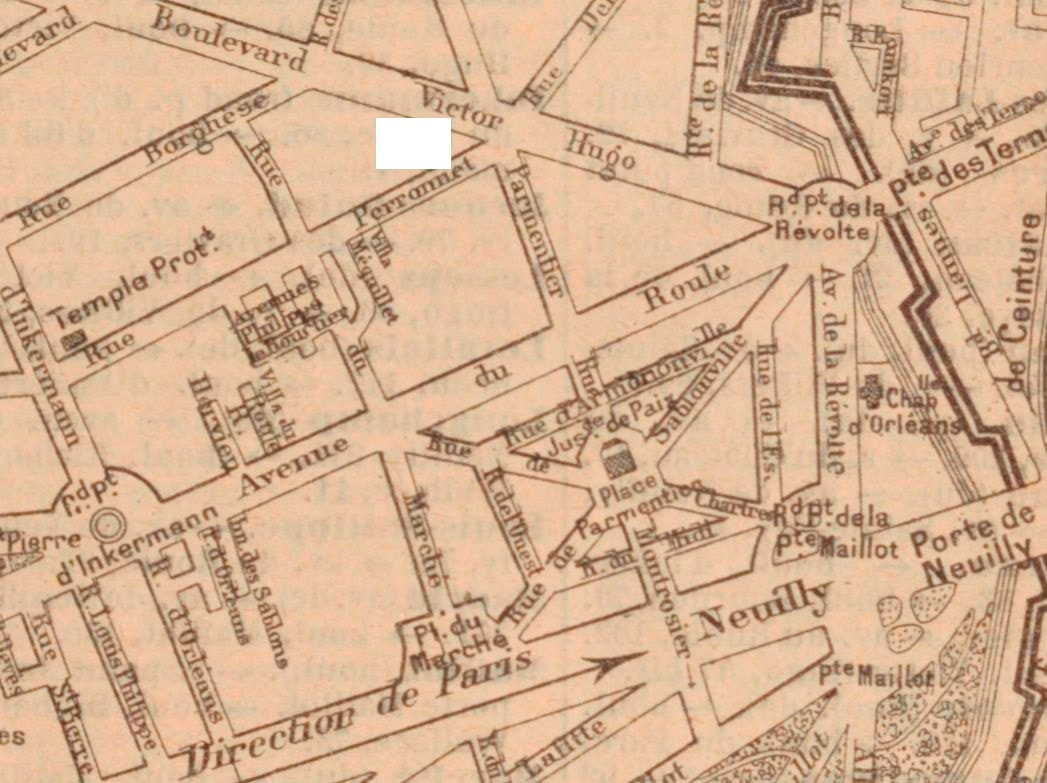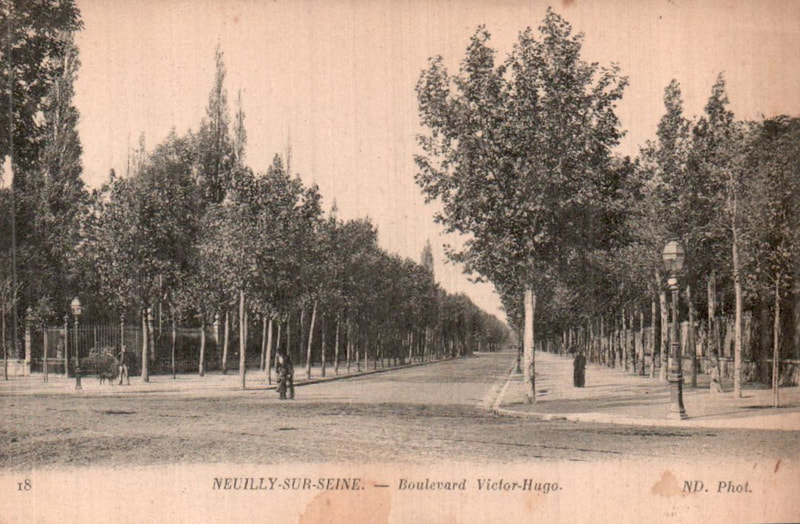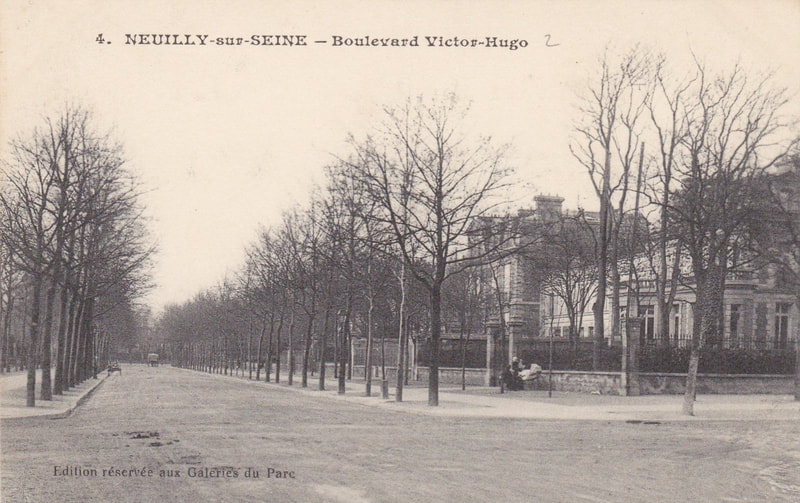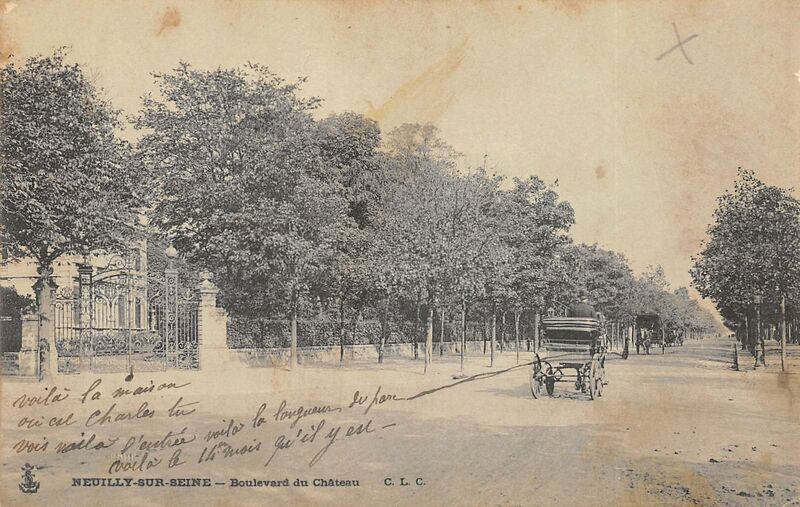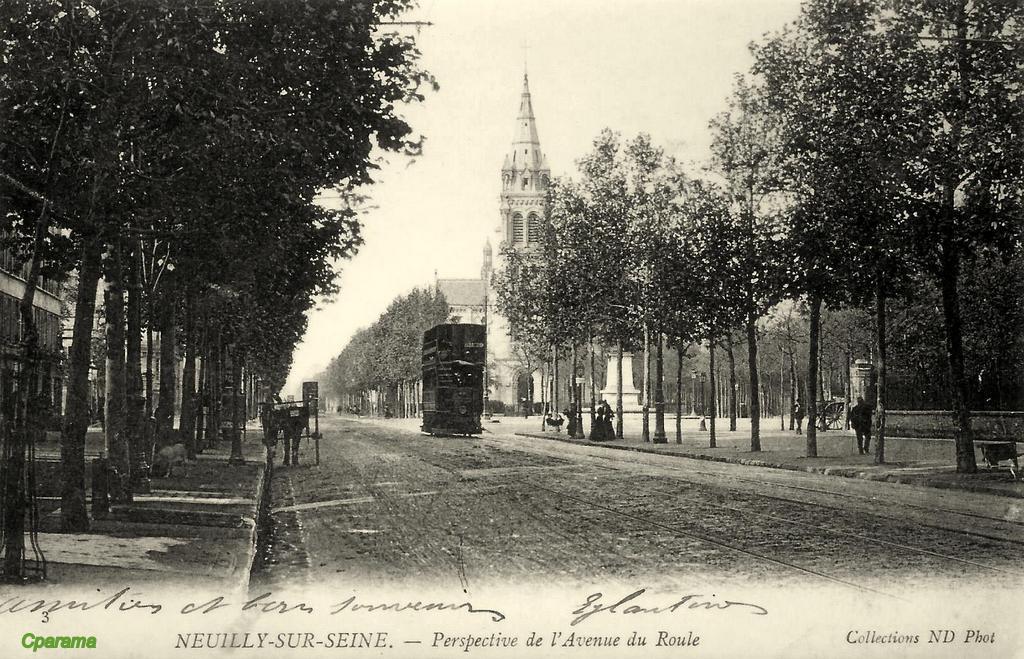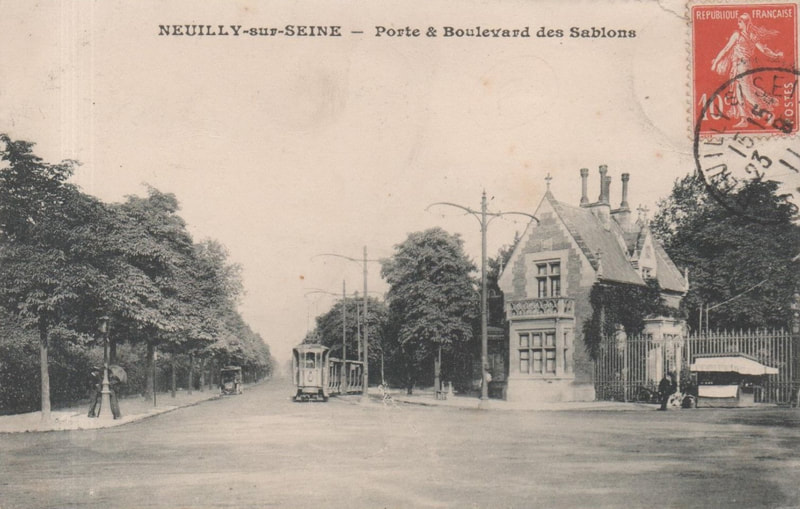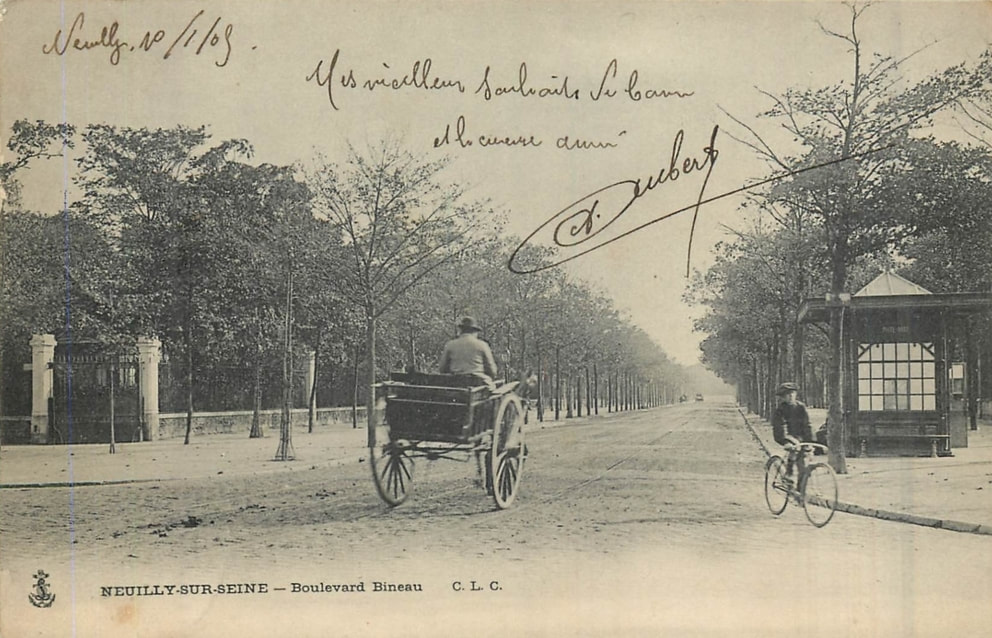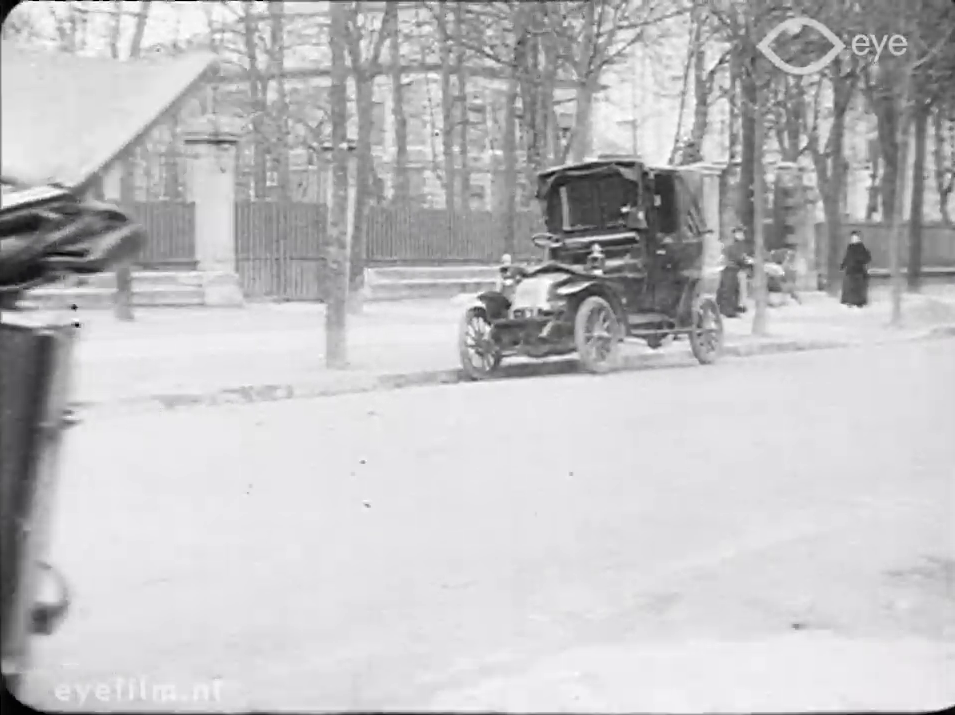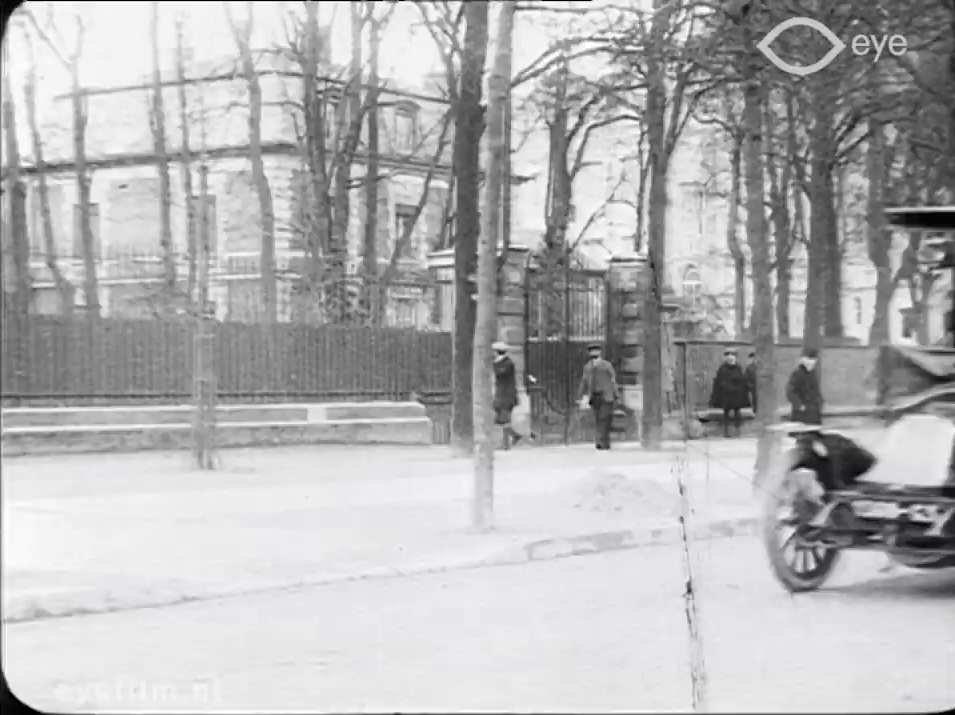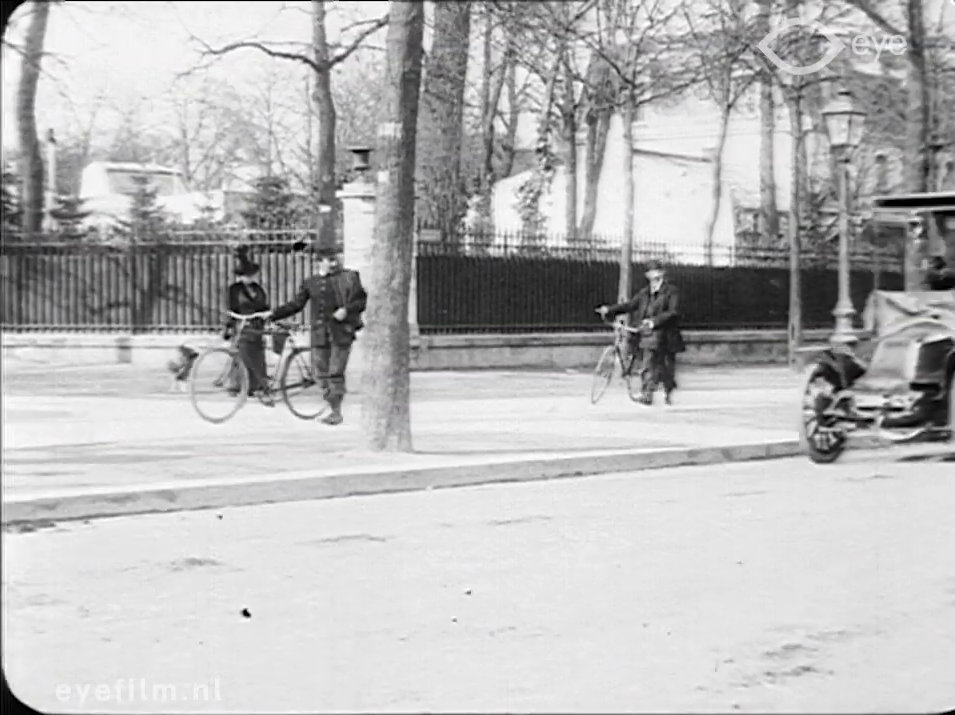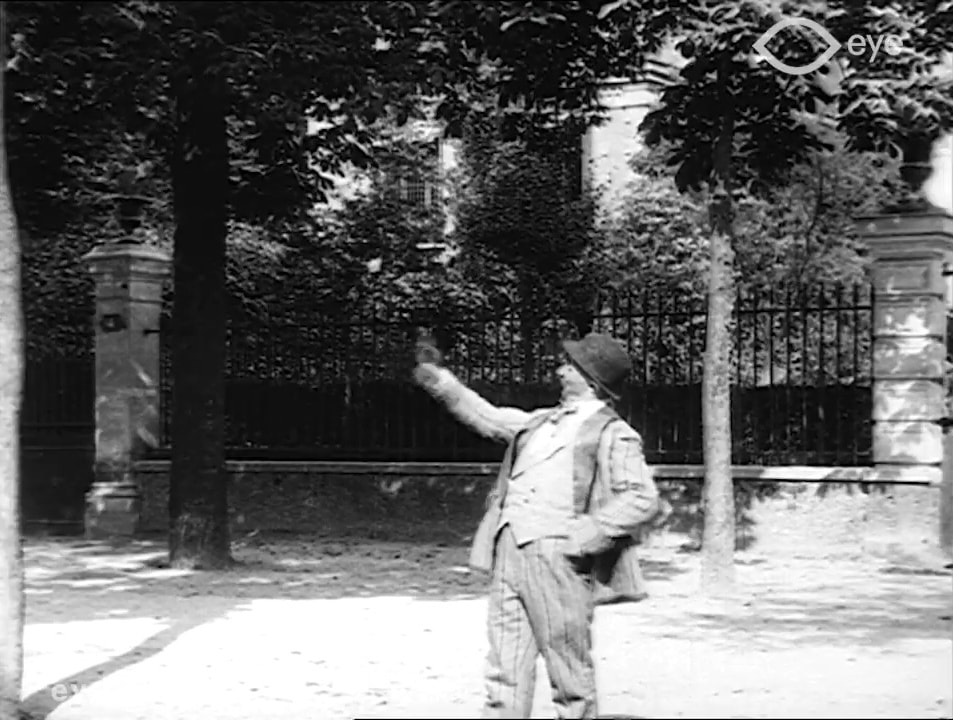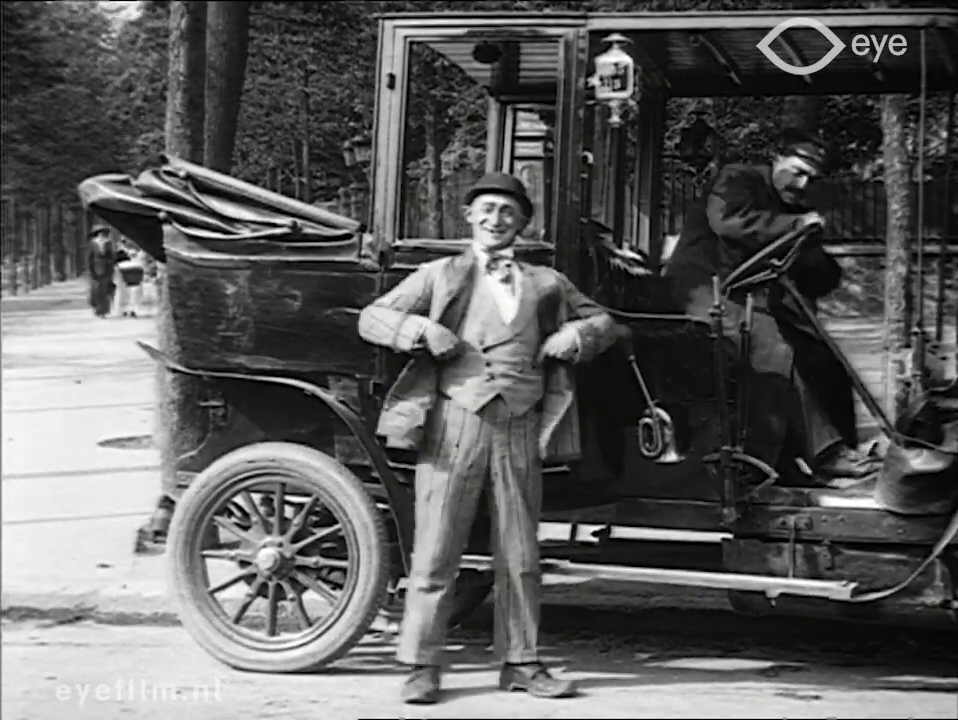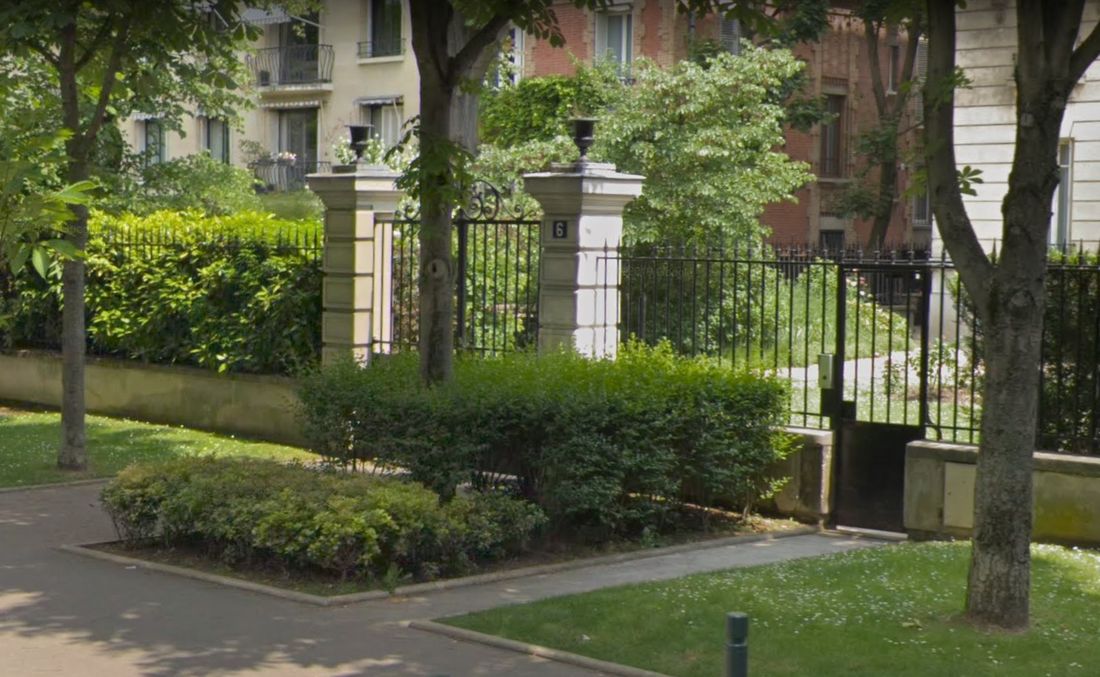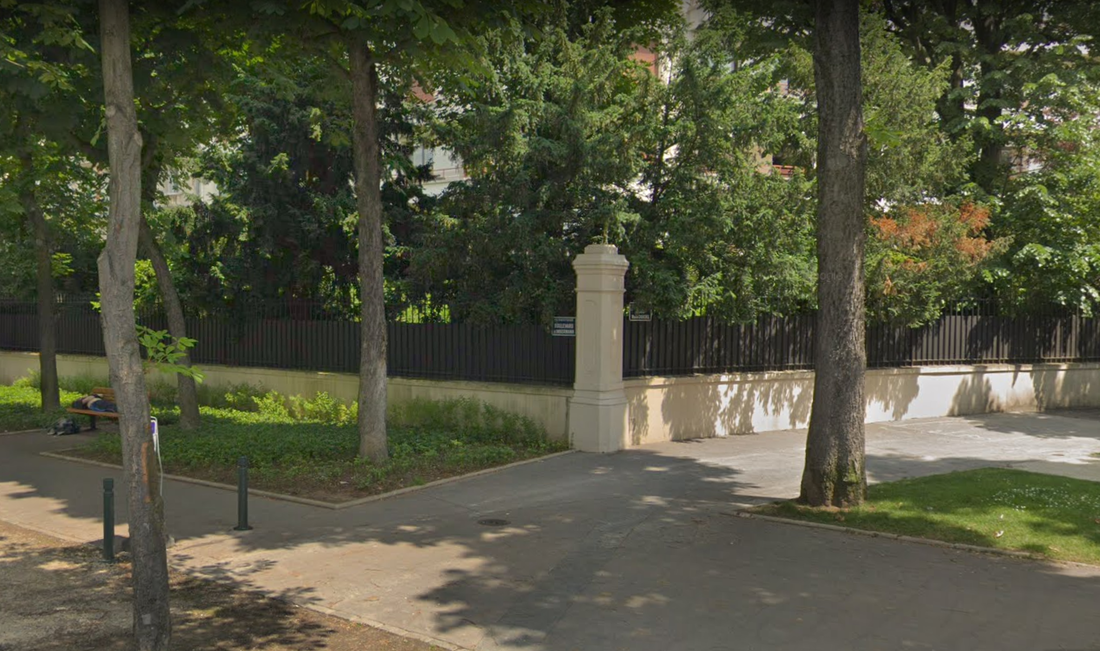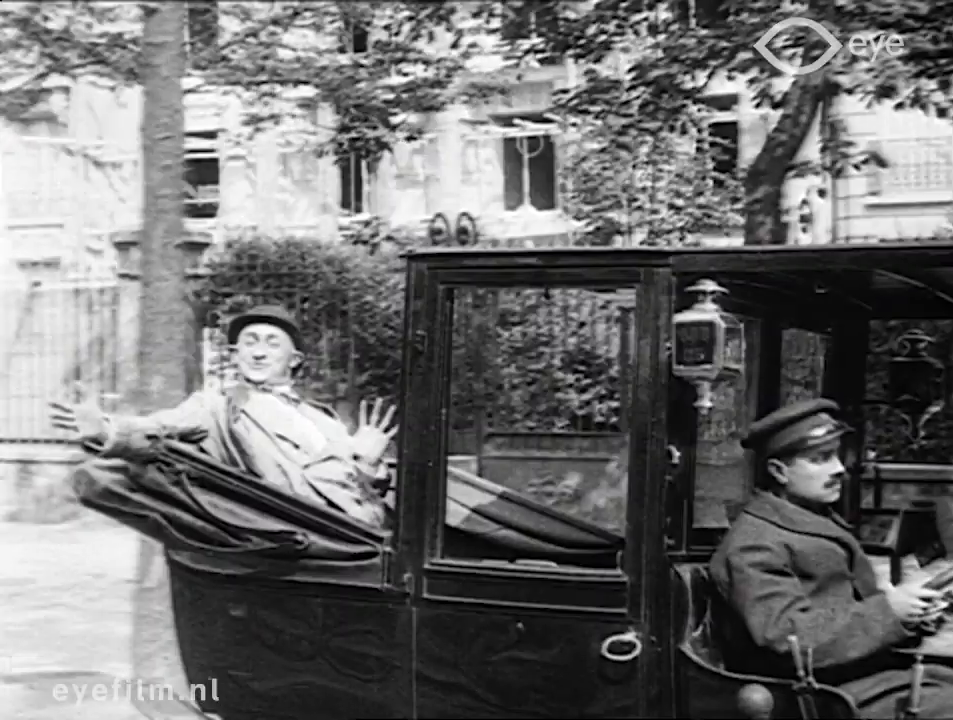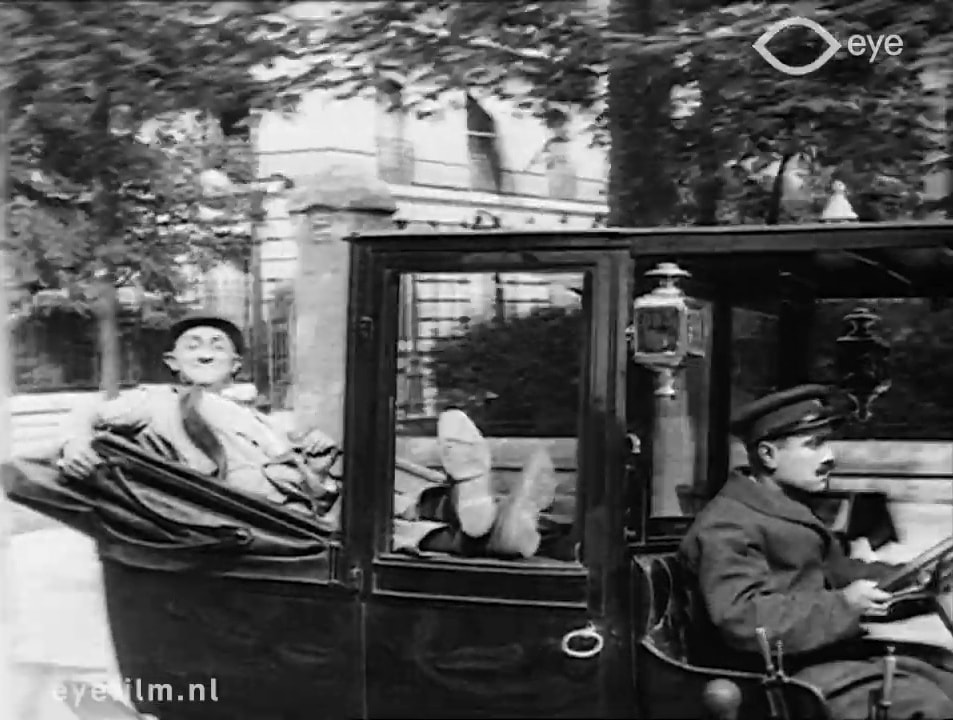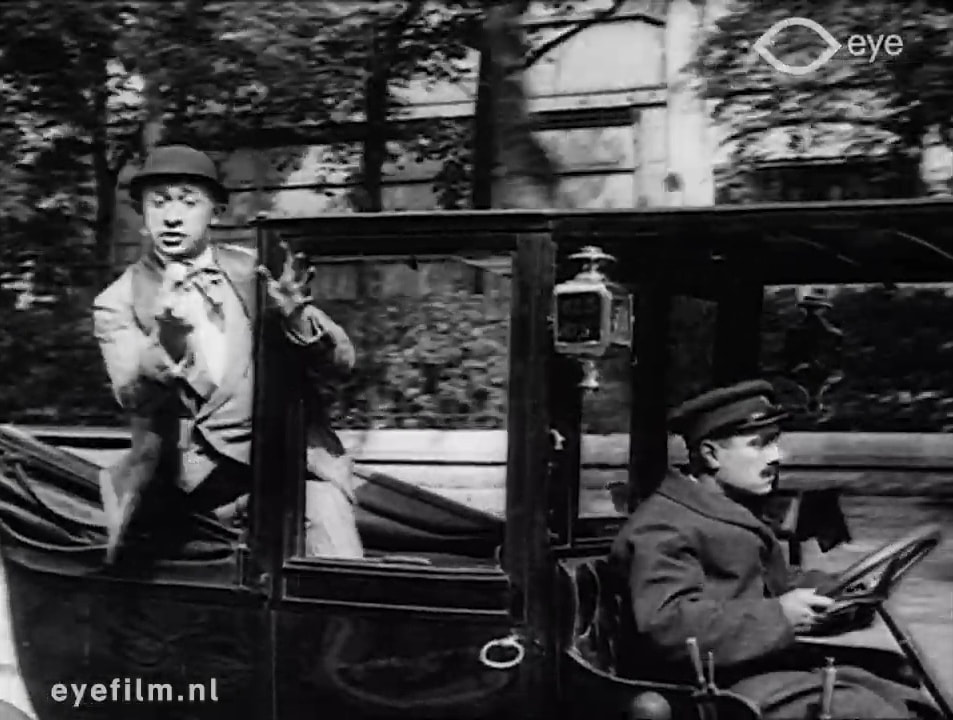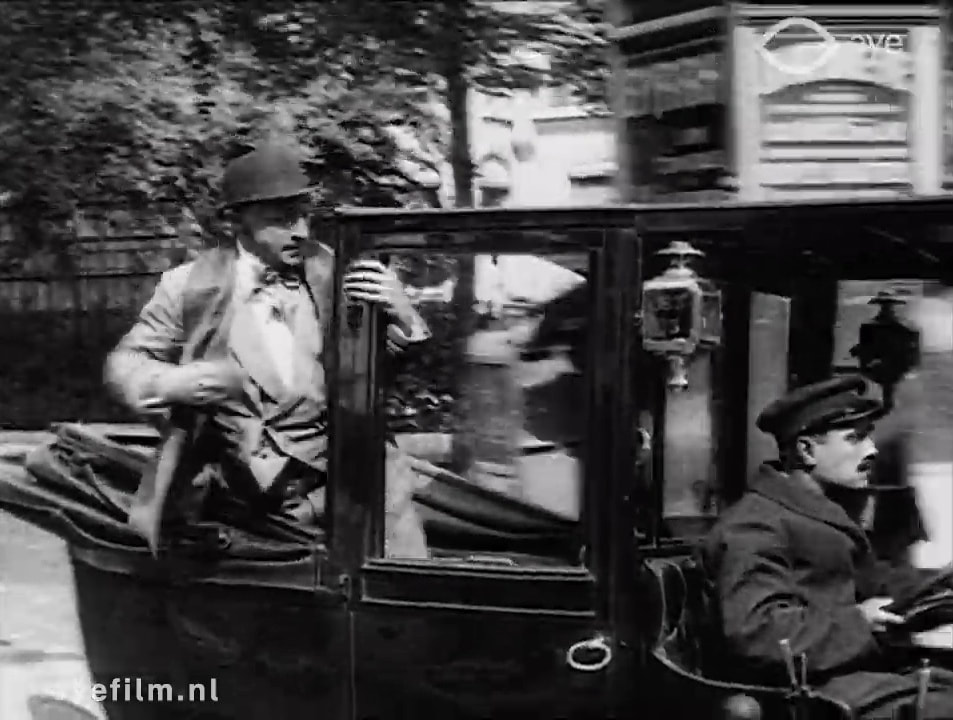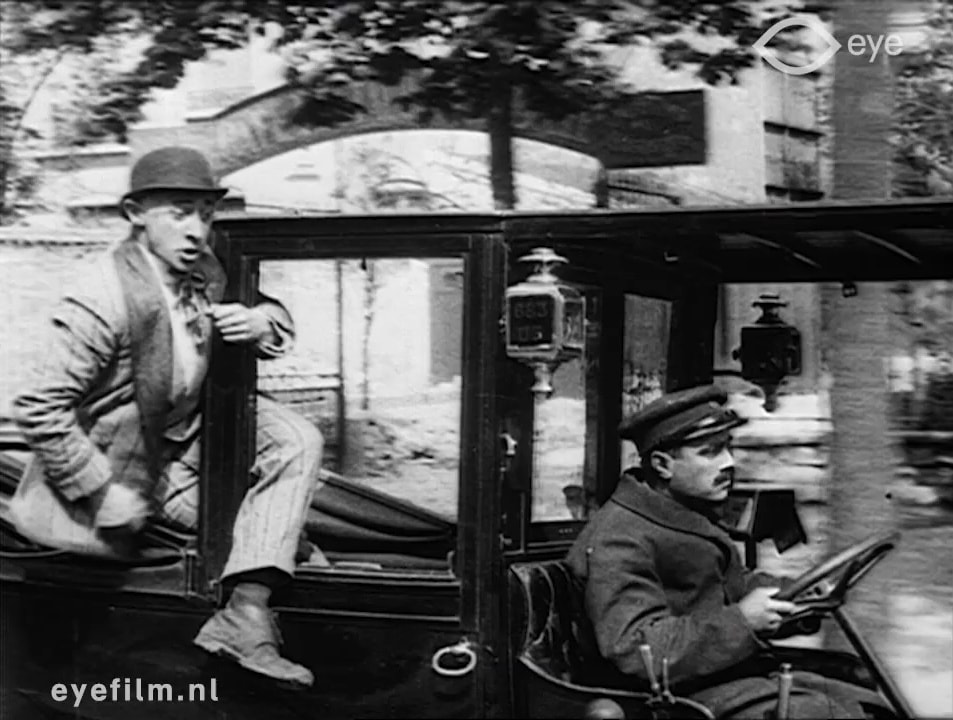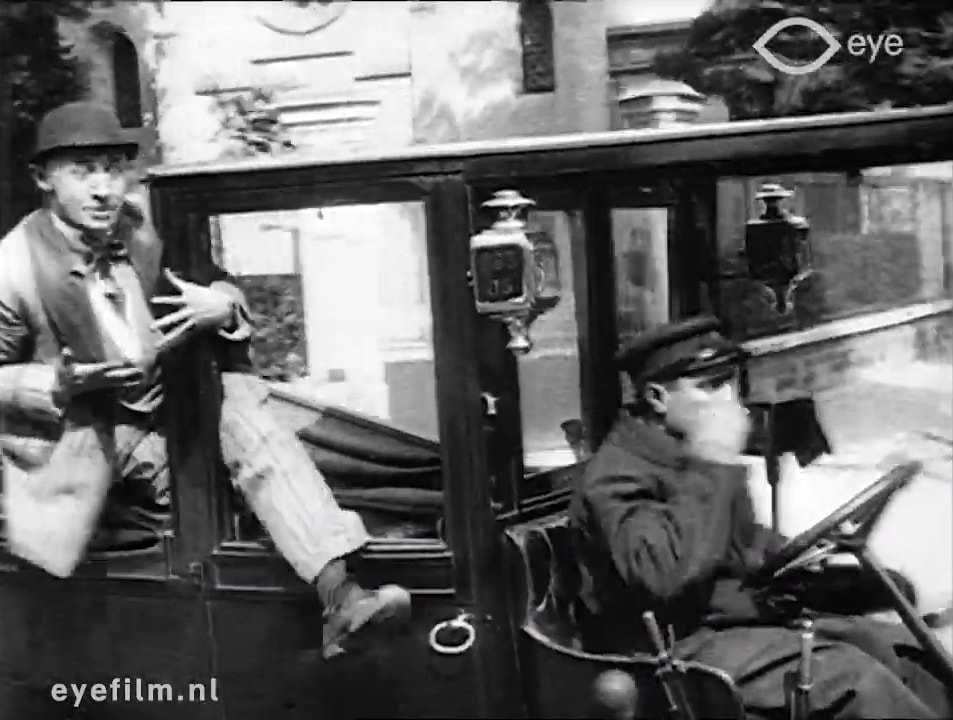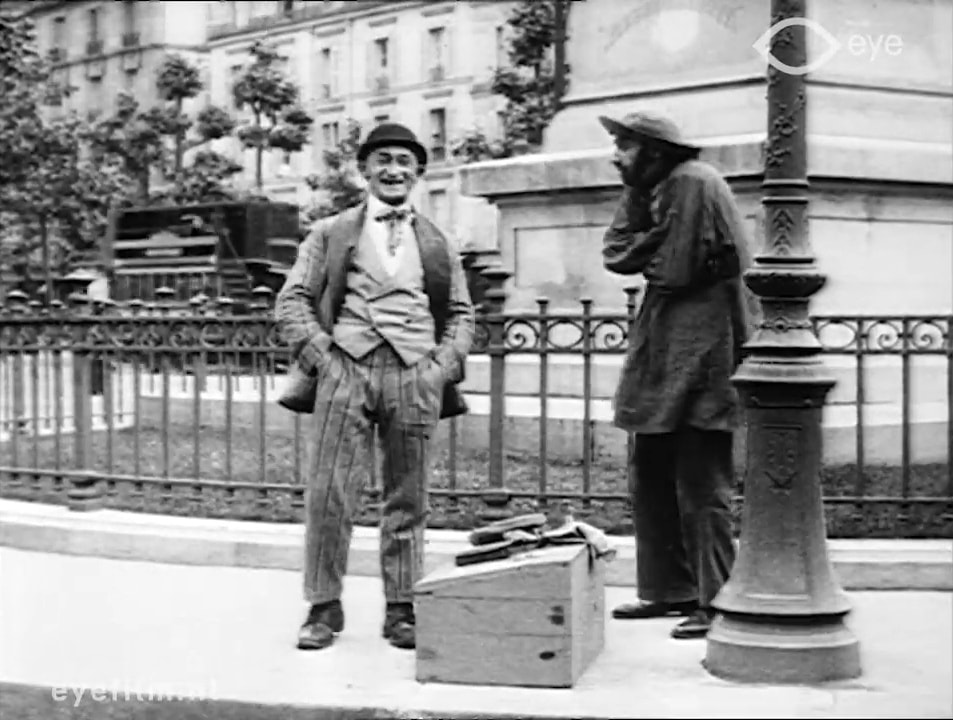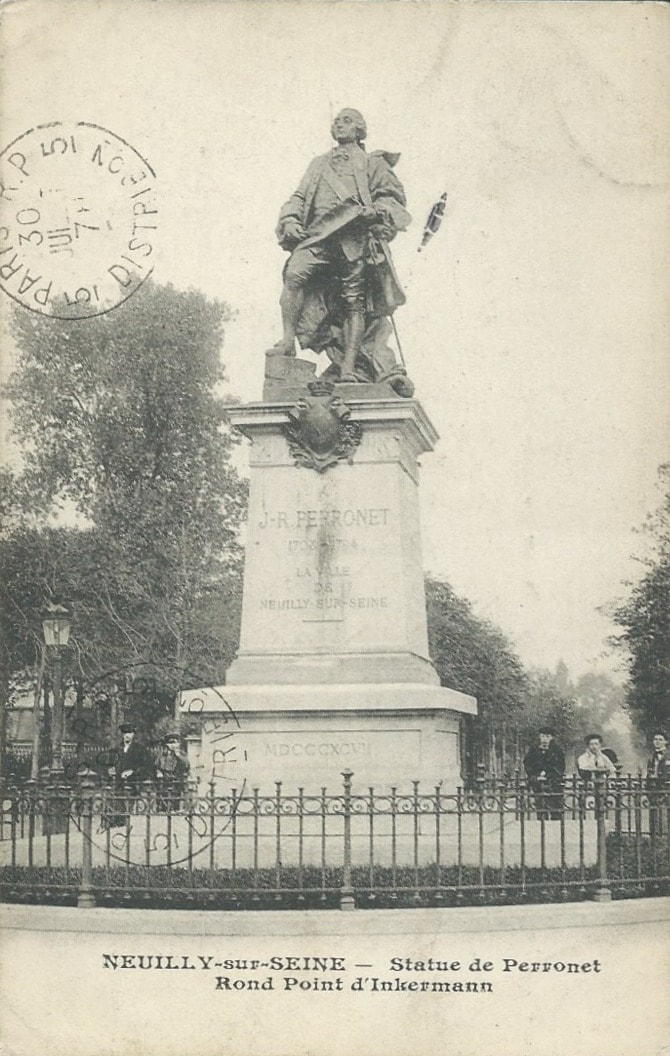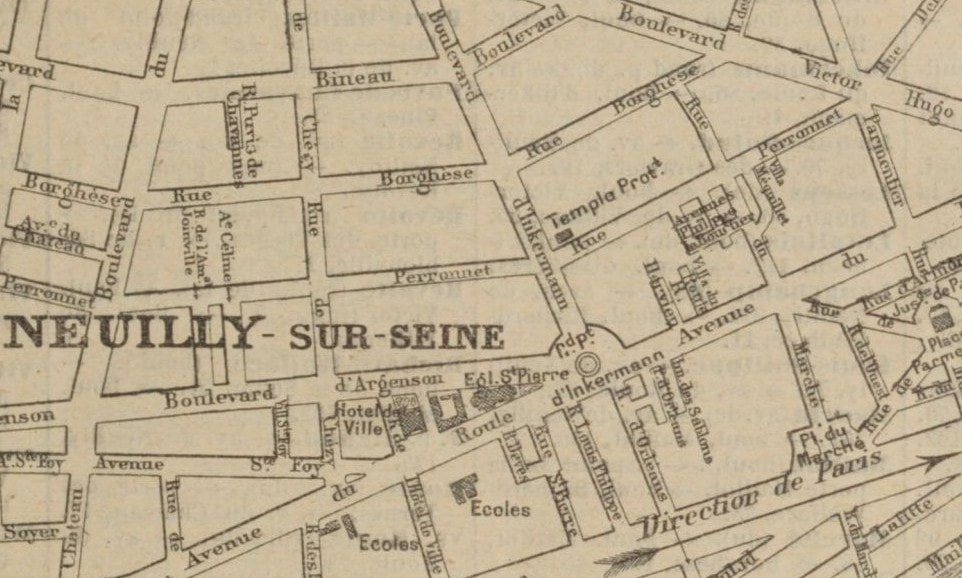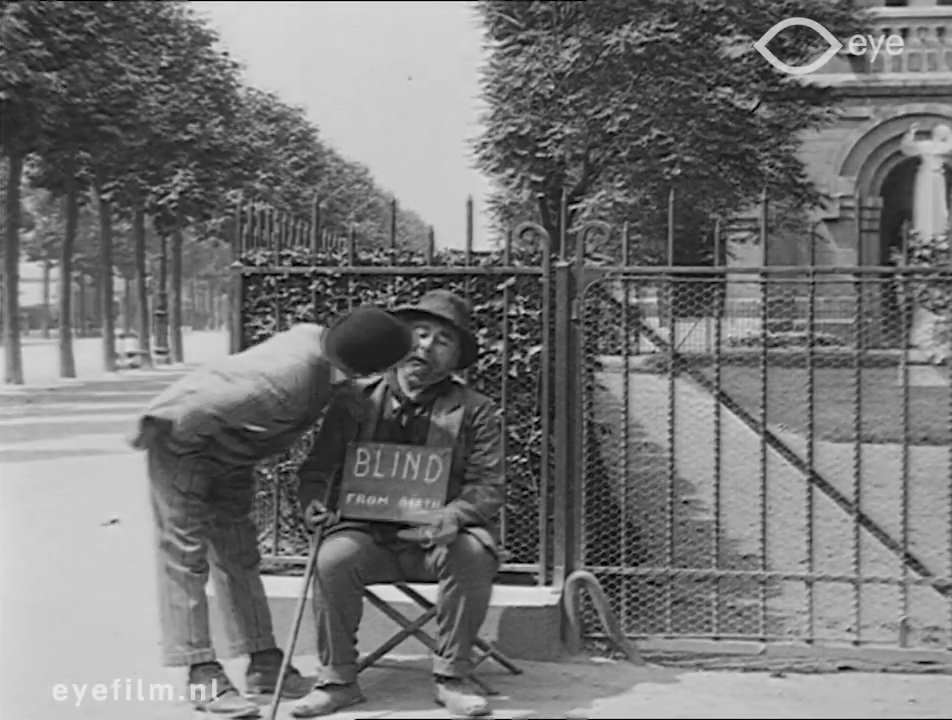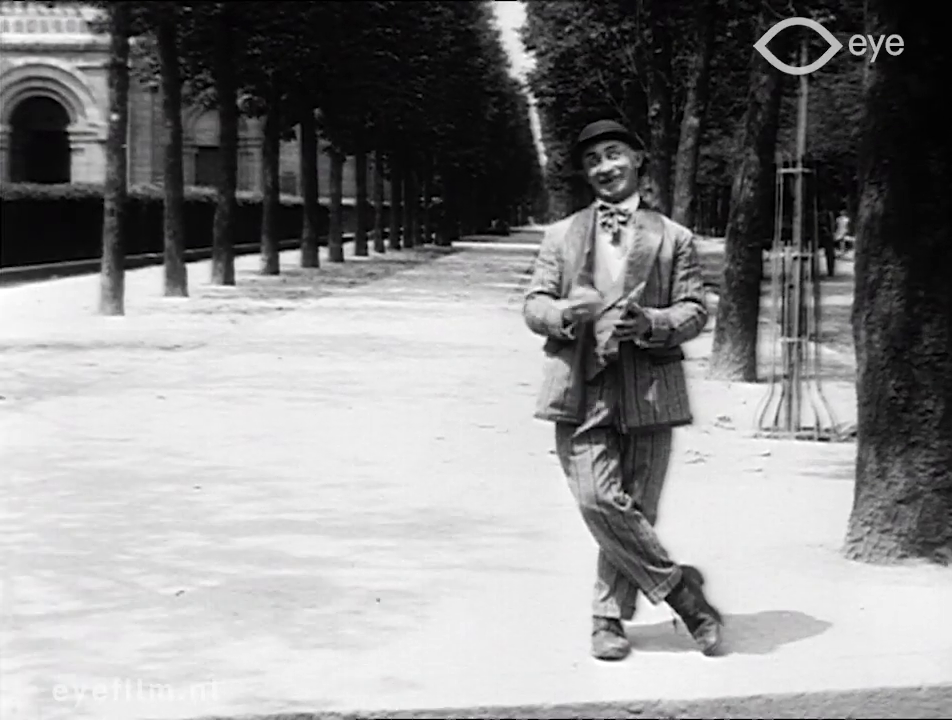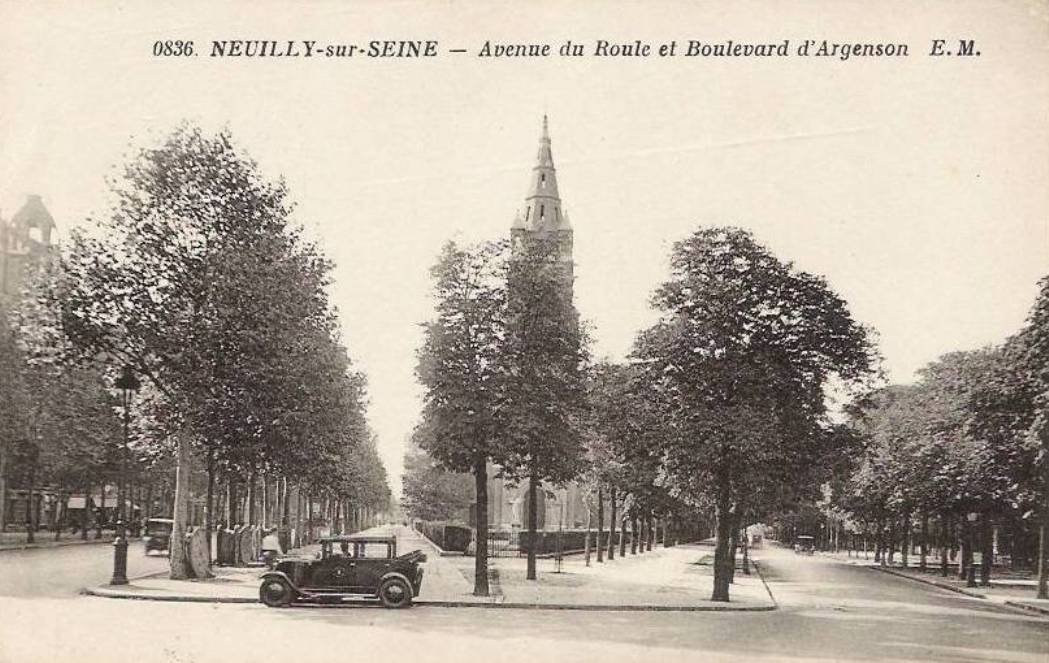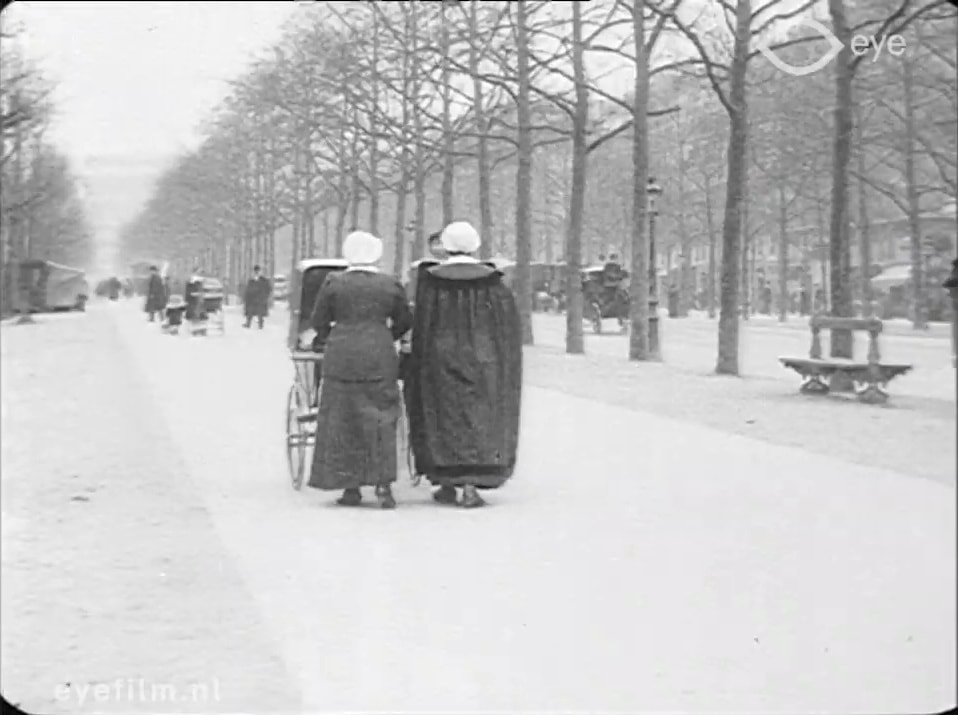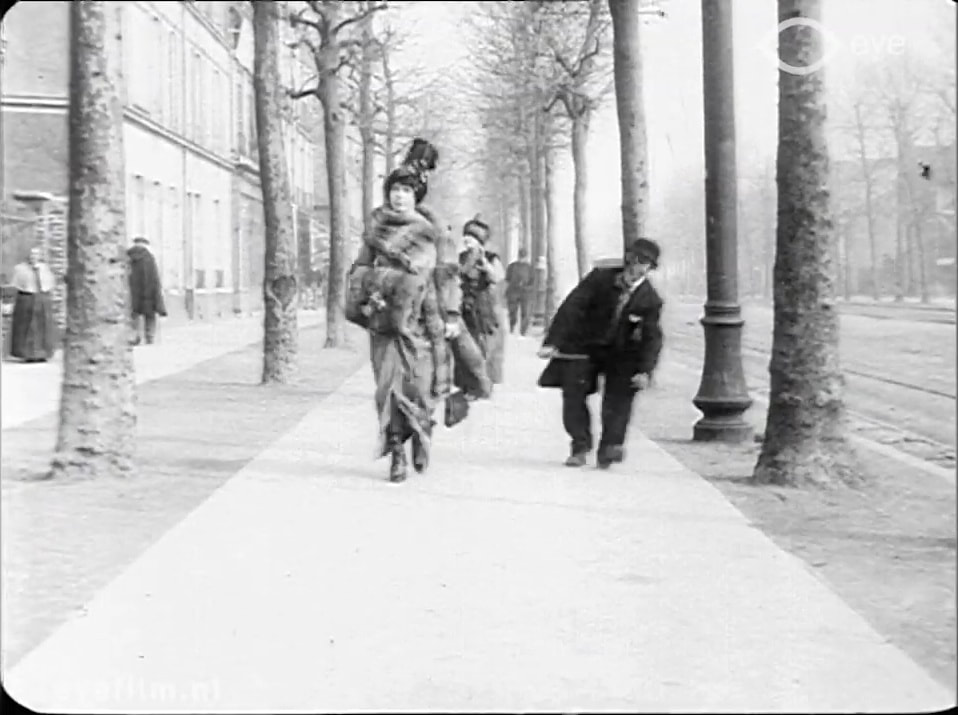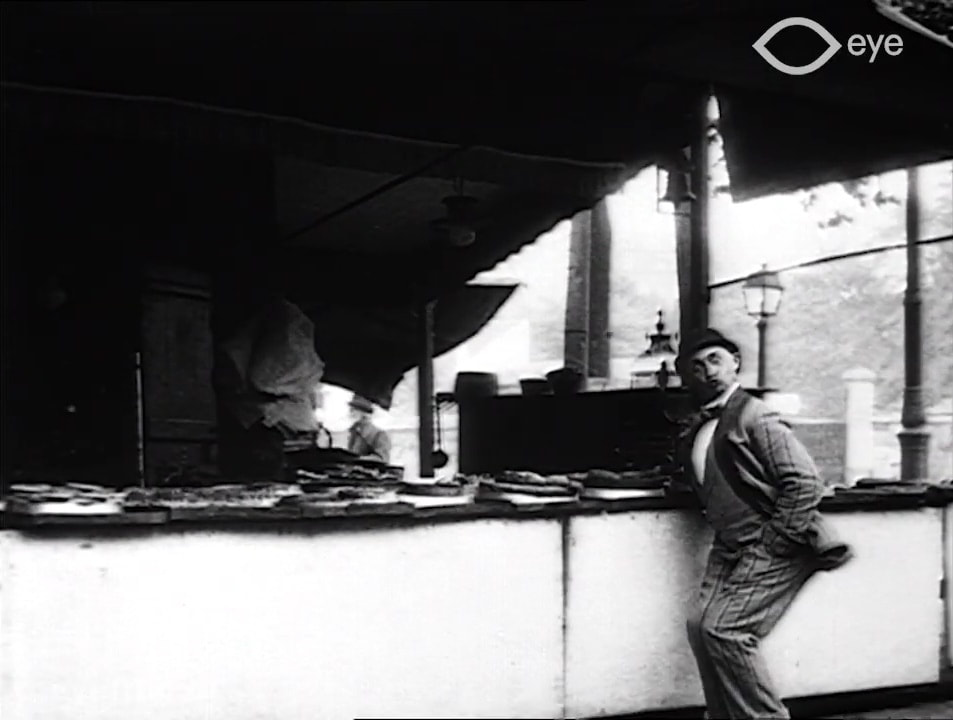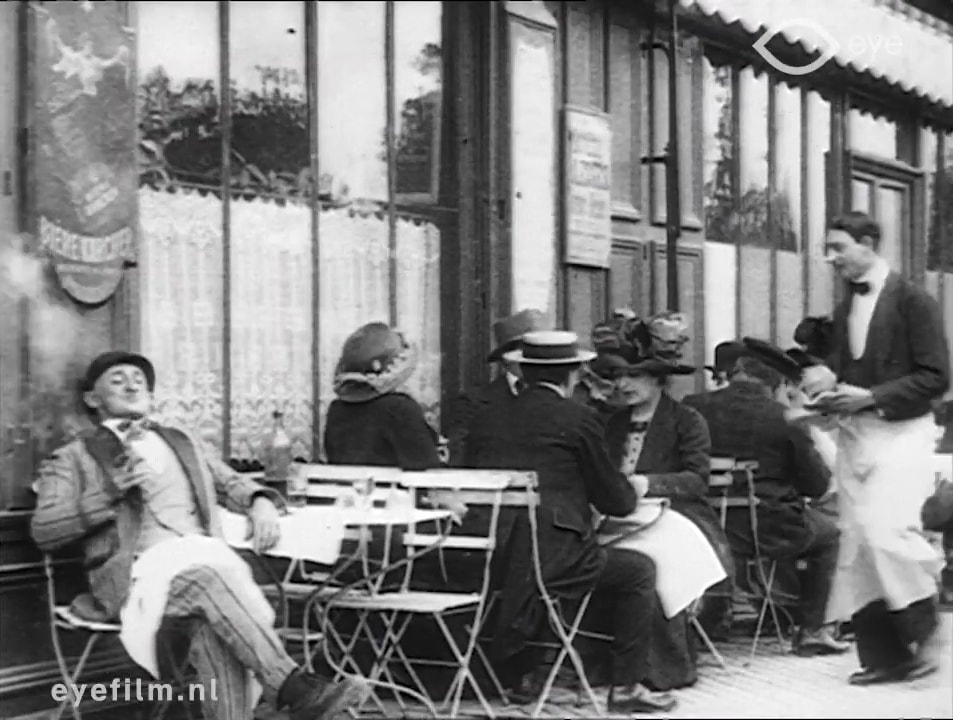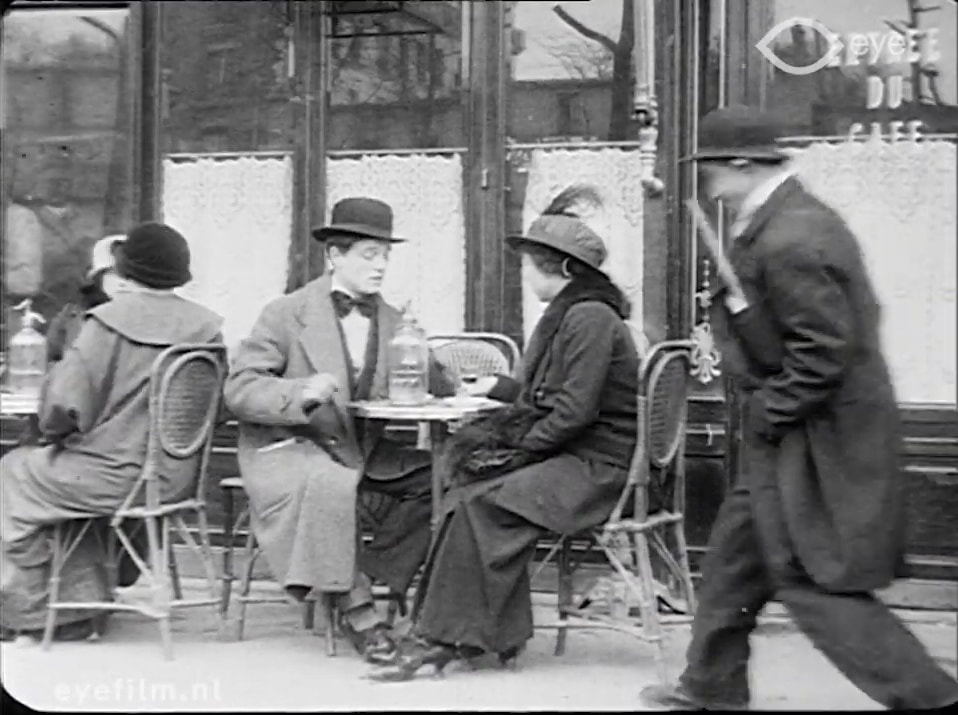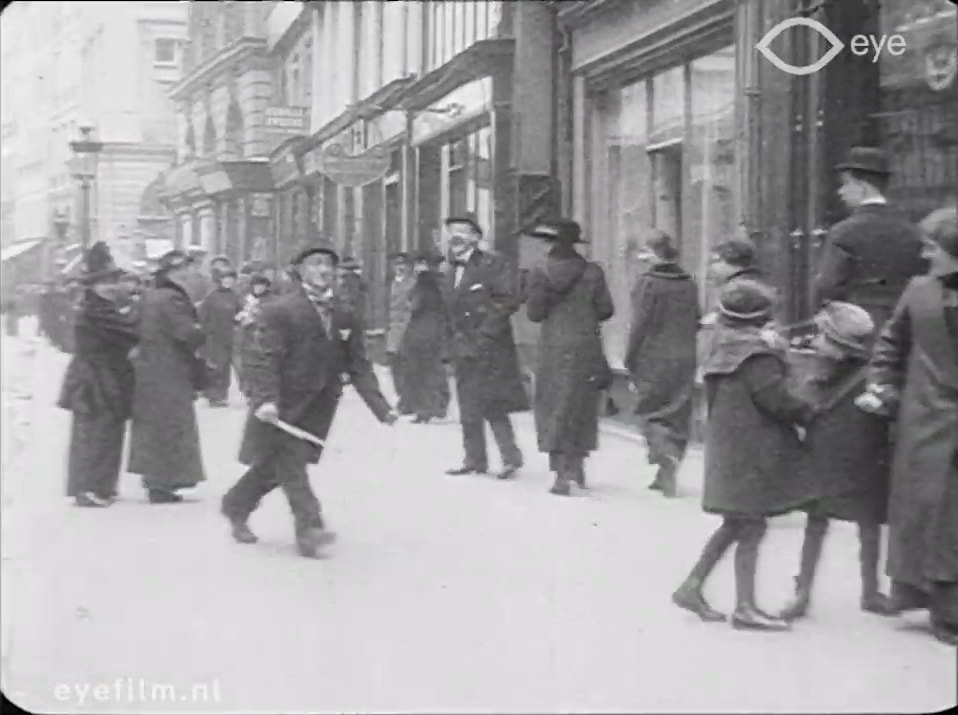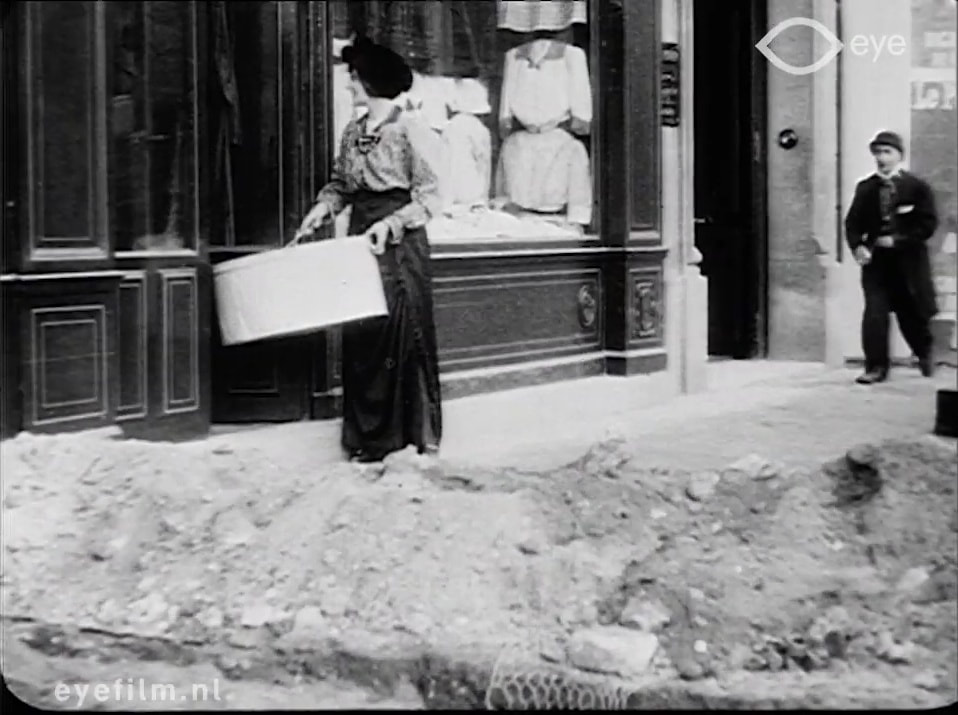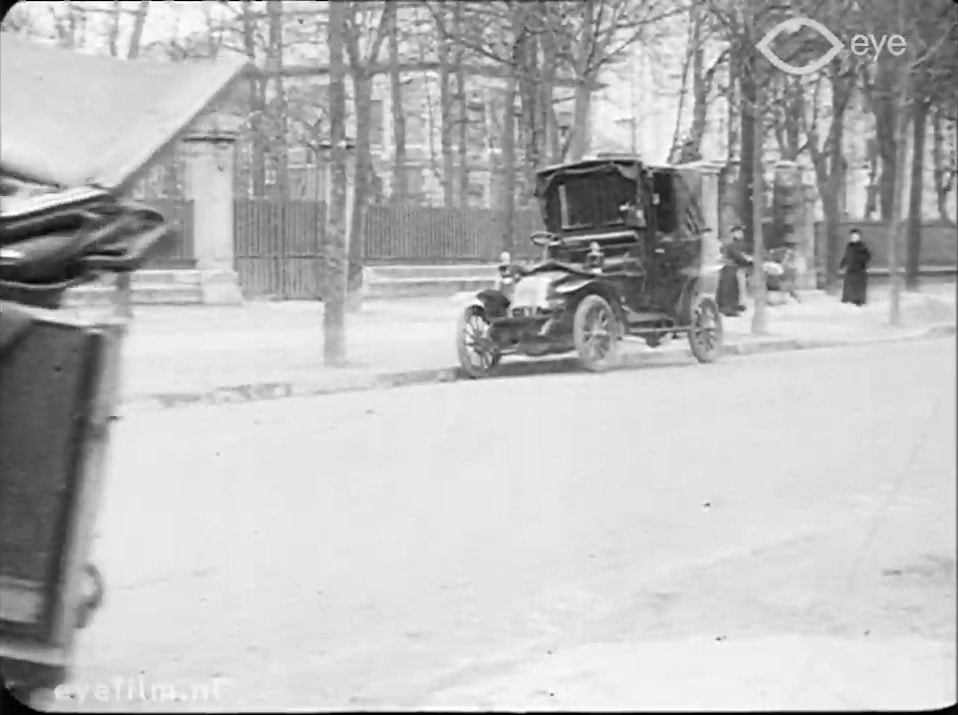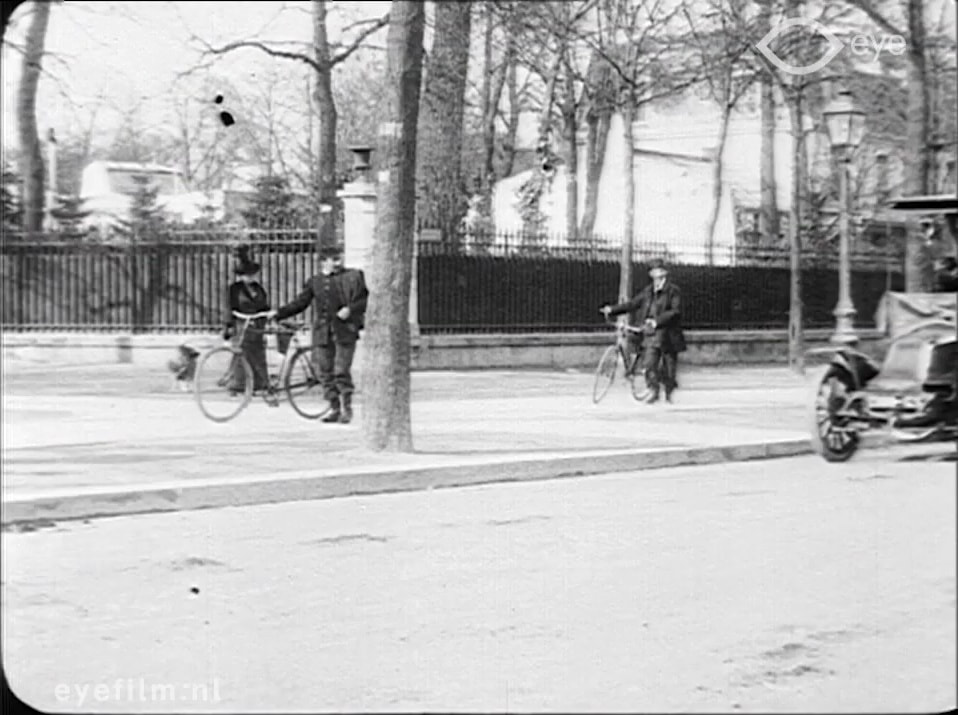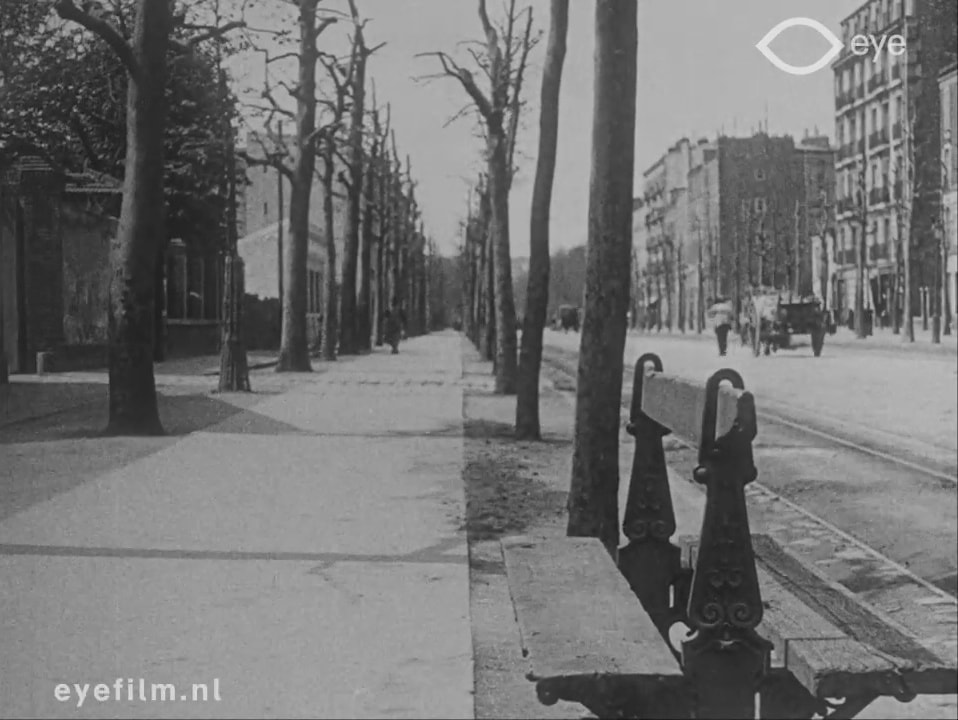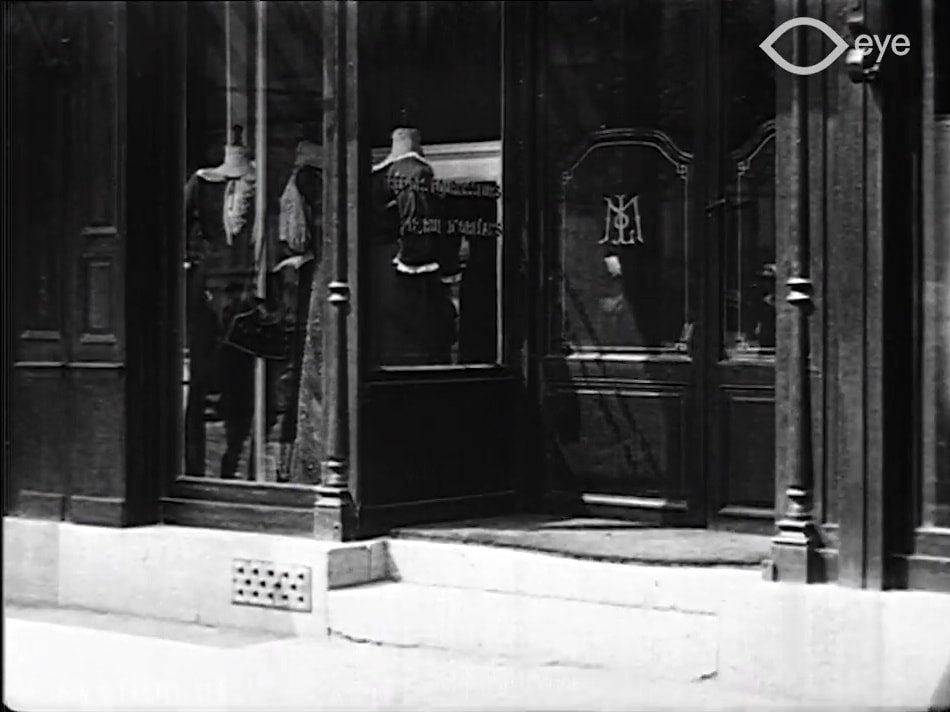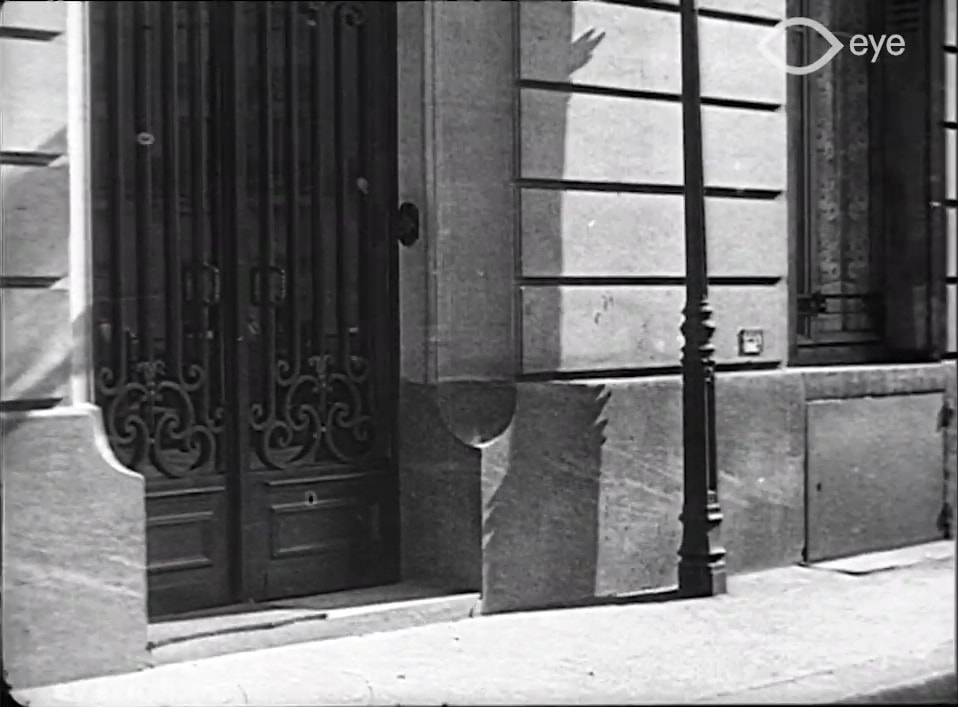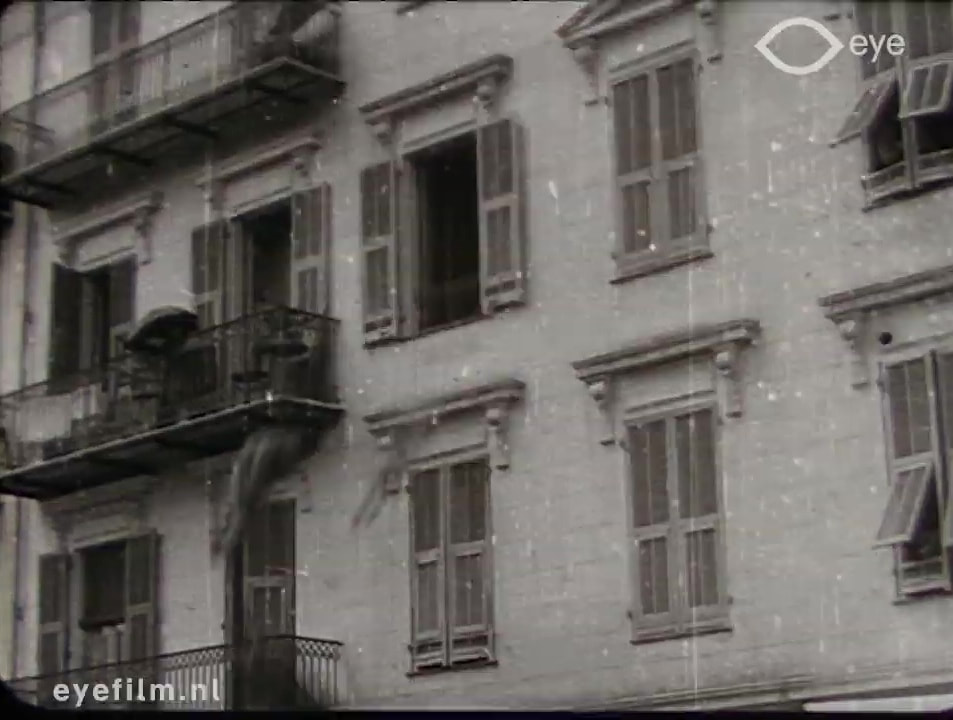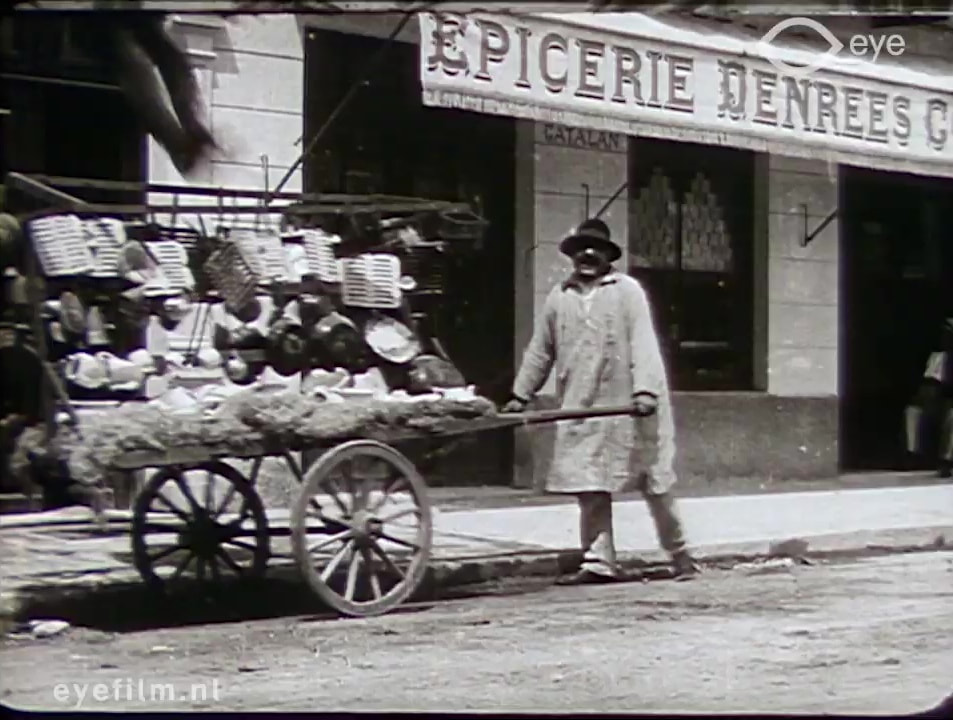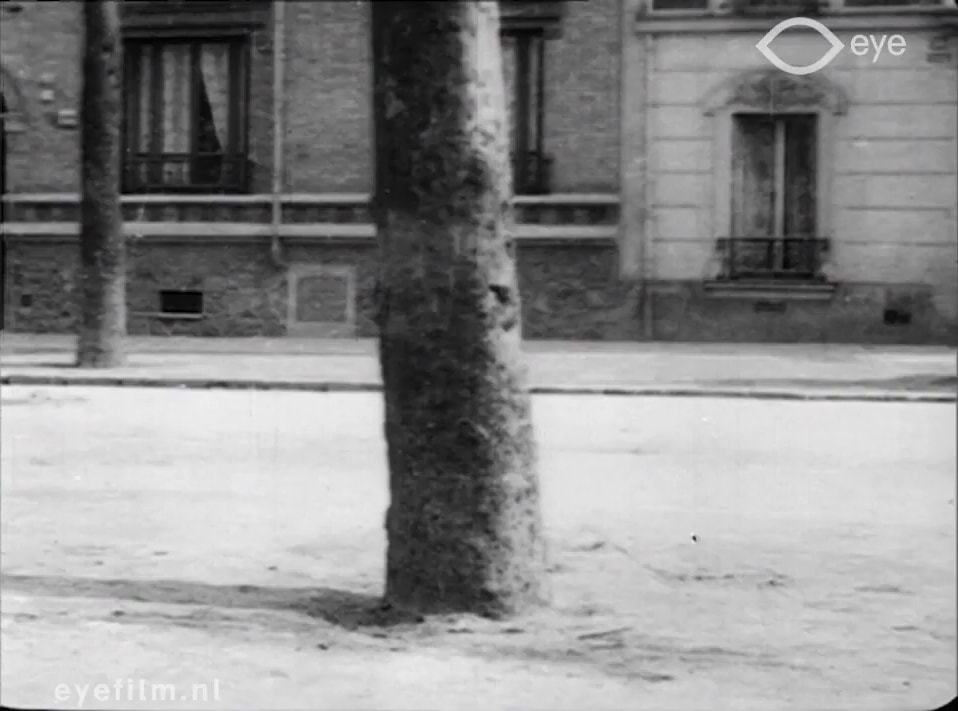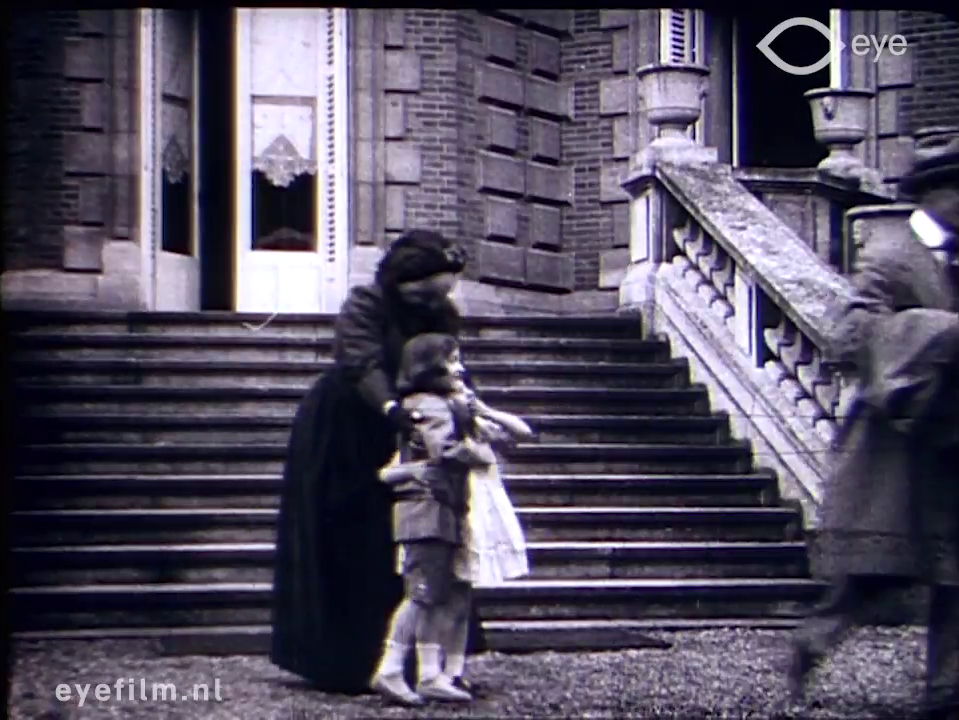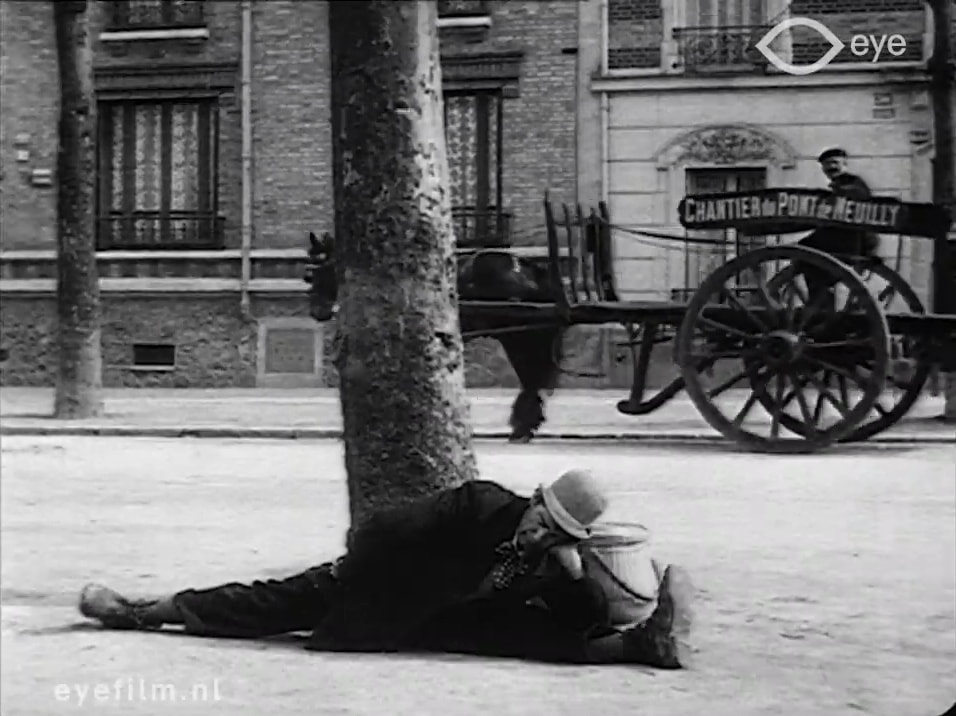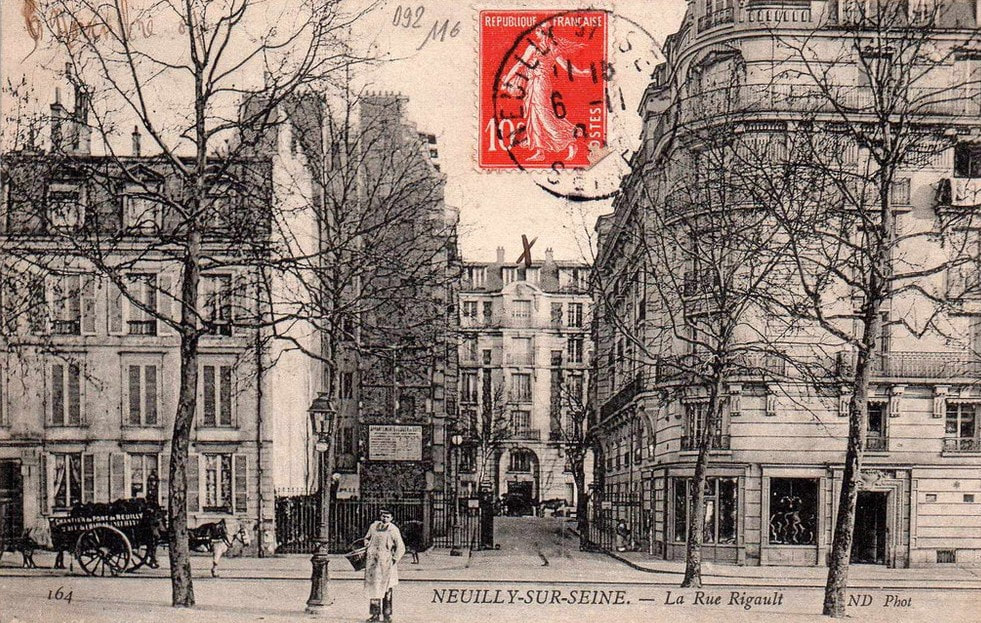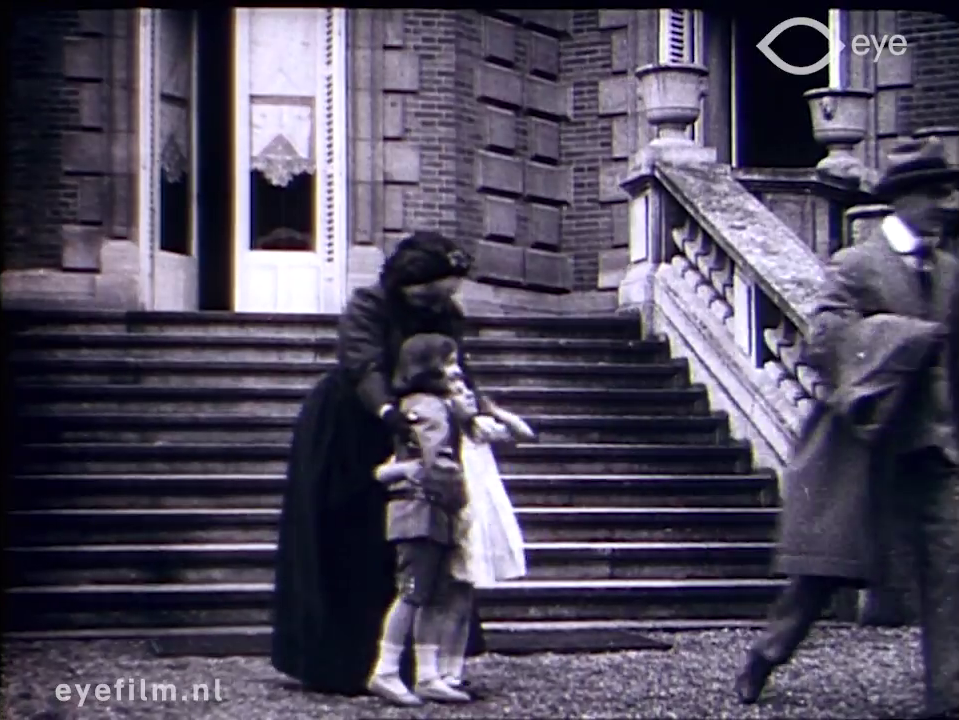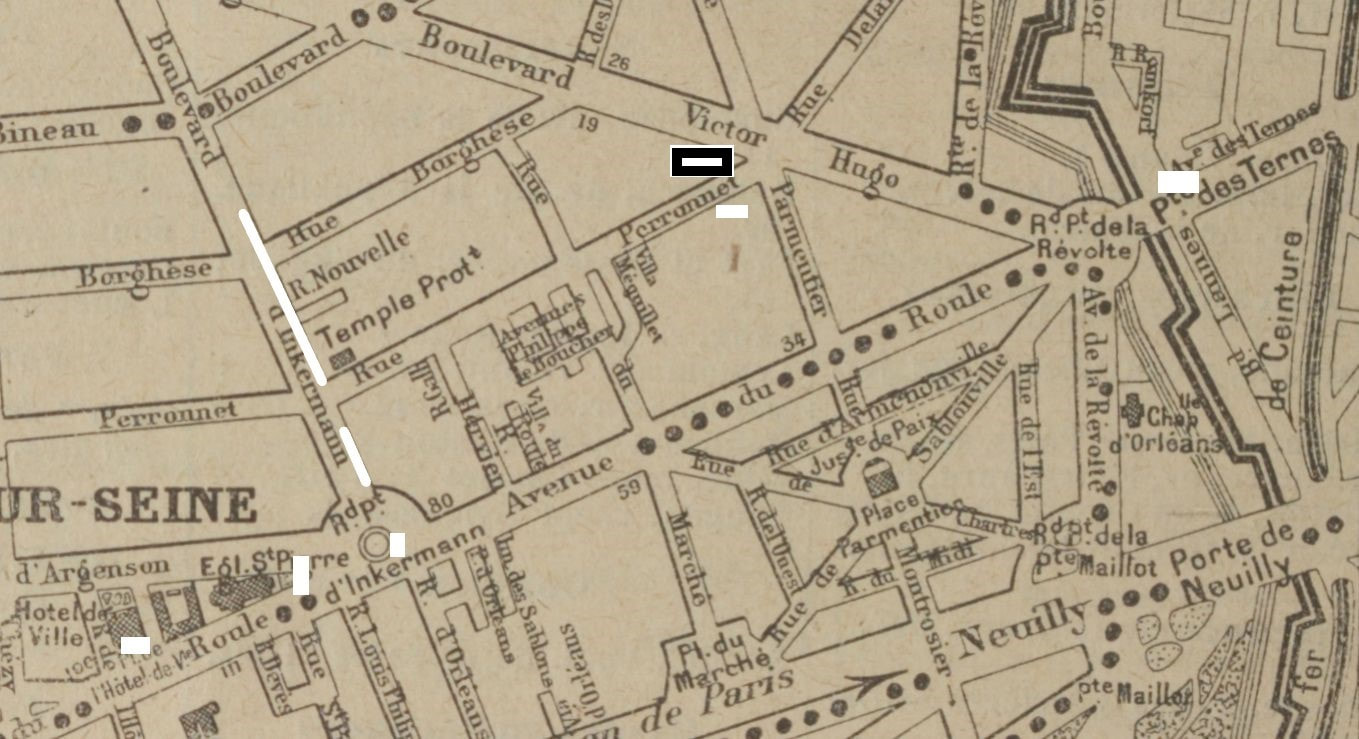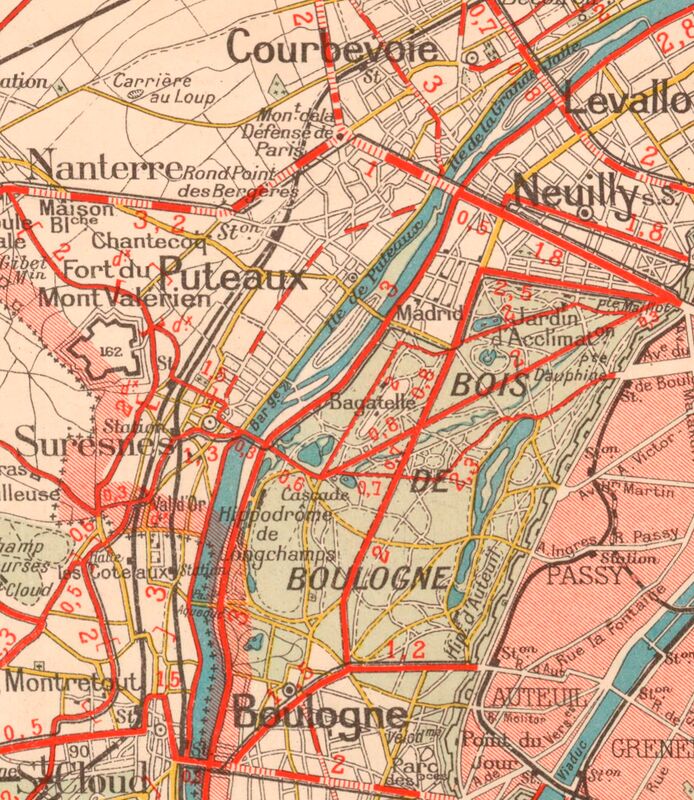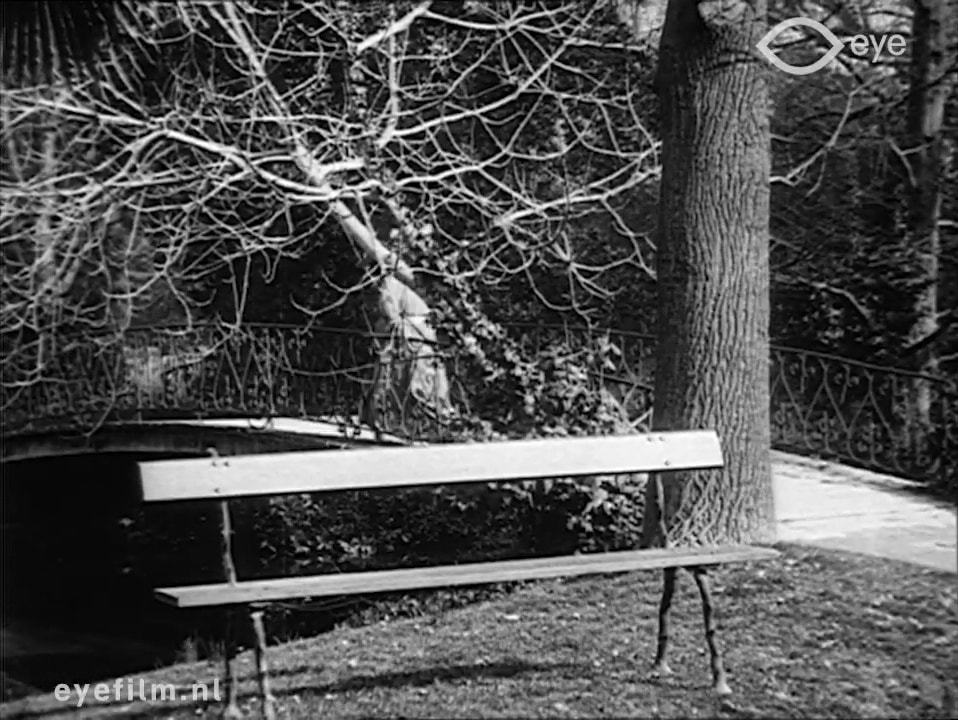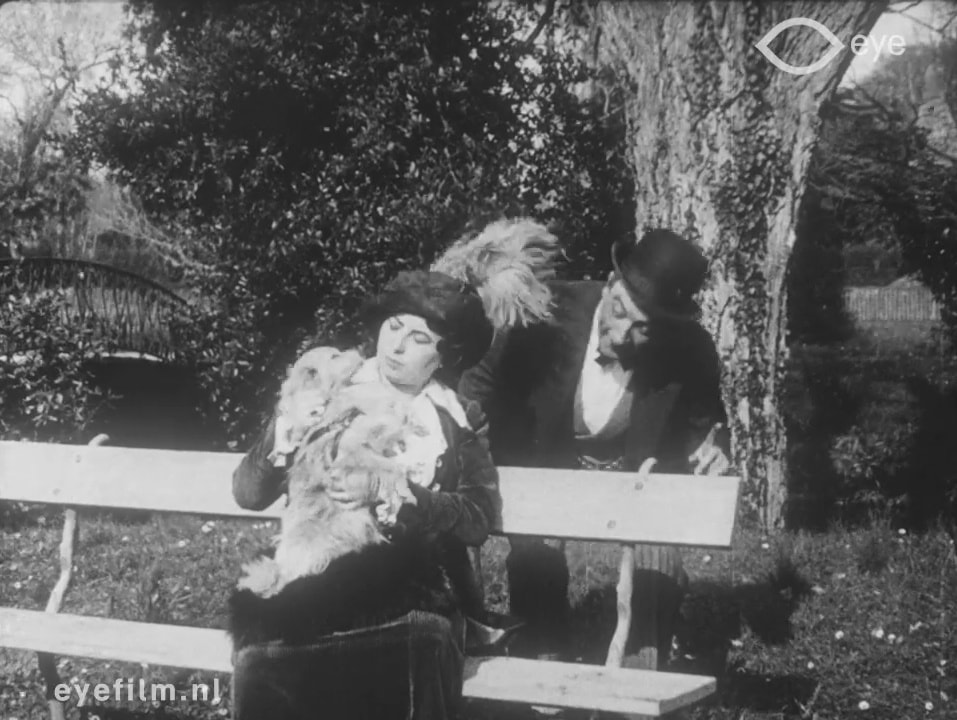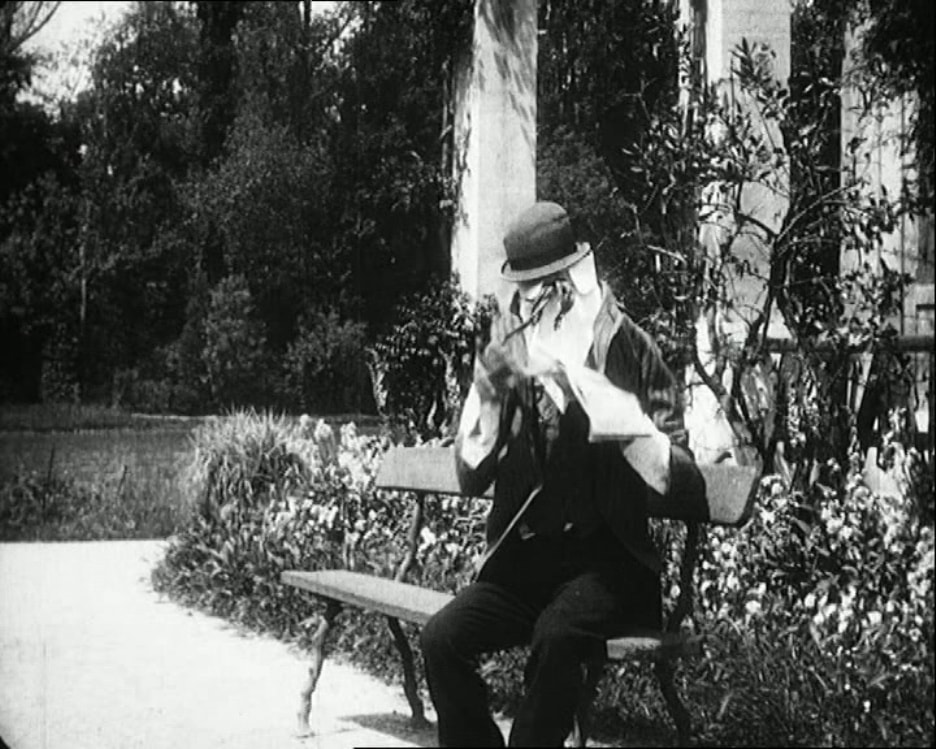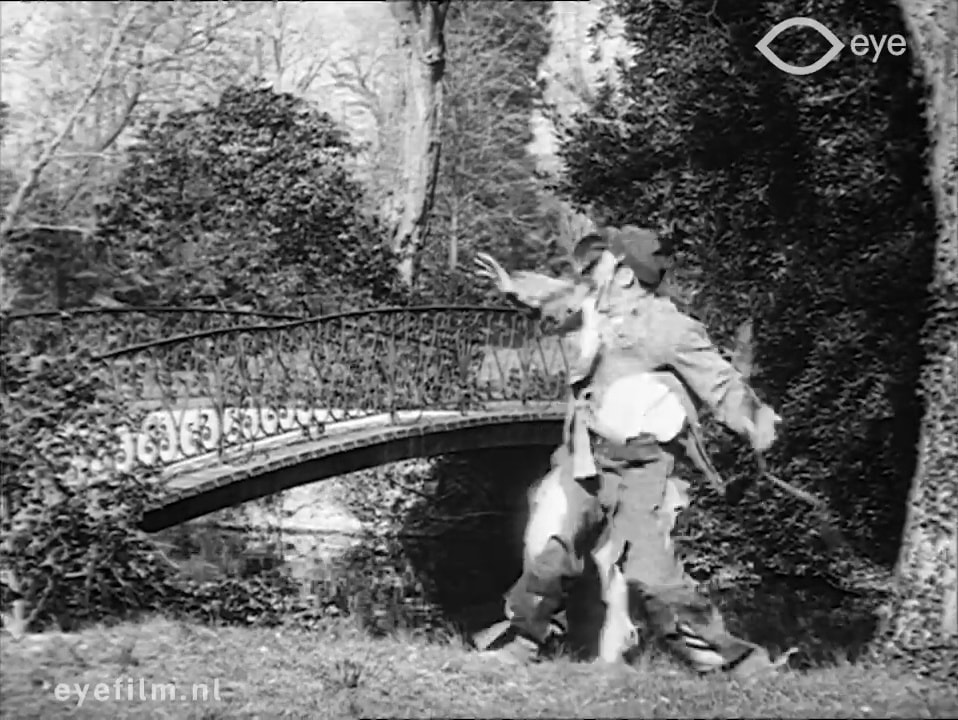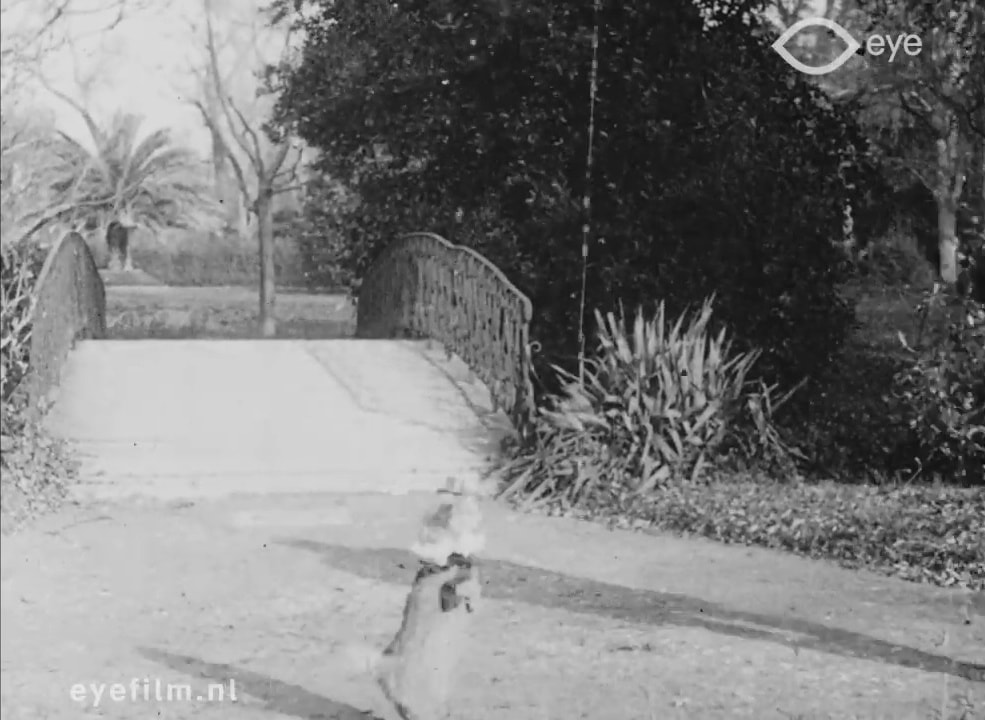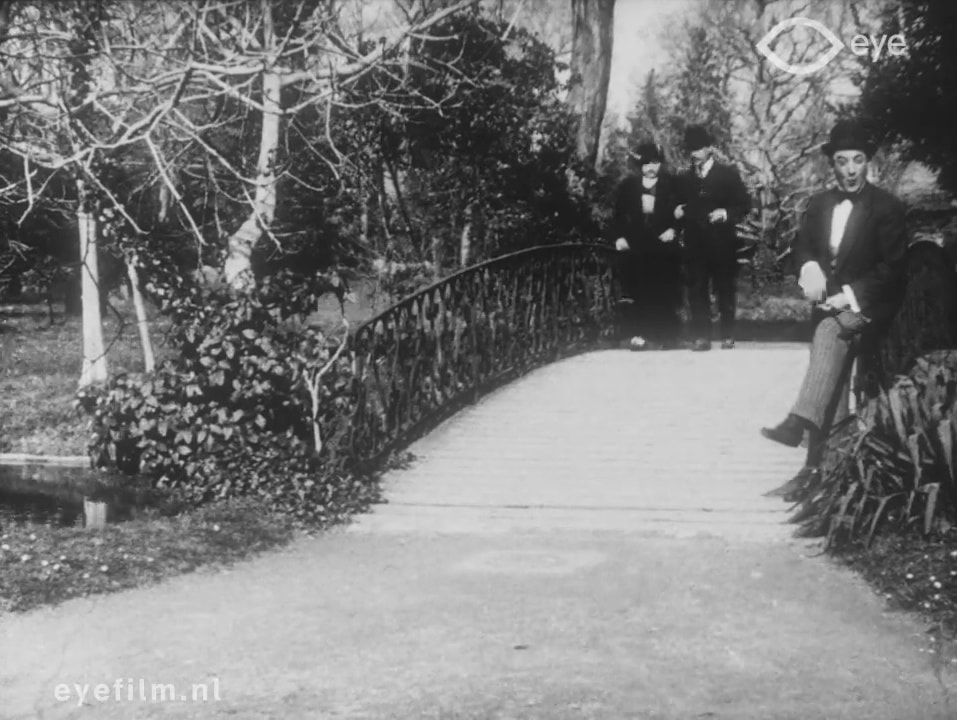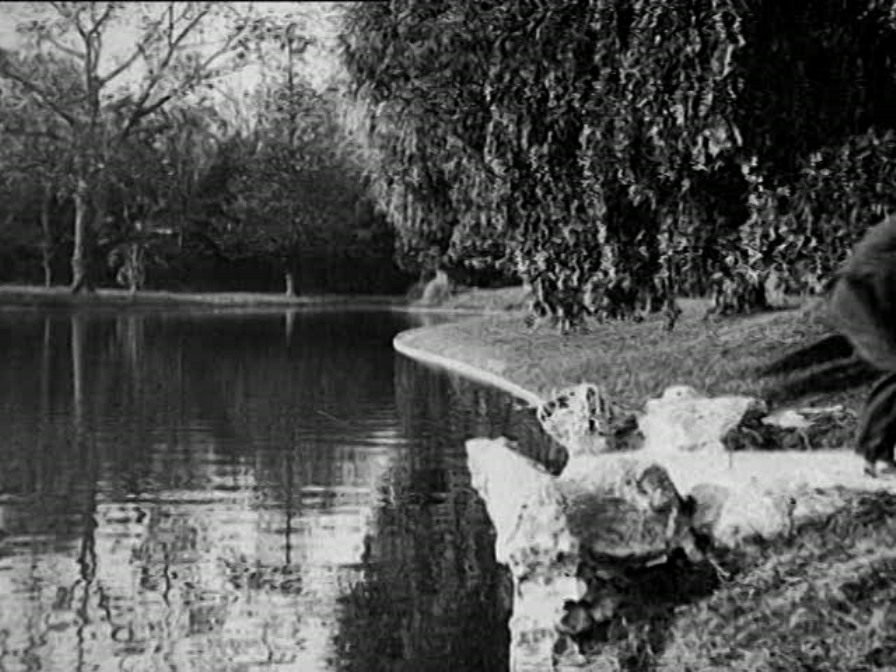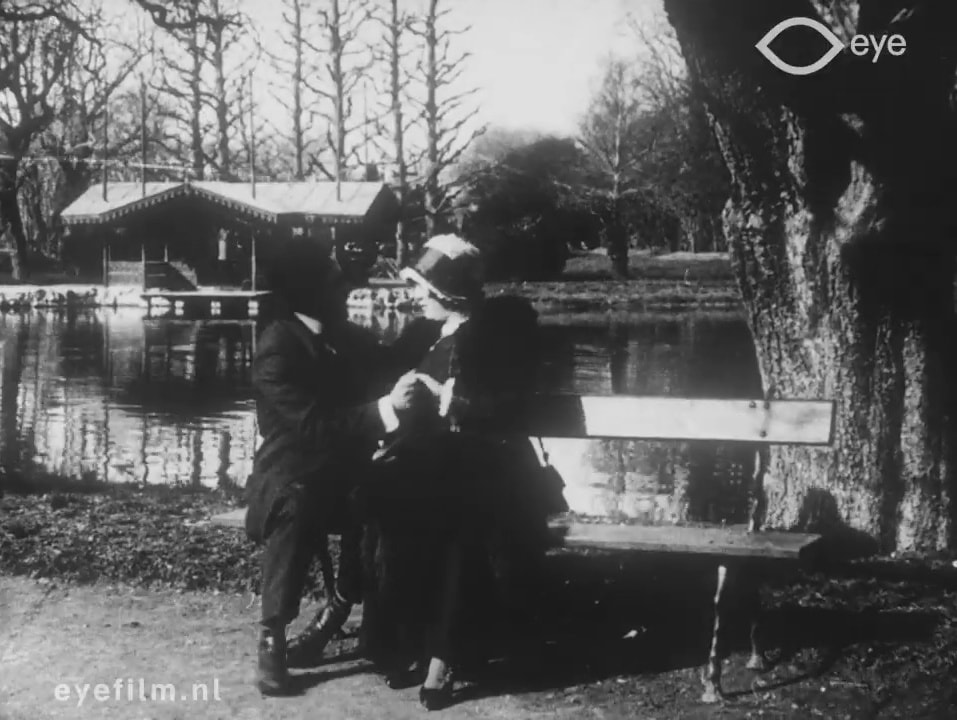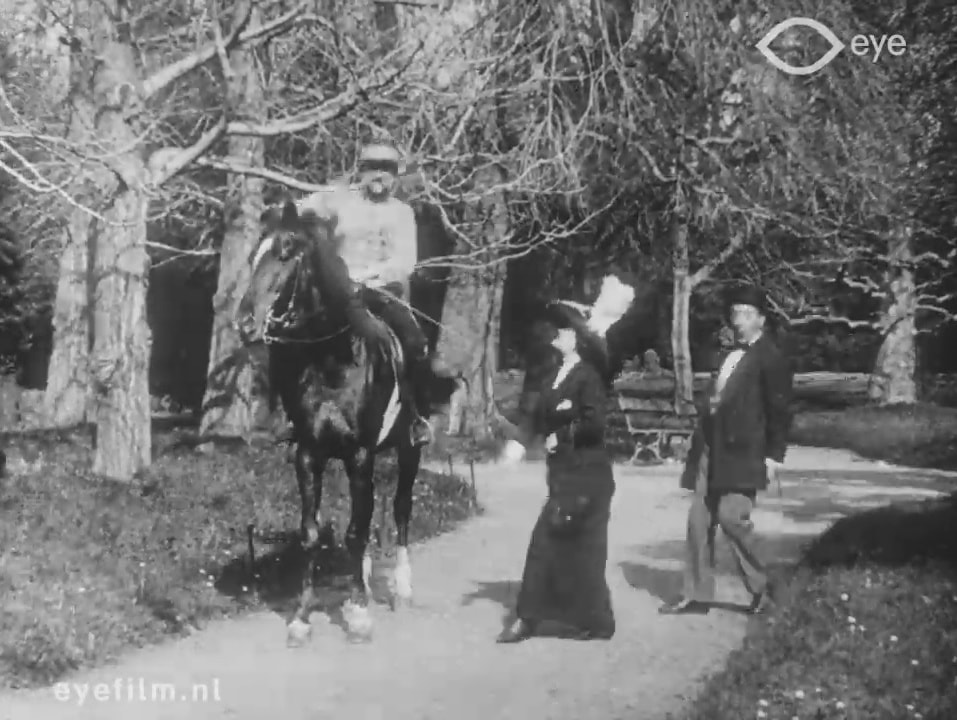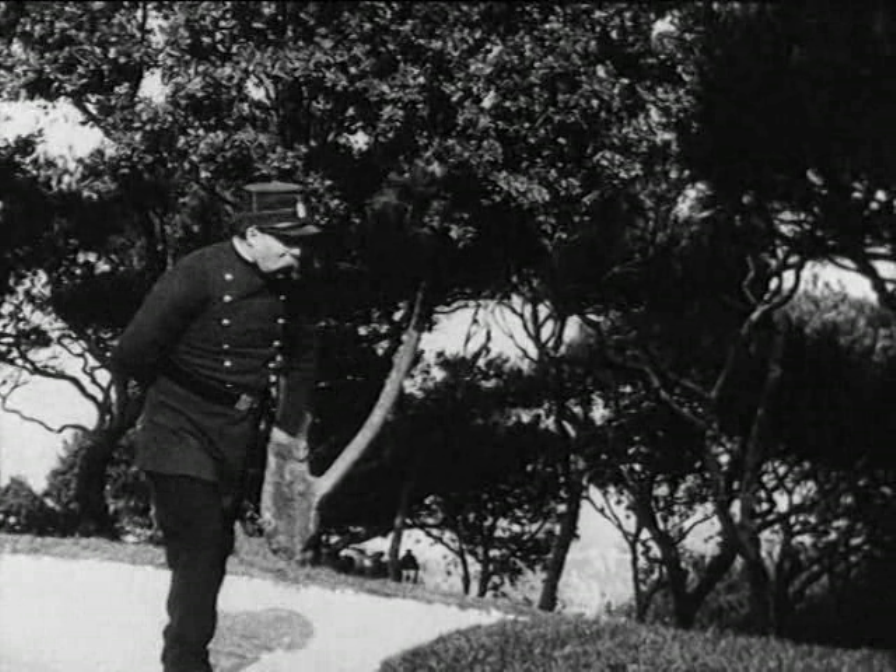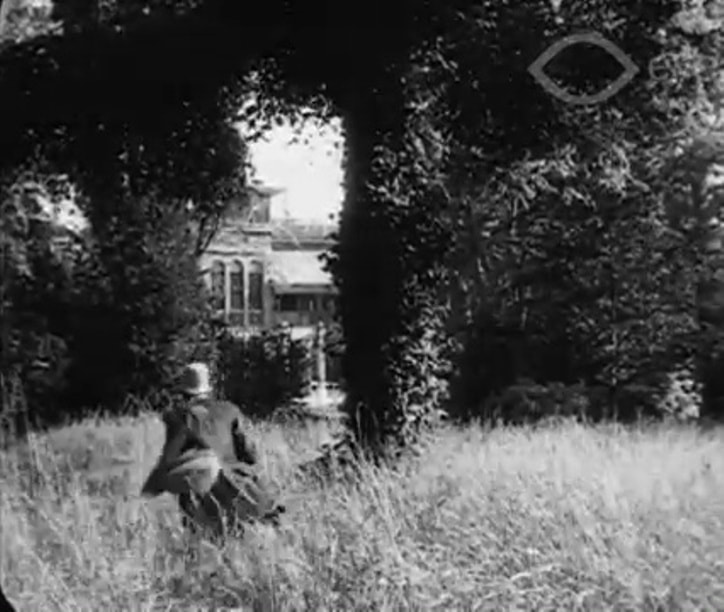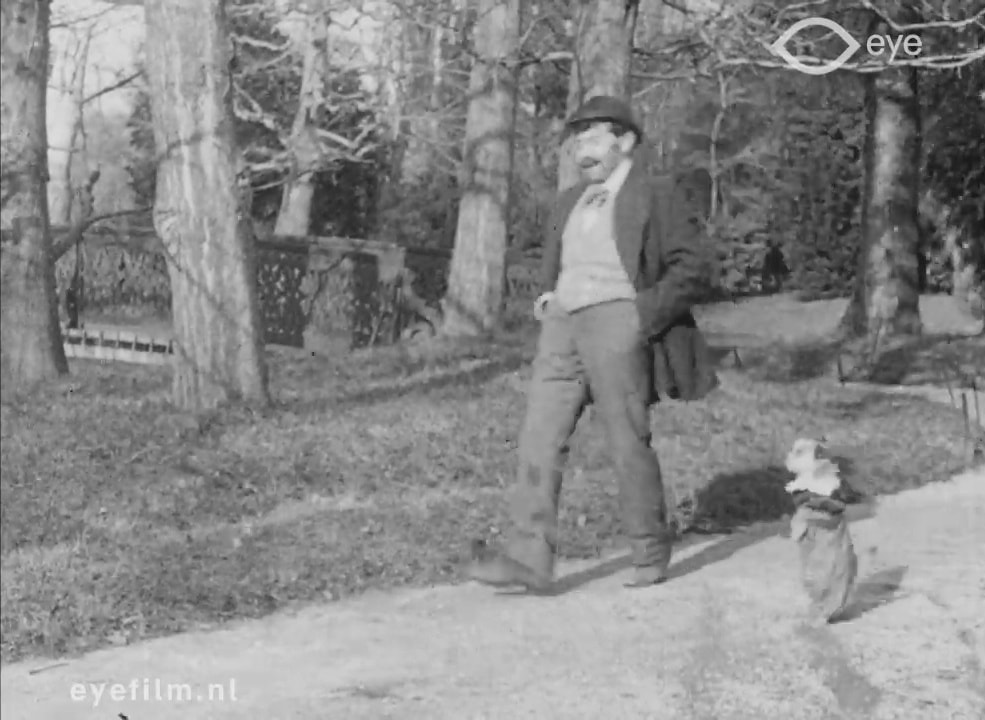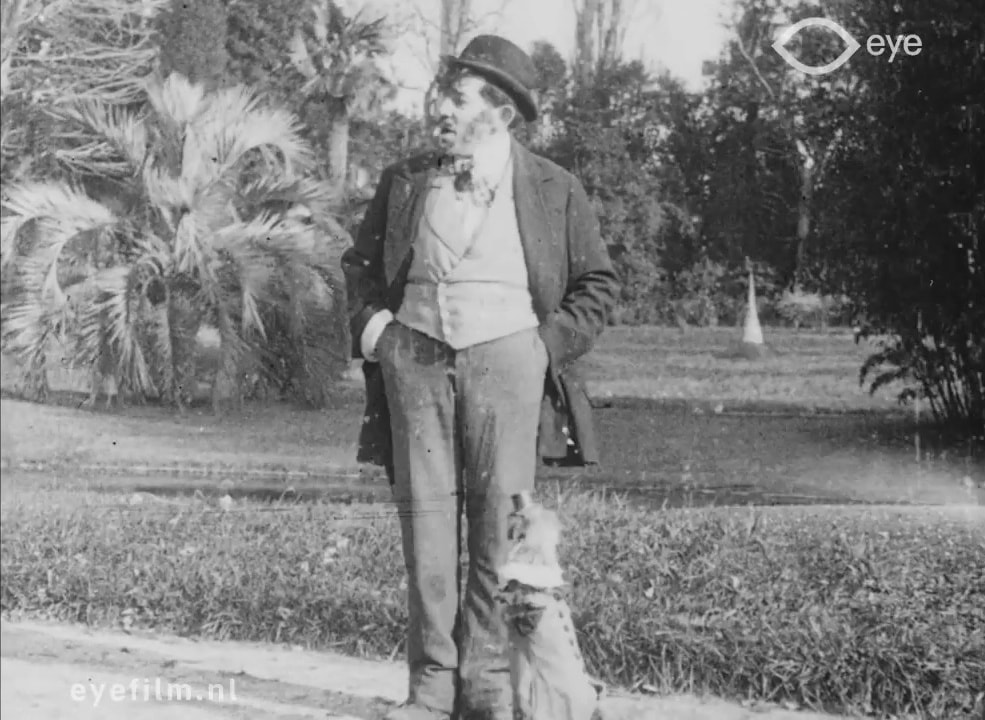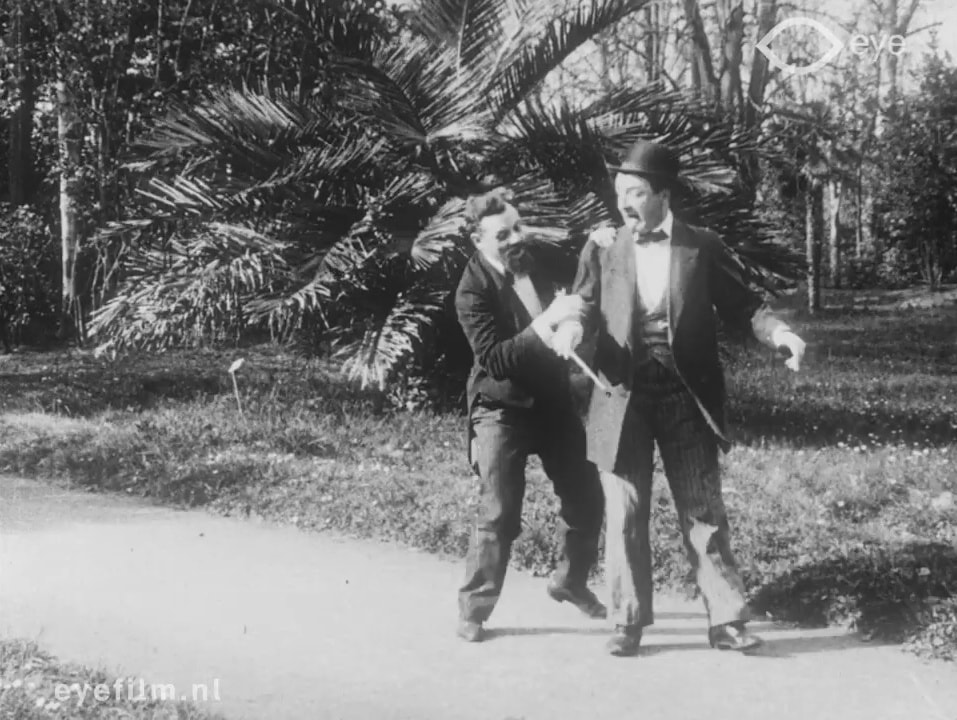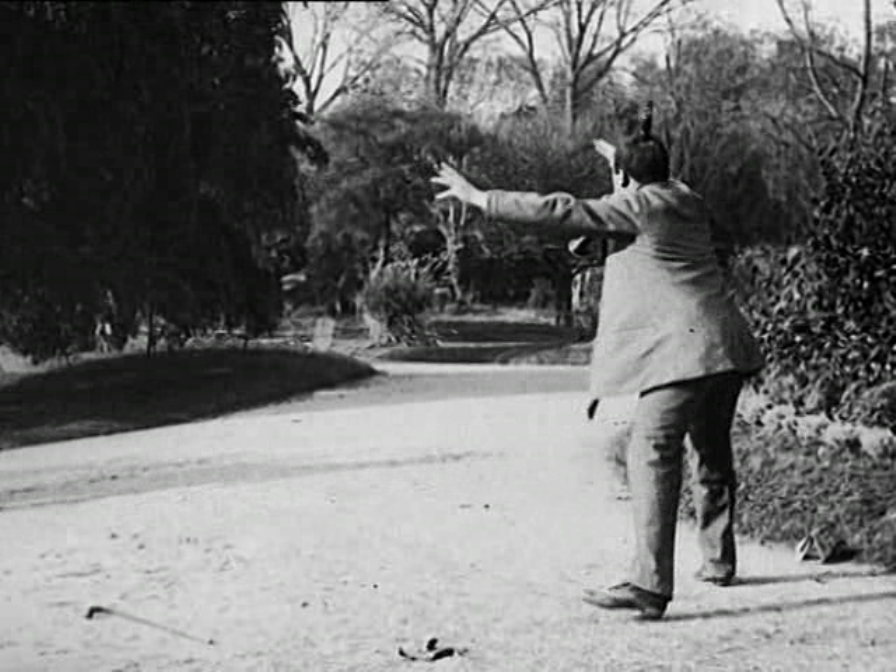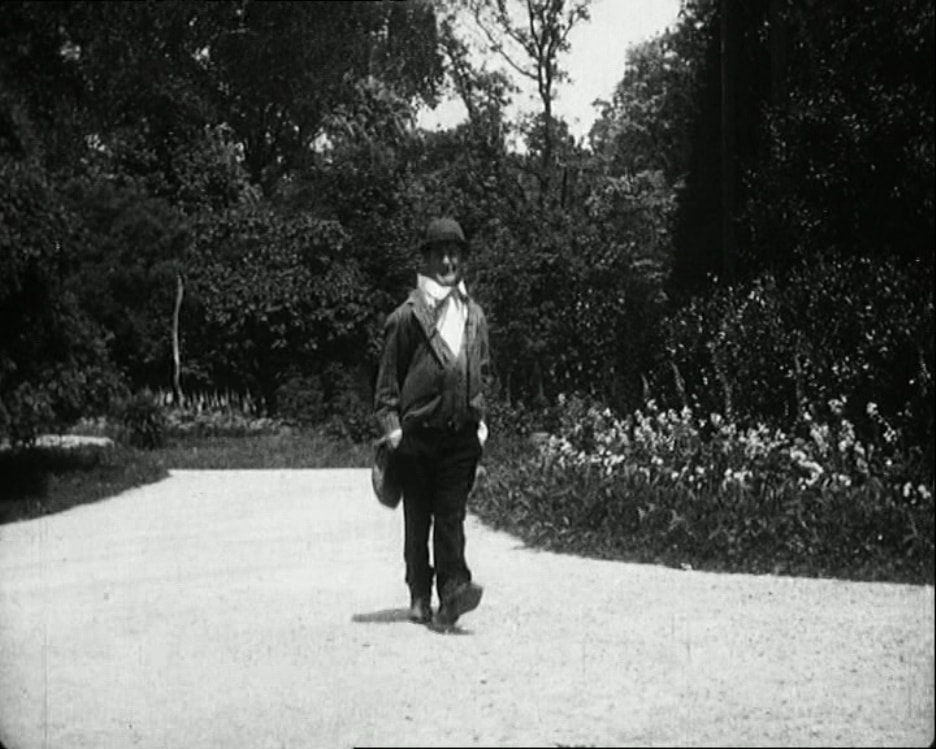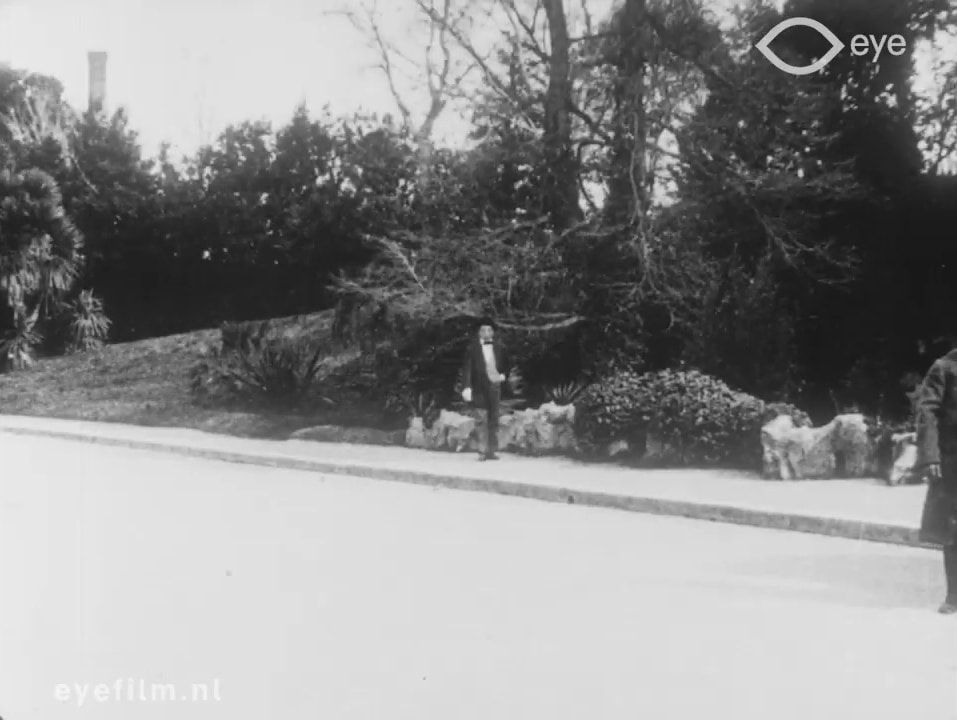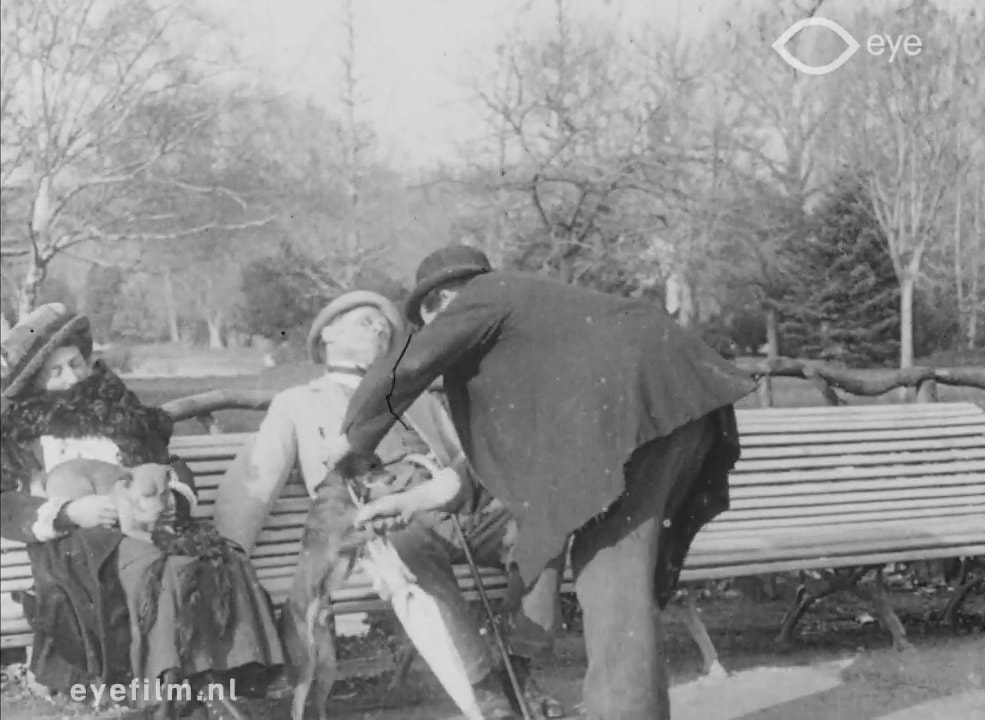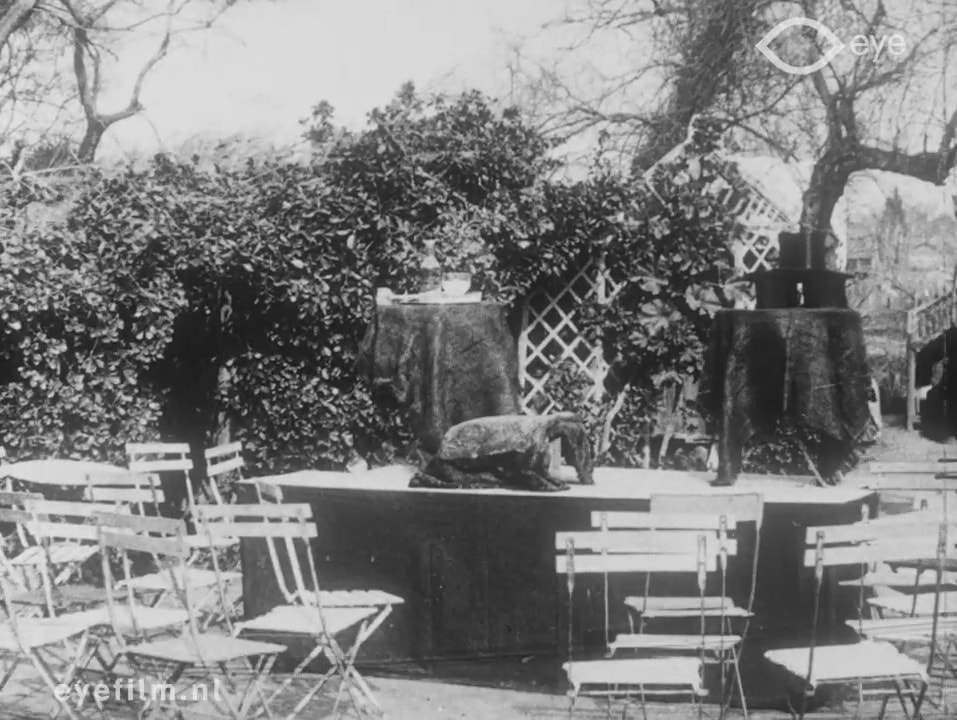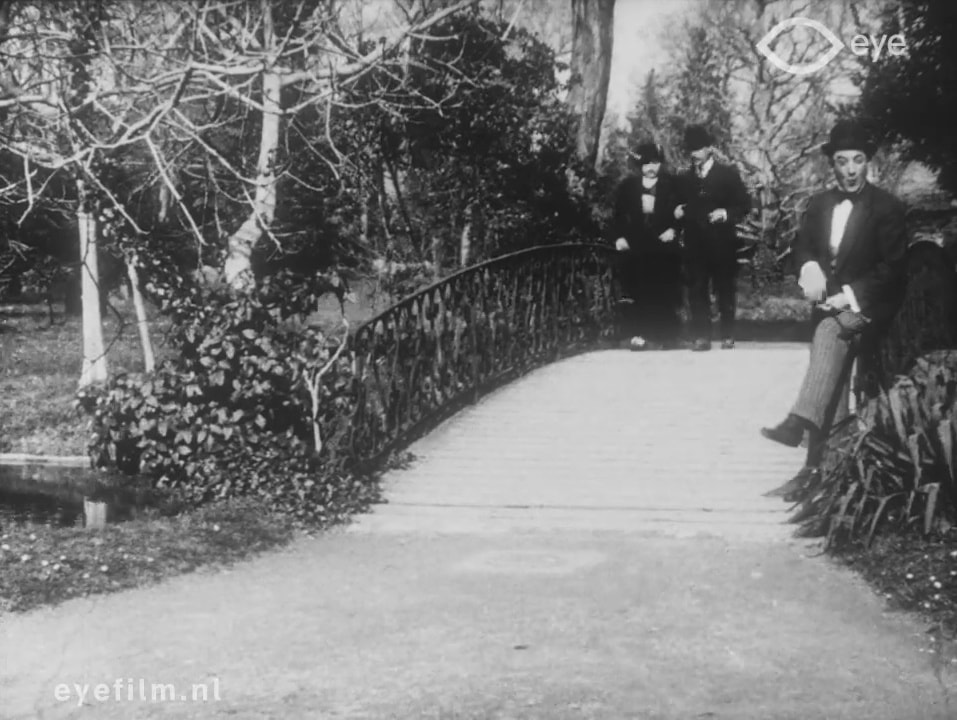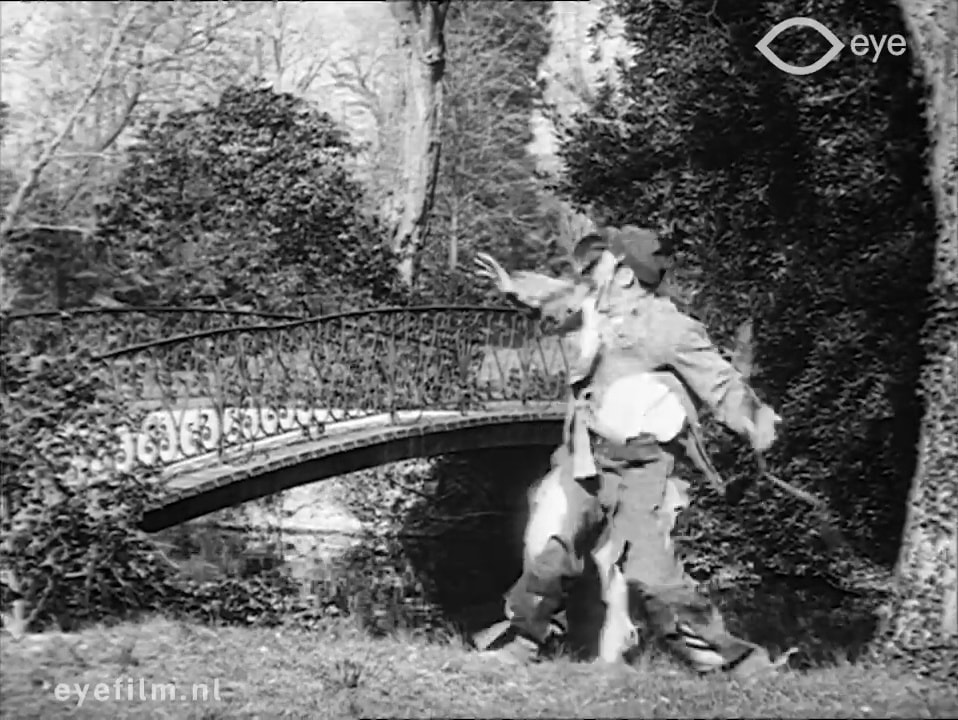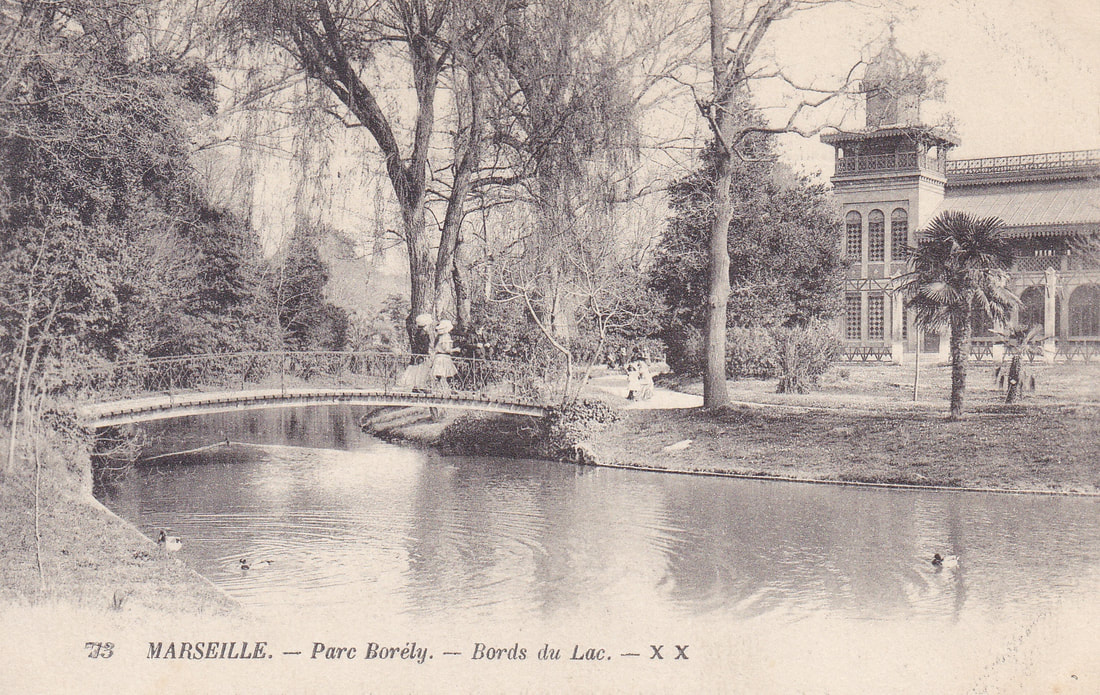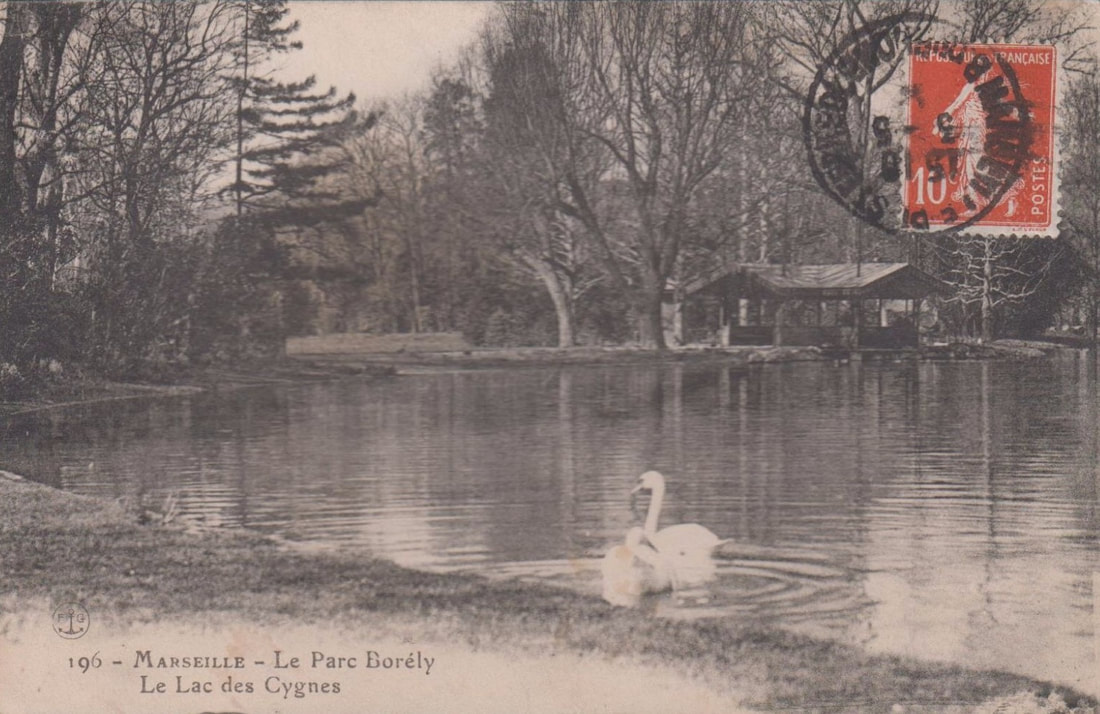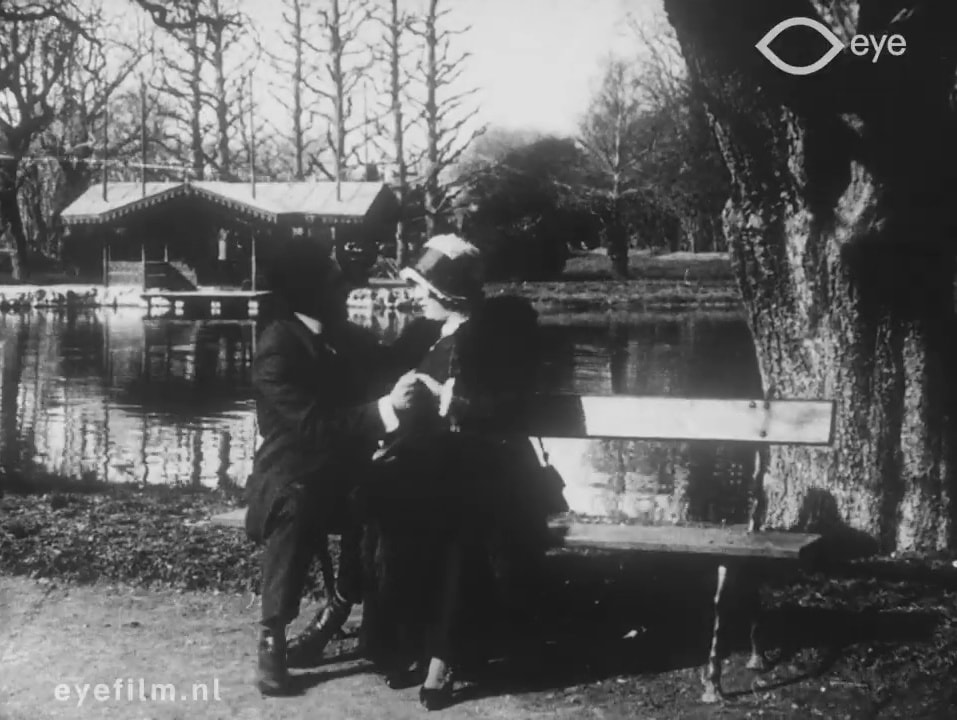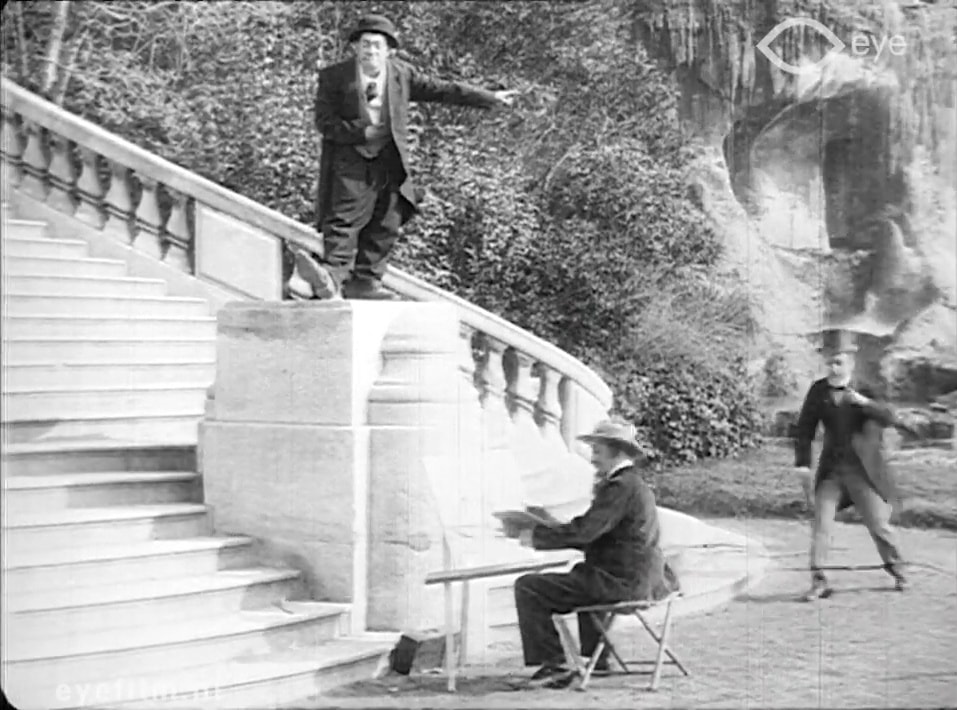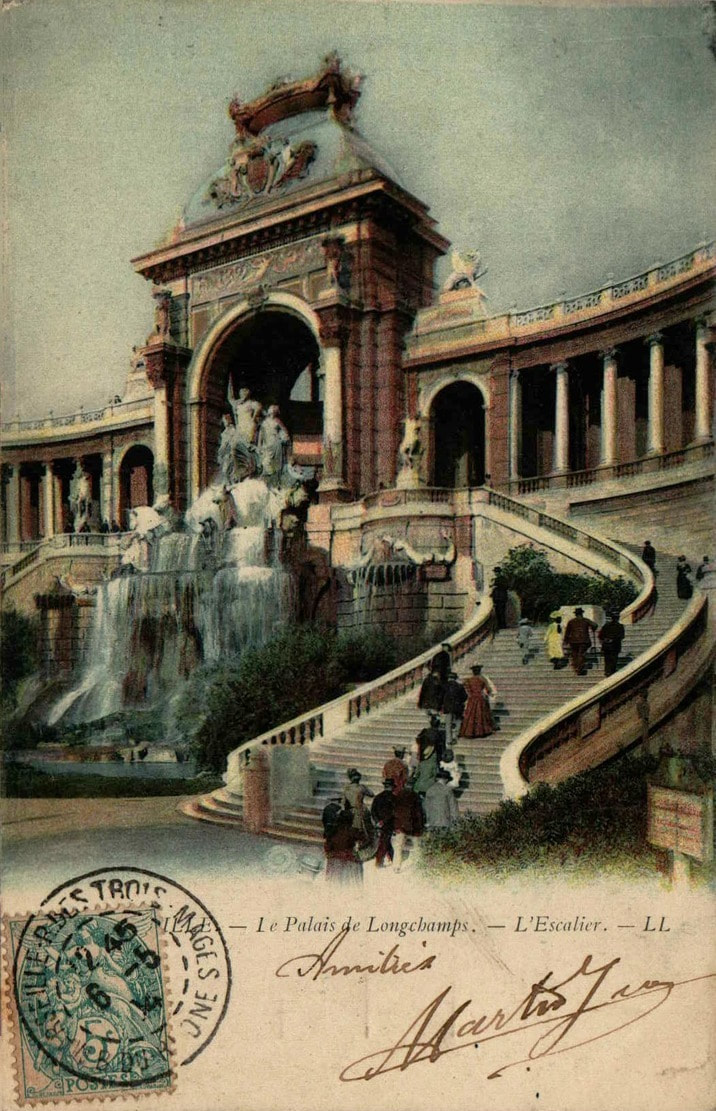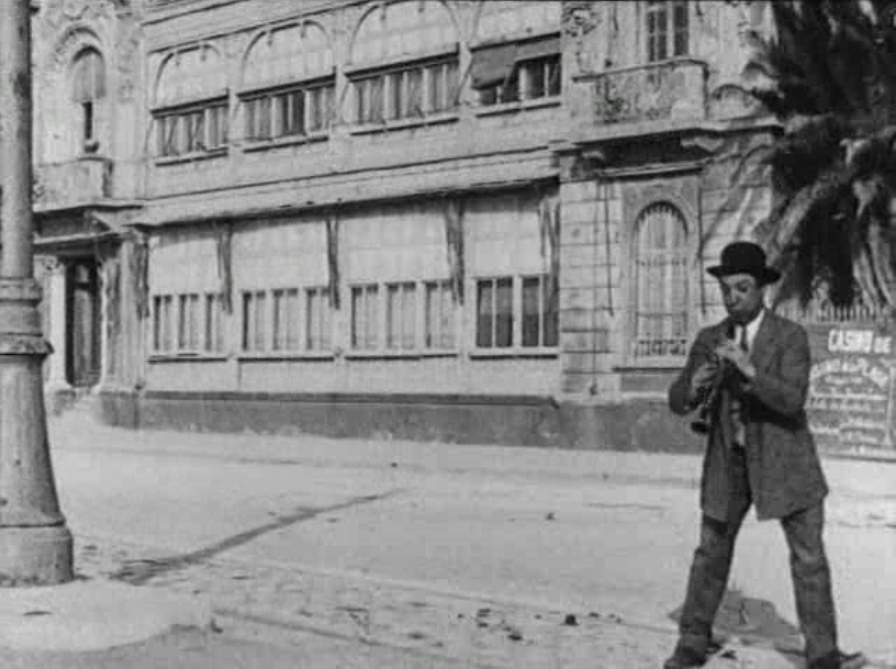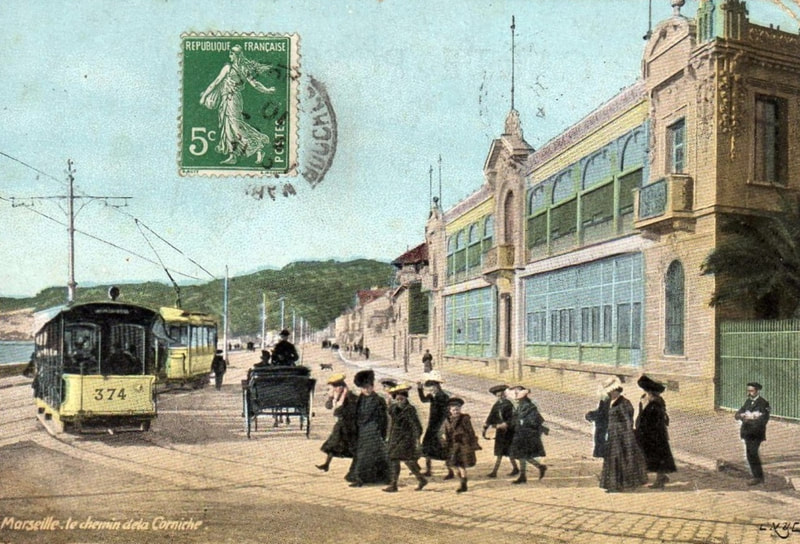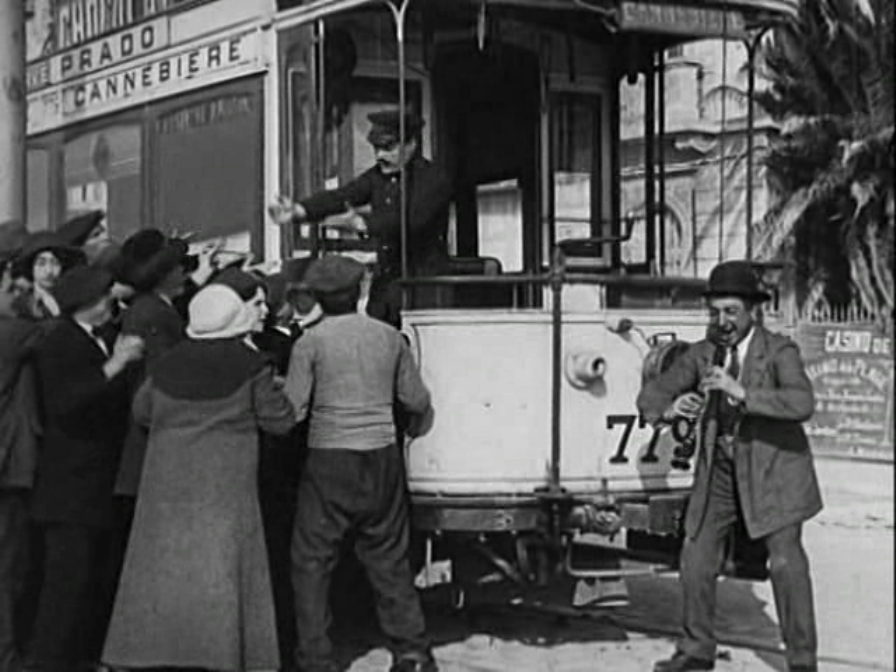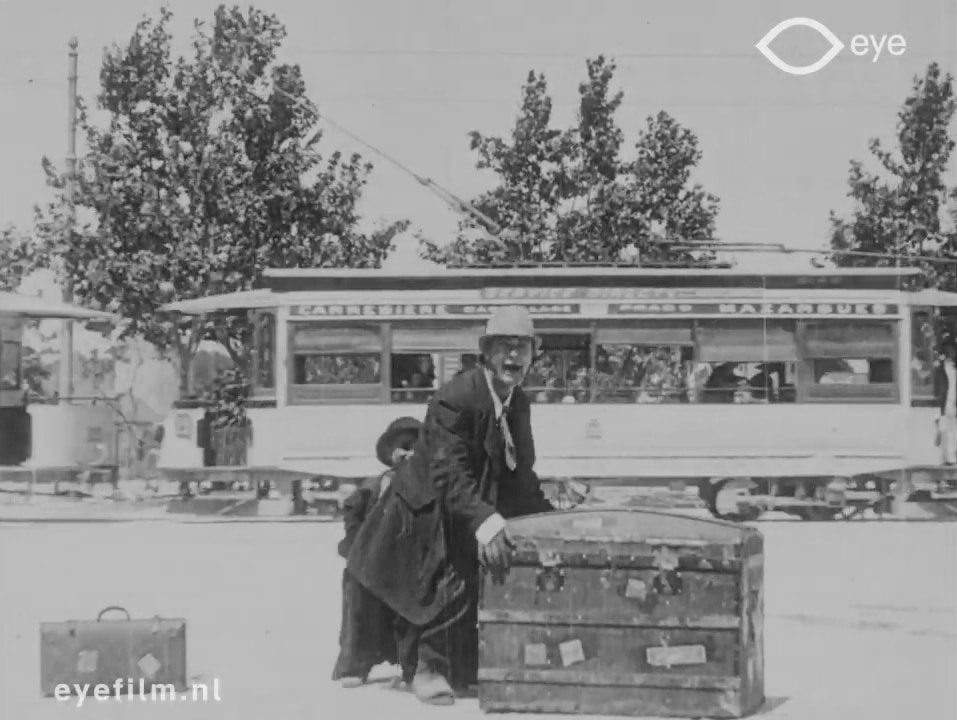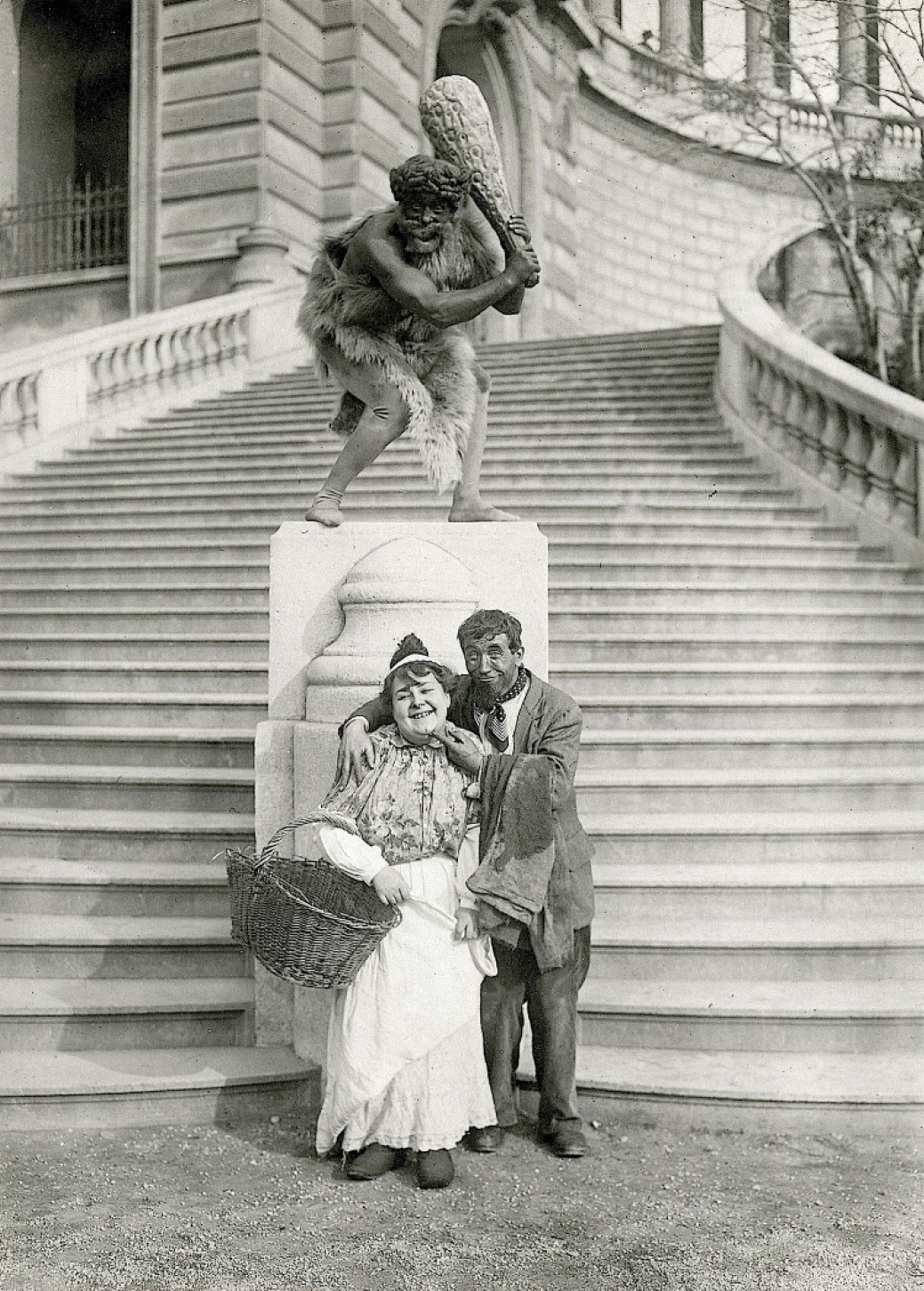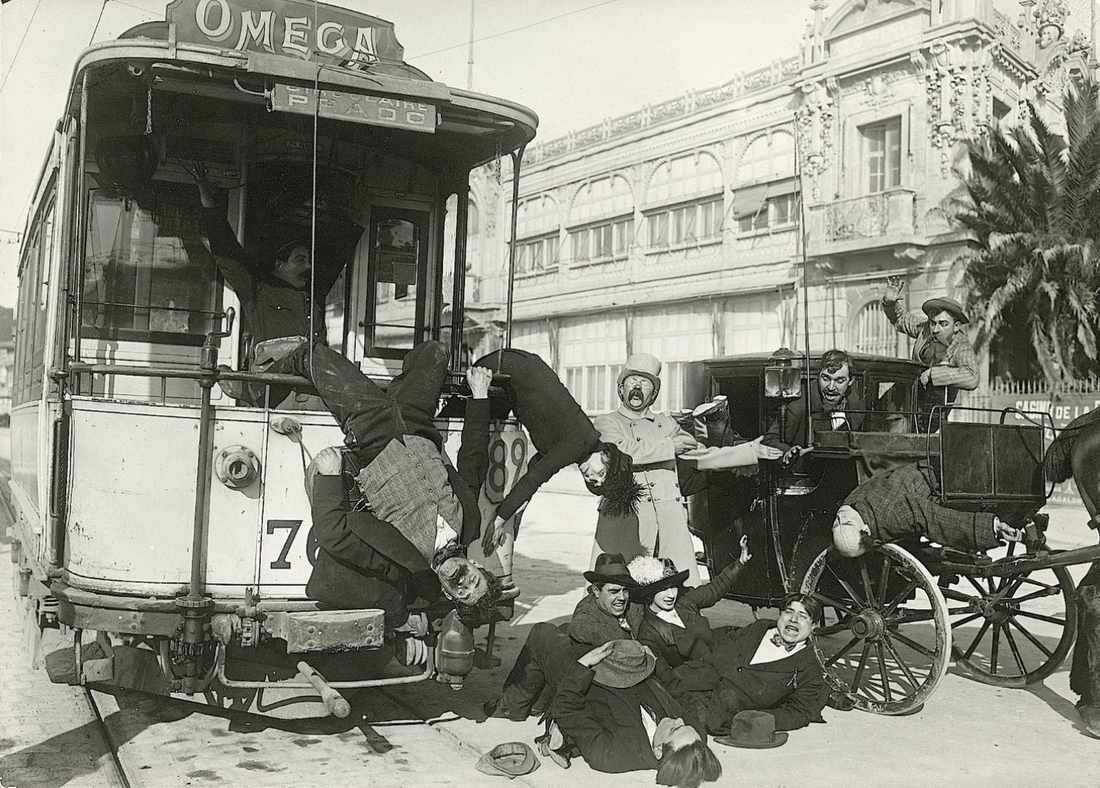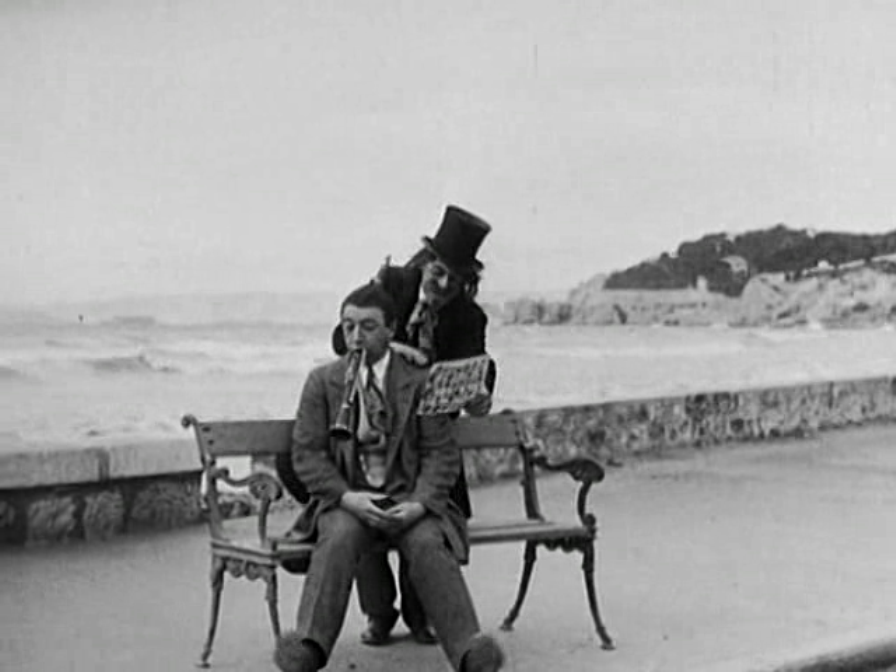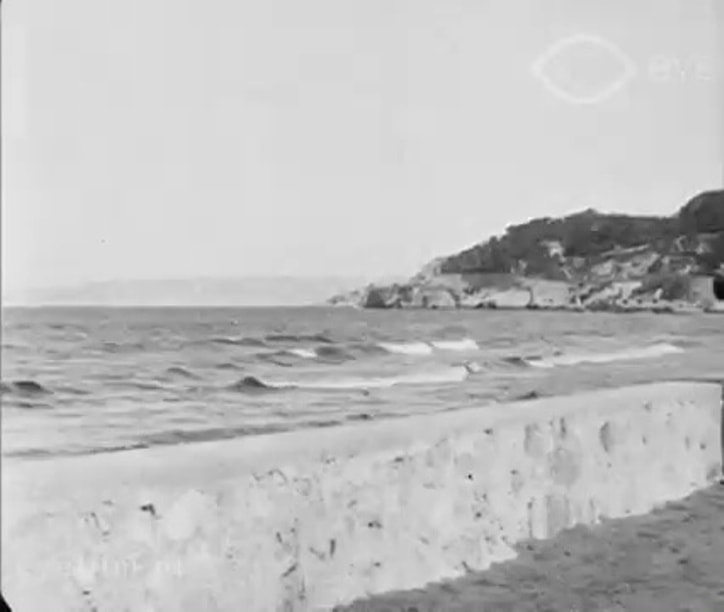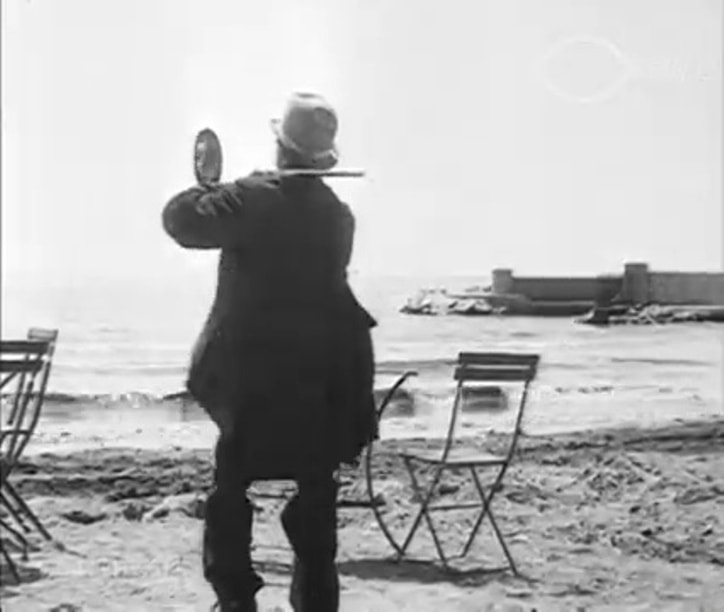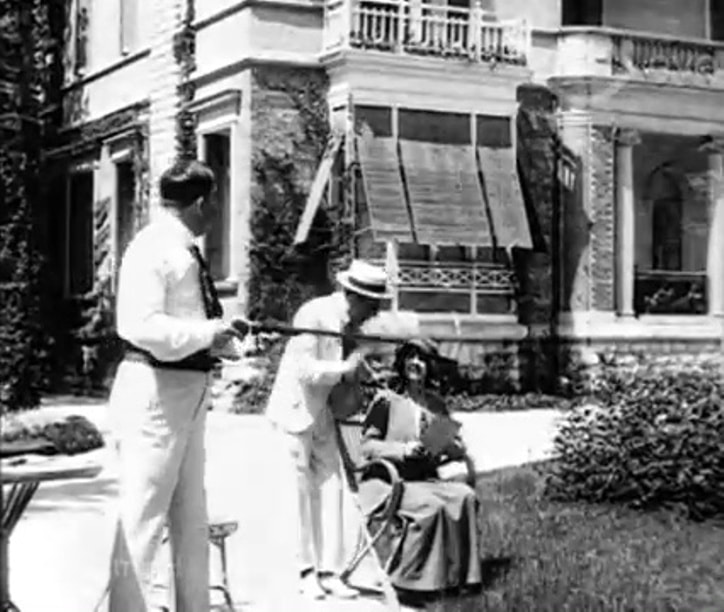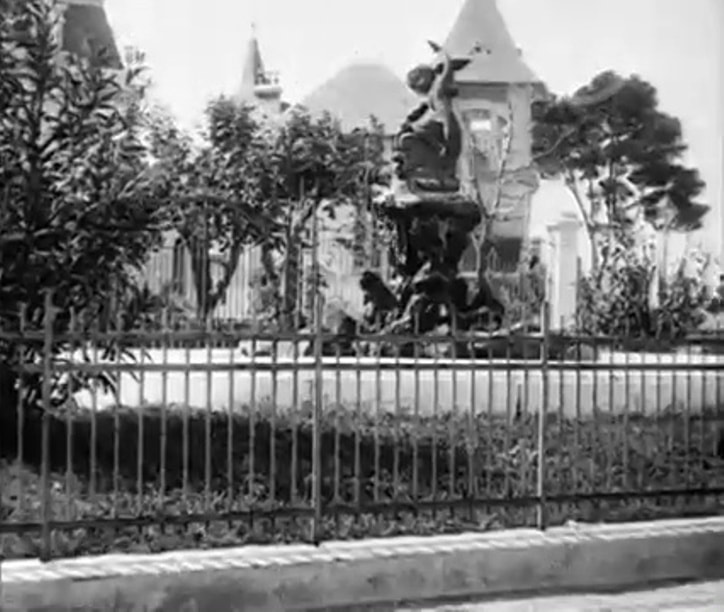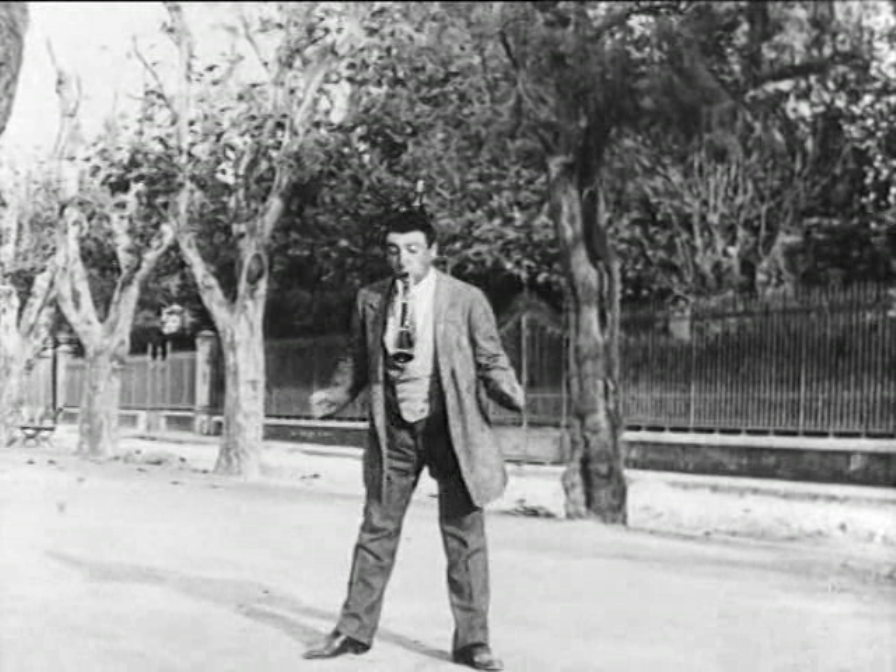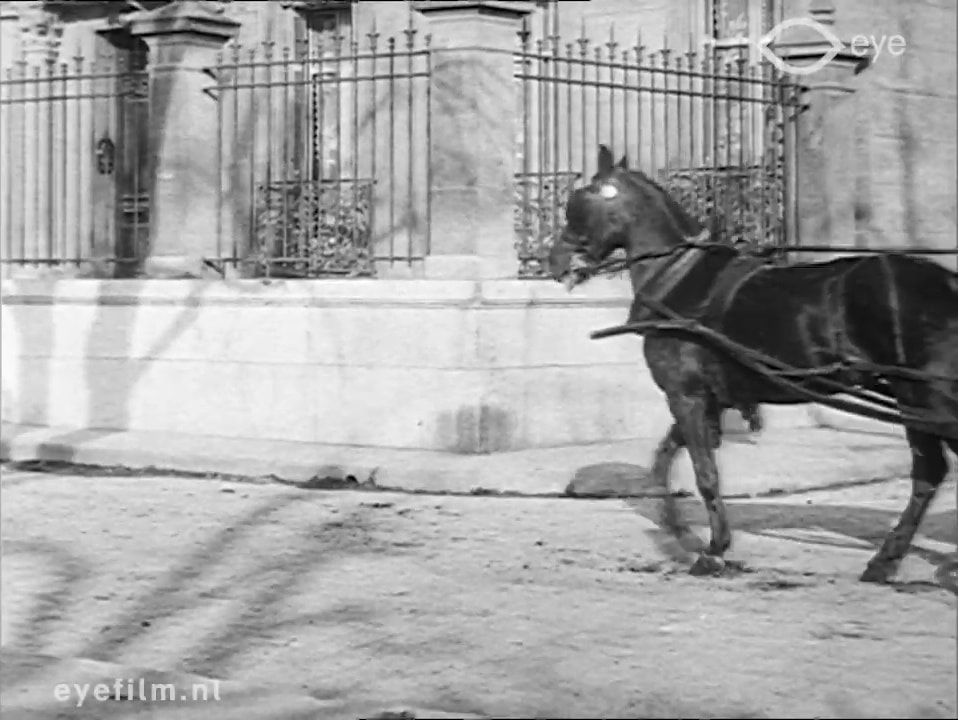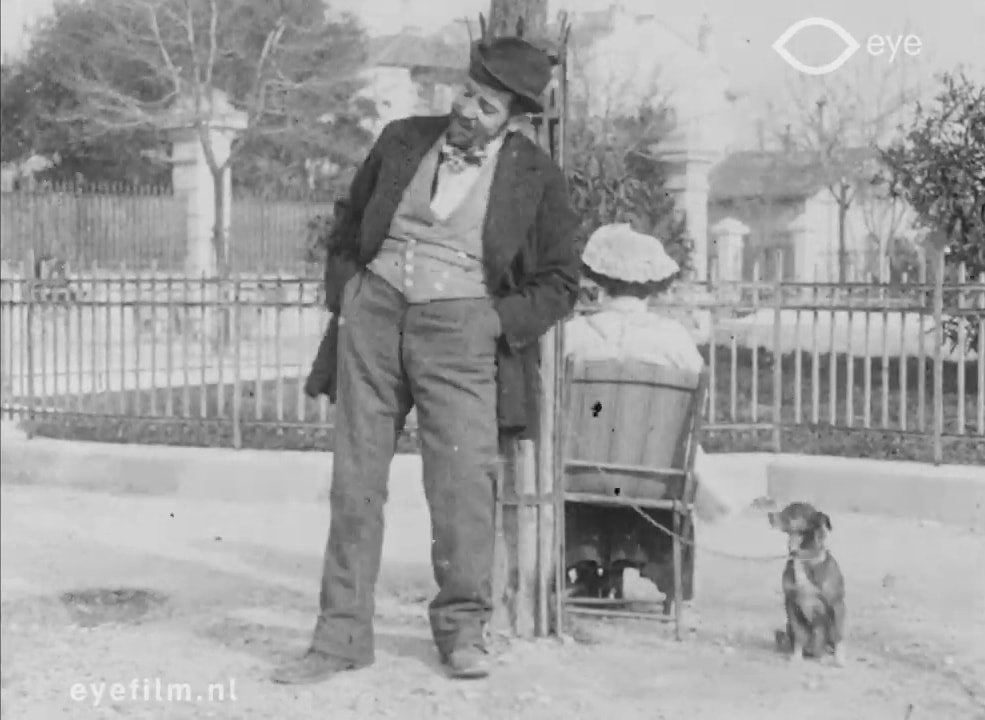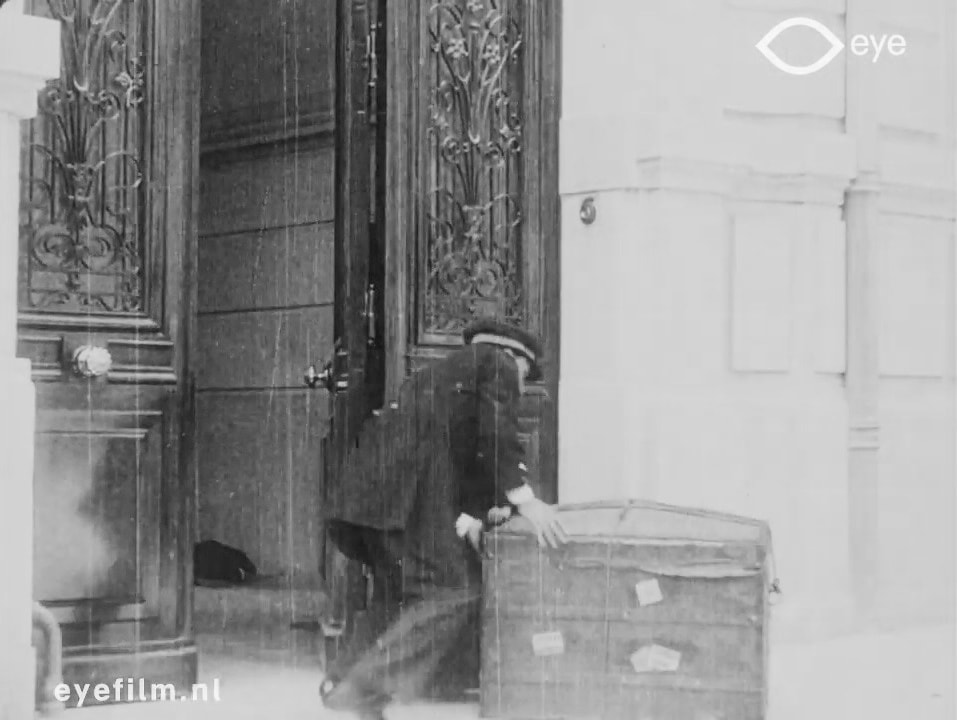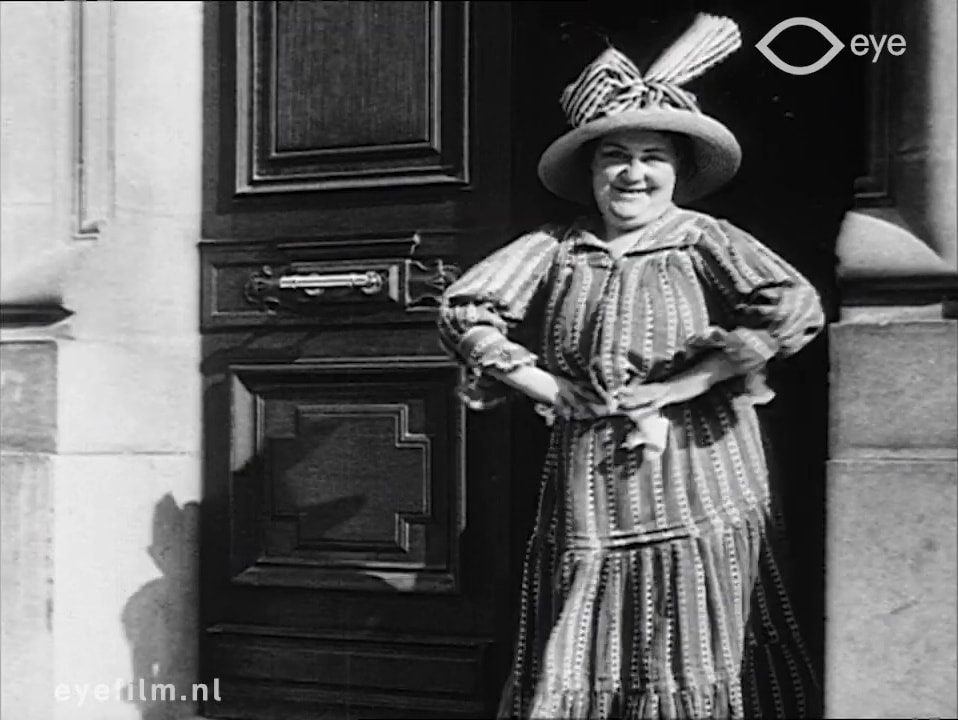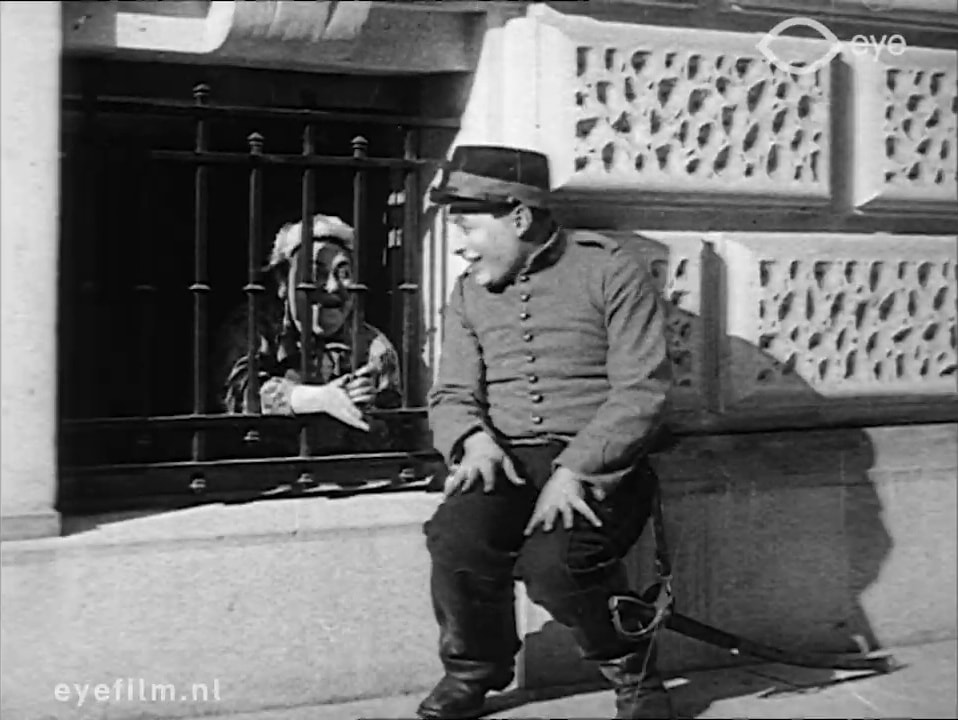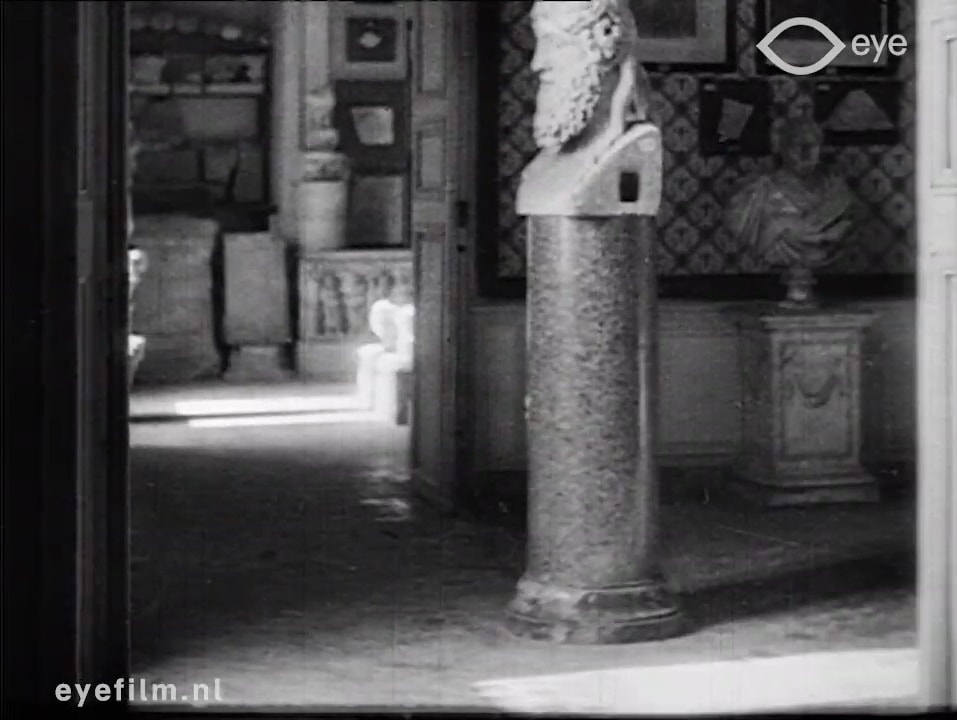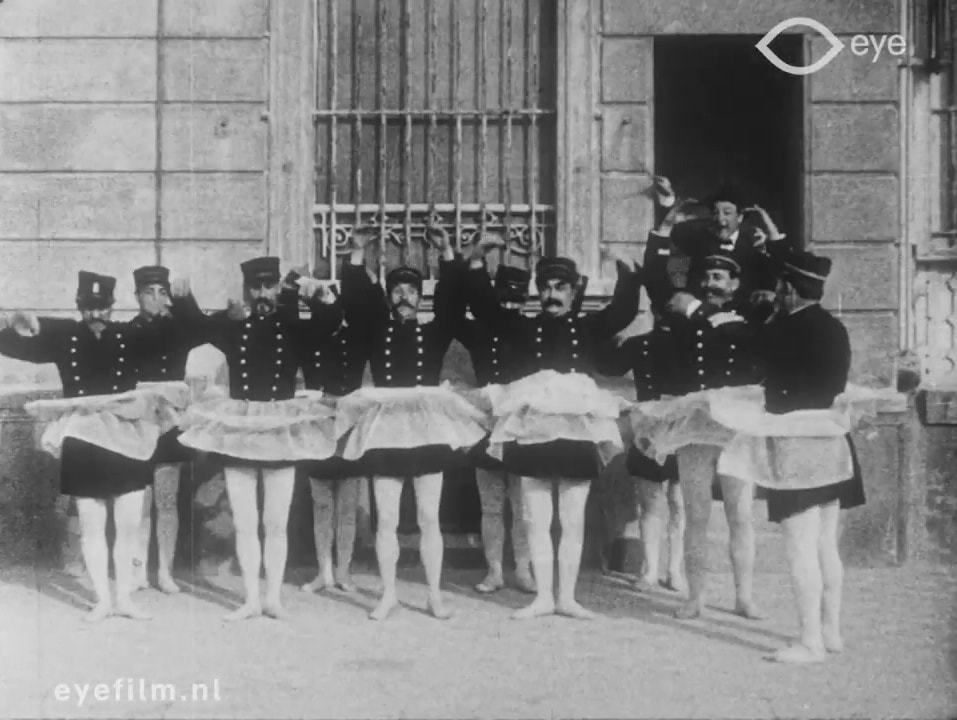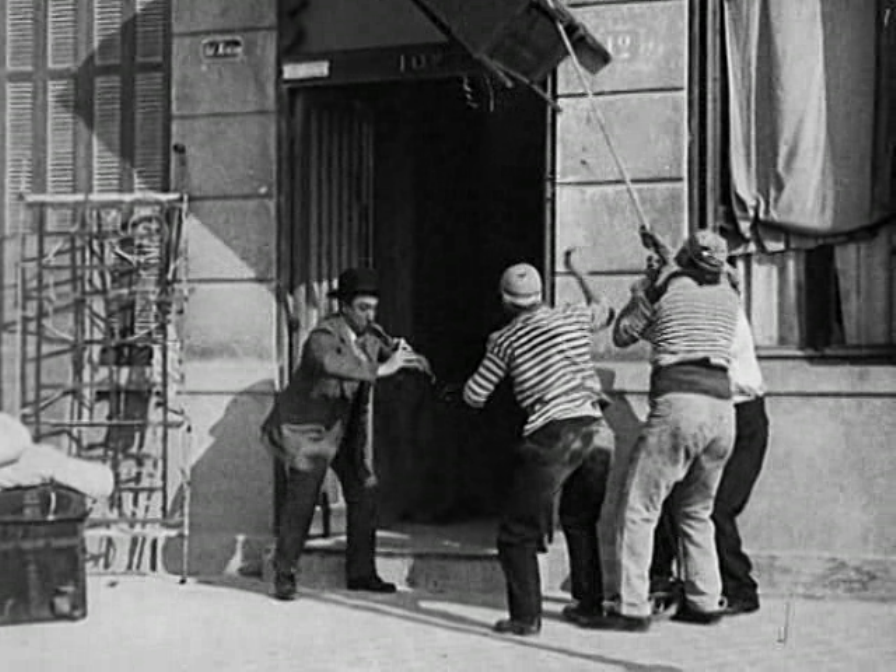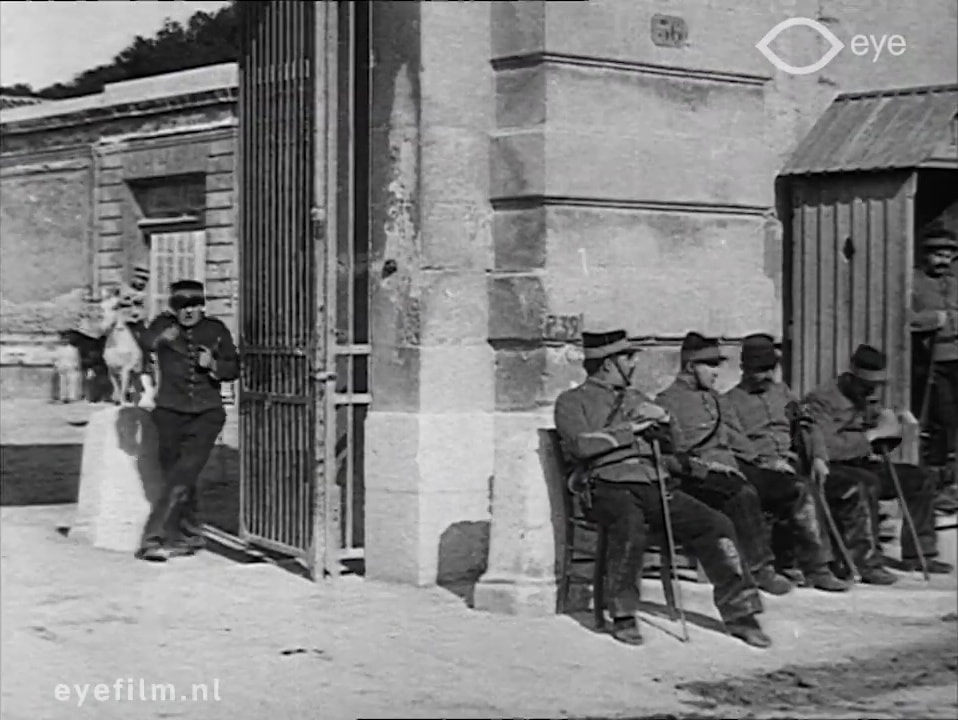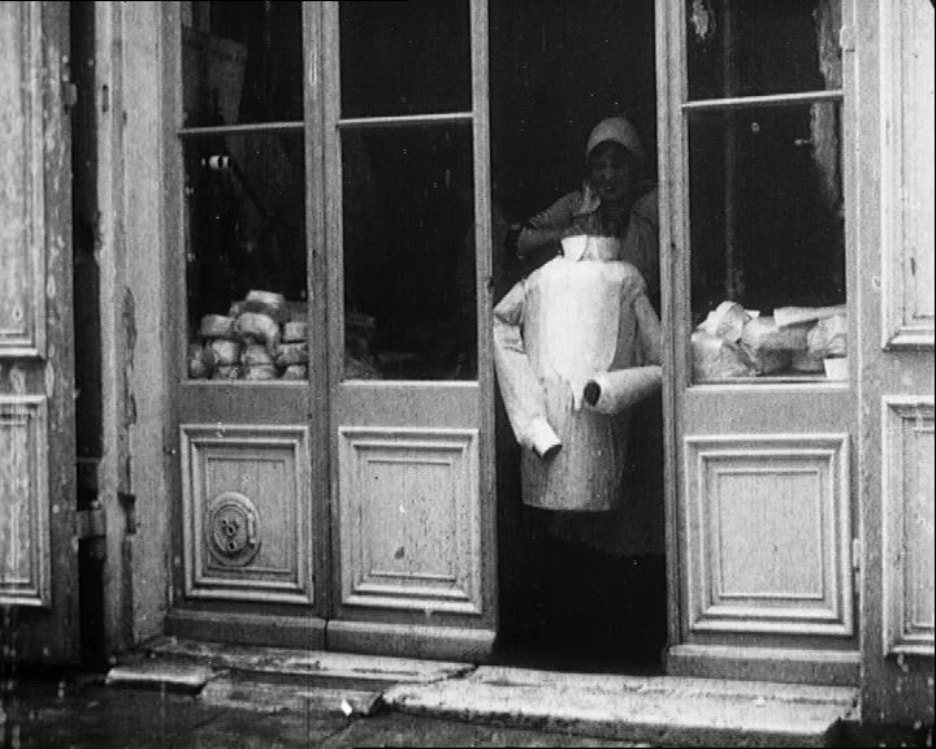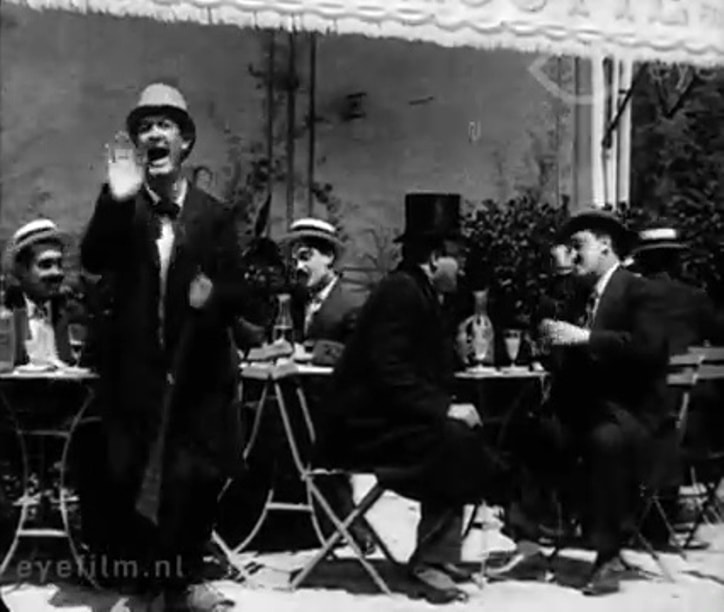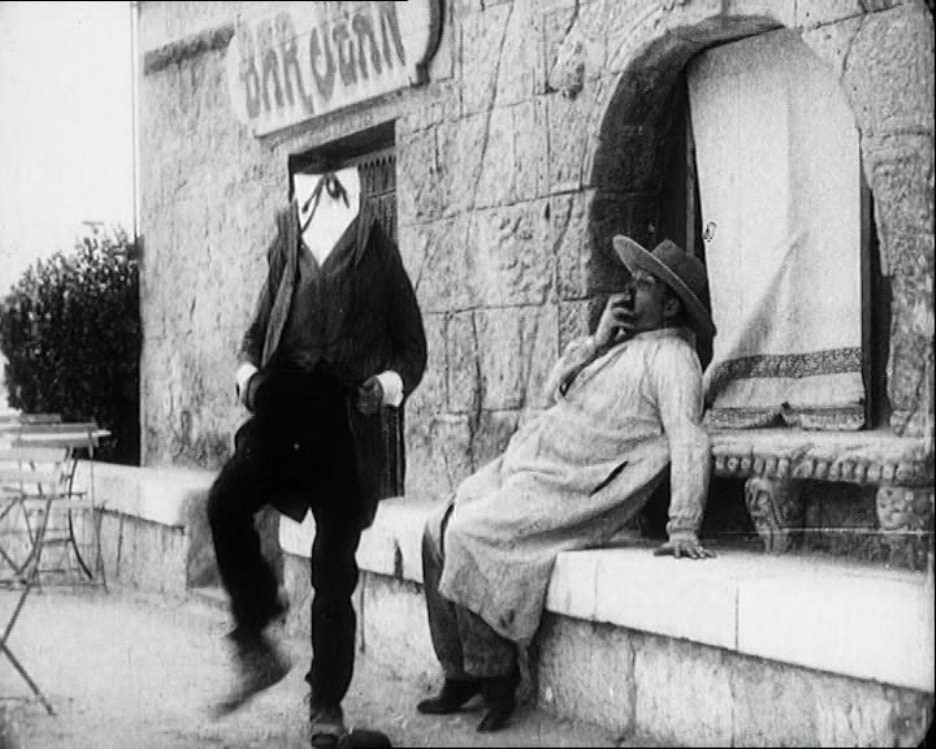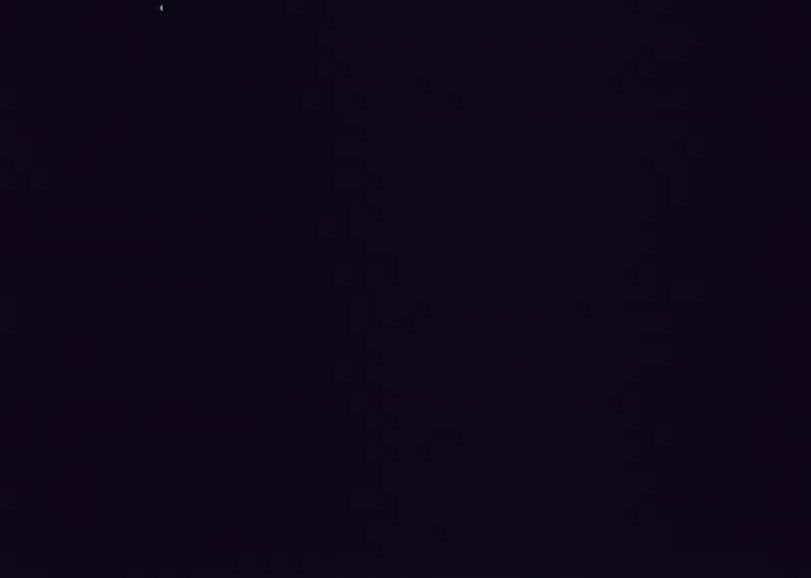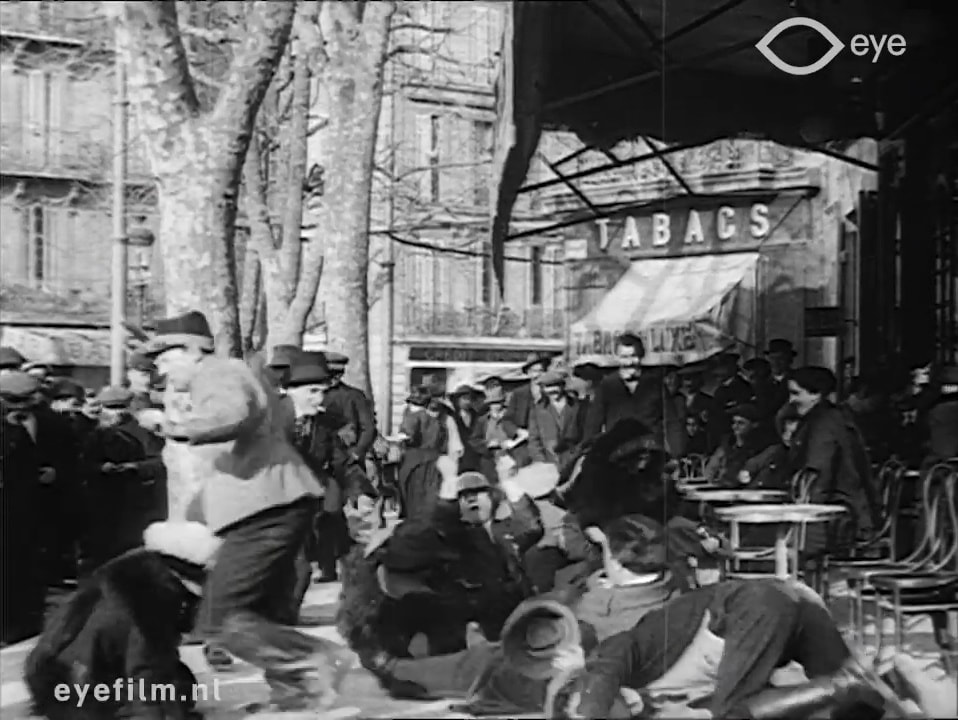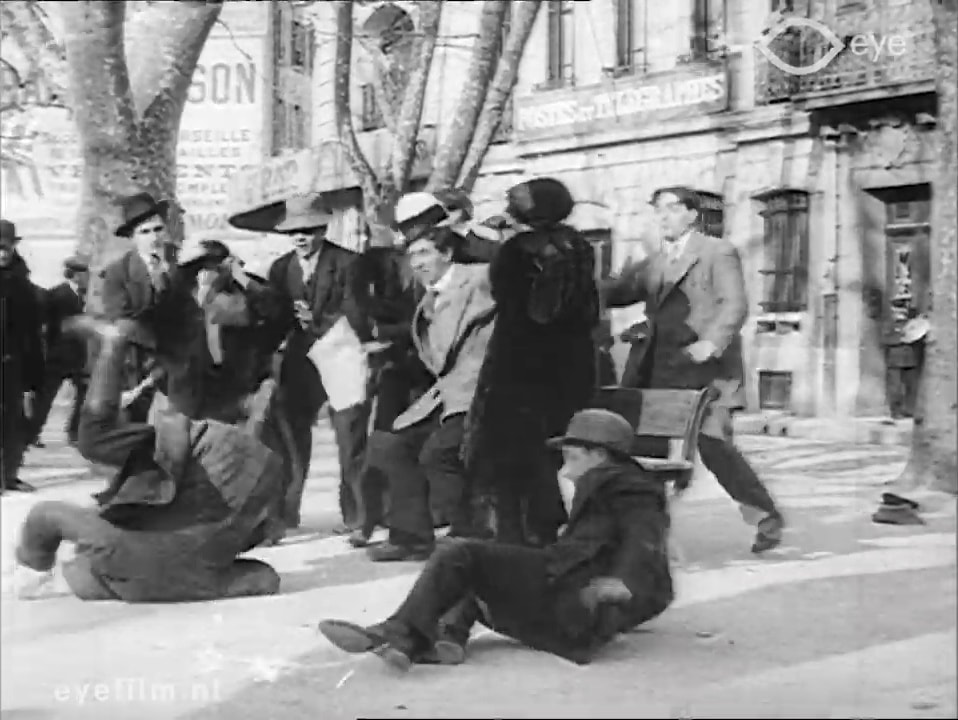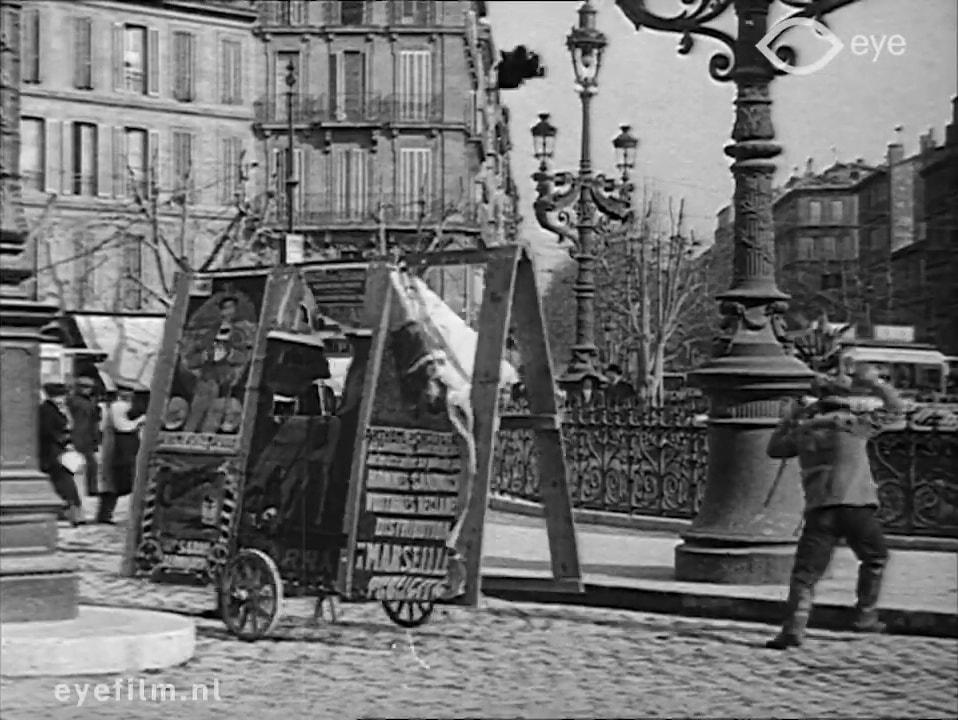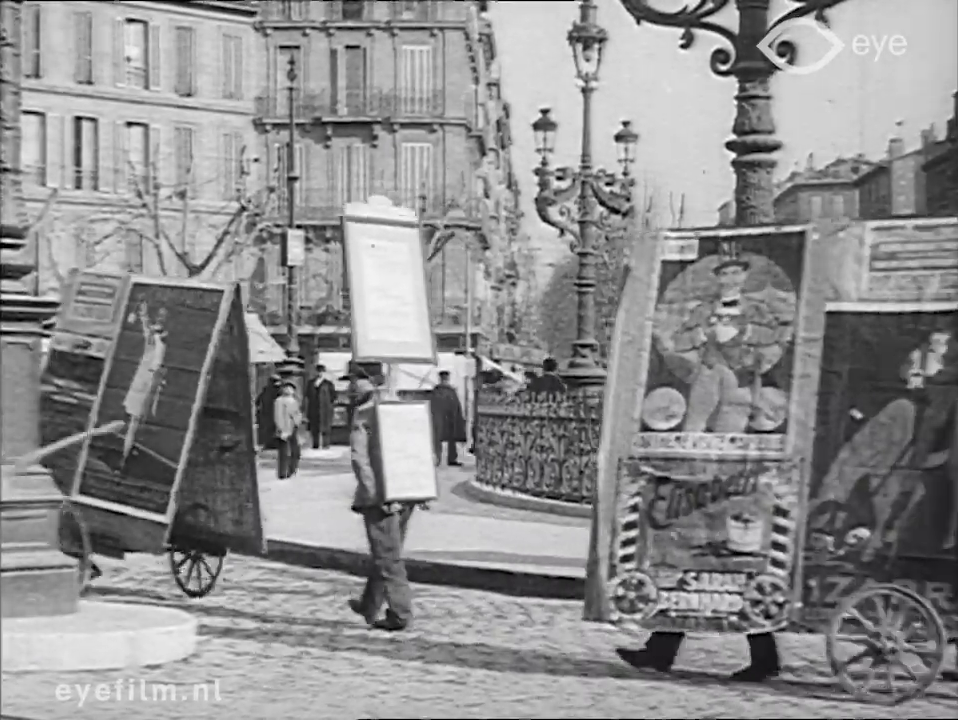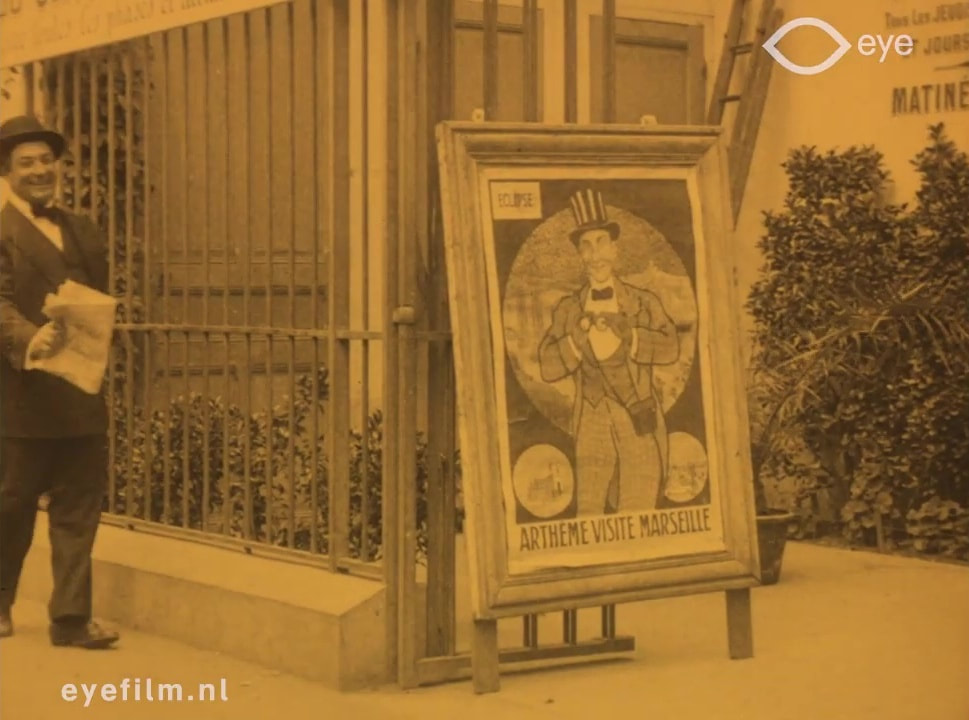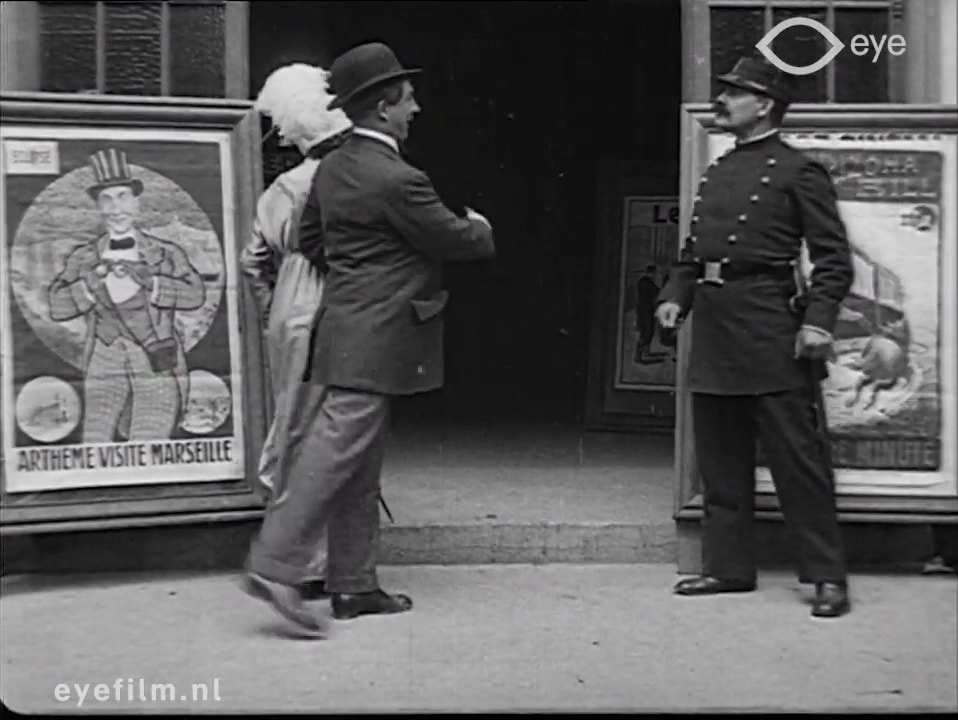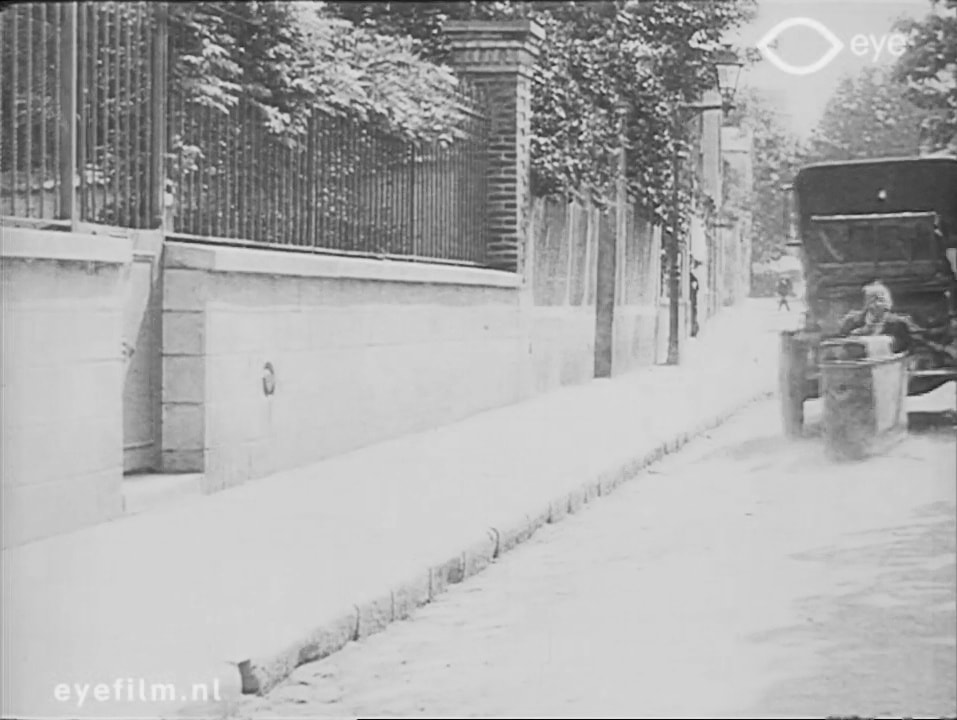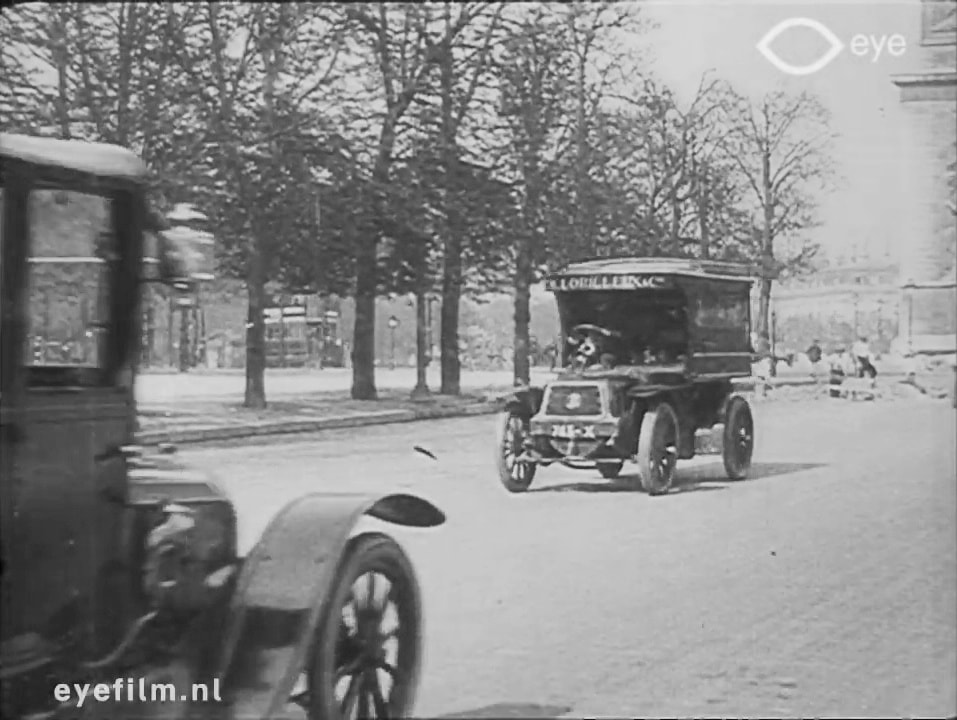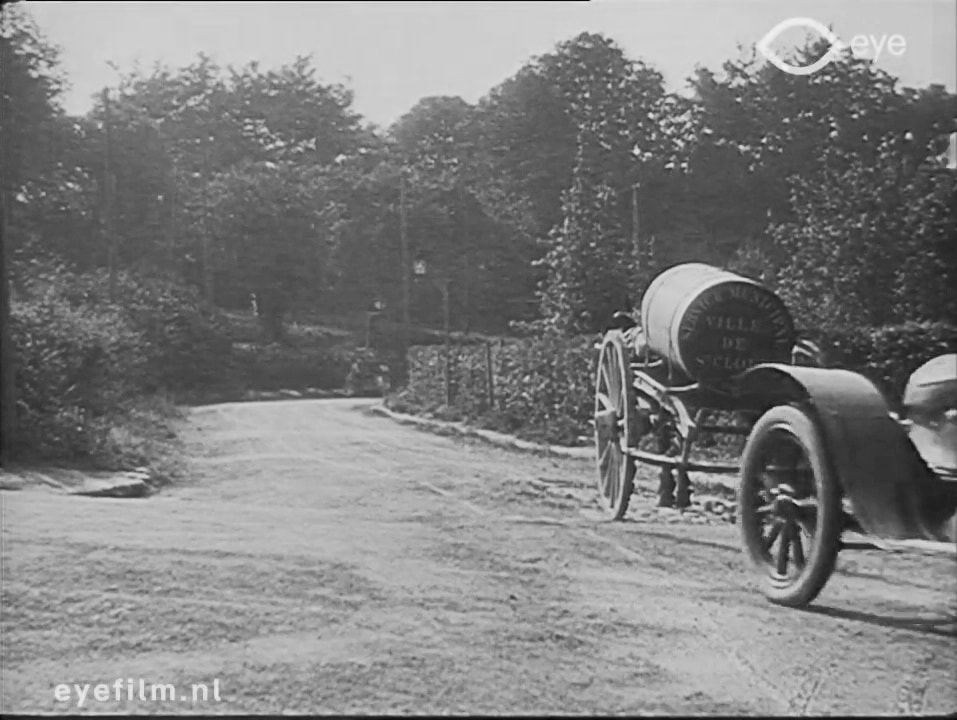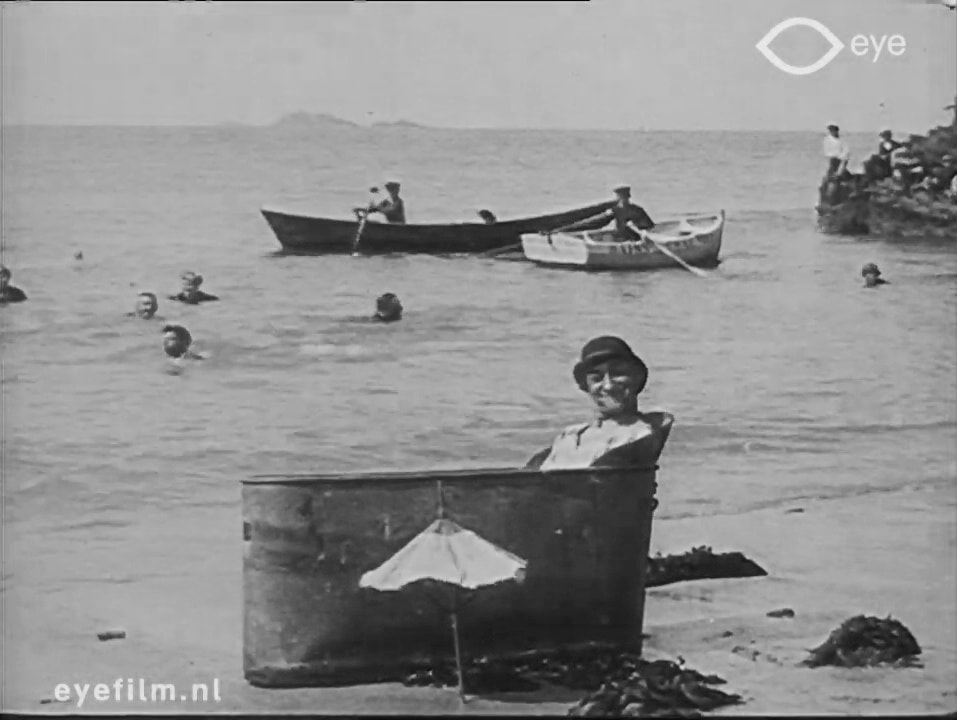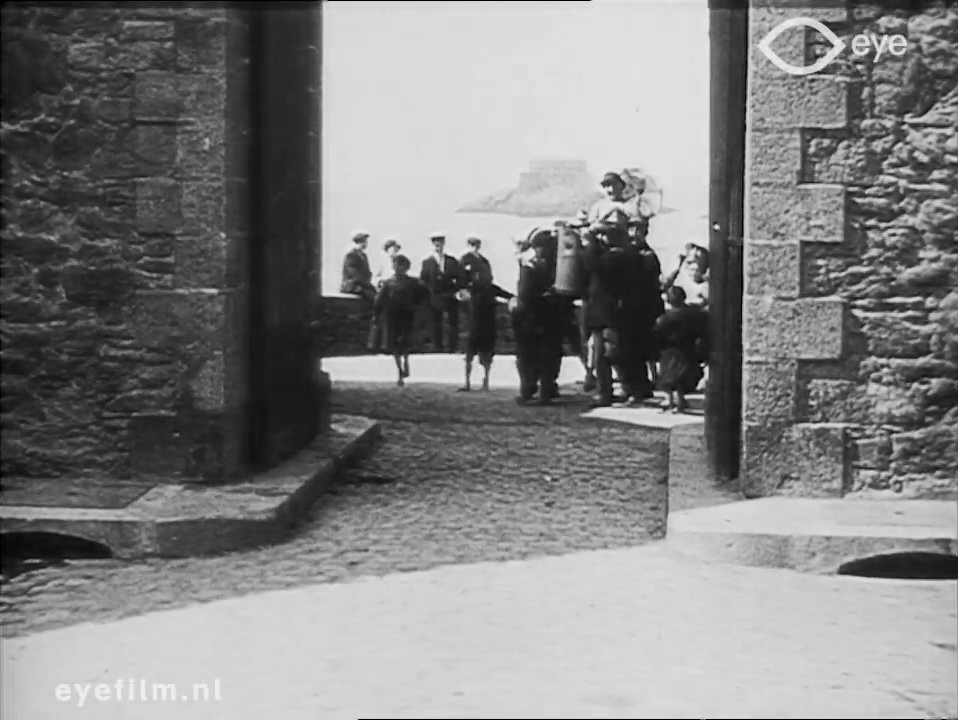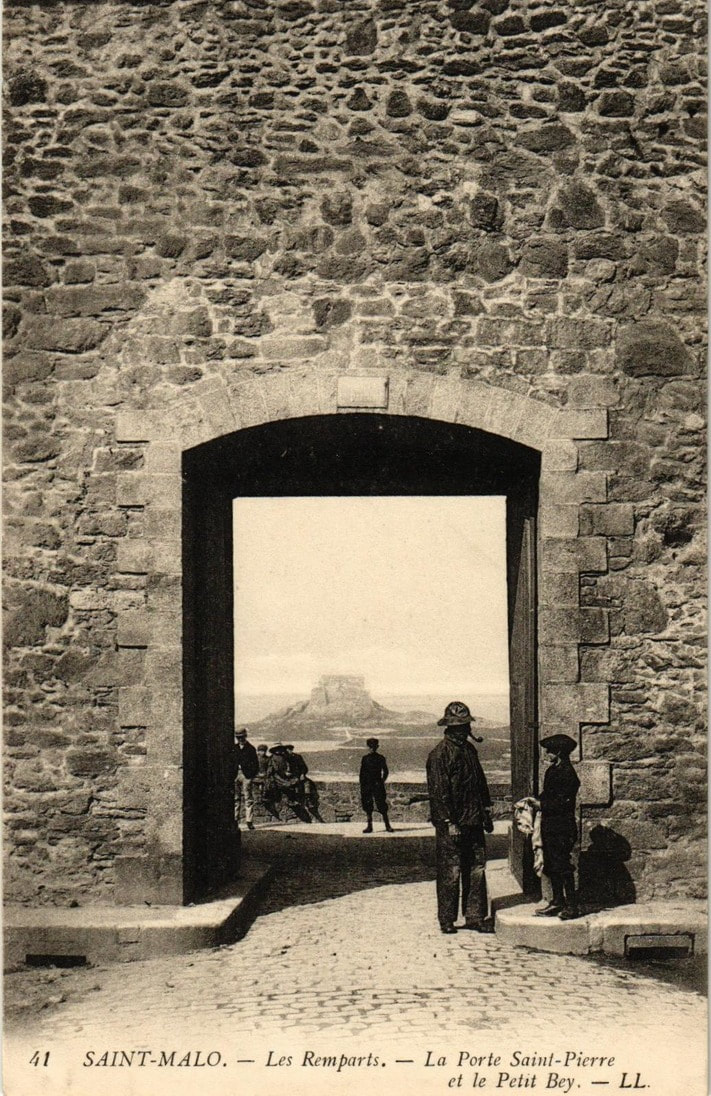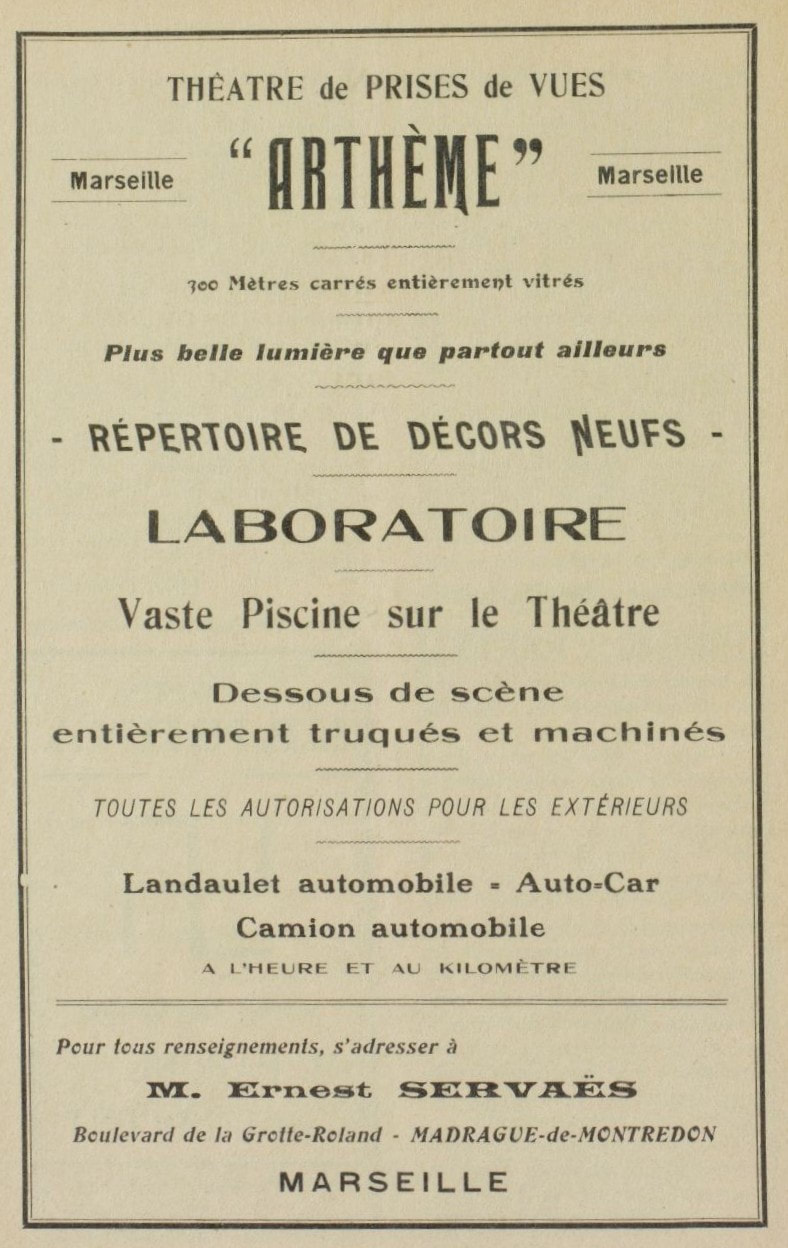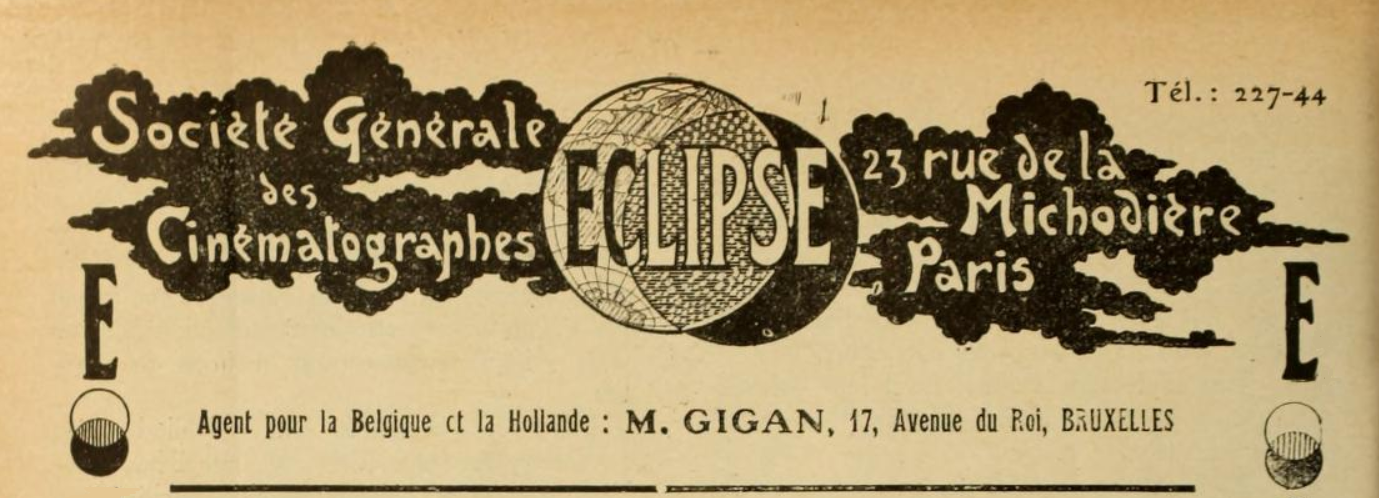Eclipse filmmaking in the suburbs of Paris (and also in Paris, and beyond)
The Eclipse company had at least two studios in the Paris suburbs: one was in Courbevoie, just north of the Bois de Boulogne, the other was in Boulogne-sur-Seine, south of the Bois:
The Boulogne studio is in the two photographs below, the first from a 1928 advertisement and the second is from Laurent Mannoni's essay on Pathé studios in this period (in La Firme Pathé frères, 1896-1914):
The premises on the Rue de la Tourelle were taken over from the Radios company c.1908. Those in Courbevoie, on the Rue d'Aboukir, were acquired in 1907, having previously been used by the American Mutoscope and Biograph Company. These are some of those buildings c. 1900:
And this is the entrance on the Rue d'Aboukir:
On the basis of the match between the nearby buildings, I would say that here Charles Servaës, as Polycarpe, is sitting on the roof of the Courbevoie studio:
Two other photographs from a collection recently sold at auction appear to show studio buildings at Courbevoie. I'm not at all sure but I think the first may be René Hervil in the rôle of Fred. The second is identified in the auction catalogue as director Emile Pierre and 'the Giant of Courbevoie':
Unsurprisingly, nothing of either studio survives, nor indeed does much of what was in their vicinity. This is the Rue d'Aboukir now:
This post was planned as another in a series about what we see of the locality in studio-based films of the early period - see e.g. Gaumont, Pathé, Lux, Eclair - but my task was from the beginning complicated by the need to investigate two different locales when trying to locate, in the few Eclipse films I have seen, generic houses and streets such as these:
I'll confess right now that I have not been very successful. These streets should all be near one or other of the studios, which I have marked in white on the maps below to signify the blanks I have drawn:
A clipping in the Turconi collection taken from Arthème fait de la photo shows one of the Rue de la Tourelle studio buildings:
And that is all I have found so far of Boulogne-sur-Seine.
Researches in Courbevoie have been a little more fruitful. In three different films - Arthème promène son oncle, Arthème Dupin échappe encore and La Fureur de Mme Plumette - the same entrance to a building is used:
This is no. 15 Rue de l'Alma, just three streets from the studio on the Rue d'Aboukir:
The 'now' view shows that the distinctive patterning of the lower part has been plastered over, an unusual modification that, without the distinctive brick work above, would have made identification very difficult. I rely very much on this kind of patterning when trying to match residential buildings, especially in the suburbs.
Here is some even more distinctive brickwork from two different Eclipse films, Lecture absorbante and La Fureur de Mme Plumette:
Here is some even more distinctive brickwork from two different Eclipse films, Lecture absorbante and La Fureur de Mme Plumette:
This is no. 6 Rue de Neuilly (now Rue Léon Boursier), also in Courbevoie but further from the studio:
The Rue de l'Alma and the Rue de Neuilly are the only streets of Courbevoie I have so far found in the more than thirty Eclipse films I have been able to study.
When the same location occurs in two different films it always suggests that the location is near the production base, so I am reasonably sure that this building, seen in three different films - Lecture absorbante, Le Chien de Seraphin and Le Piquenique d'Arthème - is local to one of the Eclipse studios:
Moreover, given that the first of these films also uses the Rue de Neuilly in Courbevoie, it seems more likely to me that this is a street corner in Courbevoie. Perhaps it is only slightly more likely, since of course parts of even a short film can be shot in different towns. In the last of the views above, the protagonists are leaving for a picnic; straightway they are at a railway station, the Gare de Javel in Paris:
This station is not far but it is not local to any of Eclipse's three studios.
There are two other locations occurring in different films that I would say are local to a production base. This cinema is in Arthème opérateur and Arthème promène son oncle:
And this café is in Le Chien de Séraphin and Arthème opérateur:
The pattern on the café window seems to match that of this café in Puteaux:
The pattern is a little clearer in this detail from a later postcard, below right, but I concede that the evidence is slight. Puteaux borders Courbevoie, and if they did use this café in these two films it wouldn't have taken long to get there from the studio:
Unlike residential buildings, commercial properties like these change their appearance and function over time, so in the absence of identifying signage the only chance of locating them is to find postcards that match. In the case of this café, the site as it is now is of no help. As best as I can tell, the café was somewhere in the middle of all this:
As the excursion to Javel station in Le Piquenique d'Arthème has already shown, Eclipse filmmakers are, like those of all other studios in the suburbs at this time, happy to go into Paris in search of locations. Their most obvious reason for doing so would be to set action in front of landmarks. Here are the Arc de Triomphe (in Polycarpe en villégiature) and the Avenue de l'Opéra (in Le Pari de Papillon):
But not all of Eclipse's excursions into Paris showed familiar tourist sites. In Papillon prend la mouche the protagonist is walking along the Rue du Faubourg Saint Honoré, an ordinary if elegant street:
A sequence of Chagrin d'enfants was shot on the Avenue des Ternes in Paris, near the fortifications:
In Polycarpe fait de la morale au centimètre the protagonist chases a bus, also on the Avenue des Ternes:
Again like others at the time, Eclipse's filmmakers found locations in other suburbs. In most of the instances I have found they went in search of water. In Arthème Dupin échappe encore the protagonist is secured in a sack by policemen and thrown into a canal, only for Arthème to jump back out, in reversed movement. For this scene the filmmakers went very far from home, all the way to a bridge over the Canal de l'Ourcq at Bondy, north-east of Paris:
When Arthème and his wife go on a picnic (Le Piquenique d'Arthème), the spot they choose is a little further east along the canal from here, at Les Pavillons-sous-Bois. Their picnic is disturbed by rugby players, who then chase the ball across the canal:
I discuss the use made of the Canal de l'Ourcq by Eclipse and other film companies here.
Polycarpe fait de la morale au centimetre involves a gag using lock gates, of which there were none in Courbevoie, Boulogne or Neuilly. In this case the filmmakers didn't have to travel too far, using the nearby écluse de Suresnes:
For a gag in which the protagonist rolls into water, the makers of Polyte esclave de la consigne travelled 25 kilometres to the other side of Paris, to Joinville:
This would later be the site of Chez Gégène, the famous guinguette.
The protagonist's day out in La Journée de Fifi also take him near water, as he entertains young women at the restaurant overlooking the lake at Enghien-les-Bains, nine kilometres north of Courbevoie:
But the chief attraction of Enghien for Fifi is the race course:
On his way home from Enghien Fifi, now very drunk, is found by a policeman on the bridge that links La Garenne to the Ile Saint Denis:
Arthème promène son oncle is one of the three films that use a house on the Rue de l'Alma in Courbevoie. There are also several rural settings that suggest an excursion out of Courbevoie:
One of these locations is near the forest at Meudon, suggesting that the others are in that vicinity:
I have mentioned that Papillon prend la mouche shows a street in Paris. That film also uses the entrance and steps of the mairie in Neuilly-sur-Seine:
|
This is not an excursion into the suburbs like those to Suresnes, Meudon, Joinville, Enghien-les-Bains, Bondy or Les Pavillons-sous-Bois. I said at the beginning of this post that Eclipse had at least two studios, at Courbevoie and Boulogne-sur-Seine. The Hachette directory of 1912 also gives an address for the Eclipse company in Neuilly-sur-Seine. The 1914 Annuaire-Almanach calls this an atelier, but it must have been a third studio:
|
Film companies of course also have premises that are offices rather than studios,but typically these are in central Paris - Eclipse had offices firstly in the Passage de l'Opéra, 9e (as did Méliès), then at 23 rue de la Michodière, 2e, and then at 93 Rue Saint Lazare, 8e. The premises in Neuilly had been a film studio the year before, at least according to the August 1911 reports of the bankruptcy of the 'proprietor-director of the théâtre Films', a M. Laine. I assume that Eclipse took over the Neuilly studio soon after.
It became Gaston Roudès's studio in the 1920s and the buildings were, according to Pierre Trimbach, still standing in 1970.
It became Gaston Roudès's studio in the 1920s and the buildings were, according to Pierre Trimbach, still standing in 1970.
These two postcards give an idea of what the Boulevard Victor Hugo looked like at the time:
I can't tell whether either of the above shows the part of the Boulevard Victor Hugo where was the studio, but then all of Neuilly's tree-line avenues and boulevards look very much the same:
And I can't tell which if any of these boulevards are the ones we see in Polycarpe fait de la morale au centimètre:
We can identify, however, the boulevard along which Polycarpe travels in La Trouvaille de Polycarpe:
His journey starts at no. 6 Boulevard d'Inkermann and finishes in front of no.2 Boulevard d'Inkermann:
That is clearly not a very great distance, but the journey we see him take in between these two places is much longer, from no. 32 Boulevard d'Inkermann to no. 16 Boulevard d'Inkermann:
If this one-boulevard taxi-ride is topographically incoherent, the sequence that follows it makes perfect topographical sense. The taxi has travelled down the Boulevard d'Inkermann to the Rond Point d'Inkermann; there Polycarpe has his shoes shined at the foot of the statue of the architect Jean-Rodolphe Perronet:
A few months later Polycarpe was again at this location, where again was a shoe-shiner (not the same one):
At the end of La Trouvaille de Polycarpe he is again at the Rond Point d'Inkermann, this time in front of the Saint Pierre church, with behind him firstly the Avenue du Roule and then the Boulevard d'Argenson:
There are two views of what I think is the Avenue de Neuilly (now the Avenue du Général de Gaulle) in Polycarpe fait de la morale au centimétre:
The recurrences of Neuilly in these two Polycarpe films lead me to surmise that other unidentified locations from those films will also be found in Neuilly:
There are locations in other Eclipse films awaiting identification that also look like they could be Neuilly:
For the last two of these images there is more evidence. At one point during the shot of a street in La Paresse de Polycarpe (1914) a cart belonging to the 'Chantier du Pont de Neuilly' passes:
A similar cart can be seen in this postcard:
Neither the mention of Neuilly on a passing cart nor the fact that such a cart can be seen on a postcard of a street in Neuilly proves that the street in La Paresse de Polycarpe is in Neuilly, of course.
Chagrin d'enfants starts at a large villa of which we see only this:
This postcard shows the gardeners and dog of a large villa, with steps that look much like those in Chagrin d'enfants:
The sender of the postcard gives their address on the back: 1 rue Perronet, Neuilly-sur-Seine'. If this is the sender's house and if it is the house we see in the film, the location was just across the street from the Eclipse premises at 5 Boulevard Victor Hugo.
Of the three suburbs in which Eclipse had production bases, Neuilly is the one that appears in the most films, though I concede that still isn't very many:
|
I have had difficulty identifying buildings and streets in the Eclipse films I have seen. Until recently I was also having considerable difficulty with the several views of parks to be found in these films, and I was mystified as to why, given the proximity of the Bois de Boulogne to all three production bases, none of these images could be matched to views of the Bois: |
These all seem to be the same park - the same ornamental bridge appears in at least three different films, which seems to suggest that the park is near a production base:
But this isn't the Bois de Boulogne, the park closest to Courbevoie, Boulogne and Neuilly; this is a park almost 700 kilometres away, the Parc Borély in Marseille. Here is the ornamental bridge:
And here, in a postcard and in Arthème sorcier, is the chalet on the lake:
In fact, of the 35 or so Eclipse films that I have looked at for this post, at least eight were shot entirely in Marseille. Six of those - Arthème avale sa clarinette, Arthème sorcier, La Permission de Polycarpe, La Chemise de Polycarpe, Polycarpe veut faire un carton and Marius adore les chiens - use the Parc Borély.
Other identifying features of Marseille include the Palais de Longchamps in La Tenacité de Polycarpe:
Other identifying features of Marseille include the Palais de Longchamps in La Tenacité de Polycarpe:
The Casino de la Plage in Arthème avale sa clarinette:
And the distinctive light-coloured (in fact yellow) trams that pass, with signage indicating Marseille destinations:
In the recent sale at auction of films stills there were two from unidentified Eclipse films showing Marseille sites, the steps of the Palais de Longchamps and a tram in from of the Casino de la Plage:
If I knew Marseille better I would be able to identify these views of the coast and sea:
I would guess that all of these views, from films with identified Marseille locations, are also of Marseille:
If I knew Marseille at all well I would recognise the streets in the last three of these views, all from La Permission de Polycarpe. In the last of them we see two 'voitures sandwich', hand-pulled advertising hoardings on wheels:
As well as advertisements for champagne and liqueur there are posters for two Eclipse films, Les Amours de la Reine Elisabeth, starring Sarah Bernhardt, and Arthème visite Marseille, starring Ernest Servaës. The latter is obviously the more interesting, not least because this is the third film in which we have seen that poster on display:
I don't know if a copy of Arthème visite Marseille is extant. If it were I would like to know if in that film Ernest Servaës as Arthème visited the places in Marseille that, as actor and director, he would revisit in Arthème avale sa clarinette and Arthème sorcier, and the places in Marseille that, as director, he had Polycarpe visit in at least four films.
Actually, I would like to know a great deal more about the films Servaës made in Marseille for Eclipse. There are too many of them just to be the fruit of occasional excursions. They are not holiday films like Polycarpe en villégiature, which takes the protagonist from a street in Courbevoie, Boulogne or Neuilly, through Paris and then along country roads to his seaside holiday destination, Saint Malo in Brittany:
I would have thought that Eclipse's Marseille productions needed a base of some sort - though perhaps not a studio for shooting interiors, since in fact only one of these Marseille films, La Chemise de Polycarpe, has any interiors at all.
If I manage to find out more about the practicalities of Eclipse filmmaking in Marseille, I shall update this post.
Two or so years later, Ernest Servaës would indeed have a studio in Marseille, having left Eclipse and set up in business for himself - but that is another story:
sources
The EYE Filmmuseum in Amsterdam has put onto YouTube restored versions of several Eclipse productions. These have been an invaluable resource and I very much appreciate the EYE Filmmuseum's initiative.
The EYE Filmmuseum in Amsterdam has put onto YouTube restored versions of several Eclipse productions. These have been an invaluable resource and I very much appreciate the EYE Filmmuseum's initiative.
These are the Eclipse films I have used for this post:
Arthème avale sa clarinette (1912)
Arthème Dupin échappe encore (1912)
Arthème opérateur (1913)
Arthème promène son oncle (1913)
Arthème sorcier (1913)
Les Aventures de Fifi (1912)
Chagrin d'enfants (1912)
La Chemise de Polycarpe (1914)
Le Chien de Seraphin (1914)
L'Echelle double (1910)
La Fureur de Mme Plumette (1912)
La Journée de Fifi (1912)
Julot a le sourire (1910)
Lecture absorbante (1911)
Marius adore les chiens (1914)
L'omelette de Polycarpe (1913)
Papillon prend la mouche (1913)
Par amour de son enfant (1911)
La Paresse de Polycarpe (1914)
Le Pari de Papillon (1914)
La Permission de Polycarpe (1913)
Le Piquenique d'Arthème (1912)
Polycarpe architecte (1913)
Polycarpe en villégiature (1913)
Polycarpe et son fils (1913)
Polycarpe fait de la morale au centimètre (1914)
Polycarpe veut faire un carton (1914)
Polyte esclave de la consigne (1912)
La Tenacité de Polycarpe (1914)
La Trouvaille de Polycarpe (1913)
Un pension de famille modèle (1912)
Le Violoneux (1911)
All of these films can be found on YouTube except Papillon prend la mouche and Le Chien de Seraphin, which are on the DVD 'Les Comiques français des premiers temps', included in the September 2010 issue of 1895, edited by Laurent Guido and Laurent Le Forestier.
other resources
- Richard Abel, The Ciné Goes to Town: French Cinema 1896-1914 (Berkeley and Los Angeles: University of California Press, 1994)
- Richard Abel (ed.), Encyclopedia of Early Cinema (Abingdon: Routledge, 2005)
- Gallica (Bibliothèque nationale de la France), for directory entries and maps: https://gallica.bnf.fr/
- Laurent Mannoni, 'Les studios Pathé de la région parisienne (1896-1914), in Michel Marie and Laurent Le Forestier (eds), La Firme Pathé frères, 1896-1914 (Paris: Association française de recherche sur l'histoire du cinéma, 2004)
- J.-J. Meusy, 'Les débuts en France de l'American Mutoscope and Biograph Company', Histoire, économie et société 16.4 (1997)
- The Turconi Project: http://www.cinetecadelfriuli.org/progettoturconi/
For more on the Eclipse company see Emmanuelle Champomier's contributions to the excellent 'Histoire du cinéma en France de 1908 à 1919' initiative.


